Back and Forth, Between Names:
An exhibition
about bodies
of water
July 6 - August 25, 2024
Free & Open to the public
Saturdays & Sundays 1:00 - 5:00 pm
& by appointment
Opening Reception
Saturday July 6, 4:00 - 7:00 pm
Extended hours for Upstate Art Weekend
Friday July 19 - Sunday July 21, 12:00 - 5:00 pm
Programming:
August 4, 2:00pm— Ink Workshop with Suzy Sureck
August 18, 5:00pm — performance of To Cleanse the River by Koyoltzintli
August 24, 2:00pm — performance of Glacier Elegy Newburgh by Jaanika Peerna followed by a closing reception
PROGRAMMING DETAILS CAN BE FOUND HERE.
The exhibition is curated by Alison McNulty and includes works by:
Rachel Olivia Berg
Eliza Evans
Matt Frieburghaus
Koyoltzintli
Carmen Lizardo
Lauren Rosenthal McManus
Renana Neuman
Jaanika Peerna
Valerie Piraino
Adie Russell
Sarah Cameron Sunde
Suzy Sureck
Back and Forth, Between Names explores the pervious boundaries and shifting identities of bodies comprised of water. Works across media invite viewers to consider water as material, collaborator, place, and metaphor, communicating water’s agency and animacy in its fluidity and similitude between human and nonhuman bodies. Engaging the poetics of water, the exhibition seeks places where language loosens its grip on the knowable, conjuring bodies in, of, and as water.
The works on display reference or index the artists’ embodied experiences of waters within and between continents from the Mahicannituck/Hudson River, the coast of the Dominican Republic, the coast of Ecuador and the Andes, the Global South, the Arctic, and elsewhere in the form of rivers, lakes, ponds, oceans, glaciers, and waterfalls. The artists open spaces of abstraction, reframed boundaries, and reclamation by investigating watery phenomena like tides, fog, waves, osmosis, crossings, submersion, dripping, freezing, melting, floating, eroding, and dissolving. The invitation to question what water carries, returns, and undoes allows discrete, namable identities and the borders between entities to drift, cycle, and dissipate.
The porous edges that shape bodies of water speak to mutuality, responsibility, and healing within a broader field of relations. The artists contend with the physical challenges of changing states of matter, bodies in constant flux and motion, and gravity, as well as personal and ancestral traumas related to water, colonial legacies of partial or unrecorded histories, contemporary migration and climate catastrophes. Works of sculpture, drawing, painting, installation, collage, photography, and video incorporate media such as ice, plants, clay, rock-based pigment, hair extensions, rope, cut paper, charcoal, water-based media, 3D and 2D prints, sound, and projections. Back and forth, holding the necessity, tragedy, and beauty of bodies of water, these artists’ practices move between immersing and gathering, observing and listening, playing and mourning, responding and remembering.
EXHIBITION MATERIALS:
Exhibition Guide (click to view/download)
The image gallery to the right corresponds to the Exhibition checklist.
(Price list available upon request)
Curated Reading List 006 (click to view/download)
by Lauren Rosenthal McManus
Back and Forth, Between Names exhibition and programming are free and open to all.
PRESS:
Hyperallergic: 8 Shows to See in Upstate New York This August, by Taliesin Thomas





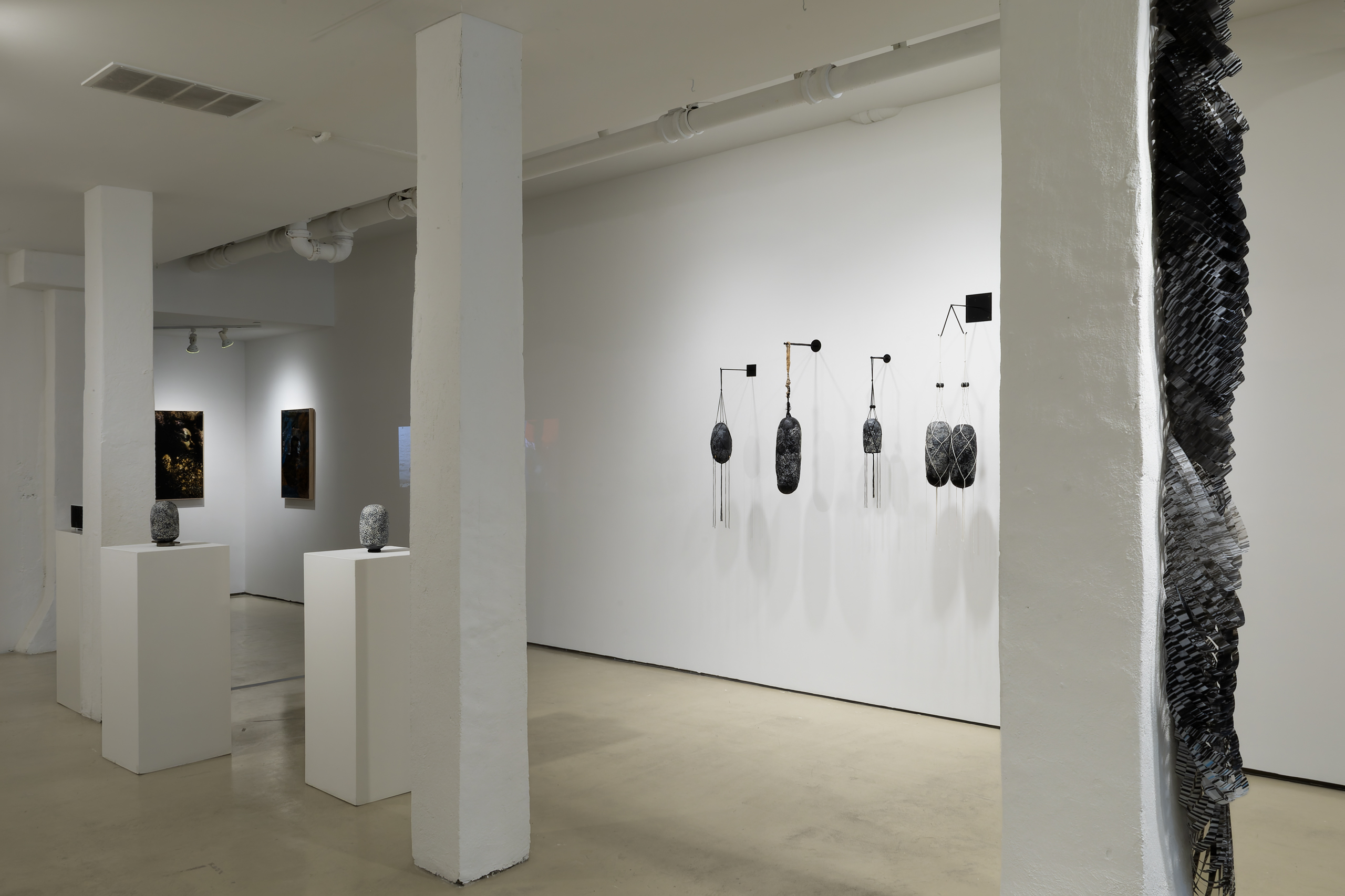


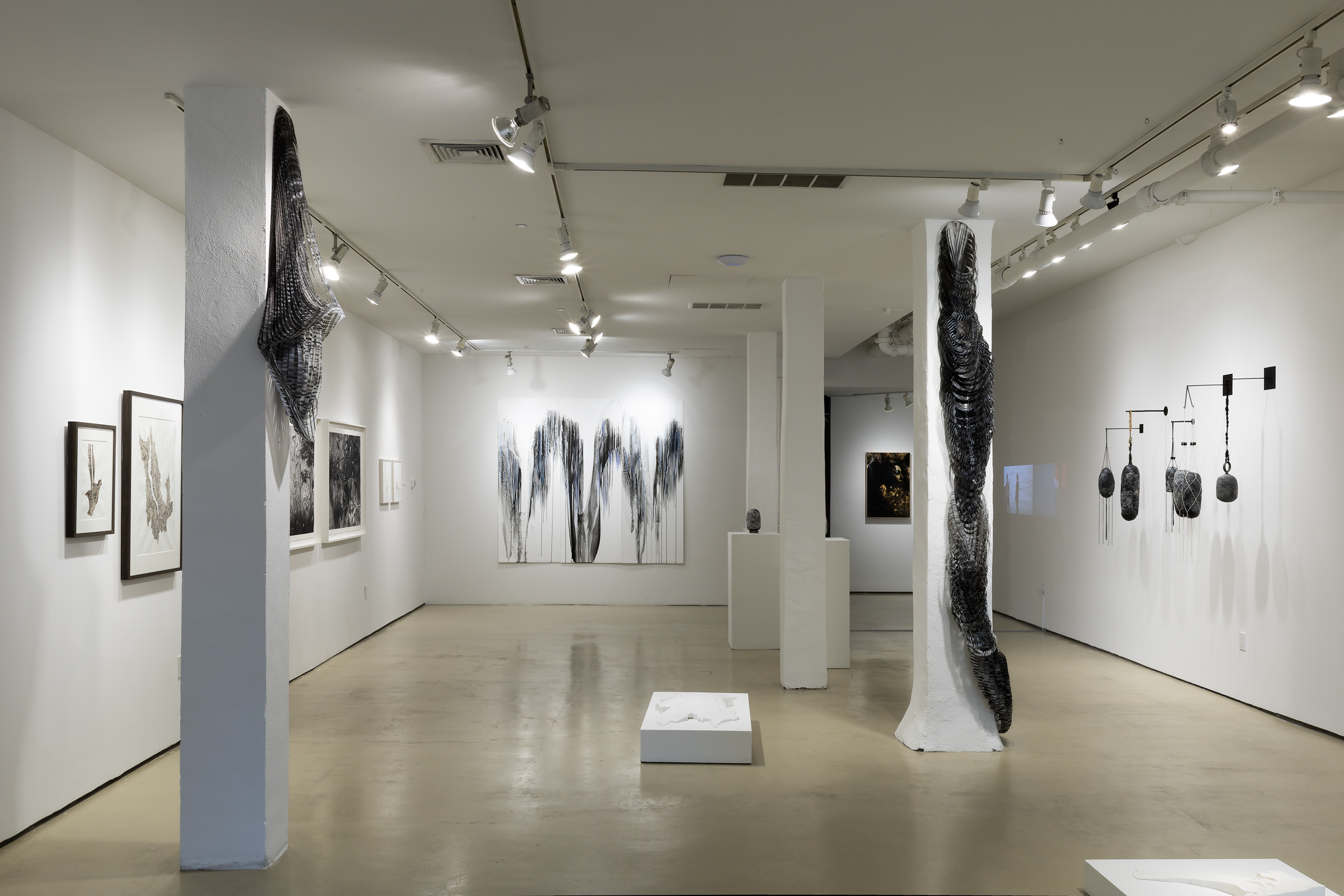


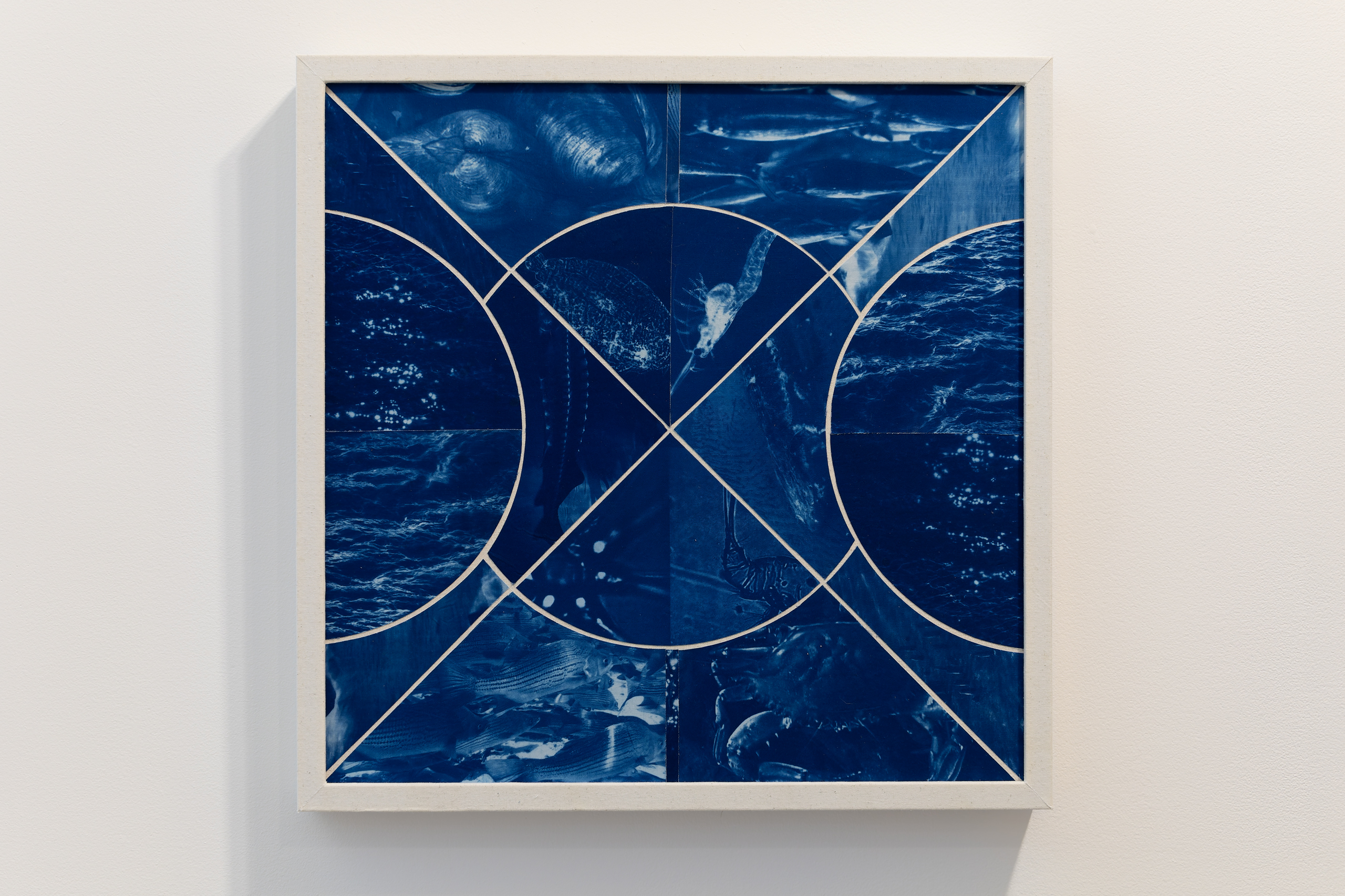
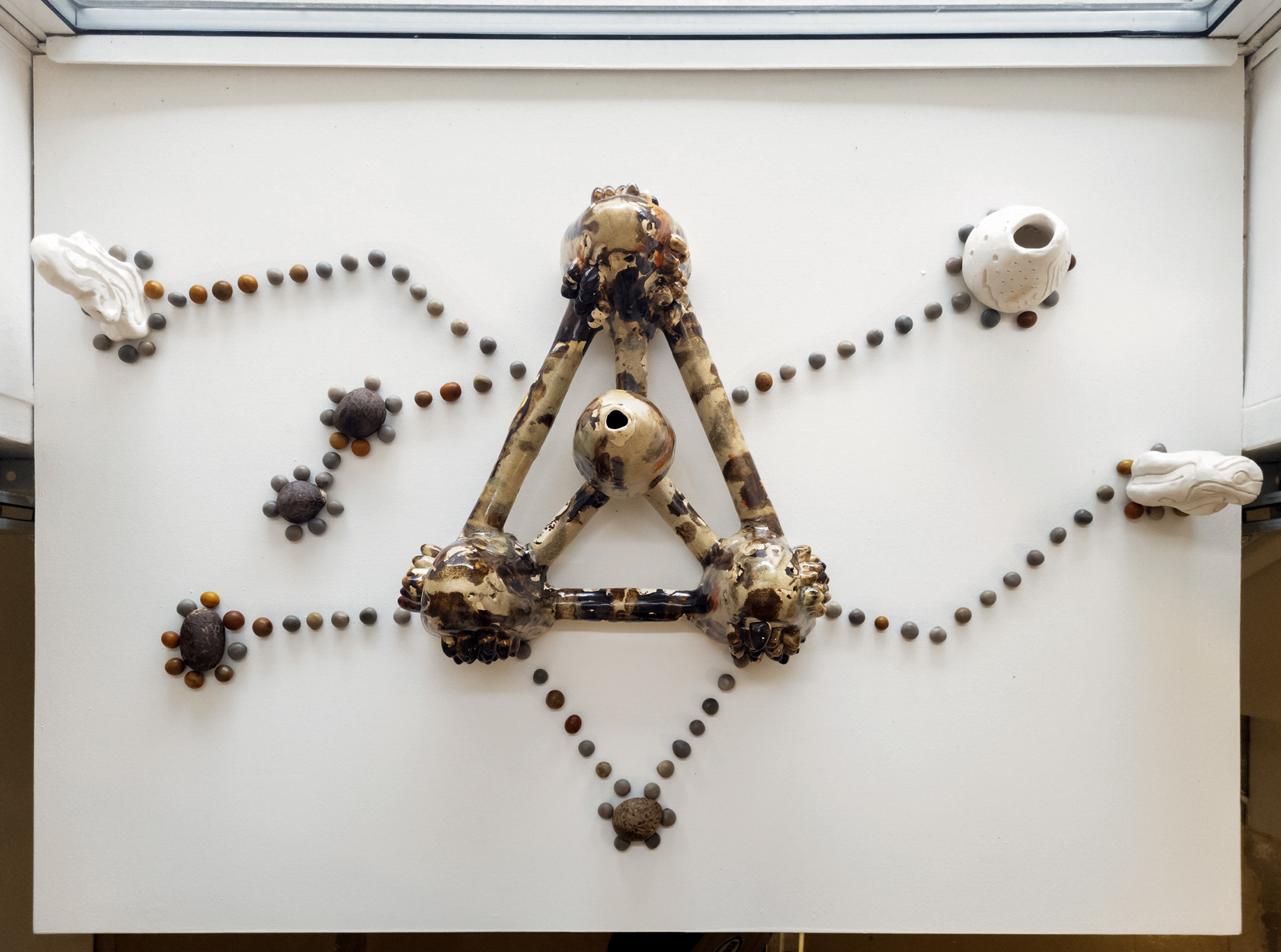

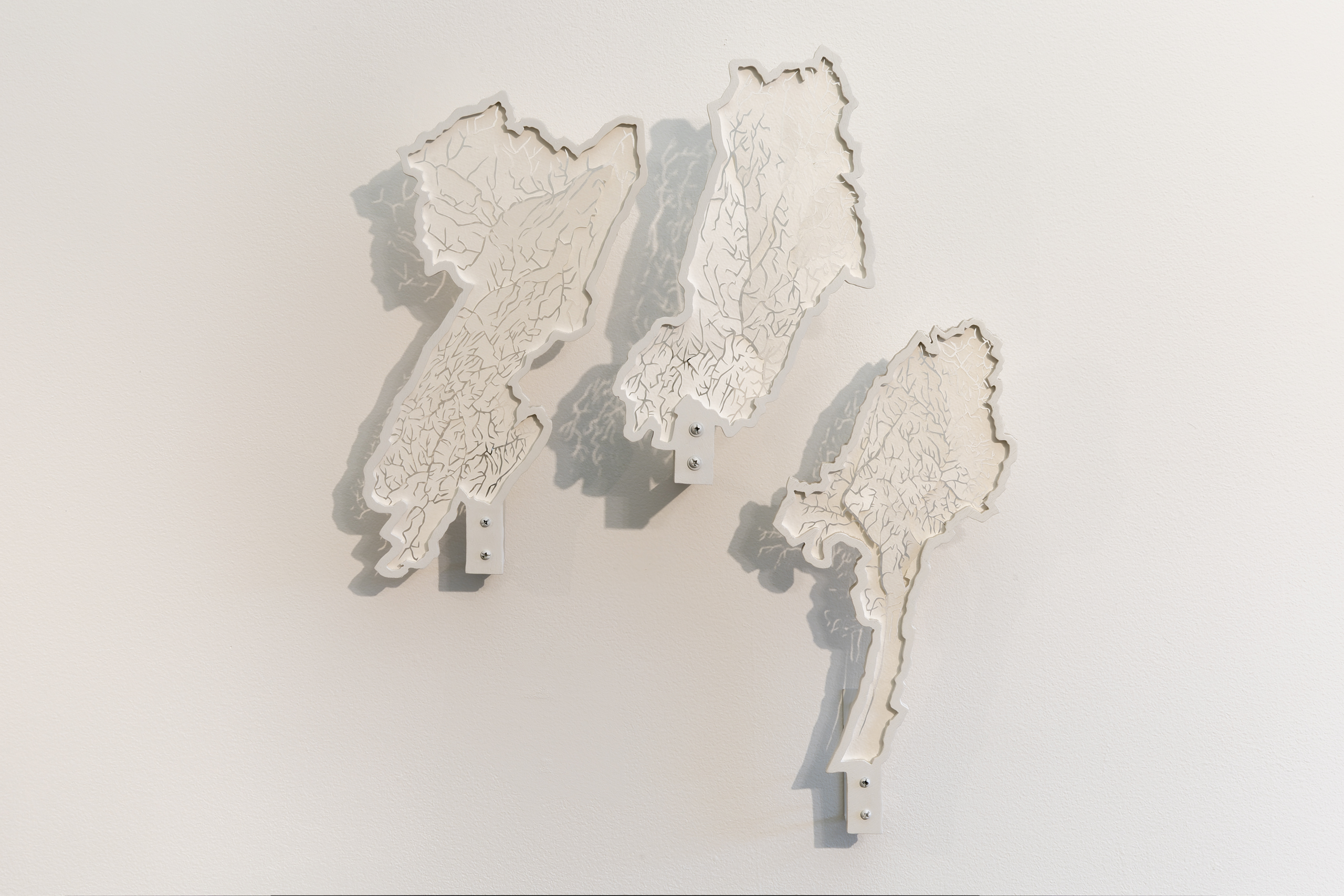


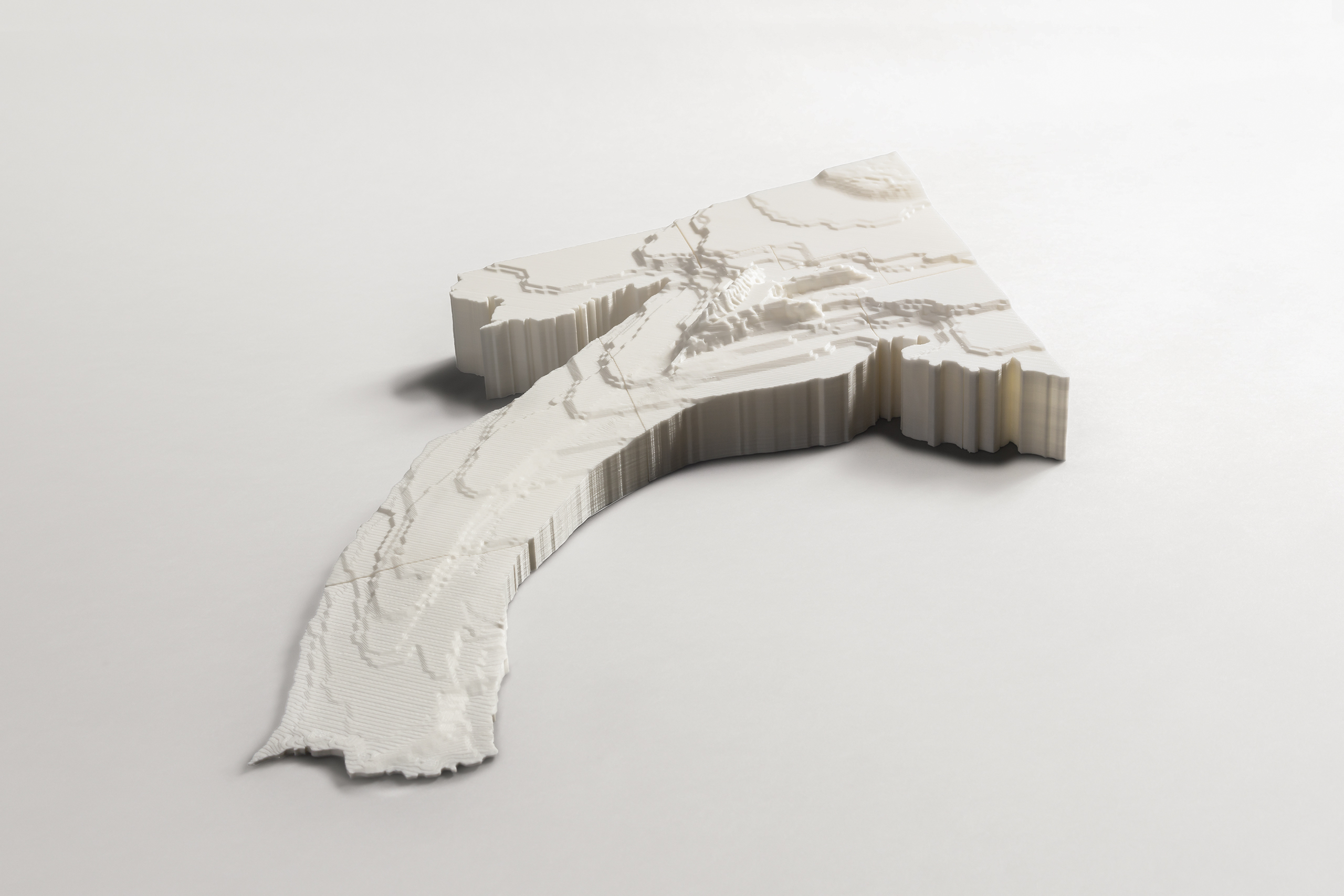

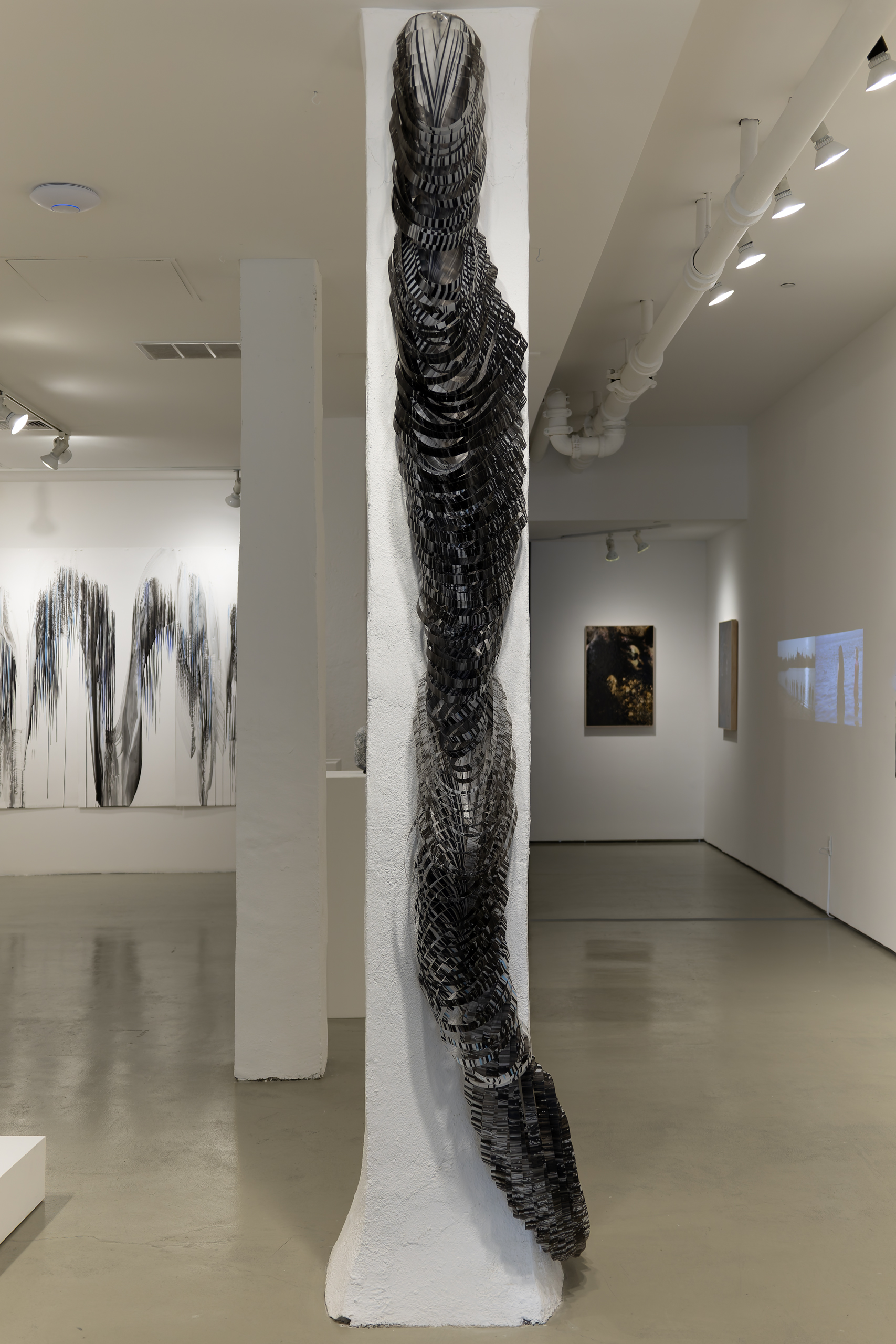

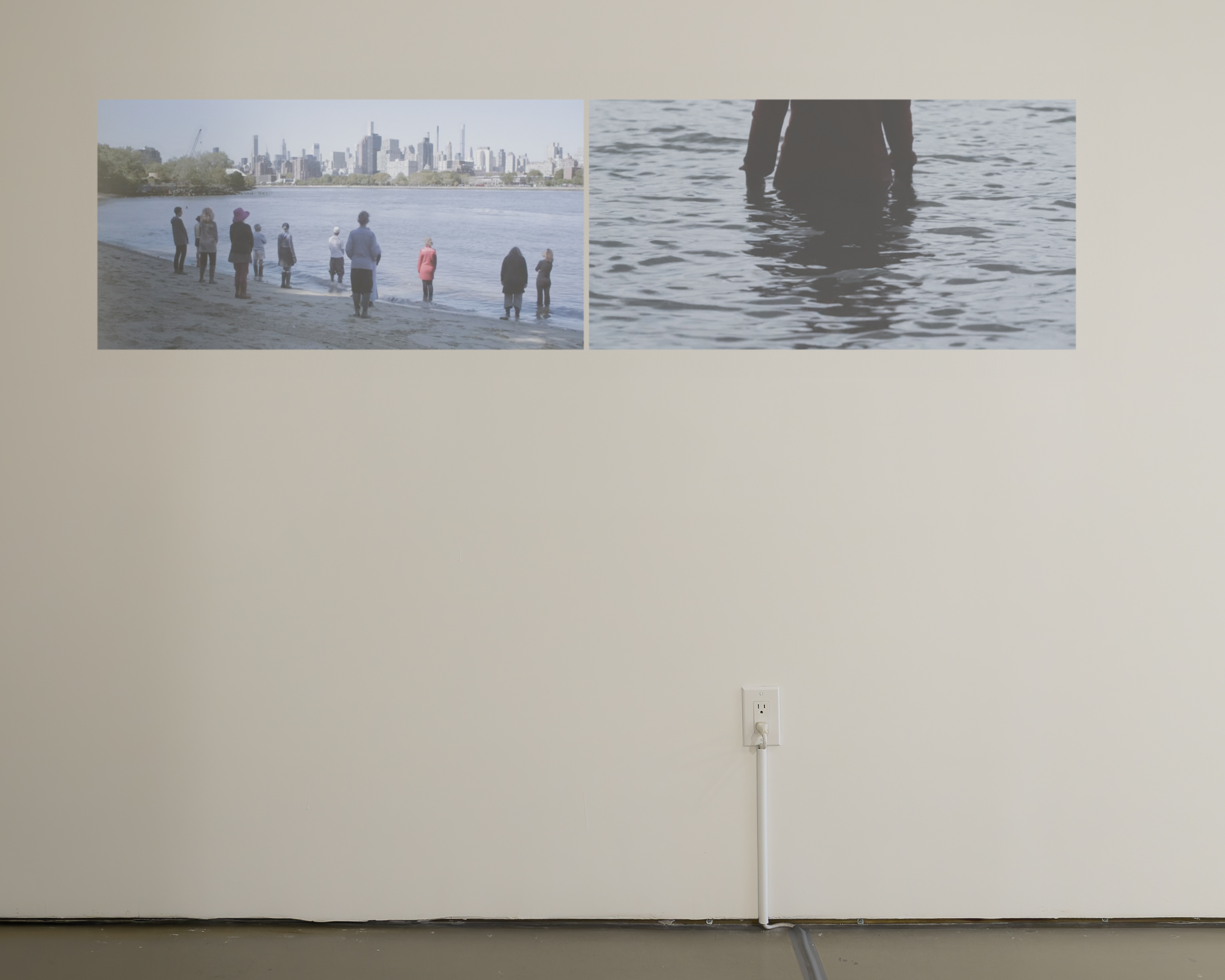
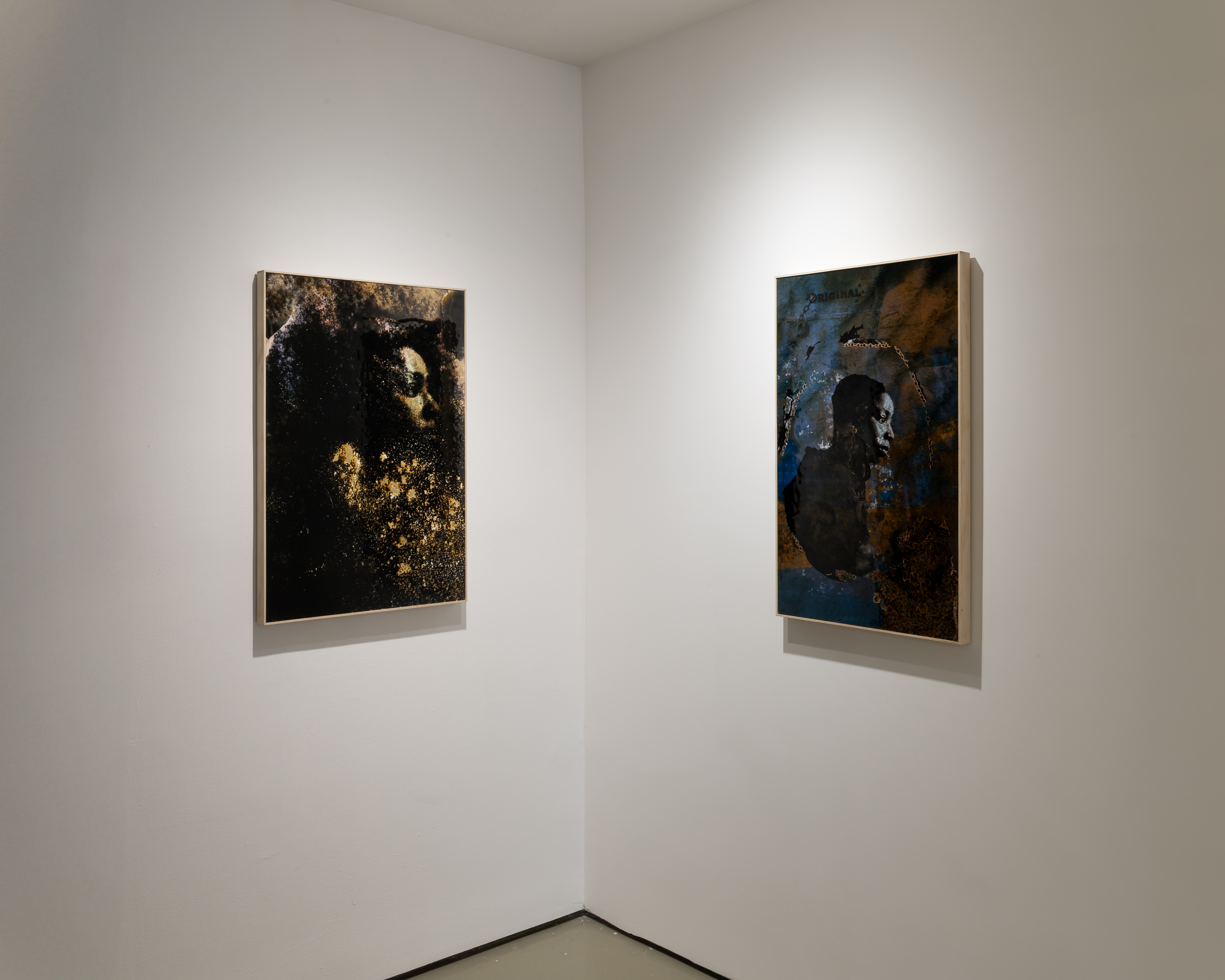


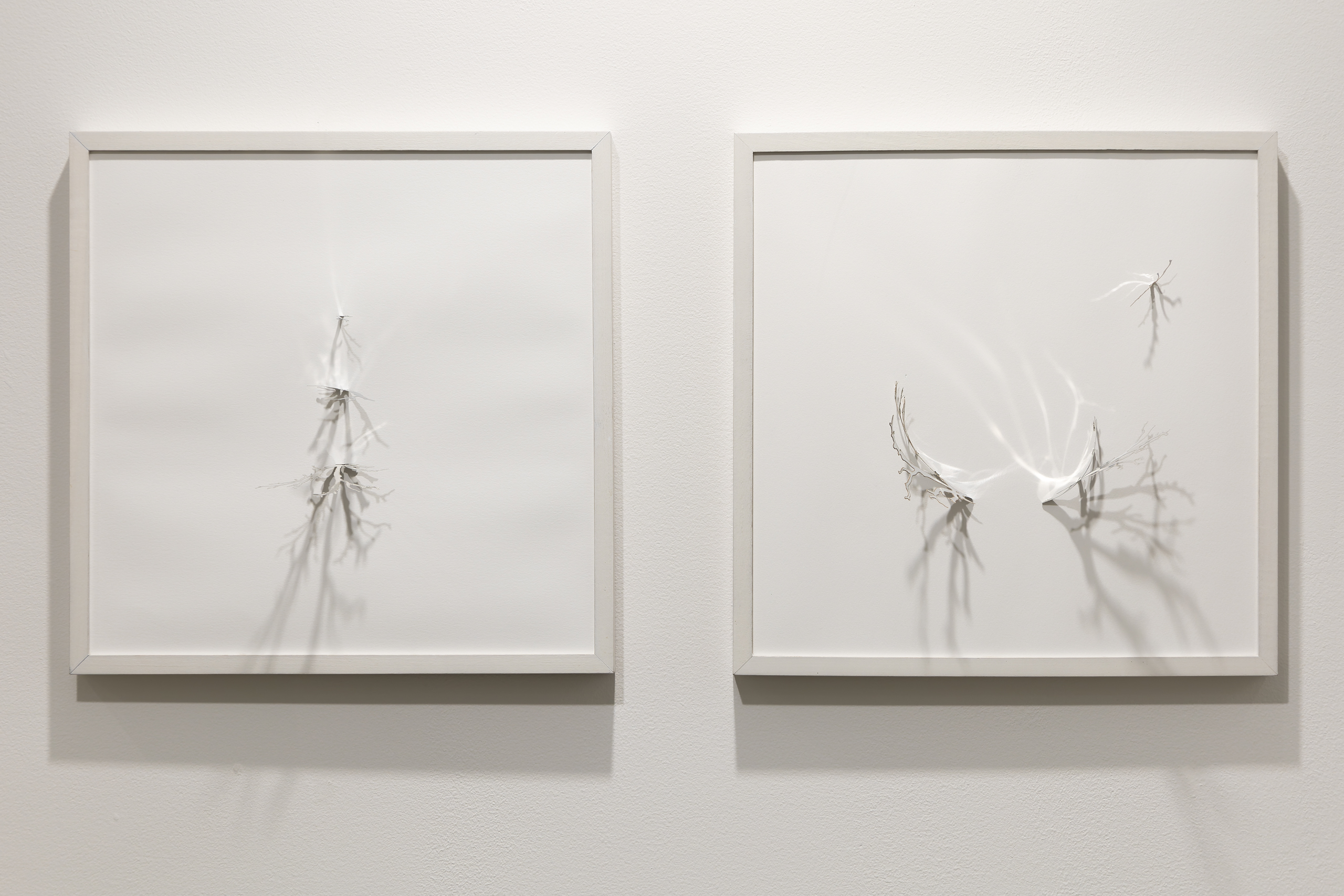


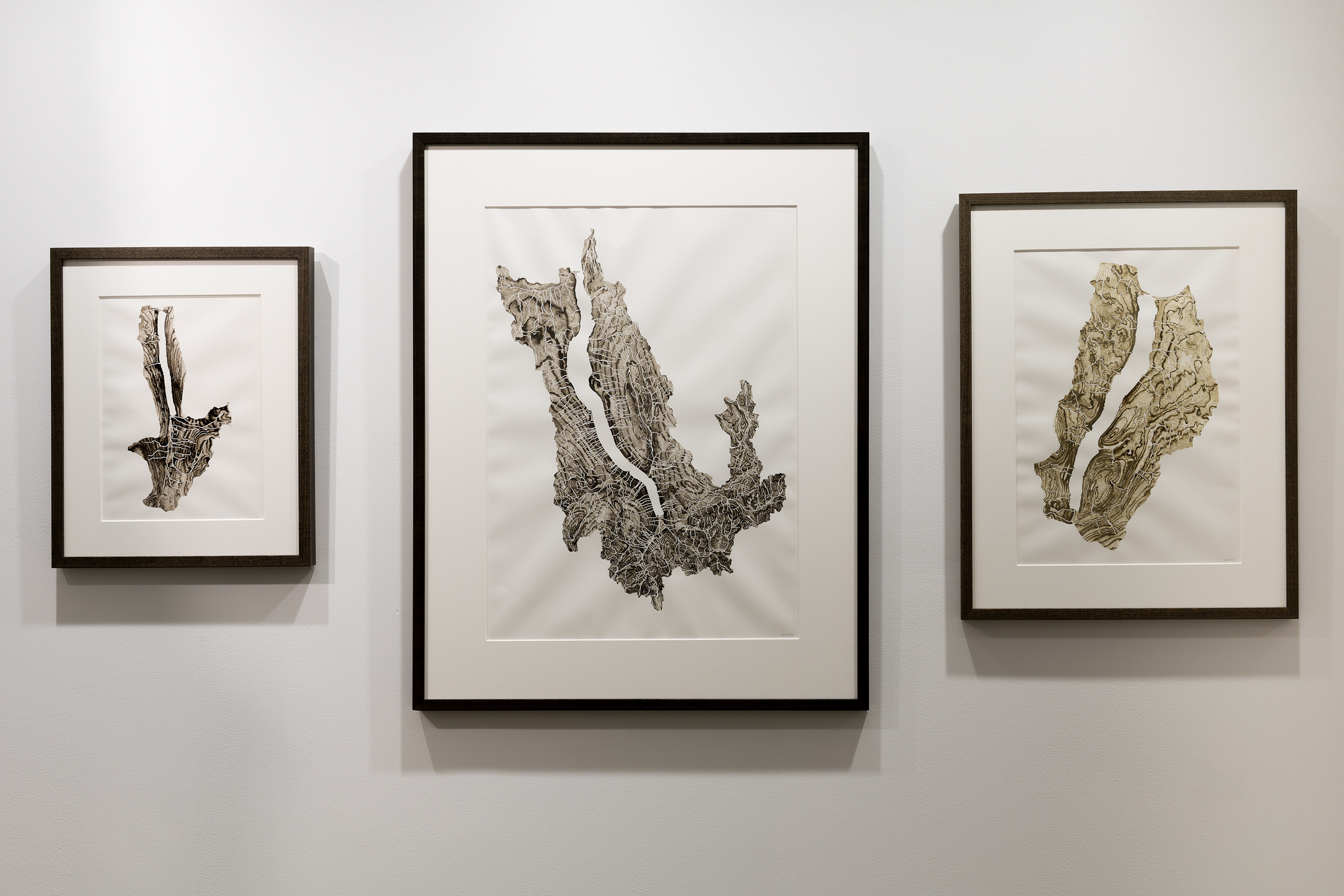
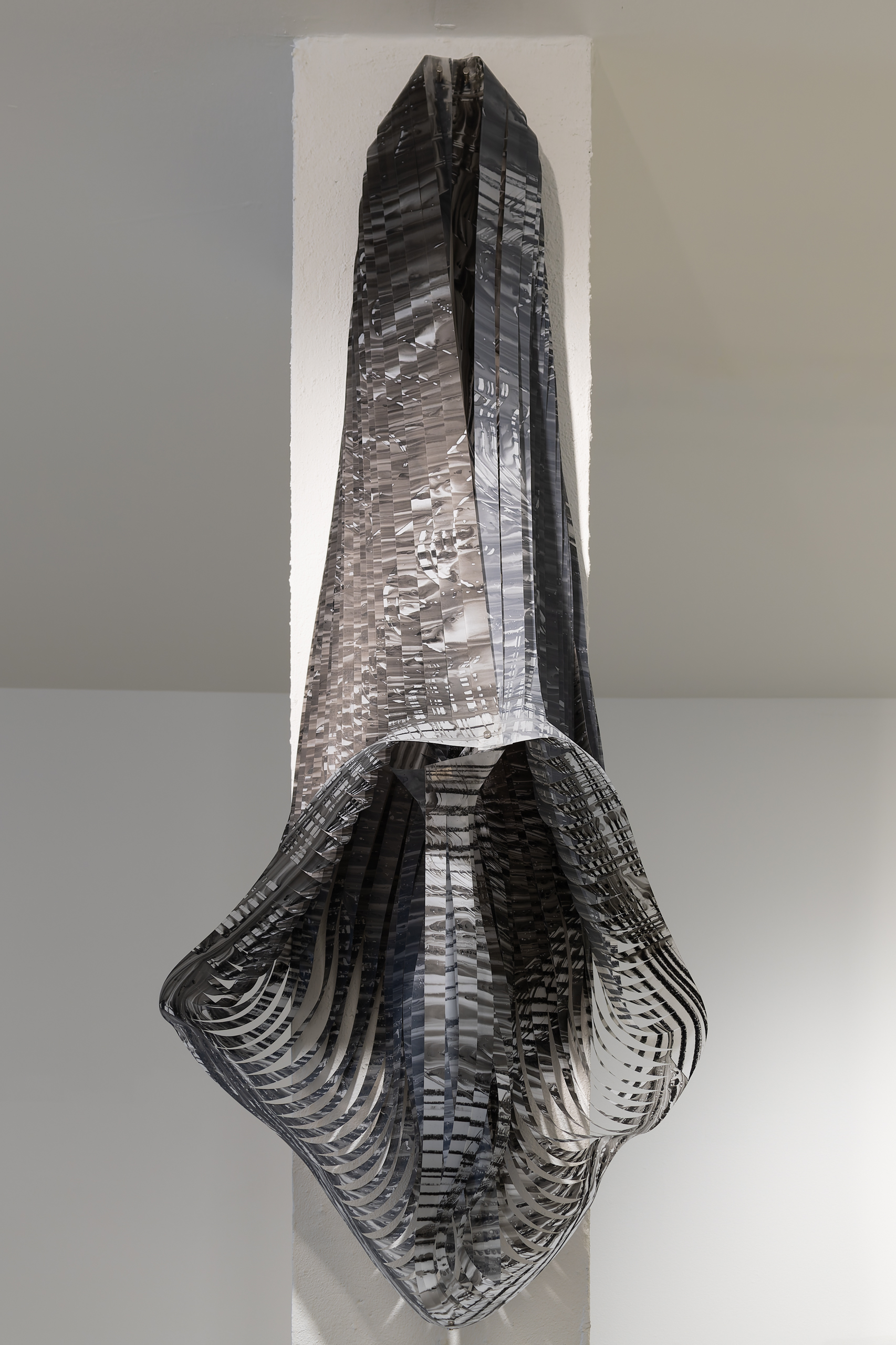




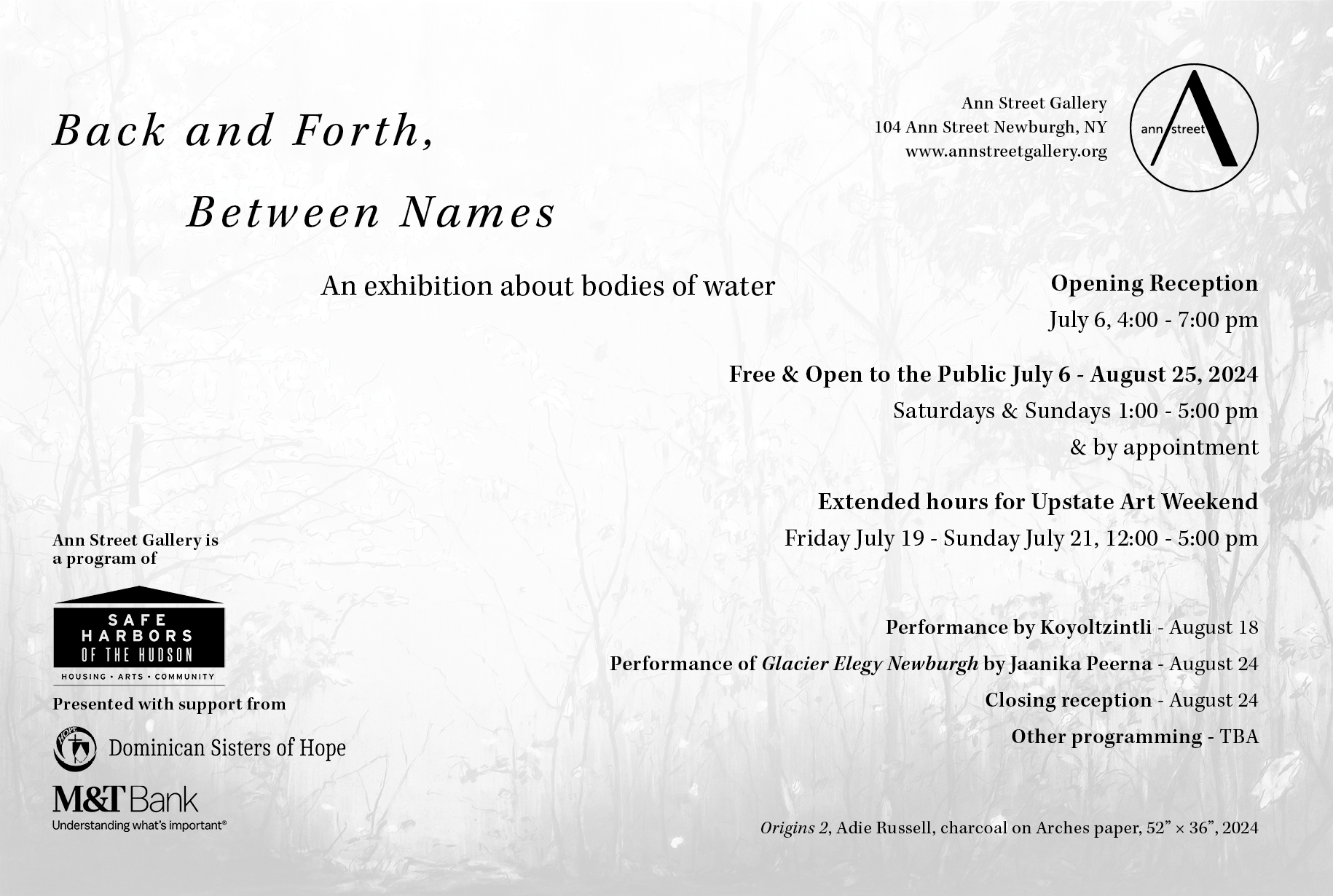
The exhibtion guide includes materials lists and dates, along with the statements included below
Hanwi Wacipi Moh-He-Con-Nuck
Cyanotype on Cotton and Muslin
19.5 x 19.5”
My artistic practice is rooted in observation of the natural world and Indigenous values. I explore materials to create artworks in diverse artistic media that express Lakota ontologies, histories of living beings, human connections to environments, and investigation of natural cycles.
Using paint, wood, plaster, clay, metal, fabric, cyanotype, ink, and found objects in my artwork I create installations, paintings, and photographs with variations of imagery including Lakota symbols, mirrored and repeated forms, landscapes, skyscapes, constellations, plants, stones, and water. These elements embody the most ancient teachings of humanity and carry with them knowledge, truths, and realities that weave together stories both within and outside of traditional, contemporary, indigenous, and western ways of being and methodologies.
My art process aims to focus intersections between nature and personal “ways of being” addressing multiplicity of cultures and practices to allow space to reflect upon and learn about the mystery of life, death, and connections to Mitakyue Oyasin (All My Relations).
The title translates to: Moon Dance with The Waters that Never Stand Still
Cyanotype on Cotton and Muslin
19.5 x 19.5”
My artistic practice is rooted in observation of the natural world and Indigenous values. I explore materials to create artworks in diverse artistic media that express Lakota ontologies, histories of living beings, human connections to environments, and investigation of natural cycles.
Using paint, wood, plaster, clay, metal, fabric, cyanotype, ink, and found objects in my artwork I create installations, paintings, and photographs with variations of imagery including Lakota symbols, mirrored and repeated forms, landscapes, skyscapes, constellations, plants, stones, and water. These elements embody the most ancient teachings of humanity and carry with them knowledge, truths, and realities that weave together stories both within and outside of traditional, contemporary, indigenous, and western ways of being and methodologies.
My art process aims to focus intersections between nature and personal “ways of being” addressing multiplicity of cultures and practices to allow space to reflect upon and learn about the mystery of life, death, and connections to Mitakyue Oyasin (All My Relations).
The title translates to: Moon Dance with The Waters that Never Stand Still


Garden
Triptych of individually framed plants
13.5 x 16.25 x 4” (Installation dimensions variable)
By playing with the plane, surface, and unspoken invitations to interaction, this work undermines expectations about what one finds on and how one interacts with objects on a white wall. This space is no more contrived than environments we think of as more natural.
Triptych of individually framed plants
13.5 x 16.25 x 4” (Installation dimensions variable)
By playing with the plane, surface, and unspoken invitations to interaction, this work undermines expectations about what one finds on and how one interacts with objects on a white wall. This space is no more contrived than environments we think of as more natural.

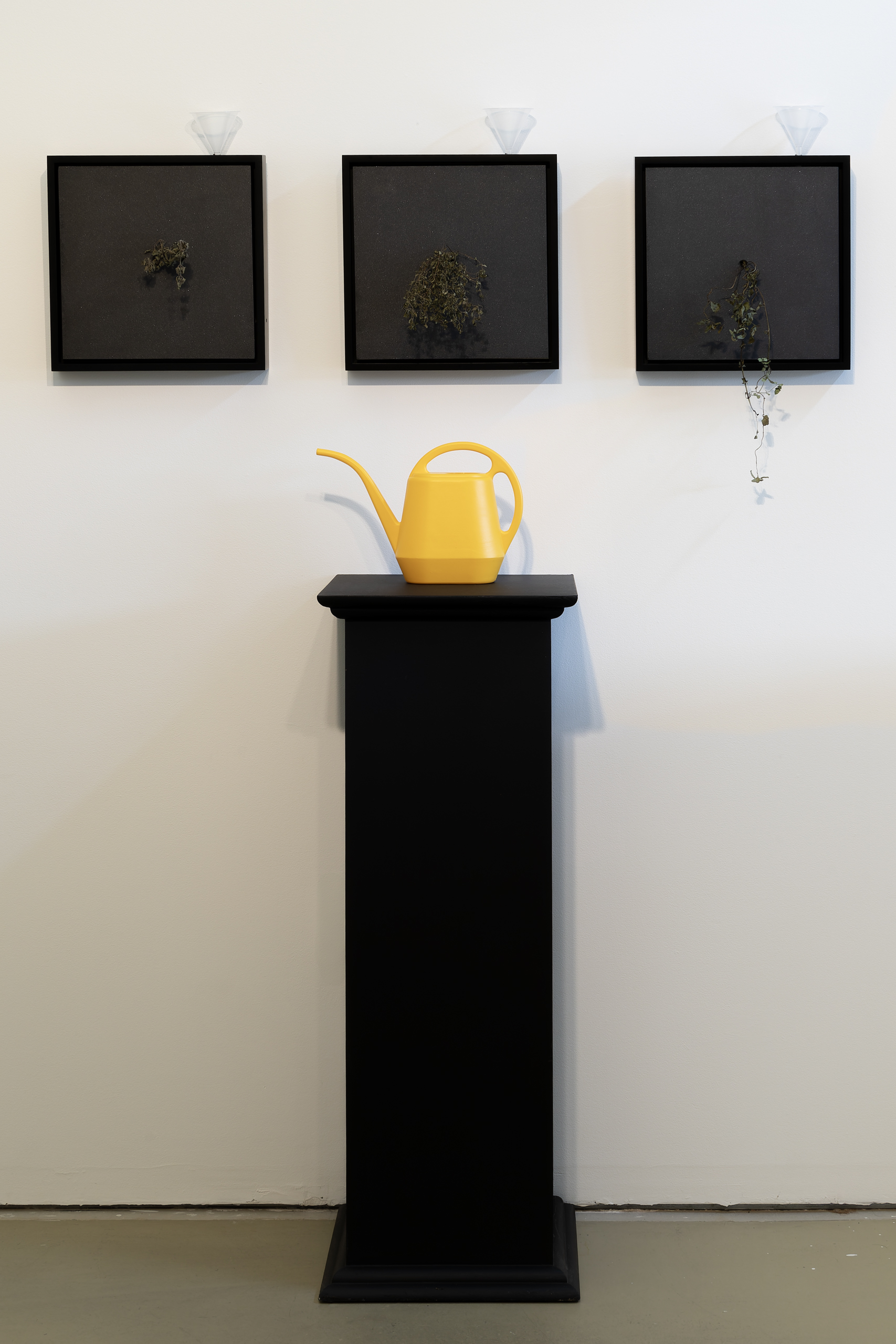


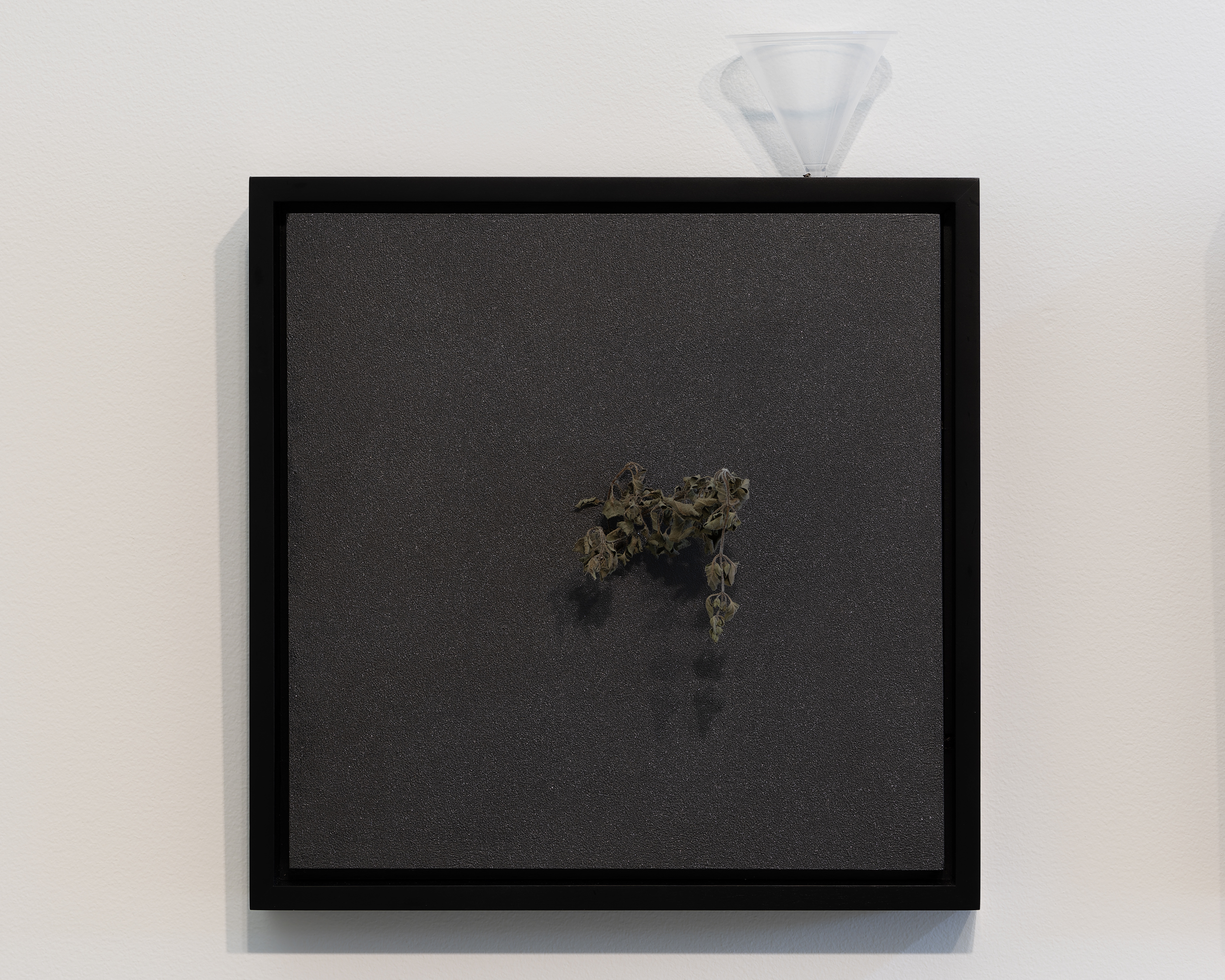
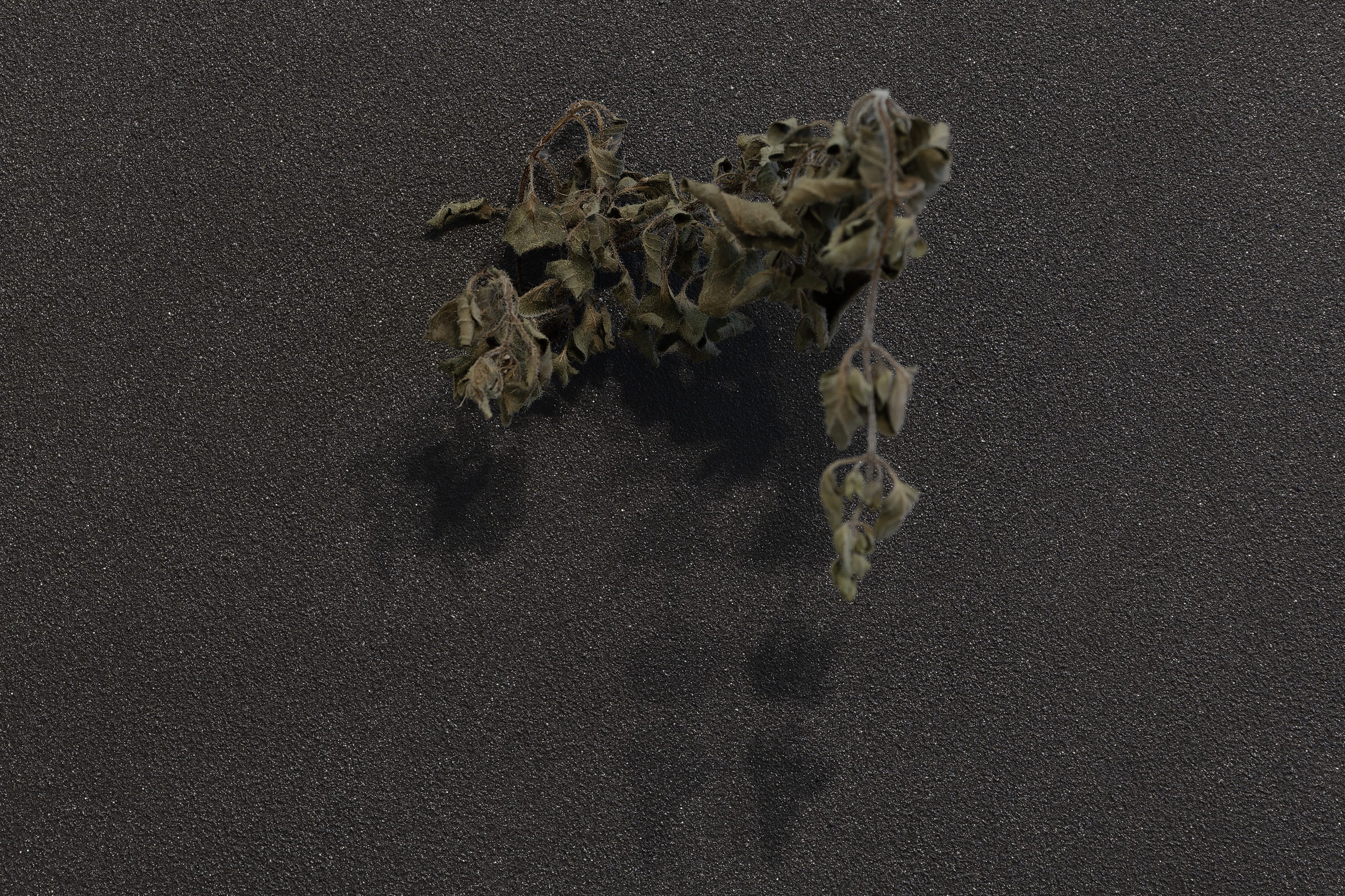

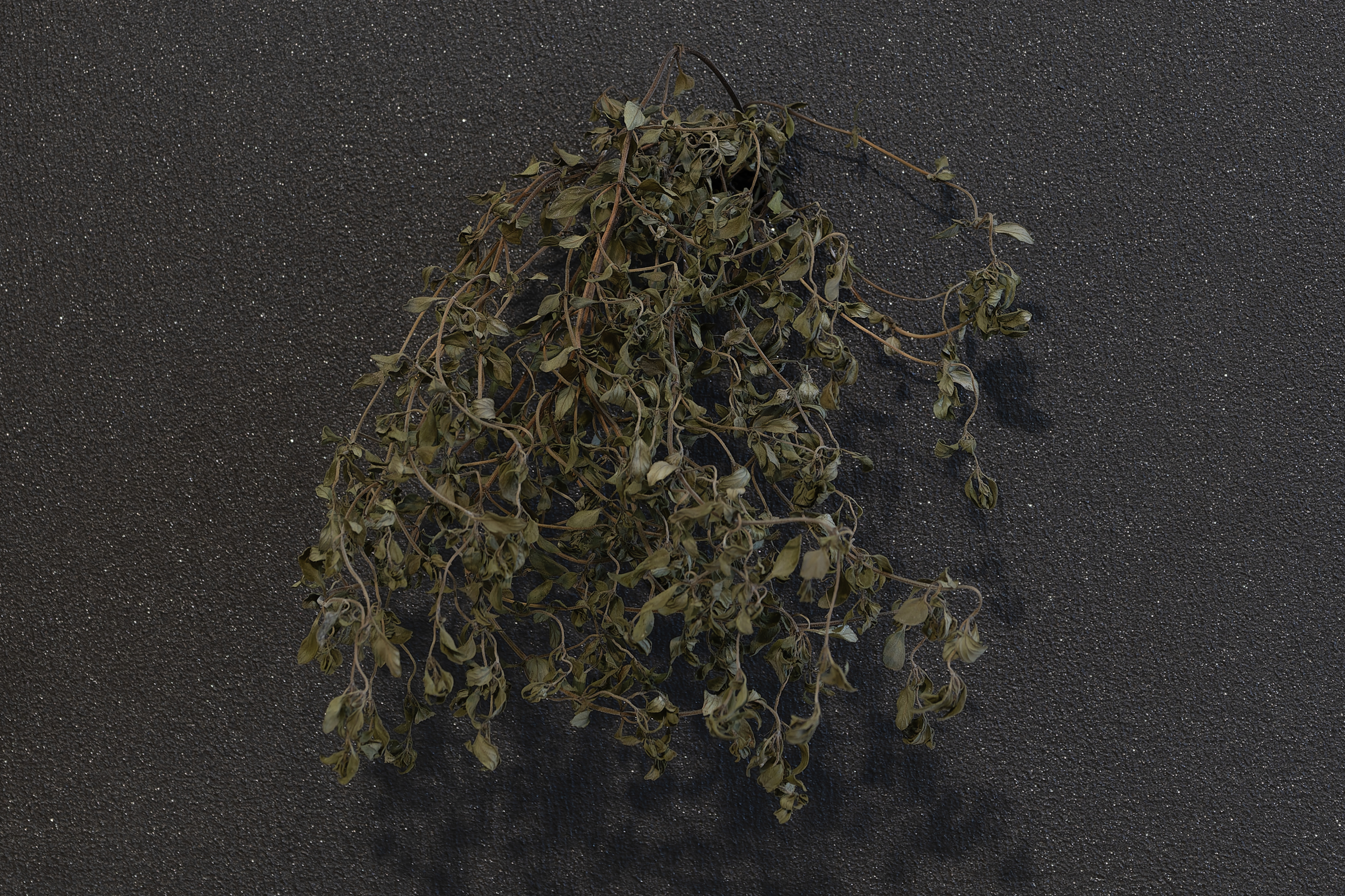
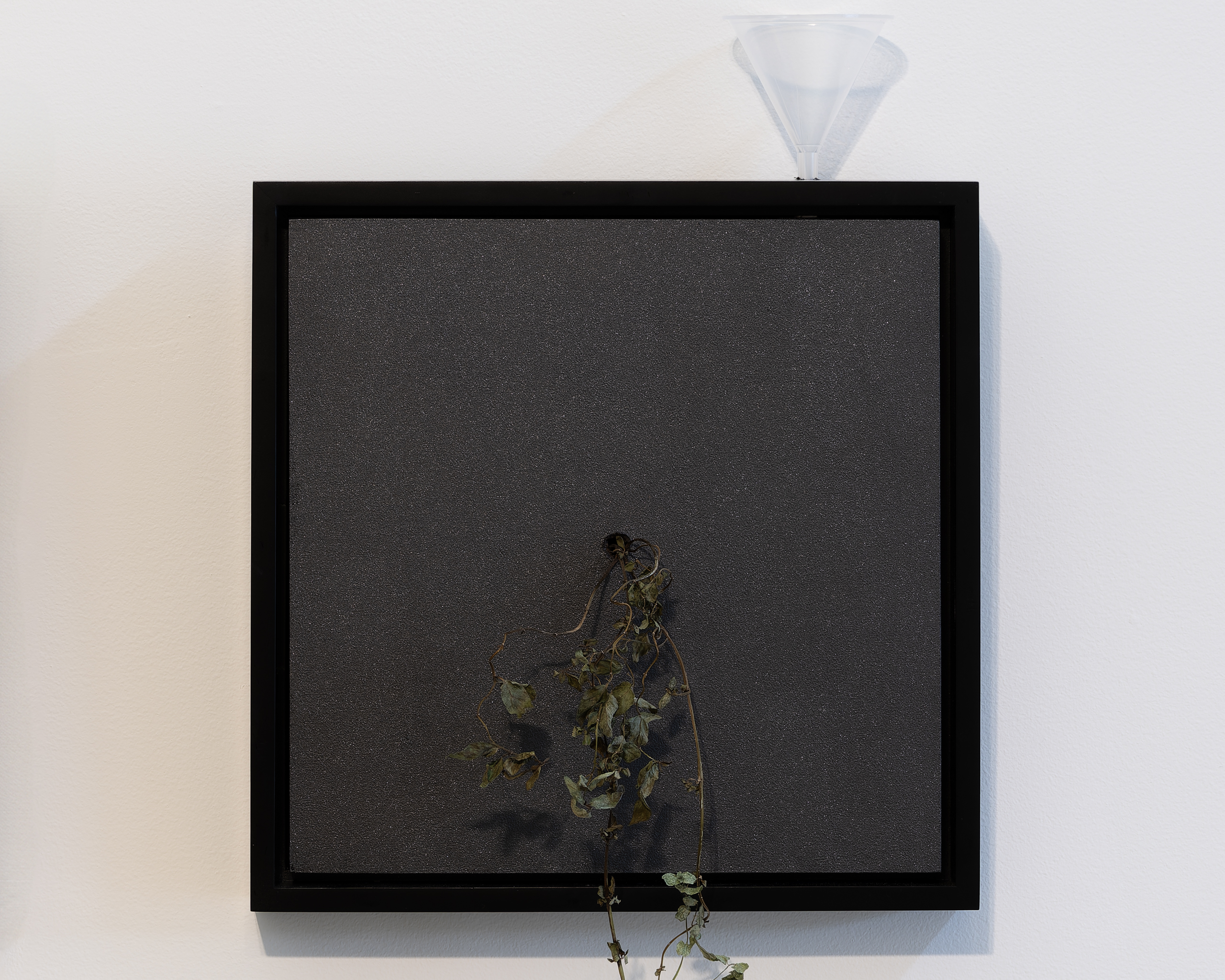
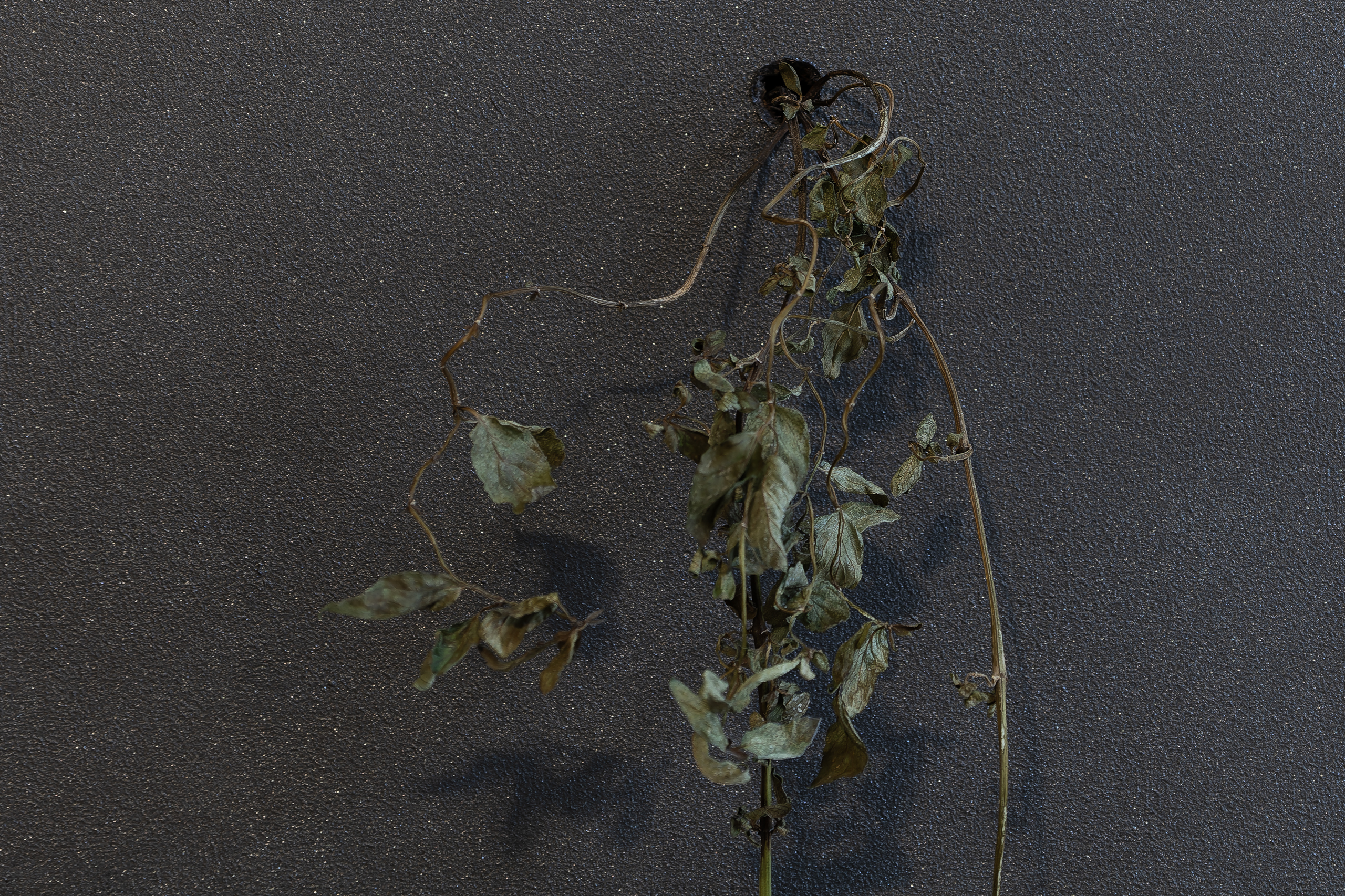
Ghosts of Icebergs
Watercolor
11 x 14”
The Ghosts of Icebergs series depicts the shapes of icebergs from real images as witnessed in the high Arctic. The qualities and structure of each berg is only slightly hinted at with its reflection in Arctic waters. These paintings are like portraits of ice that is most likely long gone or has greatly changed due to melt since they were recorded. Although this is a normal process, the rate in which glaciers are melting and calving icebergs is greater than ever due to climate change.
Watercolor
11 x 14”
The Ghosts of Icebergs series depicts the shapes of icebergs from real images as witnessed in the high Arctic. The qualities and structure of each berg is only slightly hinted at with its reflection in Arctic waters. These paintings are like portraits of ice that is most likely long gone or has greatly changed due to melt since they were recorded. Although this is a normal process, the rate in which glaciers are melting and calving icebergs is greater than ever due to climate change.

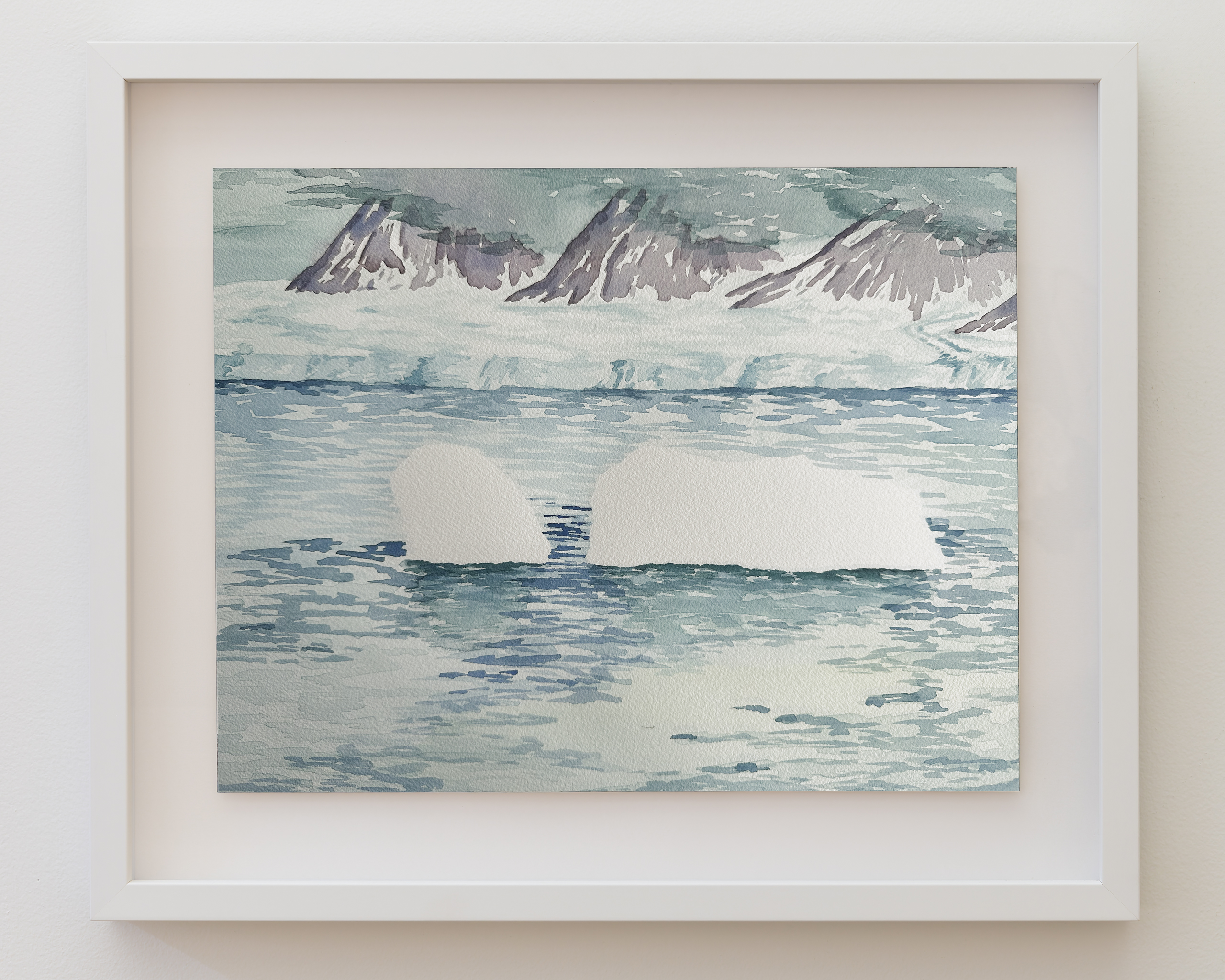
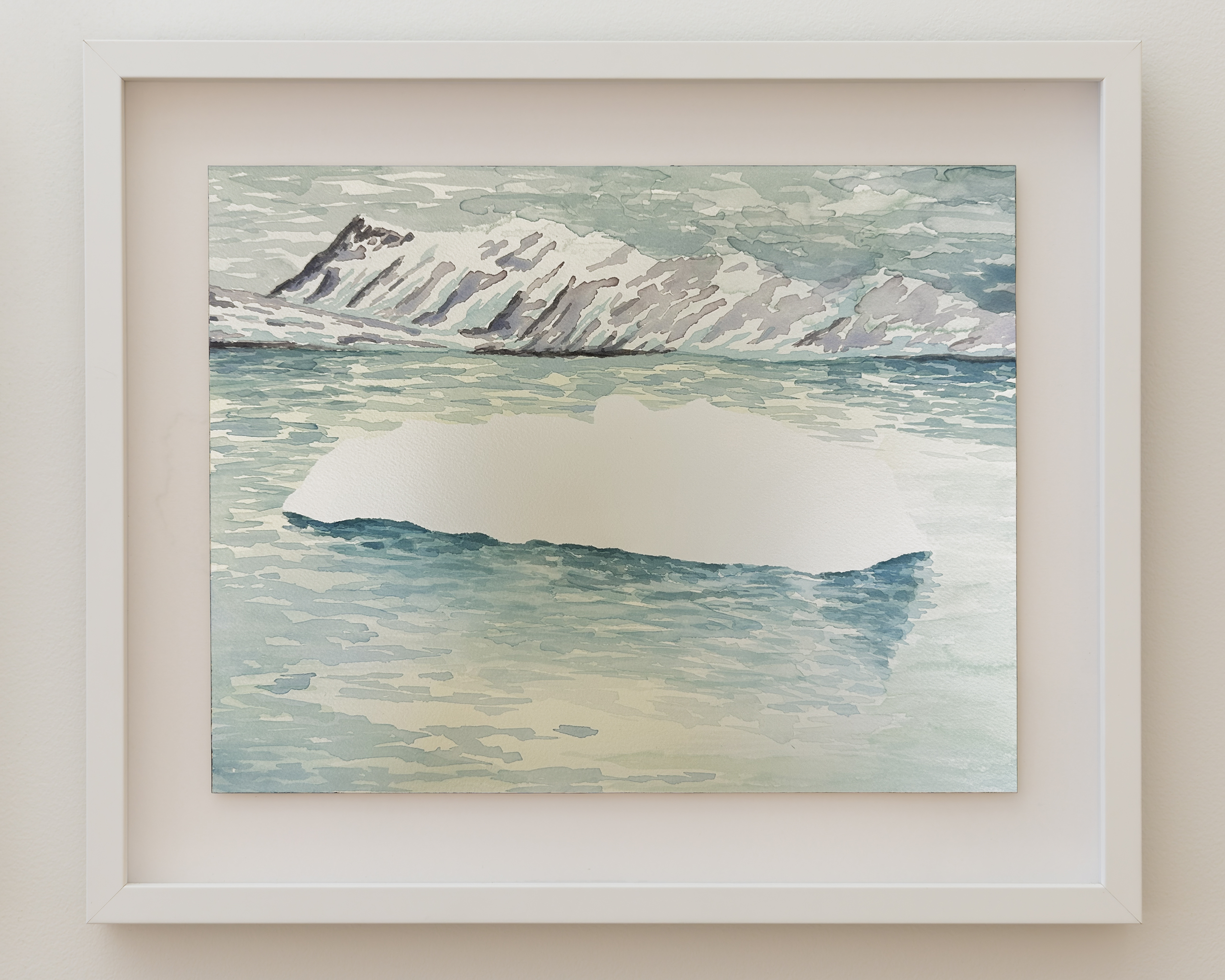
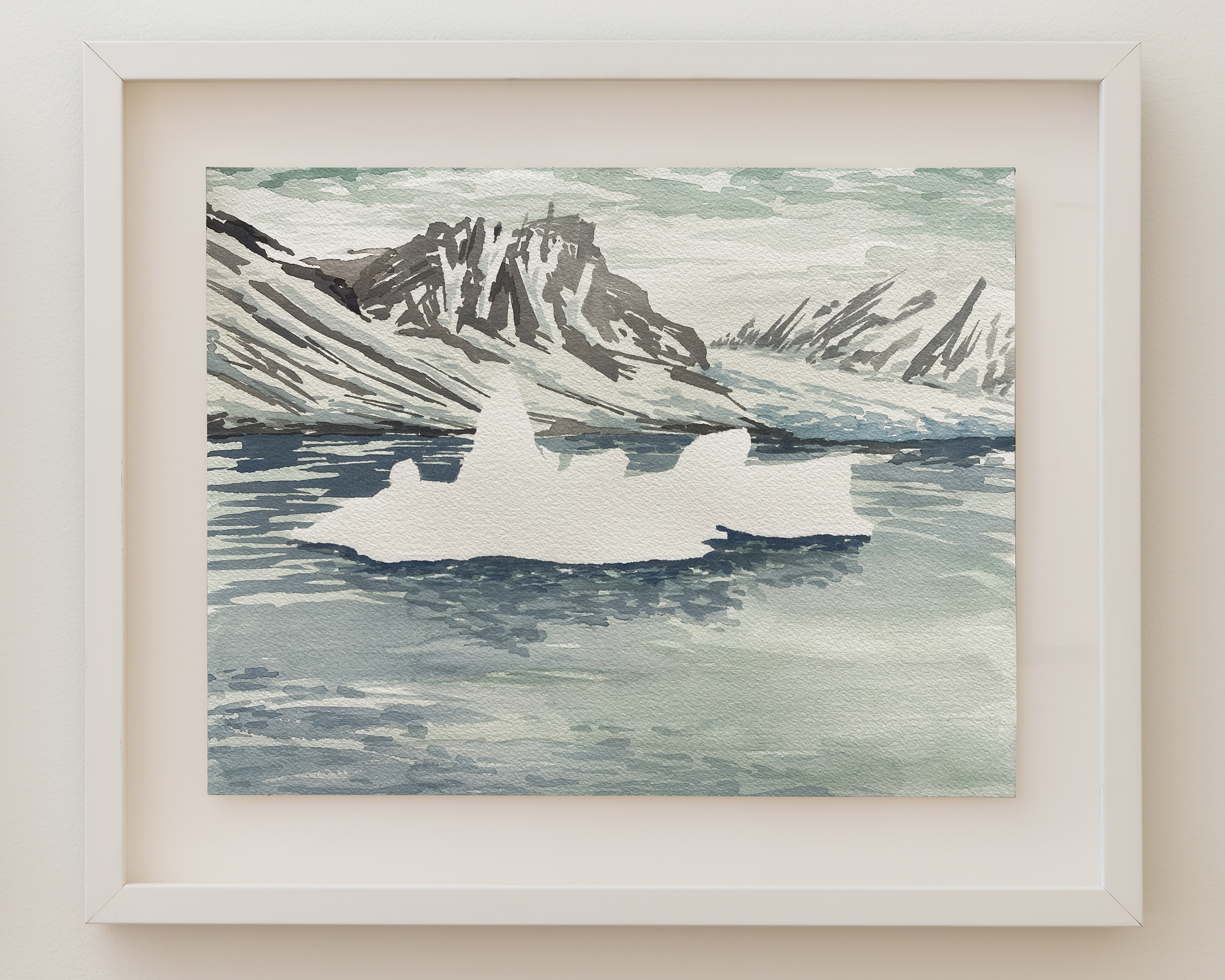


Tongue of Ice
PLA (polylactic acid)
4 x 16.5 x 26.5”
Tongue of Ice is a scale 3D printed model of Skaftafellsjökull in southern Iceland. It is a glacier tongue of the greater Vatnajökull icecap. The model is constructed as if a large arrow pointing in the direction of retreat, a present day reality for all glaciers in Iceland.
PLA (polylactic acid)
4 x 16.5 x 26.5”
Tongue of Ice is a scale 3D printed model of Skaftafellsjökull in southern Iceland. It is a glacier tongue of the greater Vatnajökull icecap. The model is constructed as if a large arrow pointing in the direction of retreat, a present day reality for all glaciers in Iceland.

Photo courtesy Zachary Skinner
Chatter
PLA (polylactic acid)
42 x 24 x 3”
Fourteen individual 3D prints create a shape outlining the Hudson Estuary. On the surface is chatter marks and striations that resemble marks found on rocky surfaces across the Hudson Valley that provide evidence of a Hudson Valley glacier. The gaps between pieces run north/south and east/west while the direction of the marks (when installed in the ground) run approximately 30 degrees west of south, the direction of movement of the Laurentide ice sheet as it sculpted the valley during the last ice age.
PLA (polylactic acid)
42 x 24 x 3”
Fourteen individual 3D prints create a shape outlining the Hudson Estuary. On the surface is chatter marks and striations that resemble marks found on rocky surfaces across the Hudson Valley that provide evidence of a Hudson Valley glacier. The gaps between pieces run north/south and east/west while the direction of the marks (when installed in the ground) run approximately 30 degrees west of south, the direction of movement of the Laurentide ice sheet as it sculpted the valley during the last ice age.

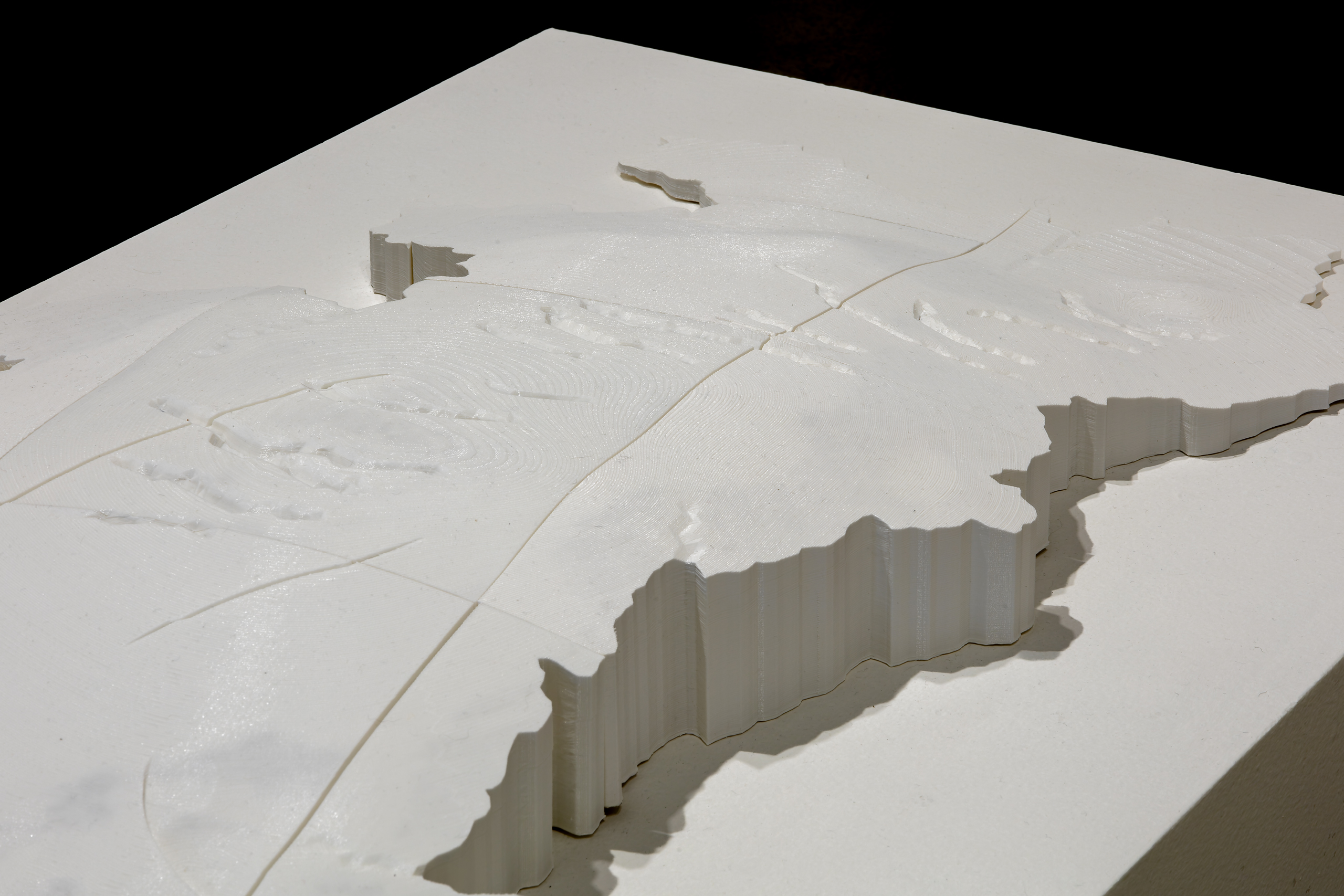
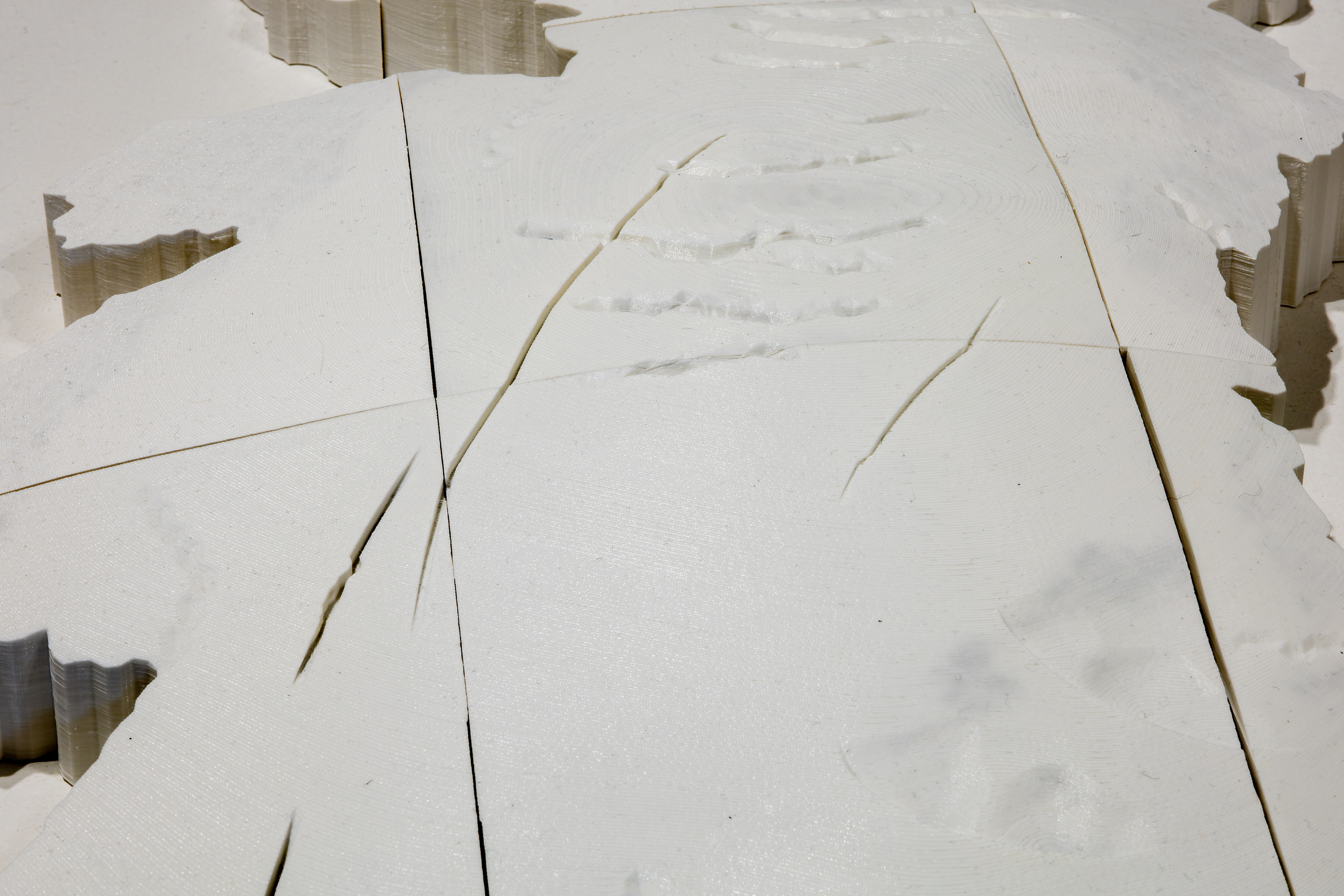
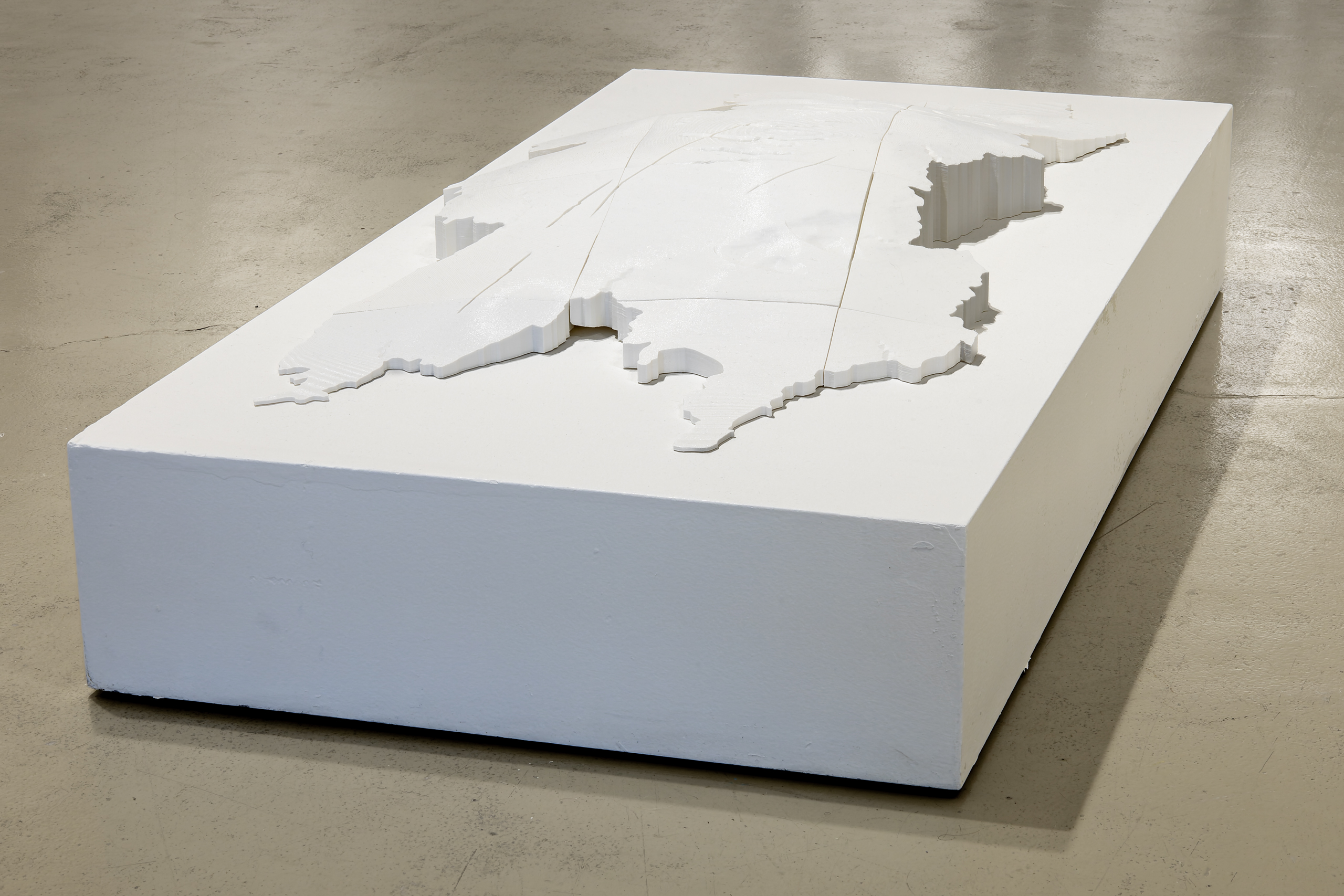
Untitled (For Toshiko, triple water whistle)
Ceramic and seeds
44 x 32 x 8” (Installation dimensions variable)
I started making pre-columbian instruments from a place of grief, making and hearing them taught me about grief, as the environmentalist of the soul. It healed something in me, and since then, making has turned into inquiry: When were these instruments played, what rituals enveloped them, how did their rites of passages, and funerary rites sound? In addition, I also explore pathways for indigenous and diasporic communities to reclaim these technologies, challenging colonial narratives through the essential act of listening.
Through crafting these instruments, I stitch together fragmented stories and revive one of the oldest and most obscure sonic heritage--Abya Yala's legacy. I seek guidance from celestial constellations as I shape flute beings, water whistle beings, rattle beings, serpent beings--each endowed with unique patterns and frequencies. These inter-dimensional mechanisms are imbued with sonic codes, they are ancient future technologies, carrying memory about land and self.
Ceramic and seeds
44 x 32 x 8” (Installation dimensions variable)
I started making pre-columbian instruments from a place of grief, making and hearing them taught me about grief, as the environmentalist of the soul. It healed something in me, and since then, making has turned into inquiry: When were these instruments played, what rituals enveloped them, how did their rites of passages, and funerary rites sound? In addition, I also explore pathways for indigenous and diasporic communities to reclaim these technologies, challenging colonial narratives through the essential act of listening.
Through crafting these instruments, I stitch together fragmented stories and revive one of the oldest and most obscure sonic heritage--Abya Yala's legacy. I seek guidance from celestial constellations as I shape flute beings, water whistle beings, rattle beings, serpent beings--each endowed with unique patterns and frequencies. These inter-dimensional mechanisms are imbued with sonic codes, they are ancient future technologies, carrying memory about land and self.




Koyoltzintli playing
Untitled (For Toshiko, triple water whistle)
Untitled (For Toshiko, triple water whistle)
To Swallow a River: Migrant Yola-Boat
Digital print with crystals on panel
30 x 72”
This work delves into the arduous journey of immigrants, encapsulated in the image of a Dominican homemade boat known as a "yola." These makeshift vessels, often overfilled with migrants, attempt the dangerous sea crossing to Puerto Rico and arrive ultimately to America. The central image, sourced from a found Dominican newspaper clipping, depicts a yola just before departure.
A solitary figure, silhouetted and filled with a pattern inspired by the ironwork of my childhood home in the Dominican Republic, is an emblem of the weight carried from the vast memories of the home left behind. This figure captures the dichotomy of hope and peril, embodying immigrants' dangerous yet hopeful quest. Crystals placed within the piece represent this dream, evoking the brightness of stars as guidance in the sublimity of the dark sea, leaving what once was called home for the idea of obtaining a glimmer into a dream that, for many, is reality marked by alienation, segregation, and omission.
Migrant Yola-Boat reflects the physical and emotional trials of these migrants and invites viewers to contemplate broader themes of identity and displacement. The work speaks to the struggles of immigrants, illustrating the past, present, and ongoing immigration challenges in America today.
Digital print with crystals on panel
30 x 72”
This work delves into the arduous journey of immigrants, encapsulated in the image of a Dominican homemade boat known as a "yola." These makeshift vessels, often overfilled with migrants, attempt the dangerous sea crossing to Puerto Rico and arrive ultimately to America. The central image, sourced from a found Dominican newspaper clipping, depicts a yola just before departure.
A solitary figure, silhouetted and filled with a pattern inspired by the ironwork of my childhood home in the Dominican Republic, is an emblem of the weight carried from the vast memories of the home left behind. This figure captures the dichotomy of hope and peril, embodying immigrants' dangerous yet hopeful quest. Crystals placed within the piece represent this dream, evoking the brightness of stars as guidance in the sublimity of the dark sea, leaving what once was called home for the idea of obtaining a glimmer into a dream that, for many, is reality marked by alienation, segregation, and omission.
Migrant Yola-Boat reflects the physical and emotional trials of these migrants and invites viewers to contemplate broader themes of identity and displacement. The work speaks to the struggles of immigrants, illustrating the past, present, and ongoing immigration challenges in America today.



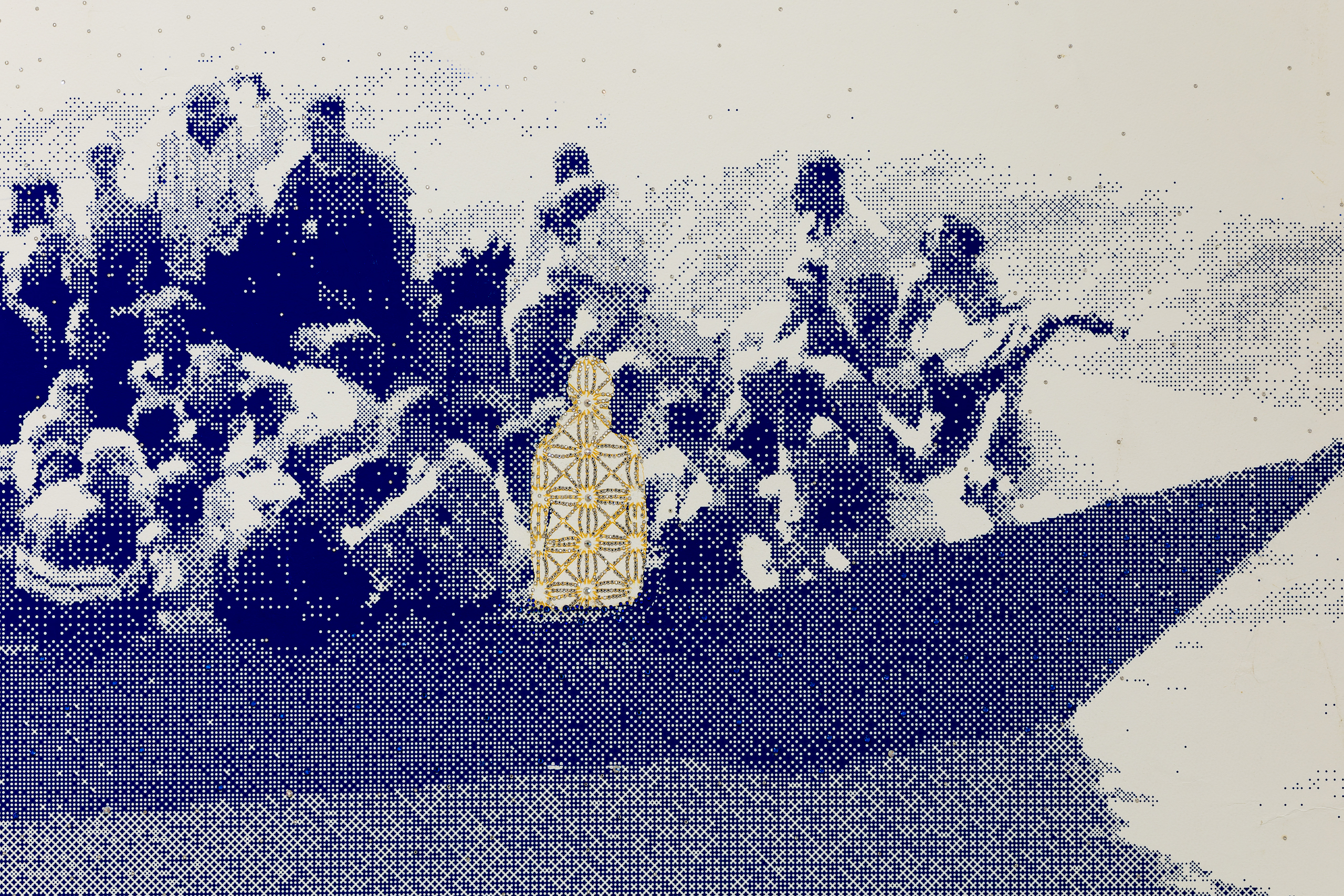


To Swallow a River: Archetype with Boat and Chain and To Swallow a River: Archetype Floating in Gold
Digital print on transparency in gold leaf on panel
24 x 36"
In this work, I act as an archivist, researching public-domain images of unidentified African American women to reinterpret turn-of-the-century photographs. This work highlights the cultural biases in historical records and the pervasive nature of racial and gender discrimination that have obscured women's identities. The term "unidentified women" in the context of African American women reveals much about the social and historical constructs of that time, reflecting a broader concept in the dual erasure of gender and race.
My artistic process was born from a personal space. For over a decade, I have lived with dozens of postcards of public domain images from the National Library of Congress of unidentified African American women from the turn of the century. These postcards hung on the walls in my darkroom alongside personal ancestral documents and photographs that have organically emerged from their silence, permeating my life. Social invisibility, the dissolution of identity, and the quest to create a portrait of a woman who dared to exist without a trace of history became a central departure in this work.
This focus is reflected in my practice through the physical form of the artwork. I preserved the postcards and found images as precious photographs, honoring their existence. Although they were items I could easily find, these particular images carried the history of a life lived within them, extending to all those without one. I photocopied these images and floated them in water with gold leaf, objects, paint, and fabric, creating ephemeral paintings and collages captured through photography before their dissolution.
The final images are created by further collaging gold leaf on the back of transparencies, constructing another layer of history through the making process, and creating layered portraits made of non-repeatable steps. Although the pictures may come from the same matrix, they live in a related but unique space and are no longer mere documents. They now represent the picture of every woman looked at but never seen.
Digital print on transparency in gold leaf on panel
24 x 36"
In this work, I act as an archivist, researching public-domain images of unidentified African American women to reinterpret turn-of-the-century photographs. This work highlights the cultural biases in historical records and the pervasive nature of racial and gender discrimination that have obscured women's identities. The term "unidentified women" in the context of African American women reveals much about the social and historical constructs of that time, reflecting a broader concept in the dual erasure of gender and race.
My artistic process was born from a personal space. For over a decade, I have lived with dozens of postcards of public domain images from the National Library of Congress of unidentified African American women from the turn of the century. These postcards hung on the walls in my darkroom alongside personal ancestral documents and photographs that have organically emerged from their silence, permeating my life. Social invisibility, the dissolution of identity, and the quest to create a portrait of a woman who dared to exist without a trace of history became a central departure in this work.
This focus is reflected in my practice through the physical form of the artwork. I preserved the postcards and found images as precious photographs, honoring their existence. Although they were items I could easily find, these particular images carried the history of a life lived within them, extending to all those without one. I photocopied these images and floated them in water with gold leaf, objects, paint, and fabric, creating ephemeral paintings and collages captured through photography before their dissolution.
The final images are created by further collaging gold leaf on the back of transparencies, constructing another layer of history through the making process, and creating layered portraits made of non-repeatable steps. Although the pictures may come from the same matrix, they live in a related but unique space and are no longer mere documents. They now represent the picture of every woman looked at but never seen.
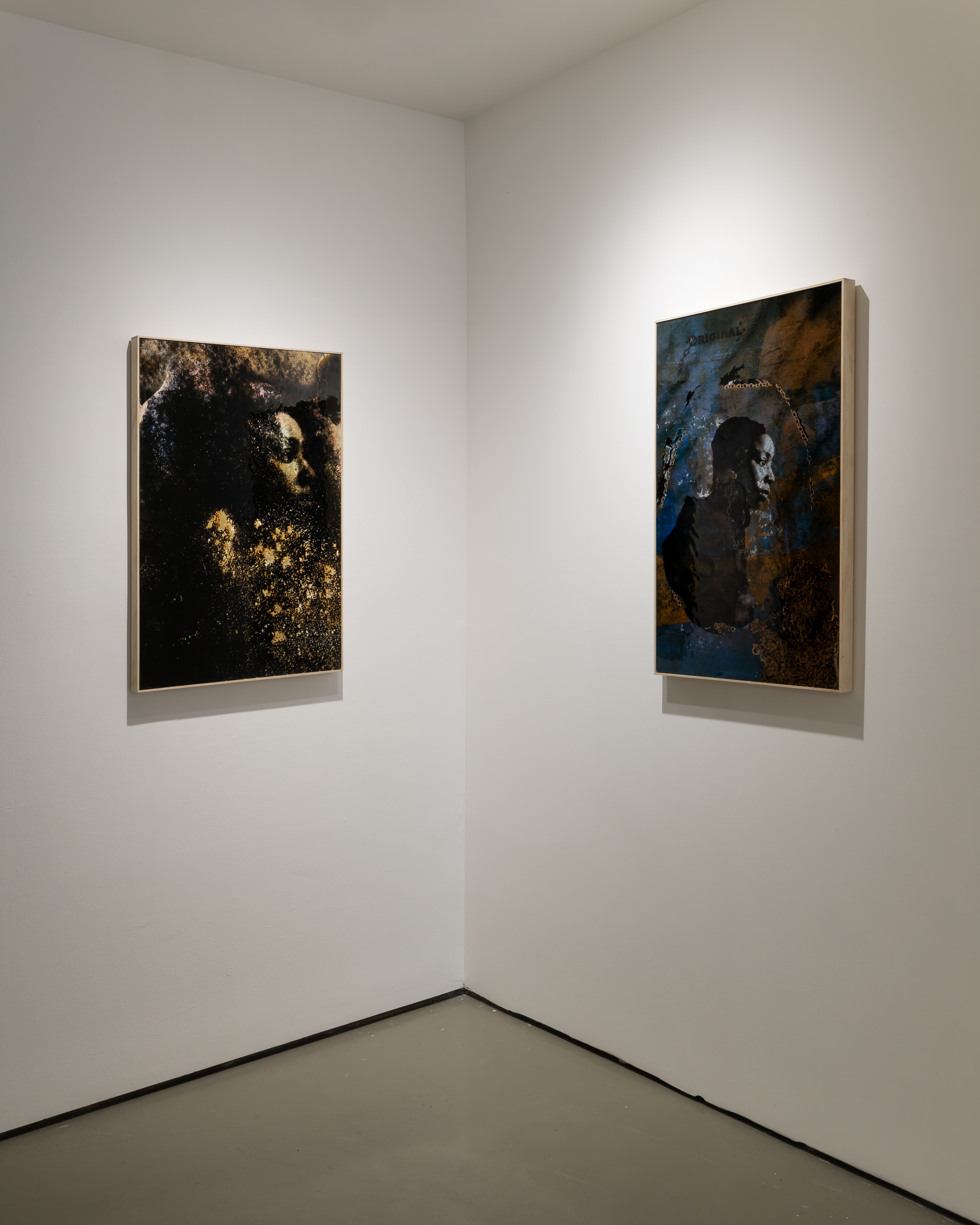

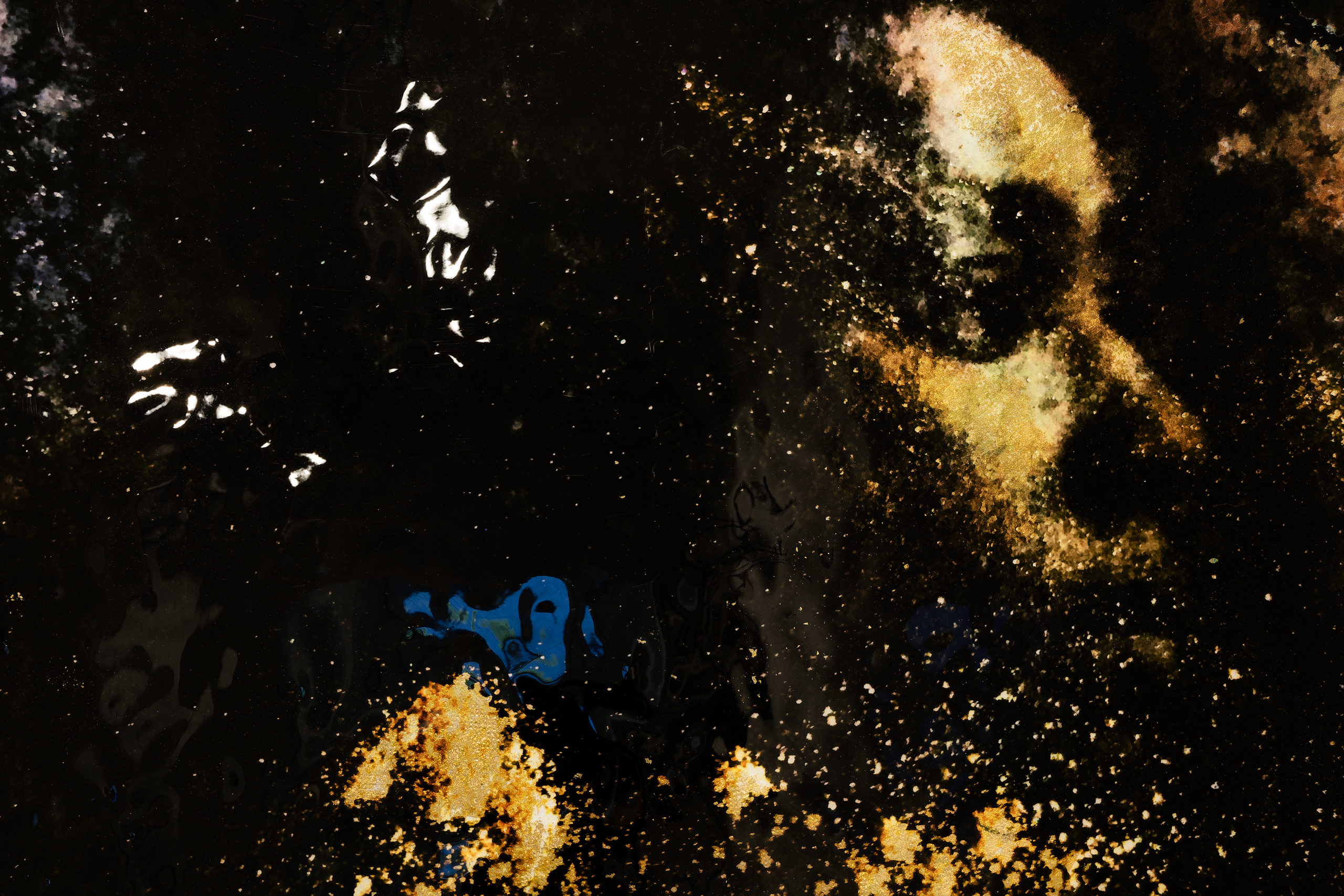
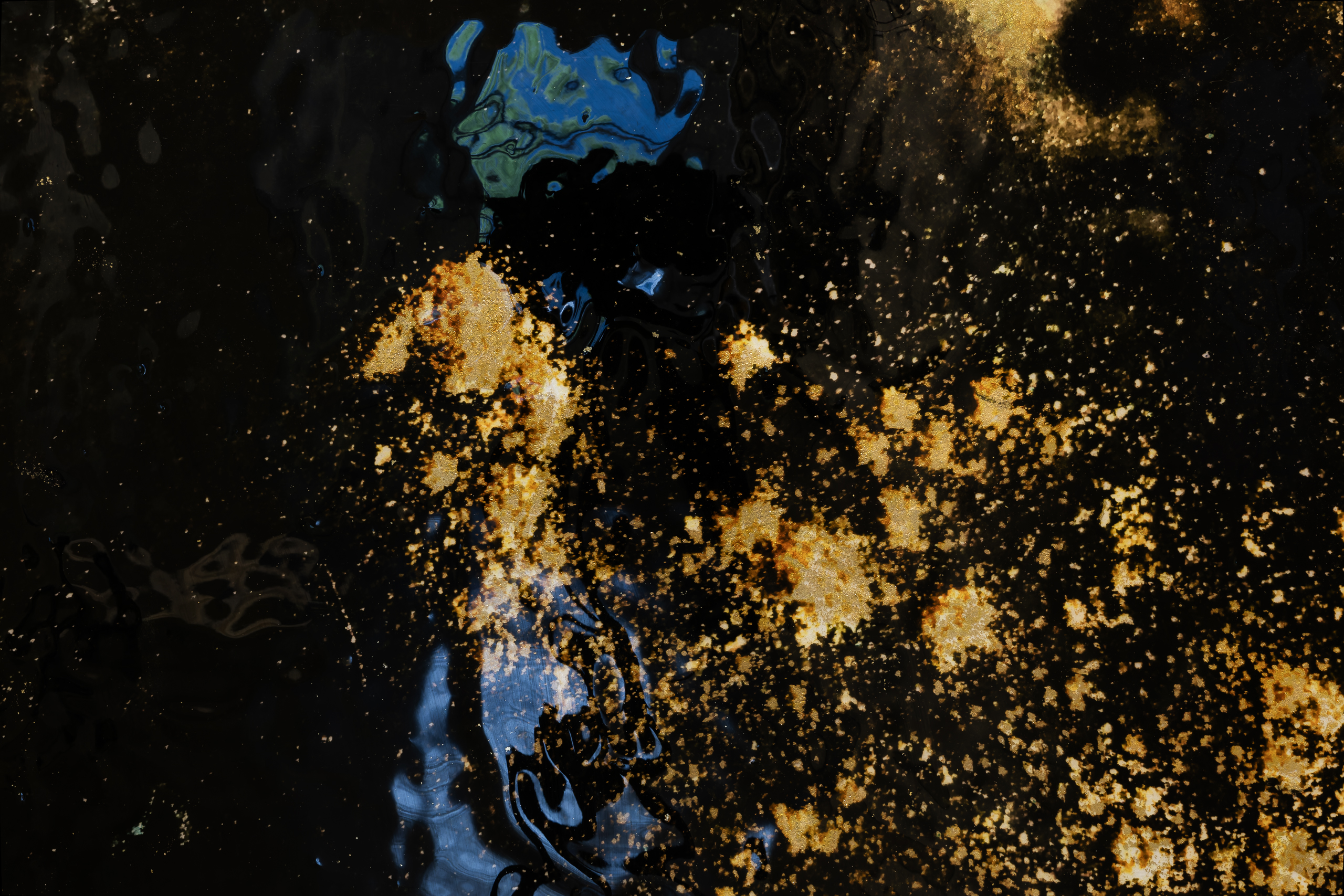


To Swallow a River: Entwined
Digital print on silk organza
12 x 14”
This work is printed on a translucent, fragile, floating fabric that unravels over time, creating an everchanging image that folds and moves like the sea. This material choice symbolizes the delicate and constantly shifting nature of the immigrant experience. The fabric's movement and gradual unraveling mirror the immigrant’s journey, which is marked by continuous change, adaptation, and the relentless passage of time. The image underscores the transformation as individuals navigate the treacherous waters of immigration, seeking to maintain their sense of self while forging new paths in unfamiliar territories. The boat on the mouth carries the weight of unspoken stories hidden from mainstream society, reinforcing feelings of melancholy, isolation, and separation from one's homeland, encapsulating the fear and desperation often accompanying the decision to leave one’s homeland. This fear is intertwined with the hope for a better future, creating a complex emotional landscape.
Digital print on silk organza
12 x 14”
This work is printed on a translucent, fragile, floating fabric that unravels over time, creating an everchanging image that folds and moves like the sea. This material choice symbolizes the delicate and constantly shifting nature of the immigrant experience. The fabric's movement and gradual unraveling mirror the immigrant’s journey, which is marked by continuous change, adaptation, and the relentless passage of time. The image underscores the transformation as individuals navigate the treacherous waters of immigration, seeking to maintain their sense of self while forging new paths in unfamiliar territories. The boat on the mouth carries the weight of unspoken stories hidden from mainstream society, reinforcing feelings of melancholy, isolation, and separation from one's homeland, encapsulating the fear and desperation often accompanying the decision to leave one’s homeland. This fear is intertwined with the hope for a better future, creating a complex emotional landscape.


To Swallow a River: Seeing the Bottom Blue
Digital print on paper from video still
44 x 36”
The sea swallowed me at the beach, and I couldn’t swim. The seabed revealed itself as I sank, and a surprising calmness washed over me in those dangerous waters. The waves swayed me aggressively until I somehow drifted and found my way to the shore.
This photograph captures this beach on the Dominican Republic's east coast, combined with a separate image—a self-portrait of my reflection in the water and my face pressed beneath a piece of glass. The photos were taken the day before, and the waters were calm then, in stark contrast to the following day. At the beginning of this year, I merged these two images by projecting them onto translucent fabric in an unconscious act of processing; seeing them together, I realized they belonged as one. The projection seemed as fleeting as my memory of the waves, and the faint recollection of that impermanent moment resurfaced as a tangible reflection of it. I wanted to hold that moment. I rephotographed this projection, capturing the disrupted illusion caused by the light filtering through the windows, resembling that of the glimmer on a calm shore. This resulted in a corporeal print, transforming a private and fragmented experience into a unified form, an effort to understand my metaphoric relationship with the sea. Although my methodology is process-based, this work is not a process documentation. It is a document of truth, created from archives of my memories. It is a story whose ramifications extend to global issues of loss and is now a public record of this account.
Digital print on paper from video still
44 x 36”
The sea swallowed me at the beach, and I couldn’t swim. The seabed revealed itself as I sank, and a surprising calmness washed over me in those dangerous waters. The waves swayed me aggressively until I somehow drifted and found my way to the shore.
This photograph captures this beach on the Dominican Republic's east coast, combined with a separate image—a self-portrait of my reflection in the water and my face pressed beneath a piece of glass. The photos were taken the day before, and the waters were calm then, in stark contrast to the following day. At the beginning of this year, I merged these two images by projecting them onto translucent fabric in an unconscious act of processing; seeing them together, I realized they belonged as one. The projection seemed as fleeting as my memory of the waves, and the faint recollection of that impermanent moment resurfaced as a tangible reflection of it. I wanted to hold that moment. I rephotographed this projection, capturing the disrupted illusion caused by the light filtering through the windows, resembling that of the glimmer on a calm shore. This resulted in a corporeal print, transforming a private and fragmented experience into a unified form, an effort to understand my metaphoric relationship with the sea. Although my methodology is process-based, this work is not a process documentation. It is a document of truth, created from archives of my memories. It is a story whose ramifications extend to global issues of loss and is now a public record of this account.

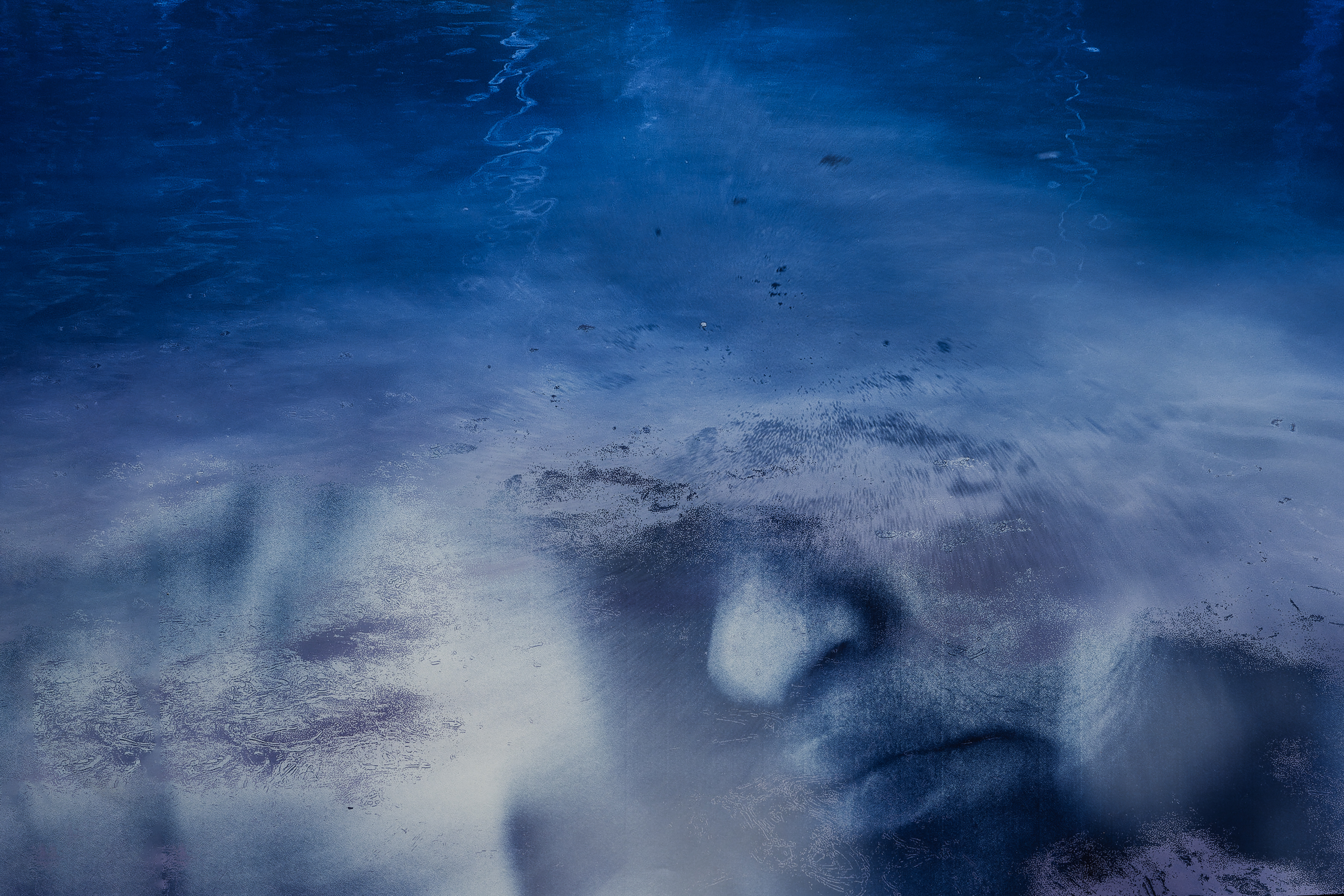
Hydrologies from the Hudson Watershed (Rondout, Hudson-Wappinger, Lower Hudson)
Hand-cut watercolor paper, wood, steel, paint
16 x 8”
13.5 x 9.5”
16 x 8”
These paper works are sensual interpretations of hydrological data. By eliminating all of the man-made structures that usually inform our location in space, these free-floating hydrologies leave only the river basin to contemplate. What at first might seem disorienting leads to the possibility of re-orienting, of identifying with and within these natural systems.
Hand-cut watercolor paper, wood, steel, paint
16 x 8”
13.5 x 9.5”
16 x 8”
These paper works are sensual interpretations of hydrological data. By eliminating all of the man-made structures that usually inform our location in space, these free-floating hydrologies leave only the river basin to contemplate. What at first might seem disorienting leads to the possibility of re-orienting, of identifying with and within these natural systems.





Rock Drawings from the Finger Lakes (Cayuga Lake, Canadaigua Lake, and Hemlock Lake)
Ground rock, water, & gum arabic on paper
38 x 30” (Framed)
28 x 22” (Framed)
21 x 17” (Framed)
These drawings begin with spatial data – hydrological and topographical blueprints –, which are then layered with local artifacts of a human connection to place – rocks collected along lakes and streams. I grind the rocks into pigment, then mix it with water and gum arabic to make watercolor paint. By reframing our boundaries and our relationships with the world, these works highlight our inherent interconnectedness and interdependence.
Ground rock, water, & gum arabic on paper
38 x 30” (Framed)
28 x 22” (Framed)
21 x 17” (Framed)
These drawings begin with spatial data – hydrological and topographical blueprints –, which are then layered with local artifacts of a human connection to place – rocks collected along lakes and streams. I grind the rocks into pigment, then mix it with water and gum arabic to make watercolor paint. By reframing our boundaries and our relationships with the world, these works highlight our inherent interconnectedness and interdependence.


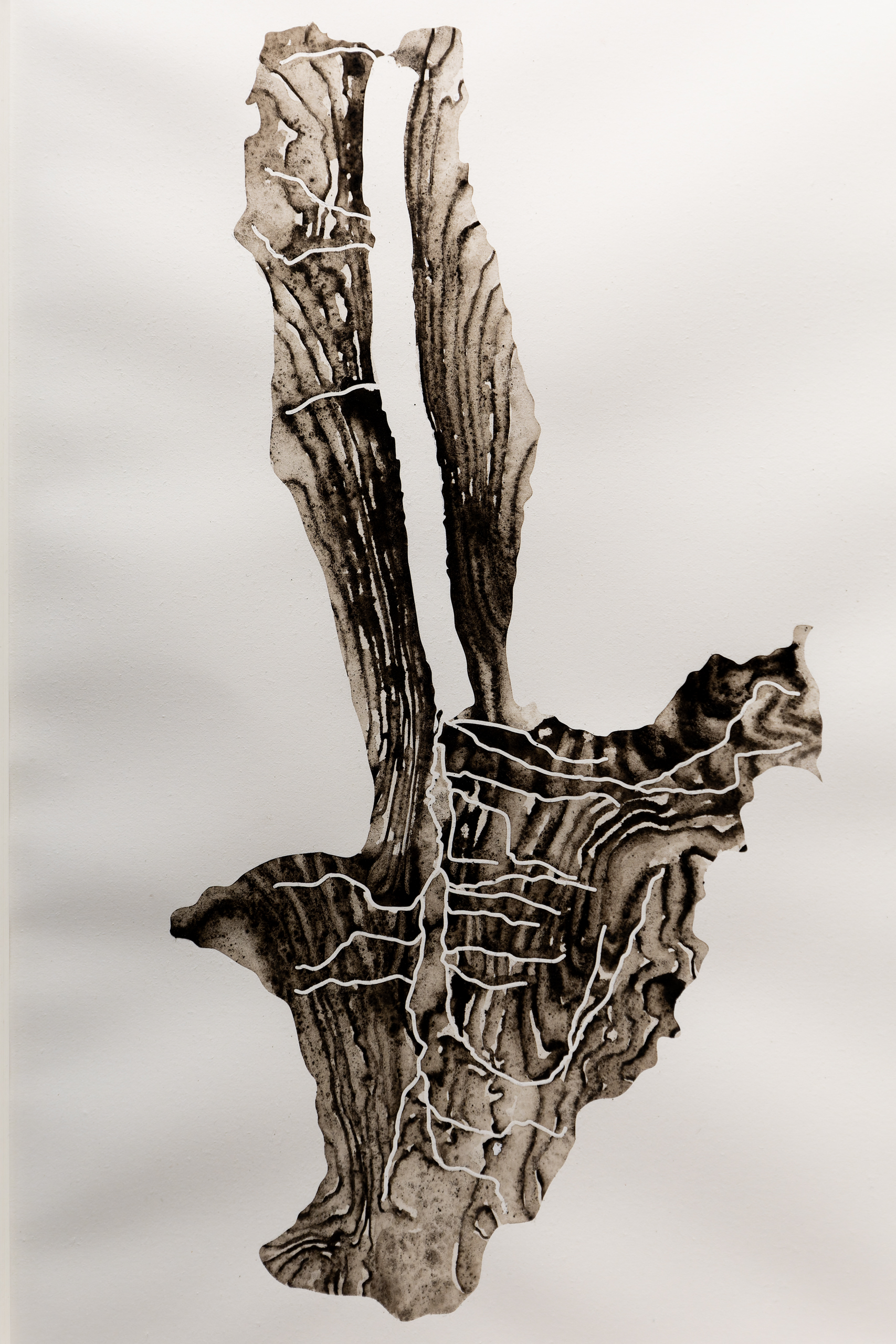
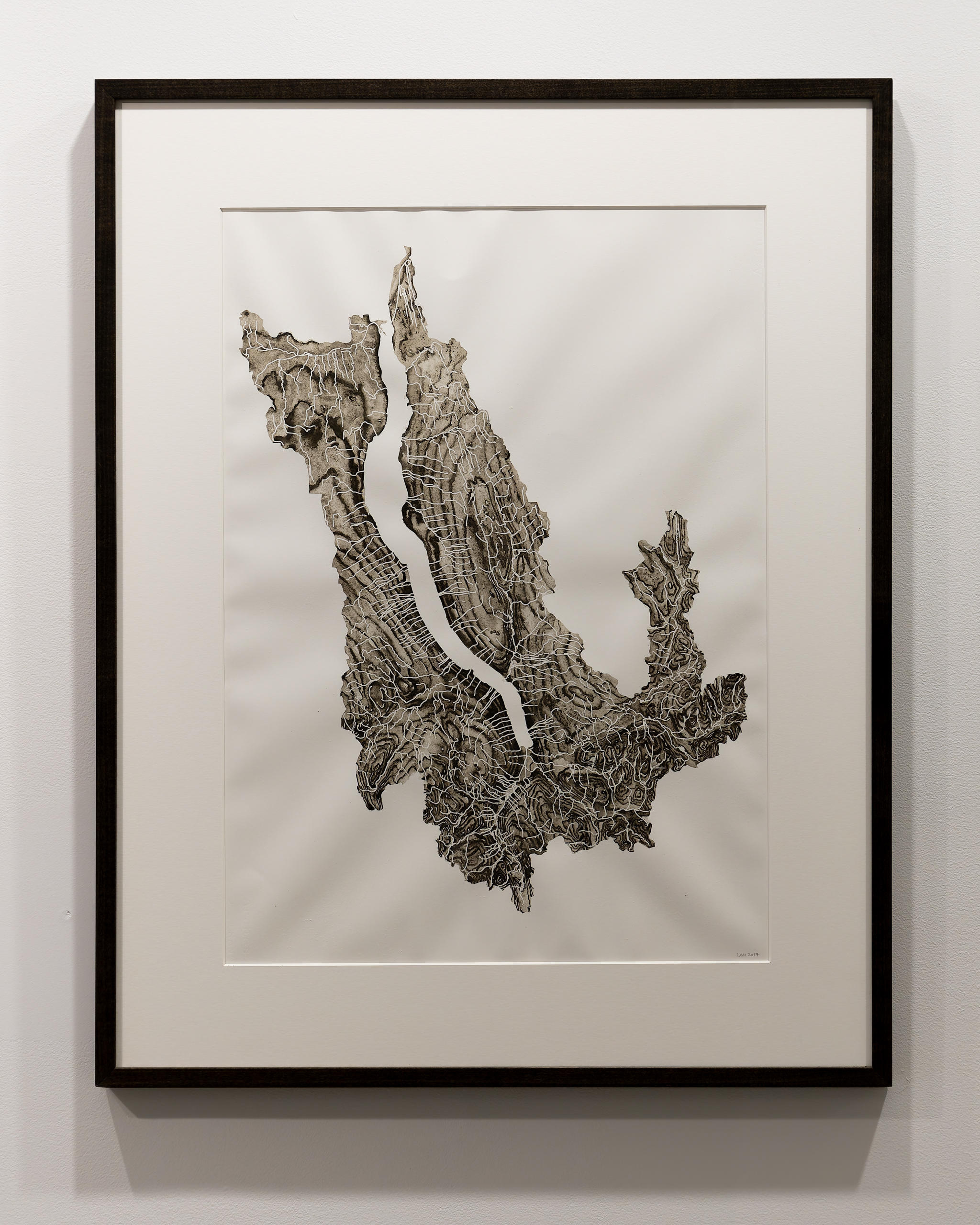
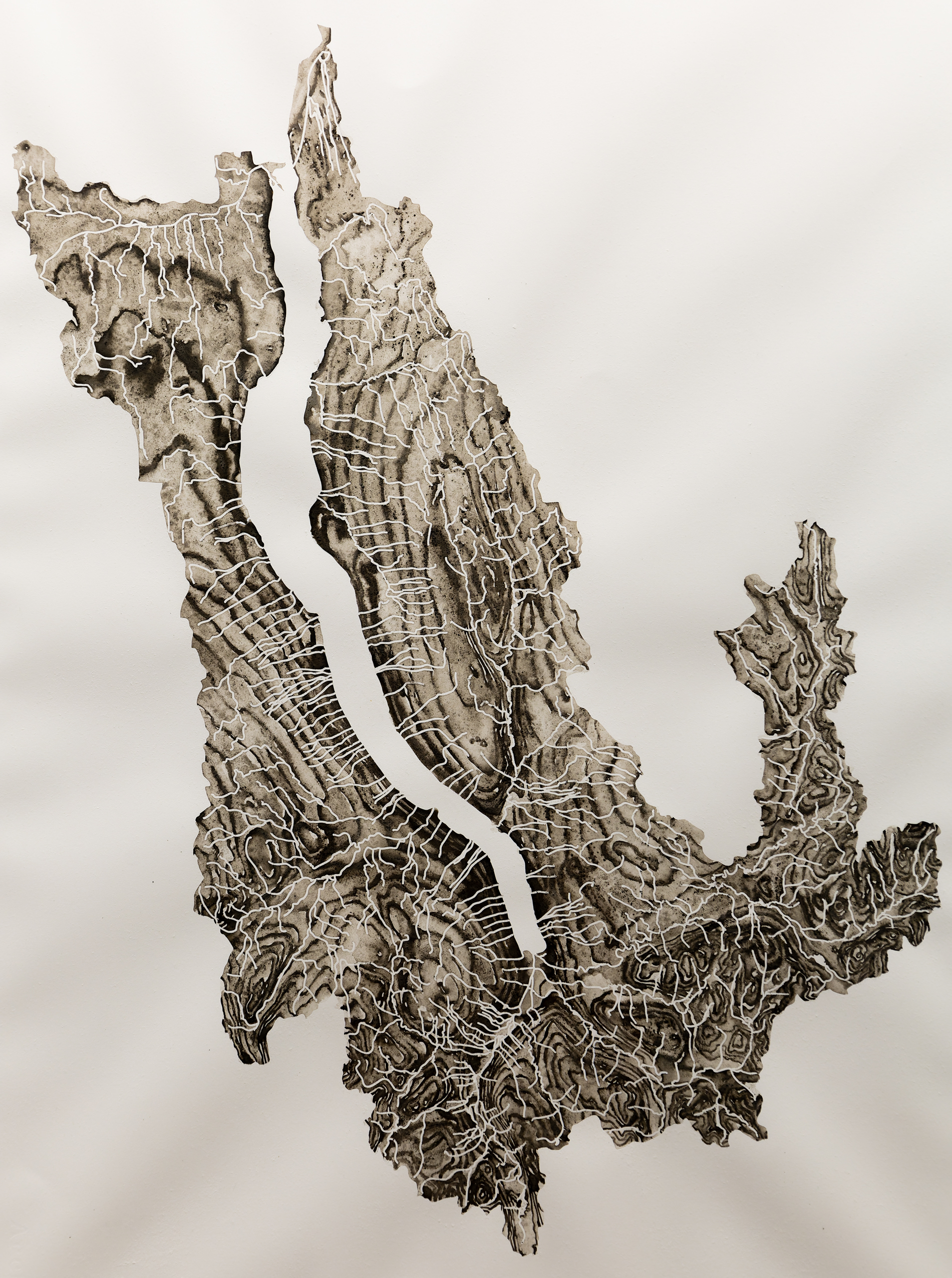

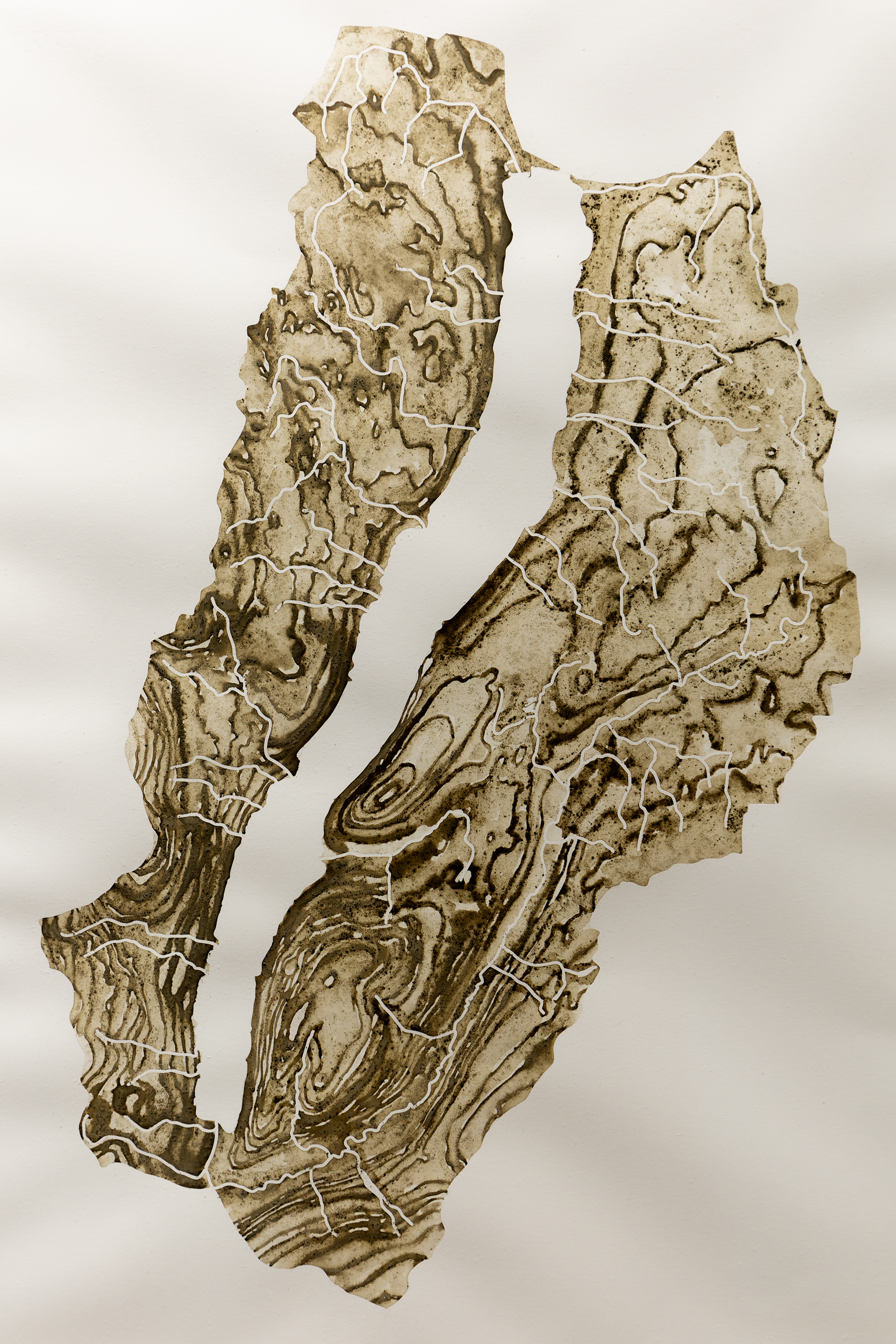
Overflow and Hollow
Hand-drawn animation projection, dome mirror
19.5 x 19.5 x 8.5” (Installation dimensions variable)
2-channel projections, black paint, graphite drawing, audio
5 minutes and 14 seconds on loop
The installation explores the power of water as a force of life, equality, and resistance. Water can trick boundaries, overcome them, no border is impenetrable to it. Human's desire to control water manifests in drawing borders, digging canals, building dams, legislating - trying to control the uncontrollable. It is the source of life and a purifying force. For me, it also evokes the turmoils and storms of the self. All of these are weaved together to think about who has control, and what can we do to redistribute it.
Music and audio design - Chanan Ben Simon. Voice: Chanan Ben Simon, Noa Fort, Renana Neuman.
Hand-drawn animation projection, dome mirror
19.5 x 19.5 x 8.5” (Installation dimensions variable)
2-channel projections, black paint, graphite drawing, audio
5 minutes and 14 seconds on loop
The installation explores the power of water as a force of life, equality, and resistance. Water can trick boundaries, overcome them, no border is impenetrable to it. Human's desire to control water manifests in drawing borders, digging canals, building dams, legislating - trying to control the uncontrollable. It is the source of life and a purifying force. For me, it also evokes the turmoils and storms of the self. All of these are weaved together to think about who has control, and what can we do to redistribute it.
Music and audio design - Chanan Ben Simon. Voice: Chanan Ben Simon, Noa Fort, Renana Neuman.


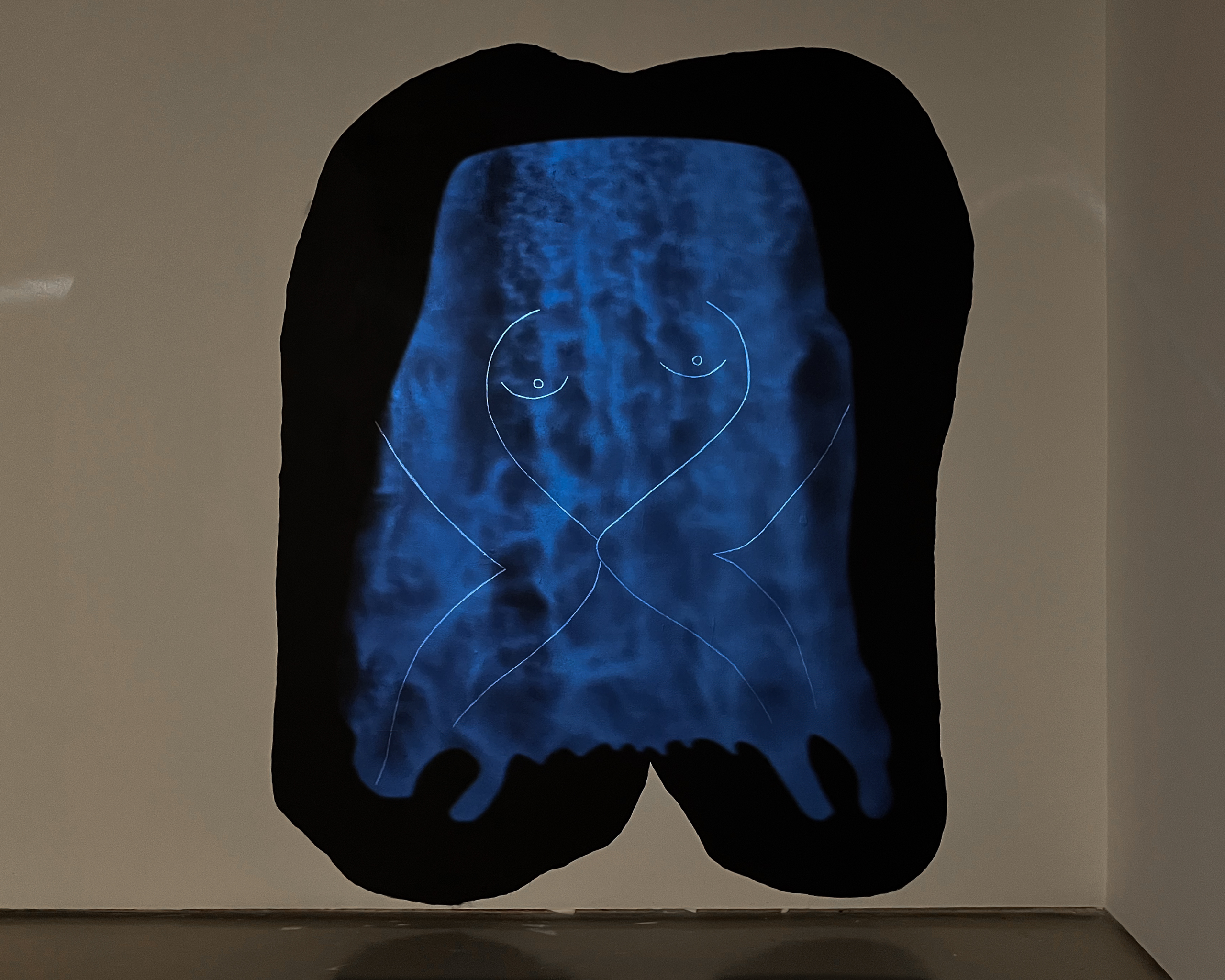
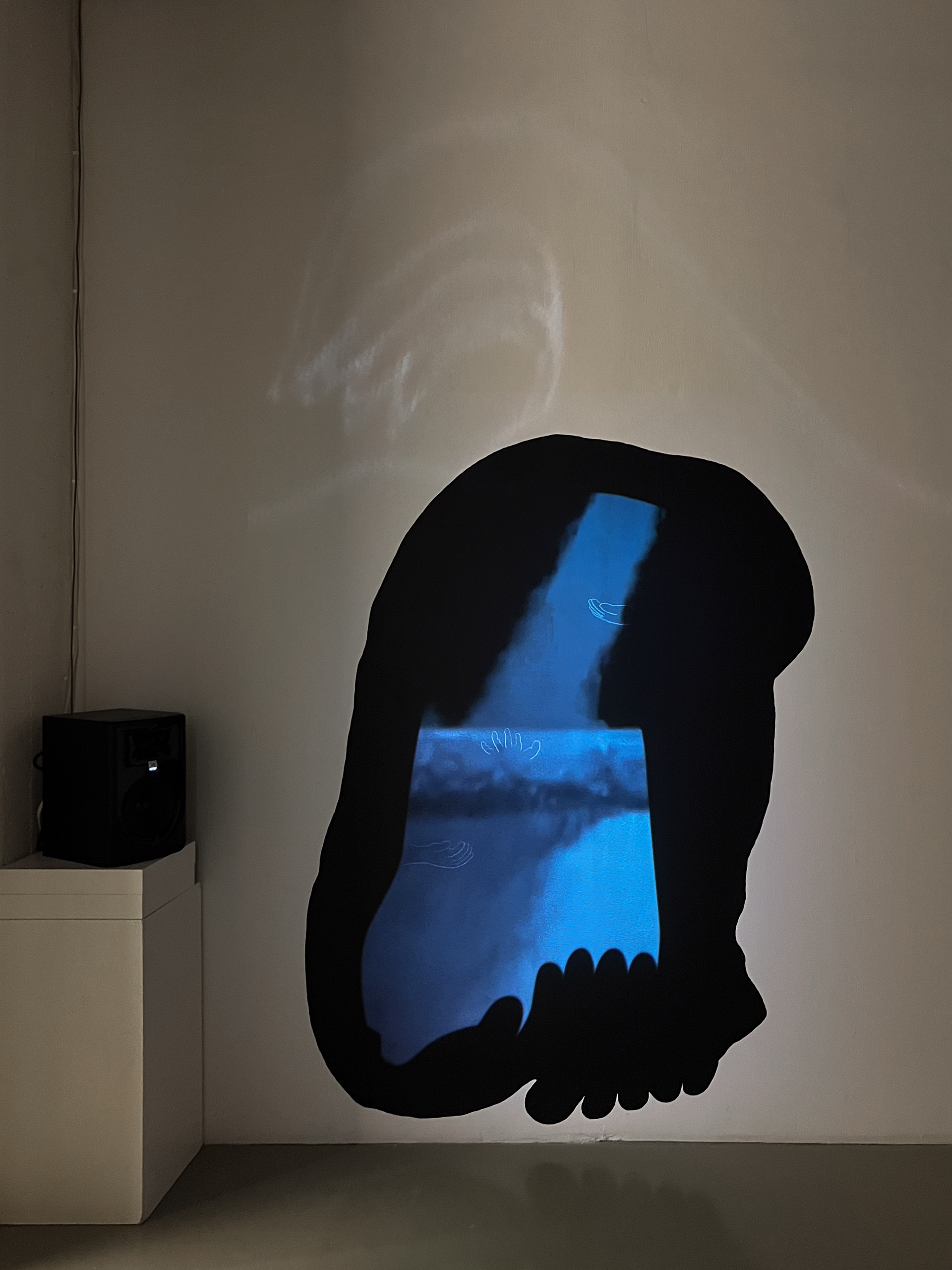
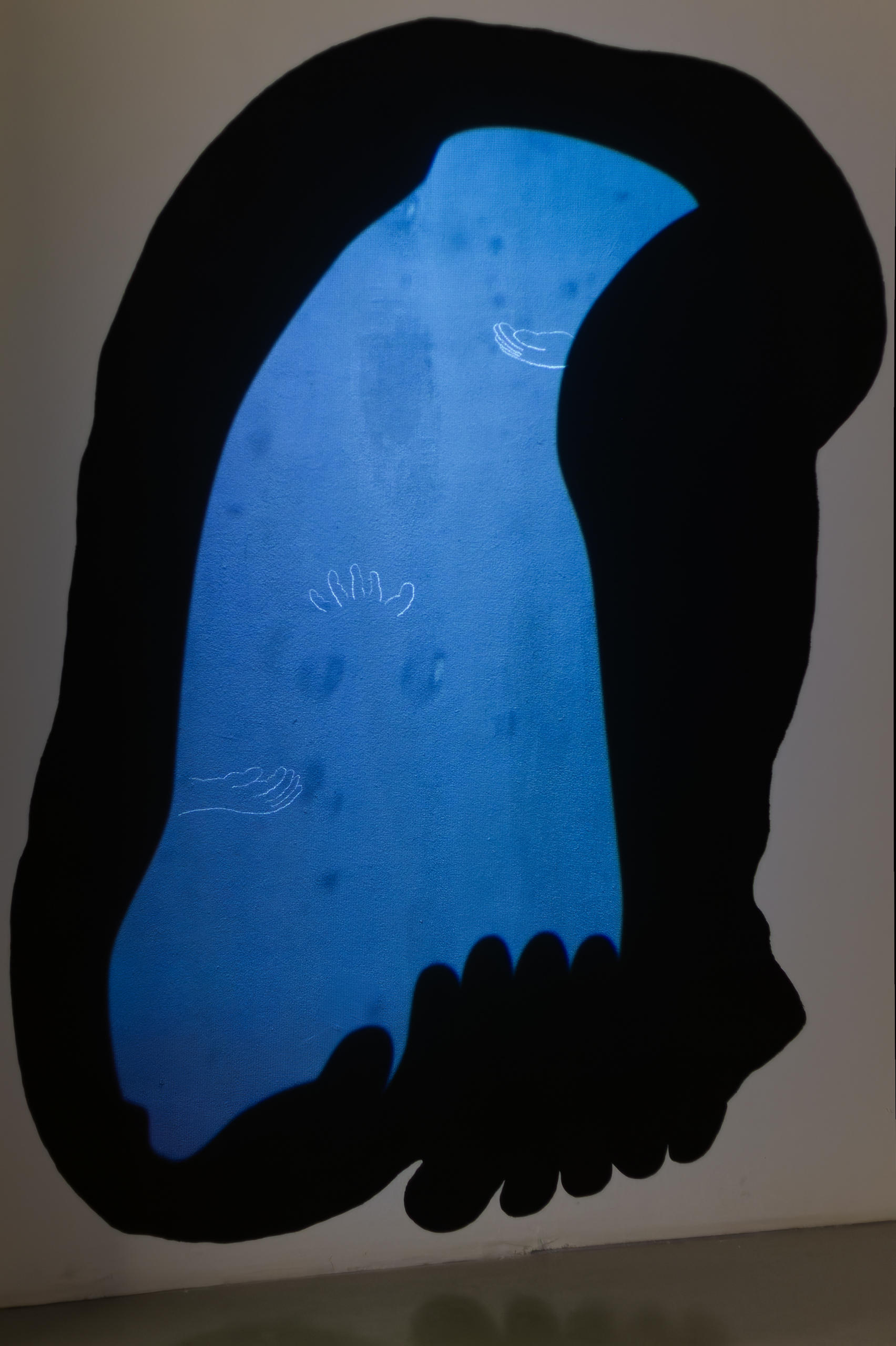
Spill in Newburgh
Pigment and ice on hand cut mylar, magnets, site specific wall work
Approx. 120 x 18 x 23” (Installation dimensions variable)
This wall-based sculpture consists of several identically shaped hand-made elements made from thin plastic, each cut with uniform cuts and each with paint eroded by ice and water across the surface. The work takes on different forms each time it is installed, with the pieces recycled and reused, then assembled and falling in different ways. For the artist, this mimics the fluidity of water and the way that the same mass of water can appear in different places across the world and in different forms.
Pigment and ice on hand cut mylar, magnets, site specific wall work
Approx. 120 x 18 x 23” (Installation dimensions variable)
This wall-based sculpture consists of several identically shaped hand-made elements made from thin plastic, each cut with uniform cuts and each with paint eroded by ice and water across the surface. The work takes on different forms each time it is installed, with the pieces recycled and reused, then assembled and falling in different ways. For the artist, this mimics the fluidity of water and the way that the same mass of water can appear in different places across the world and in different forms.

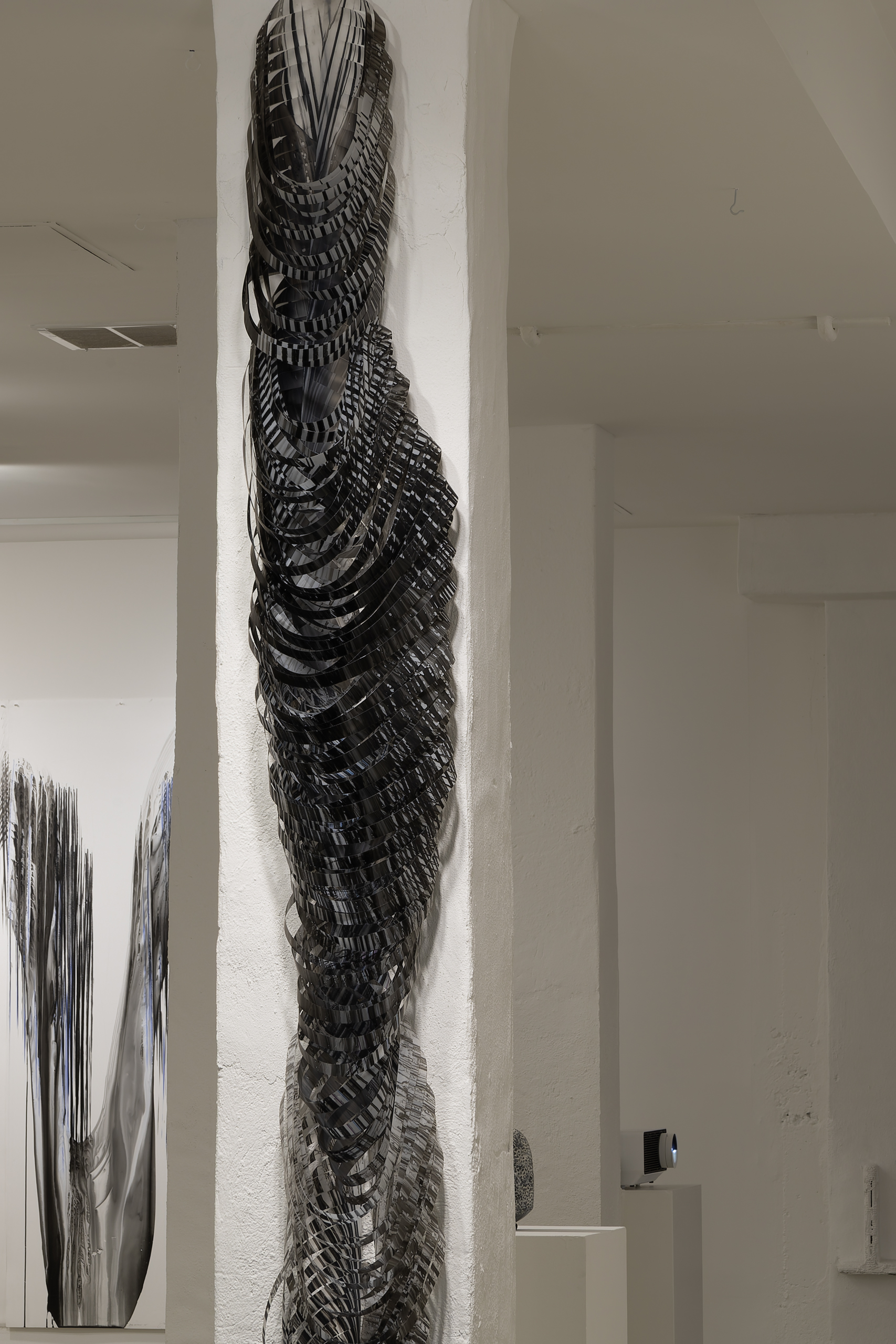
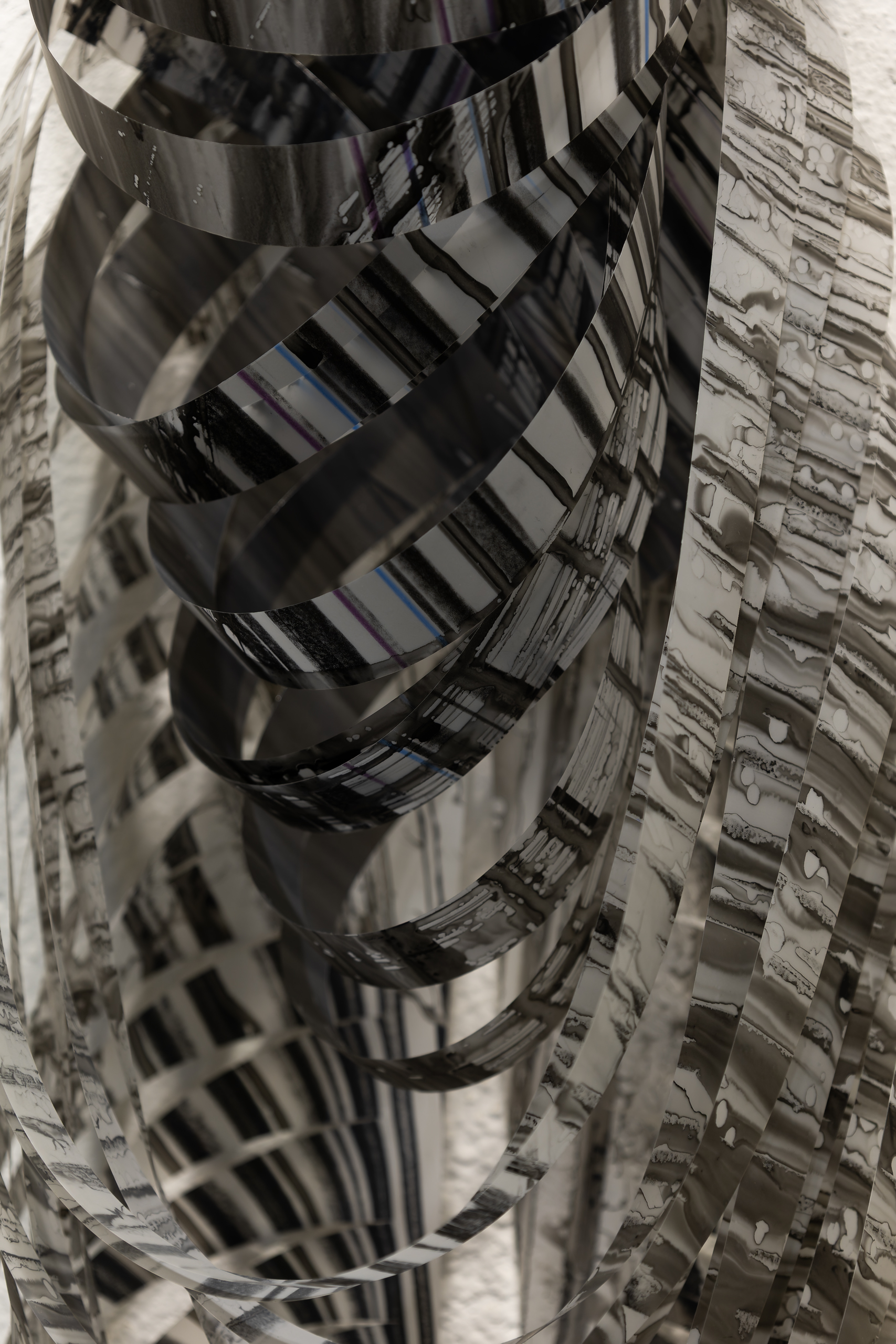
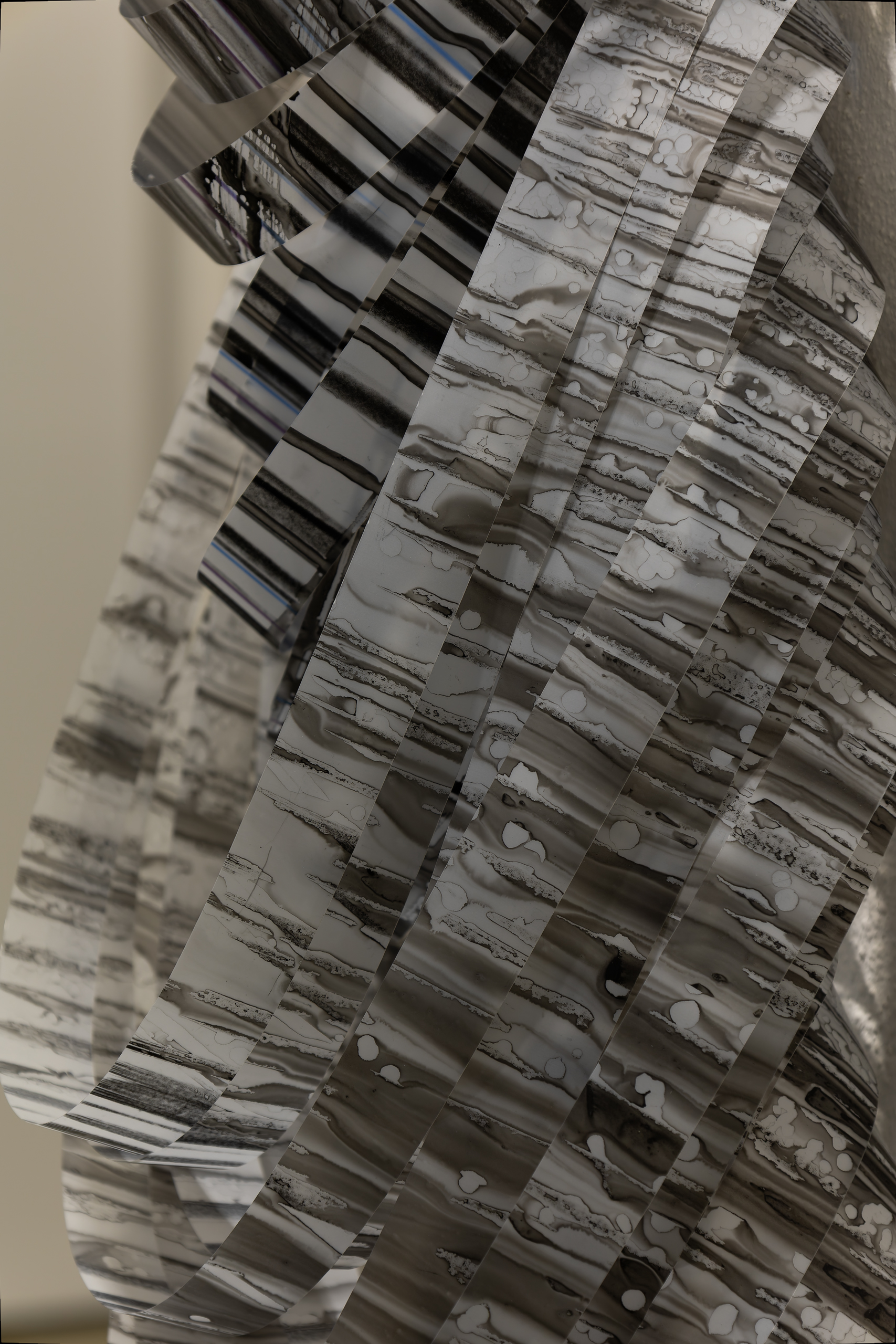

Ablation Zone 14-15-16
Pigment and ice on Yupo
80 x 90” (Three elements)
Ablation Zone series of drawings shares many elements with Peerna’s ongoing Glacier Elegy project. Each work in the series has been created with pigment pencils and ice. Peerna starts the drawings by first marking vertical pigment lines onto thin layer of plastic. She then methodically applies water or ice, causing the lines on the surface to melt and drip. There is an inherent natural element within the making of each work—the drawing only stops making itself when the water has dried. The ensuing drip marks on the works capture the moment when solid turns into liquid, drawing a visual parallel to the moment when ice melts into water. This series becomes a visual response to the witnessing of the rapid glacier melt around the earth due to the warming climate.
In the title the artist is pointing to the process of ablation of a glacier which refers to all processes that remove mass from a glacier.
Pigment and ice on Yupo
80 x 90” (Three elements)
Ablation Zone series of drawings shares many elements with Peerna’s ongoing Glacier Elegy project. Each work in the series has been created with pigment pencils and ice. Peerna starts the drawings by first marking vertical pigment lines onto thin layer of plastic. She then methodically applies water or ice, causing the lines on the surface to melt and drip. There is an inherent natural element within the making of each work—the drawing only stops making itself when the water has dried. The ensuing drip marks on the works capture the moment when solid turns into liquid, drawing a visual parallel to the moment when ice melts into water. This series becomes a visual response to the witnessing of the rapid glacier melt around the earth due to the warming climate.
In the title the artist is pointing to the process of ablation of a glacier which refers to all processes that remove mass from a glacier.

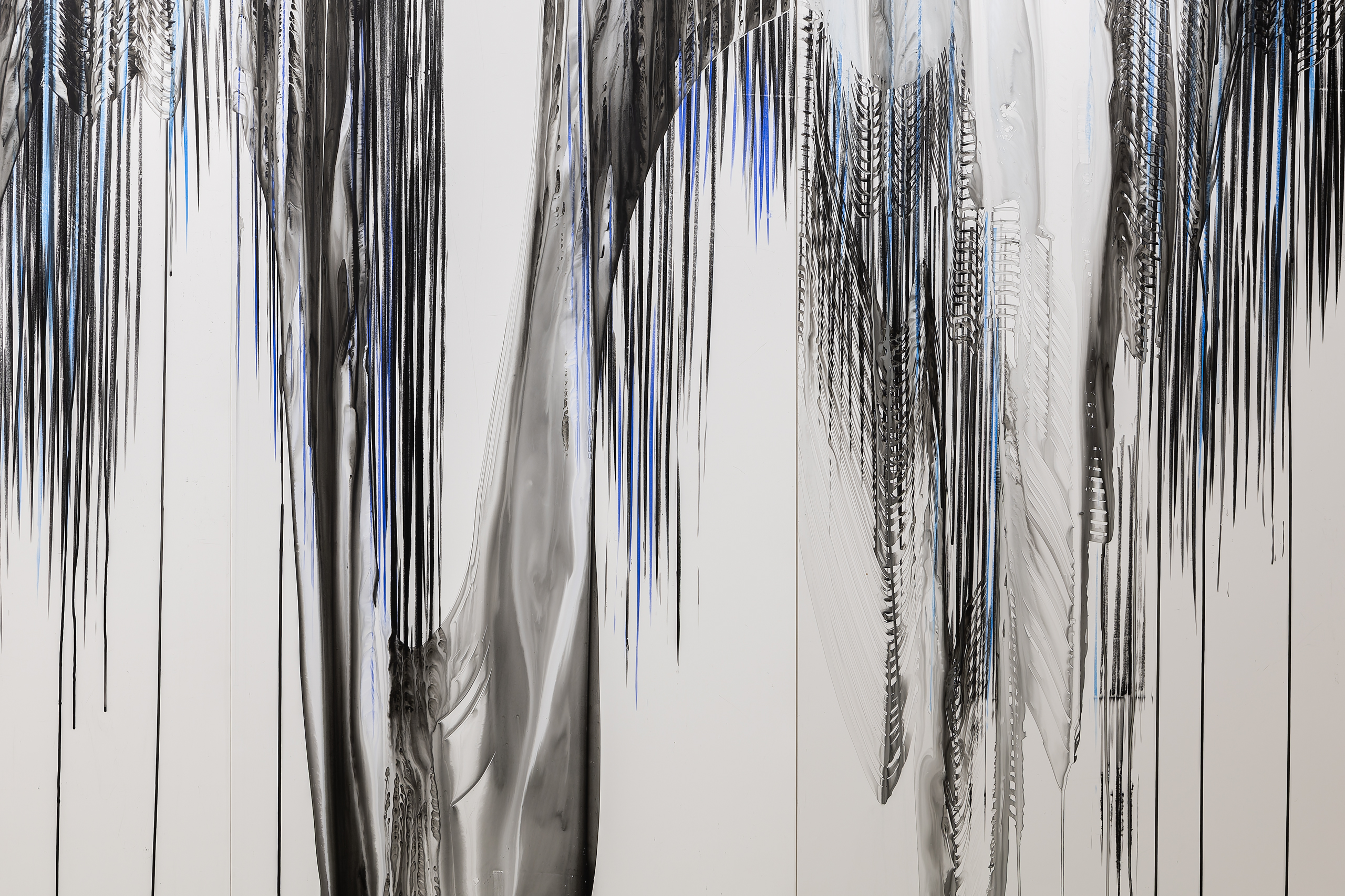
Glacial Ooze Newburgh
Pigment and ice on hand cut mylar, magnets
50 x 28 x 9”
This wall-based sculpture consists of two identically shaped hand-made elements made from thin plastic, each cut with uniform cuts and each with paint eroded by ice and water across the surface. The work takes on different forms each time it is installed, with the pieces recycled and reused, then assembled and falling in different ways.
Pigment and ice on hand cut mylar, magnets
50 x 28 x 9”
This wall-based sculpture consists of two identically shaped hand-made elements made from thin plastic, each cut with uniform cuts and each with paint eroded by ice and water across the surface. The work takes on different forms each time it is installed, with the pieces recycled and reused, then assembled and falling in different ways.

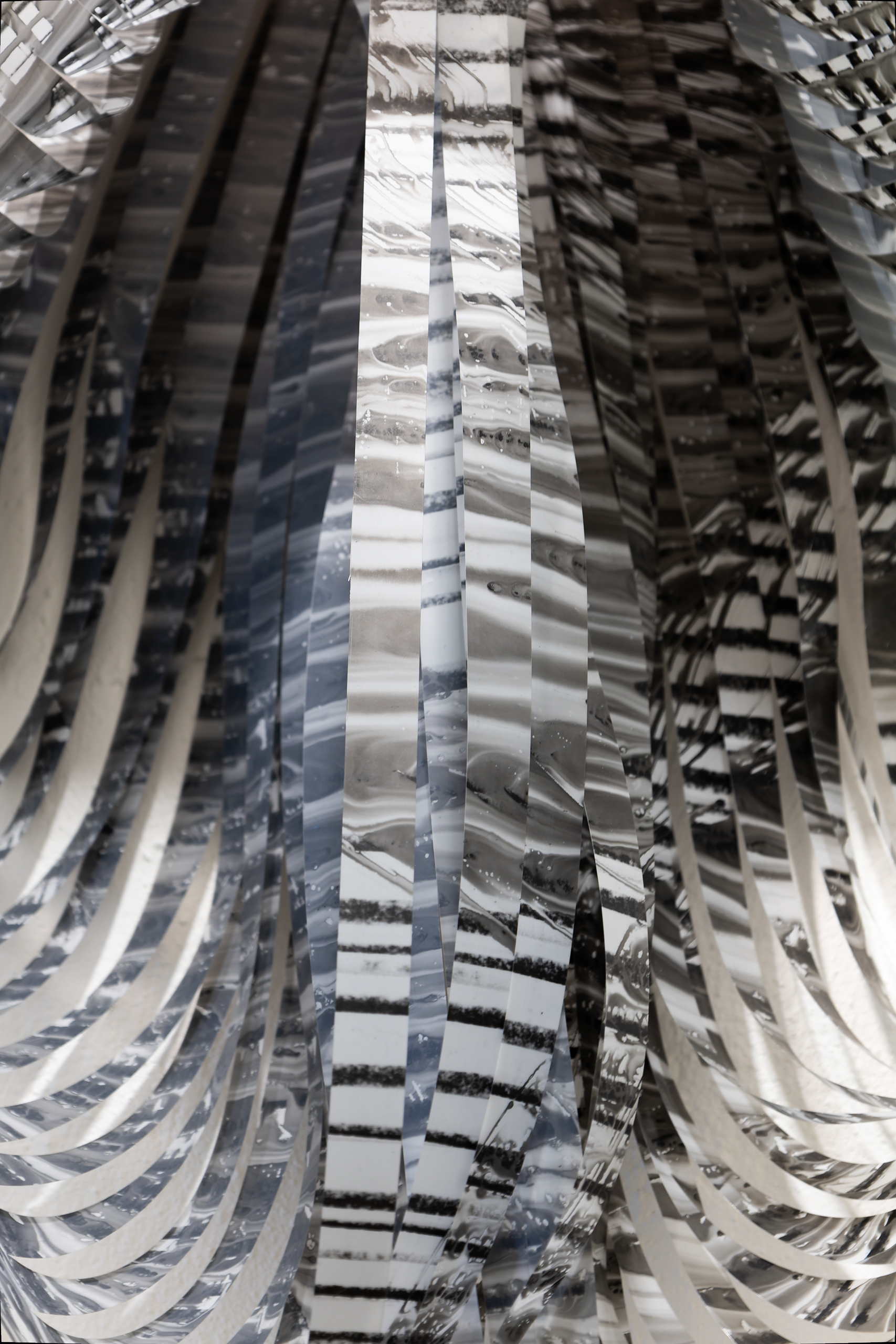
pieces of place
Polystyrene, epoxy clay, white dirt, twine, found metal, brass beads, nylon, fibers
Dimensions variable
Art allows me to collect “pieces of place.” As a Rwandan artist living outside my place of birth, I use art to process physical dislocation and cultural disorientation. My sculptures are carved out of foam blocks and covered with black epoxy clay. The surface is then manipulated to create a range of textures using a combination of molds, wet sanding, dry filing, burnishing and so on.
Molds are a method for finding “pieces of place” and include molds of fruit from the Global South bought Stateside, like jackfruit and bitter melon. Layers of white dirt are adhered throughout this process to achieve the look and feel of the passage of time. These new objects strengthen my understanding of home.
Polystyrene, epoxy clay, white dirt, twine, found metal, brass beads, nylon, fibers
Dimensions variable
Art allows me to collect “pieces of place.” As a Rwandan artist living outside my place of birth, I use art to process physical dislocation and cultural disorientation. My sculptures are carved out of foam blocks and covered with black epoxy clay. The surface is then manipulated to create a range of textures using a combination of molds, wet sanding, dry filing, burnishing and so on.
Molds are a method for finding “pieces of place” and include molds of fruit from the Global South bought Stateside, like jackfruit and bitter melon. Layers of white dirt are adhered throughout this process to achieve the look and feel of the passage of time. These new objects strengthen my understanding of home.




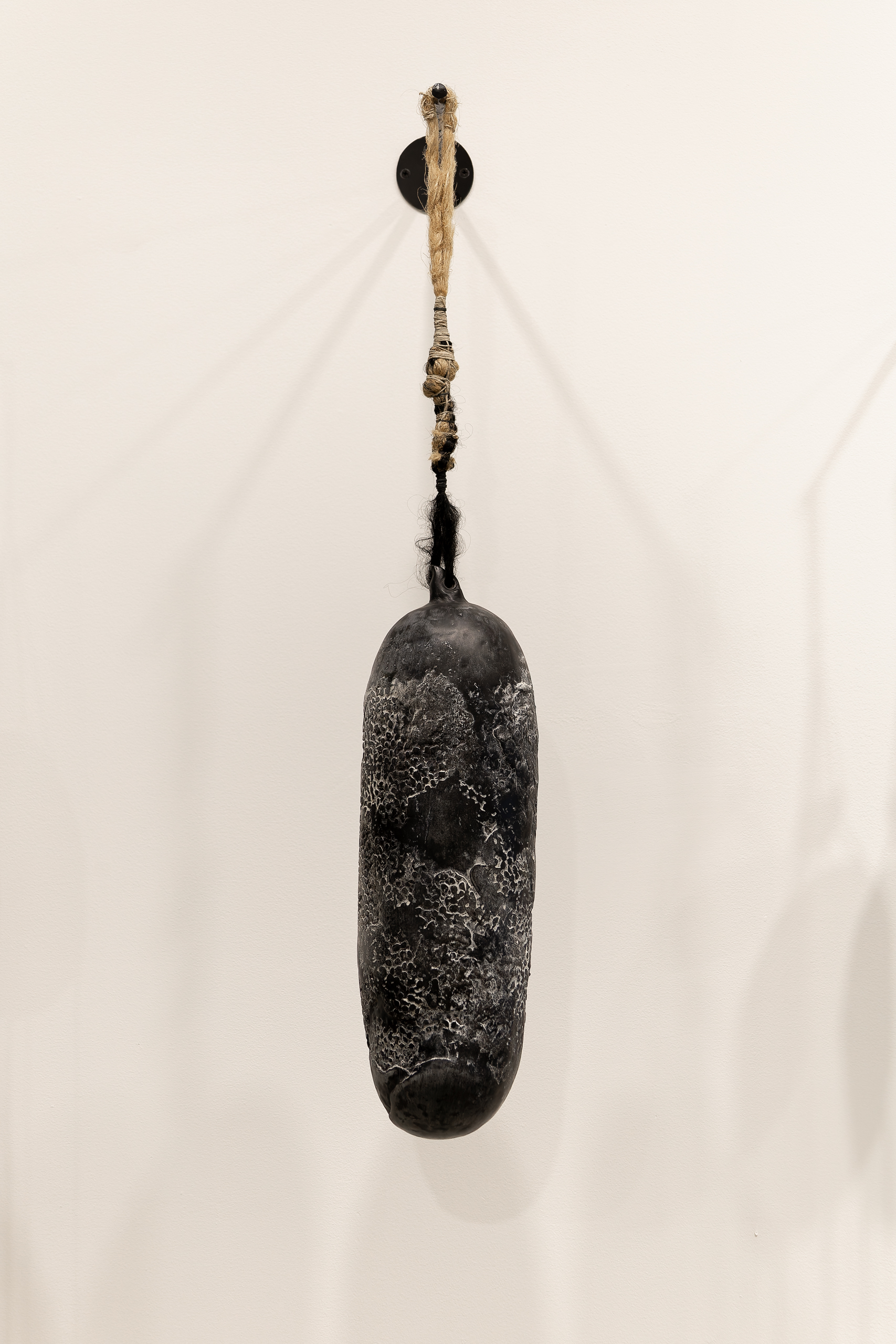




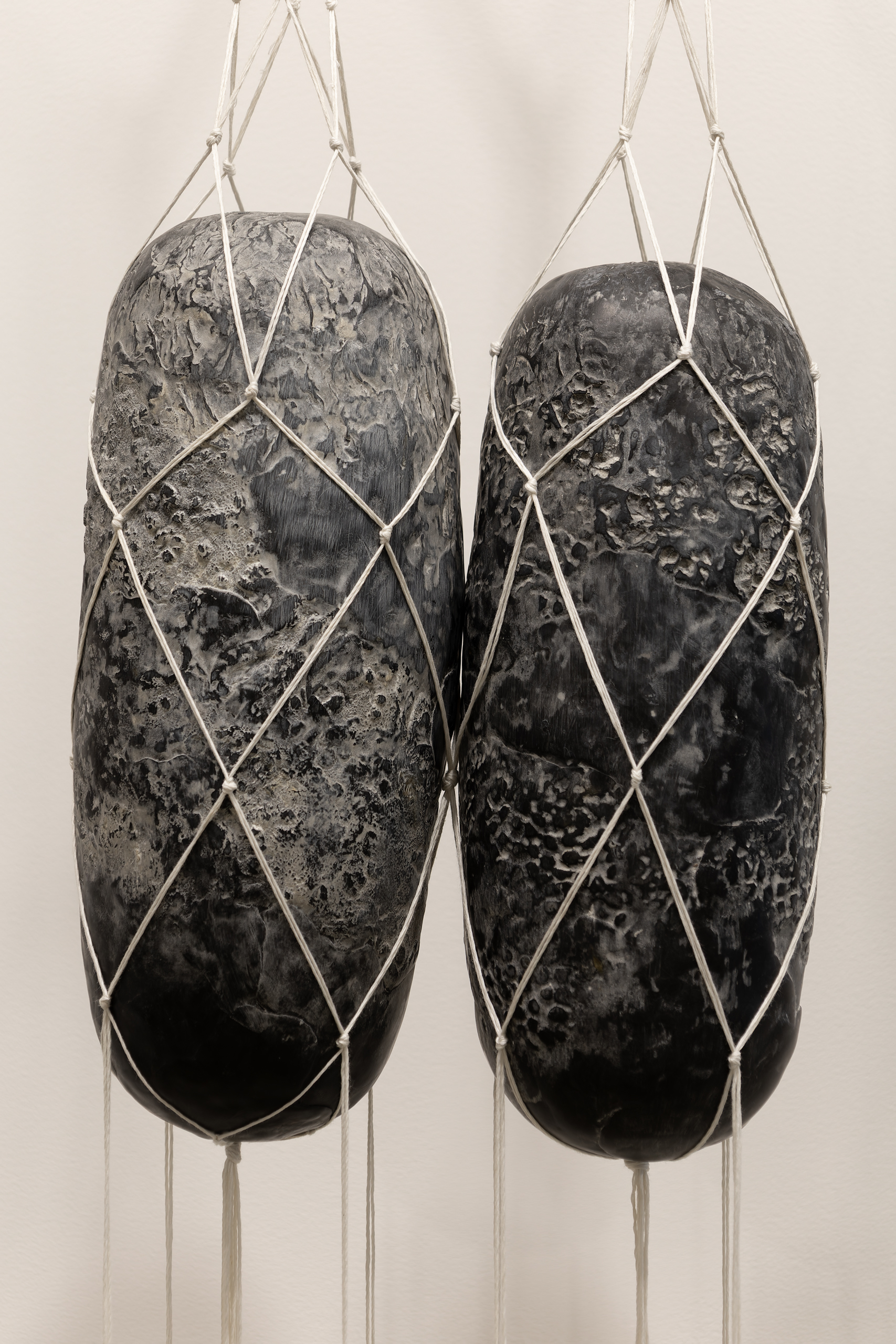
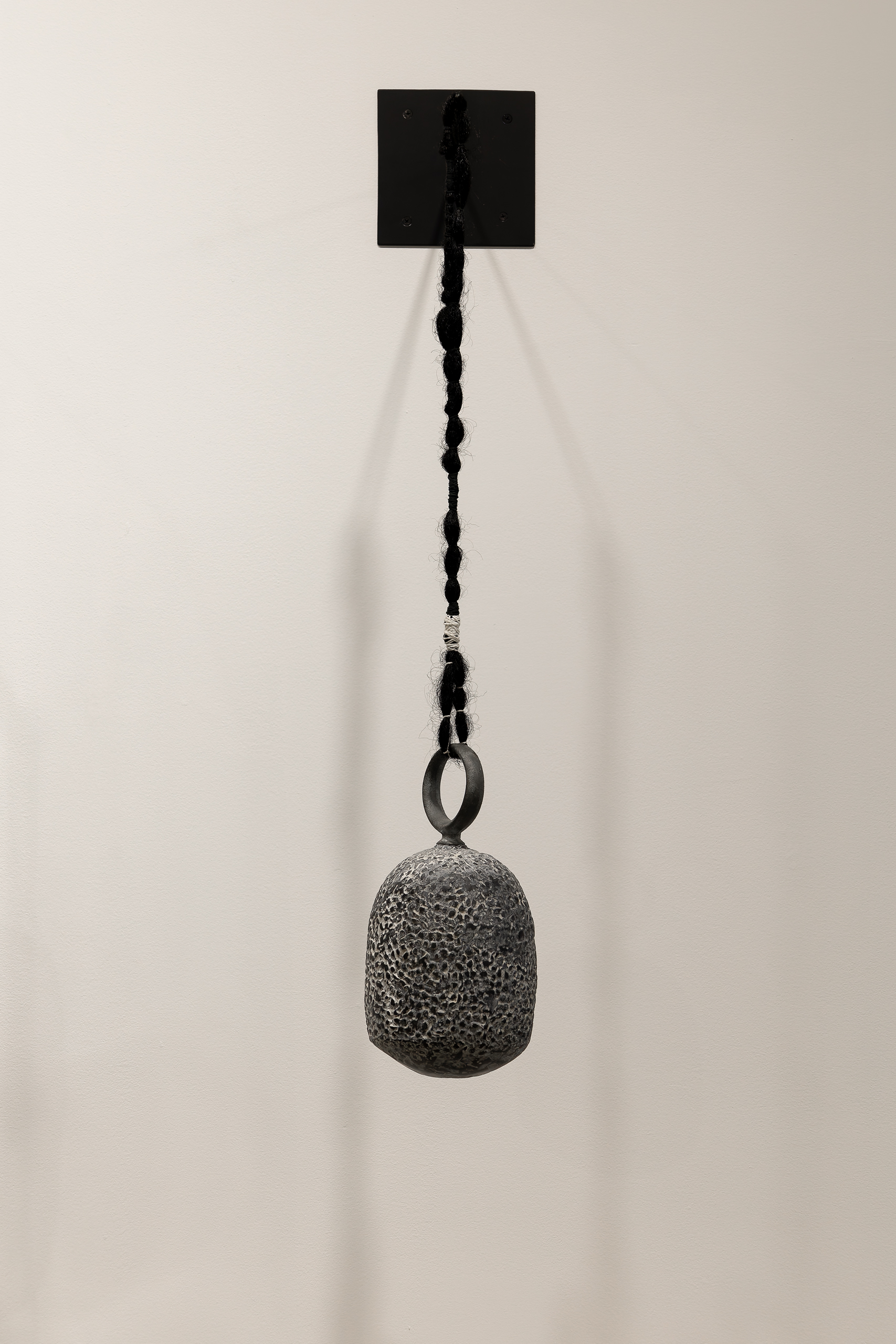


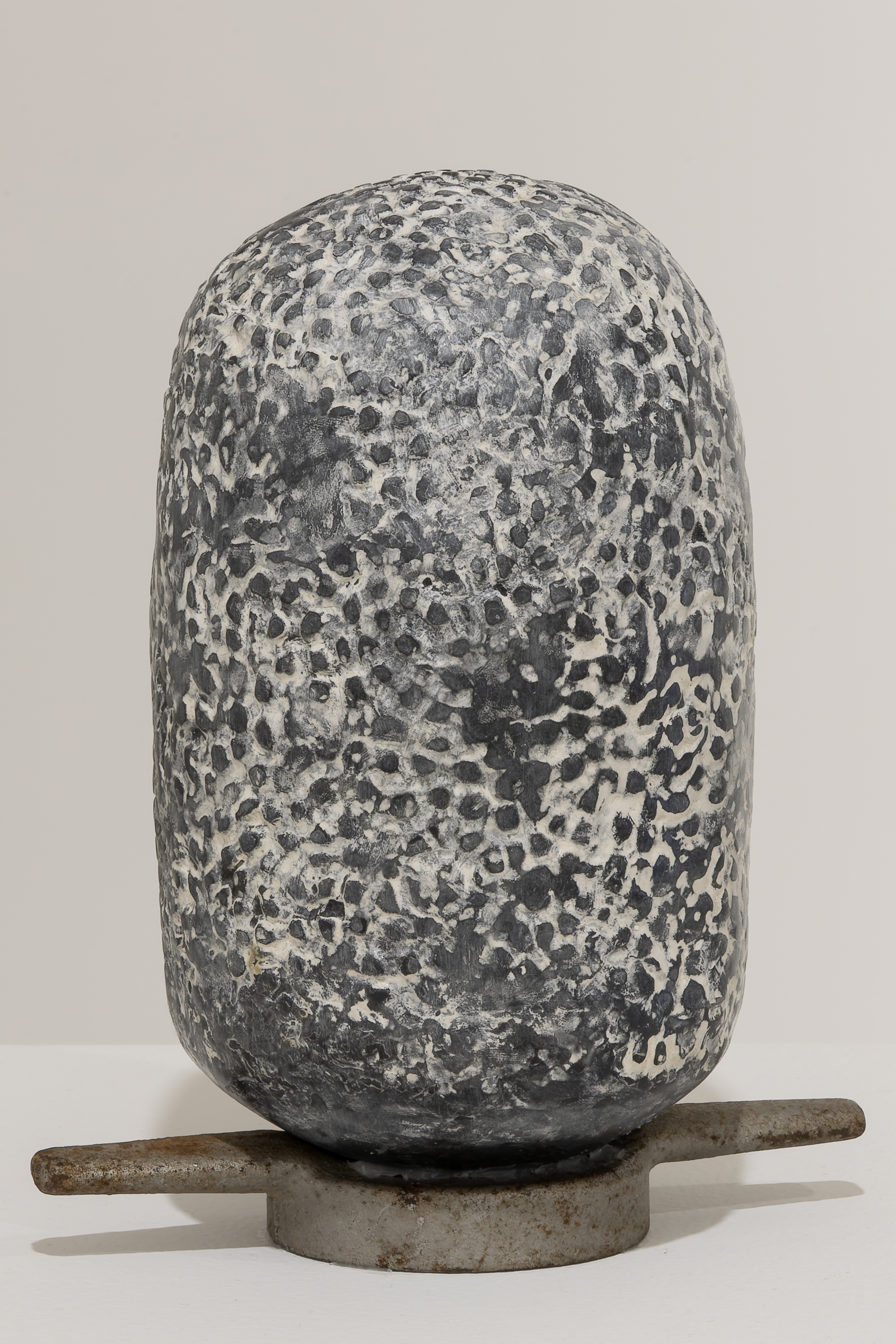
Origins 1 and Origins 2
Charcoal on Arches paper
52 x 36"
Origins 1 and 2 are pictures of both a specific site and an allegory of human positioning in space and time. The Catskill region, now well known for its desirability as a vacation destination, recreation spot, cultural center and real estate market, has a long, interconnected history as a site of production: stone, lumber, furs, food, and the romantic landscape painting of the Hudson River School. It was inhabited, utilized and embodied specific meaning for indigenous people for thousands of years. The mountains themselves were created over millennia during the Devonian period (419- 358 million years ago) from the erosion and uprising of another mountain range on the shores of a vast inland sea. At the edges of this sea the first plants emerged from the water, greening the earth and developing the proto trees which afforested the planet, absorbing carbon dioxide and cooling the atmosphere.
What does it mean to engage with landscape as an artist now? This place, with its layering of larger-than-human timescale, art history, municipal function and personal experience, is emblematic of that investigation. It contains multiple narratives while refusing subjective historical landscape motifs. The drawings are an invitation to consider our position in relation to the world around us, offering a space to enter into and be absorbed, rather than a scene to be looked at from across the divide.
Charcoal on Arches paper
52 x 36"
Origins 1 and 2 are pictures of both a specific site and an allegory of human positioning in space and time. The Catskill region, now well known for its desirability as a vacation destination, recreation spot, cultural center and real estate market, has a long, interconnected history as a site of production: stone, lumber, furs, food, and the romantic landscape painting of the Hudson River School. It was inhabited, utilized and embodied specific meaning for indigenous people for thousands of years. The mountains themselves were created over millennia during the Devonian period (419- 358 million years ago) from the erosion and uprising of another mountain range on the shores of a vast inland sea. At the edges of this sea the first plants emerged from the water, greening the earth and developing the proto trees which afforested the planet, absorbing carbon dioxide and cooling the atmosphere.
What does it mean to engage with landscape as an artist now? This place, with its layering of larger-than-human timescale, art history, municipal function and personal experience, is emblematic of that investigation. It contains multiple narratives while refusing subjective historical landscape motifs. The drawings are an invitation to consider our position in relation to the world around us, offering a space to enter into and be absorbed, rather than a scene to be looked at from across the divide.

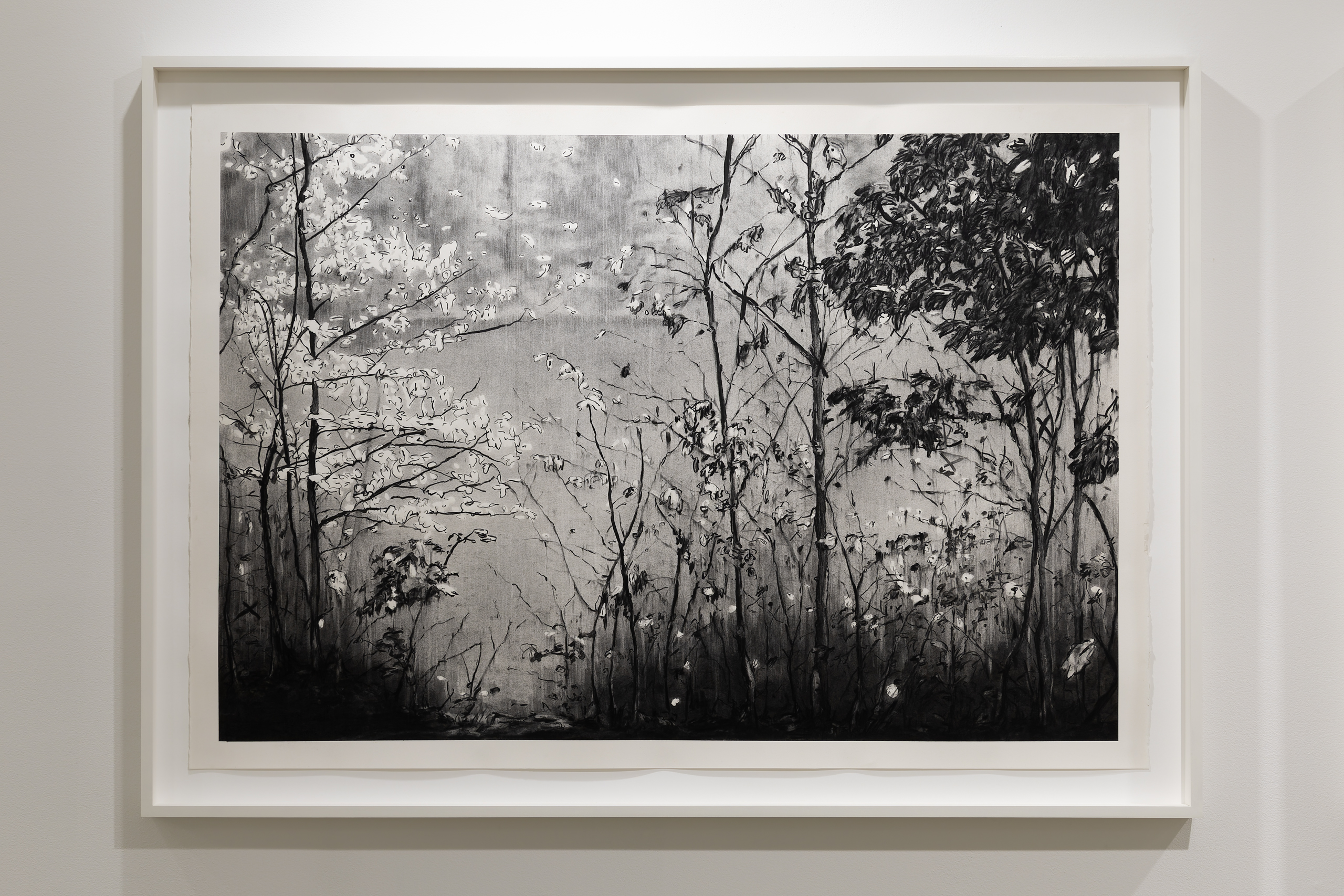
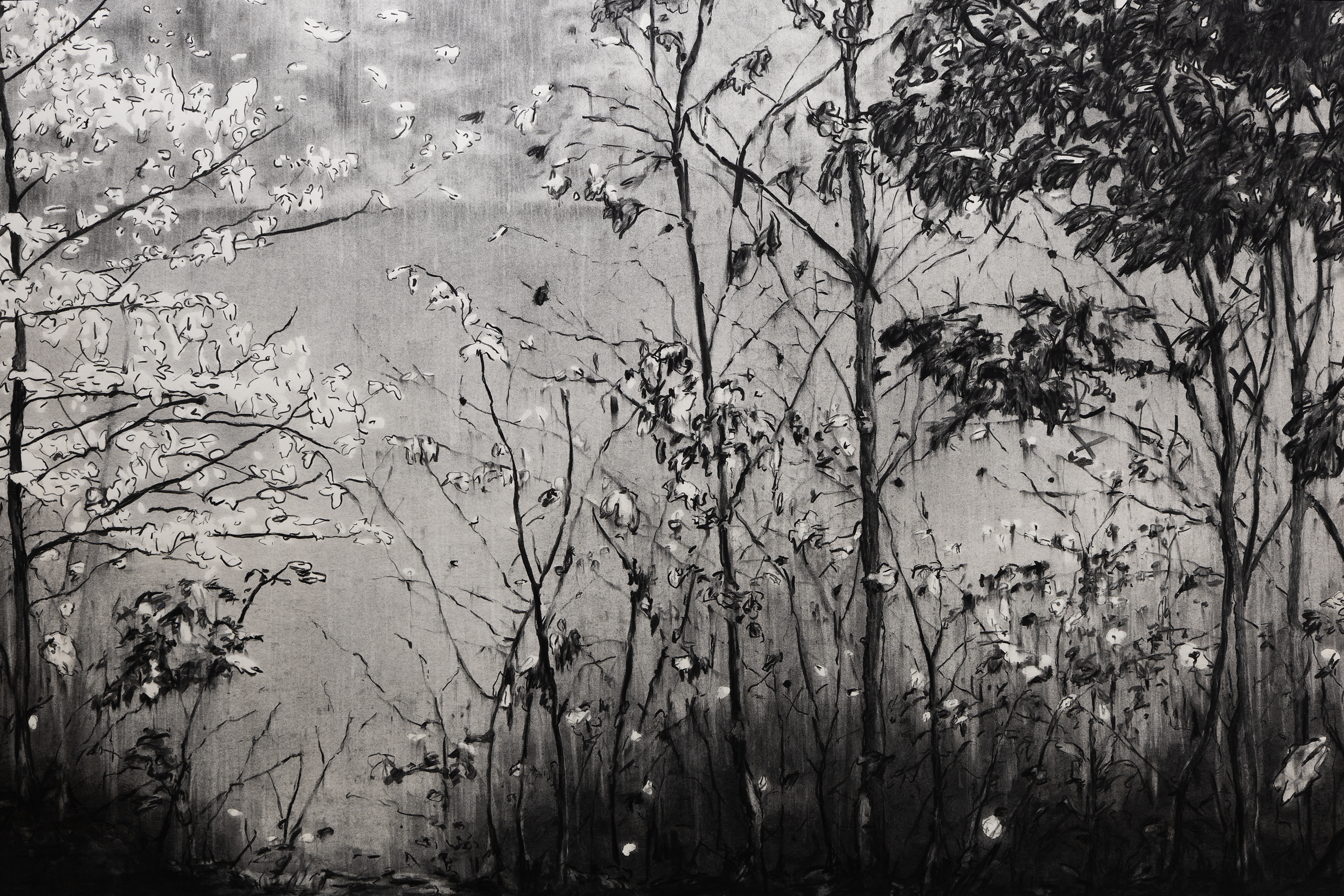

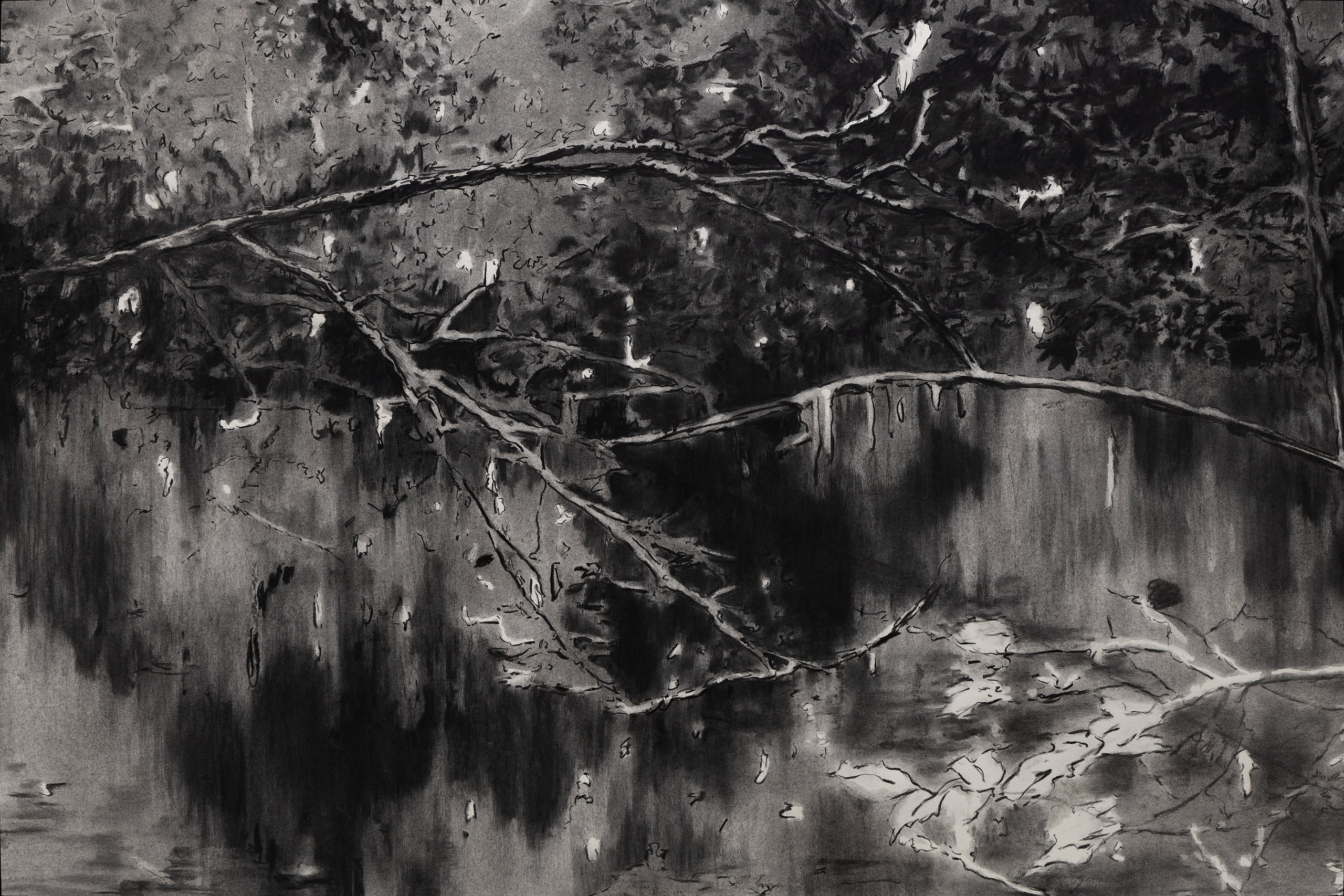
36.5 / New York Estuary
|
Live performance and durational video artwork 12 hours and 39 minutes Site-specific participatory performance, multi-channel HD durational video work with audio Ninth and final work in the series, 36.5 / A Durational Performance with the Sea (2013 - 2022) Artist Sarah Cameron Sunde stands in a tidal bay for a full tidal cycle, 12-13 hours, as water engulfs her body and then reveals it again. The public joins her. What began in 2013 as a poetic response to Hurricane Sandy’s impact on New York City grew into a complex, evolving series of participatory artworks involving thousands of people in communities around the world. Spanning nine years and six continents, Sunde's 36.5 series of nine works invites audiences to have a radically embodied experience with the sea, engaging them in conversations about deep time, sea-level rise, white-settler colonialism, and our contemporary relationship with water – as individuals, in community, as a civilization and as a species. The international performances were filmed in real-time in collaboration with a local film team, and subsequently turned into durational video artworks that are the same length as each performance. For this final work, Sunde returned to her home in New York City, and spent three years building a community-engaged process based at The Cove in Astoria, Queens. Over 175 people joined her to stand in the East River on September 14, 2022, with thousands watching from the shore and on the livestream which was broadcast around the city and world. At the same time, Sunde's 36.5 teams in the Netherlands, Bangladesh, Brazil, Kenya, and Aotearoa-New Zealand created satellite performances by standing in their local waters. 36.5 / New York Estuary was made in partnership with Works on Water, The Climate Museum, Arts Brookfield, Theater Mitu, New York University / The Skirball Center, Socrates Sculpture Park, Kin to the Cove, and many individuals. For a full list of contributors and more information, please see www.36pt5.org. |



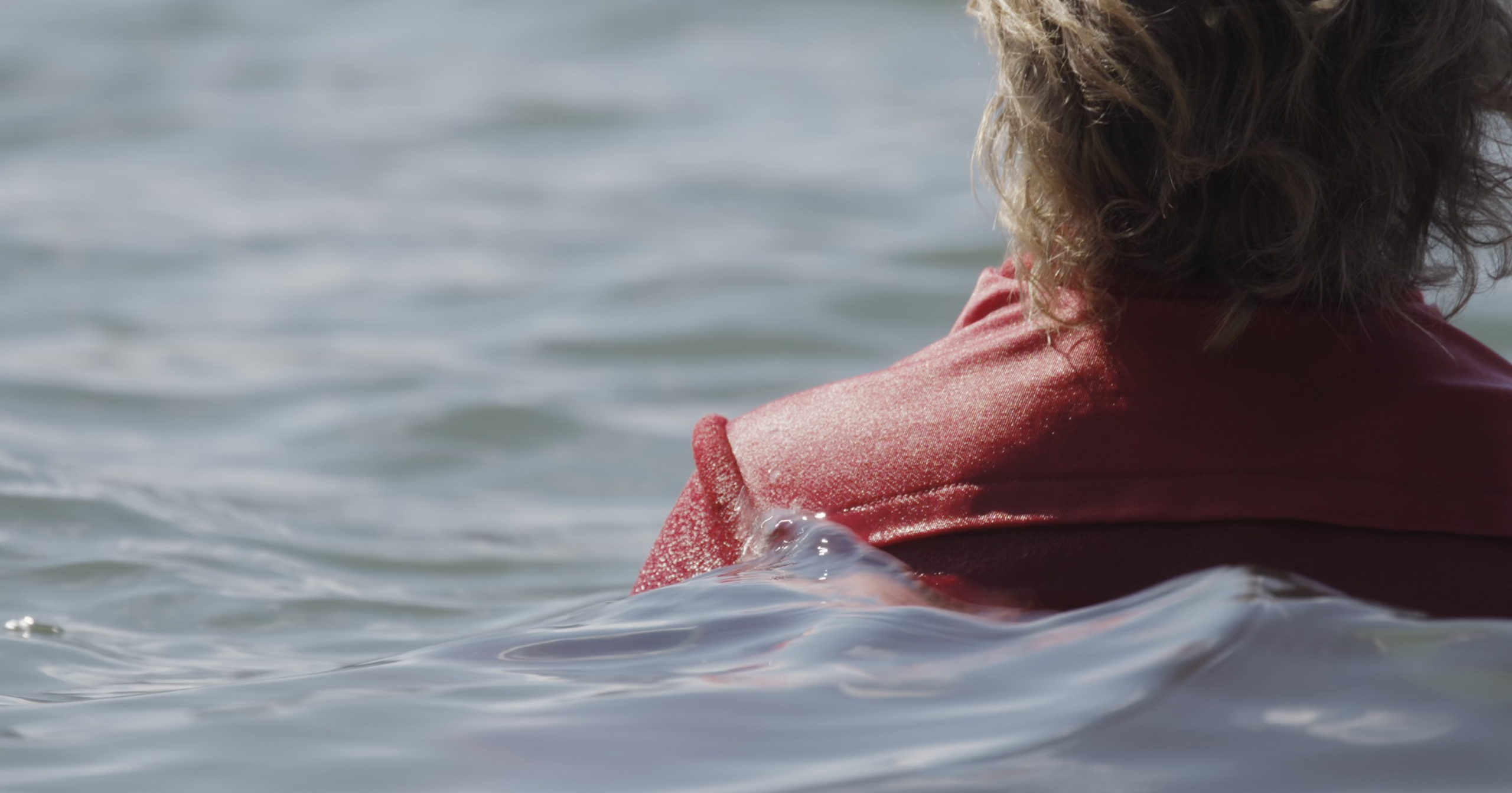
STAND ON THE EDGE AND
FACE THE SEA
Optional instructions for participation when viewing this durational video work
Welcome to the Water.
Find a spot to stand or sit in the space.
Face the Sea.
You are there at the edge, where Land meets Sea.
Imagine Water rising slowly on your own body.
Let it in.
Stay in this spot long enough to feel a shift.
Take a break when you need it.
Walk around the gallery or to the closest body of water to where you stand now.
When you come back, notice how the Water levels have changed.
FACE THE SEA
Optional instructions for participation when viewing this durational video work
Welcome to the Water.
Find a spot to stand or sit in the space.
Face the Sea.
You are there at the edge, where Land meets Sea.
Imagine Water rising slowly on your own body.
Let it in.
Stay in this spot long enough to feel a shift.
Take a break when you need it.
Walk around the gallery or to the closest body of water to where you stand now.
When you come back, notice how the Water levels have changed.
Indigo Series
Inks and water on Fabriano paper
12 x 12” (Framed)
14 x 18” (Framed)
14 x 18” (Framed)
The Indigo Series conjures water’s fluidity and structure, translucency, and unpredictability. There is a dance of intention and chance between elemental happenings and gestures from my hand. Liquid indigo surrenders to evaporation, air, breath, and gravity, shifting from its initial place. The ink pieces may gesture to exuberance or grief, considering water as the source of life and nourishment, as well as cataclysmic devastation.
Inks and water on Fabriano paper
12 x 12” (Framed)
14 x 18” (Framed)
14 x 18” (Framed)
The Indigo Series conjures water’s fluidity and structure, translucency, and unpredictability. There is a dance of intention and chance between elemental happenings and gestures from my hand. Liquid indigo surrenders to evaporation, air, breath, and gravity, shifting from its initial place. The ink pieces may gesture to exuberance or grief, considering water as the source of life and nourishment, as well as cataclysmic devastation.

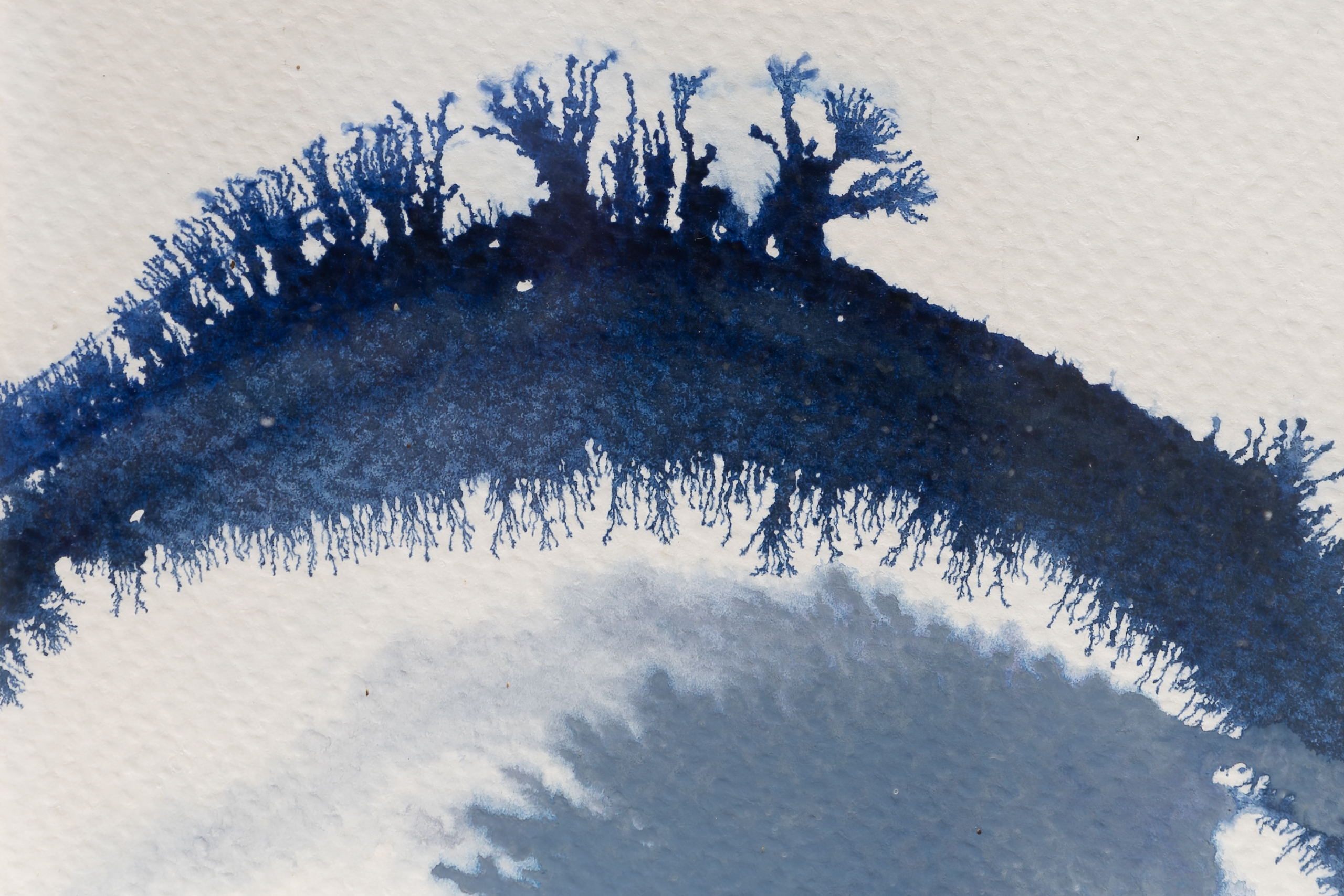

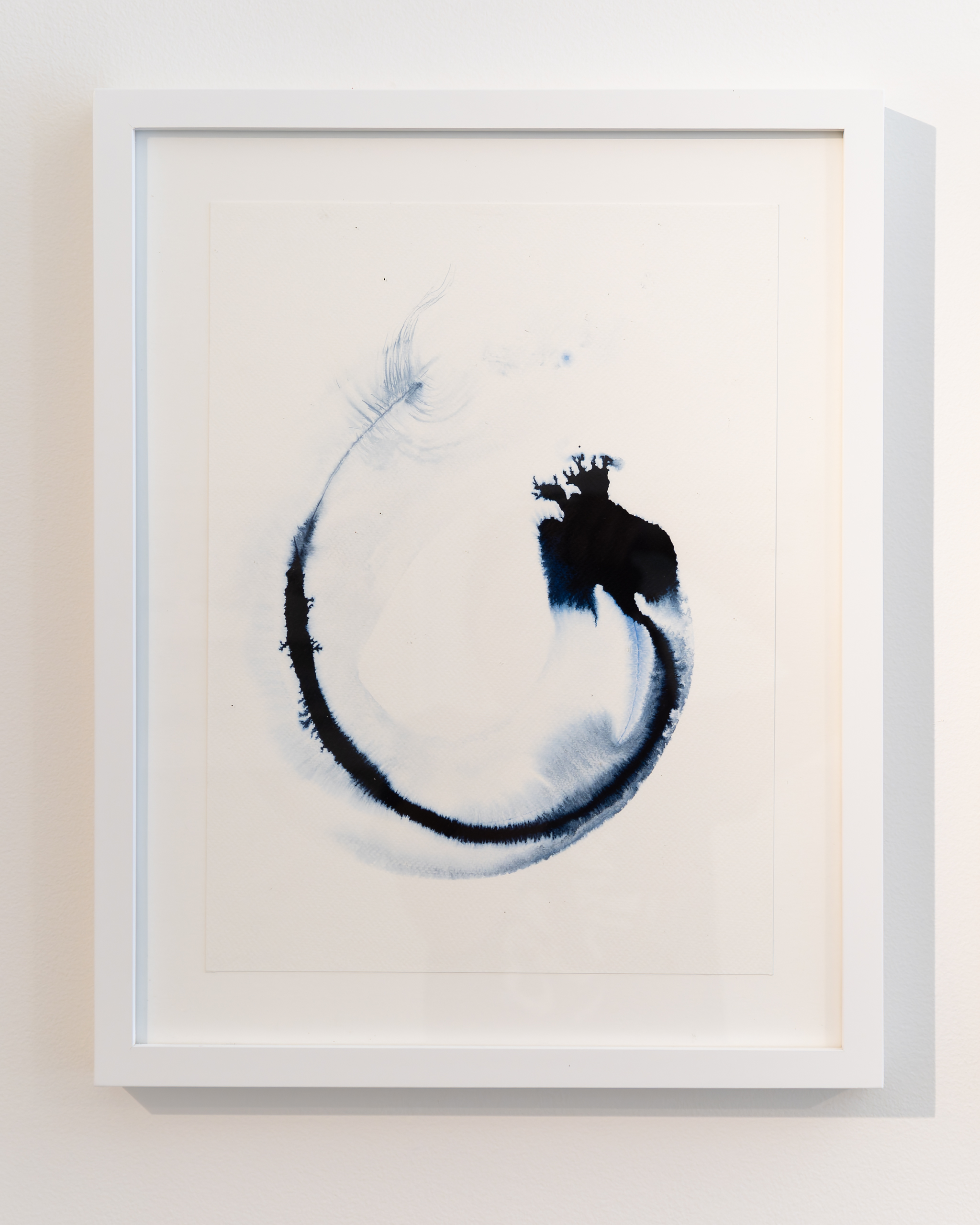

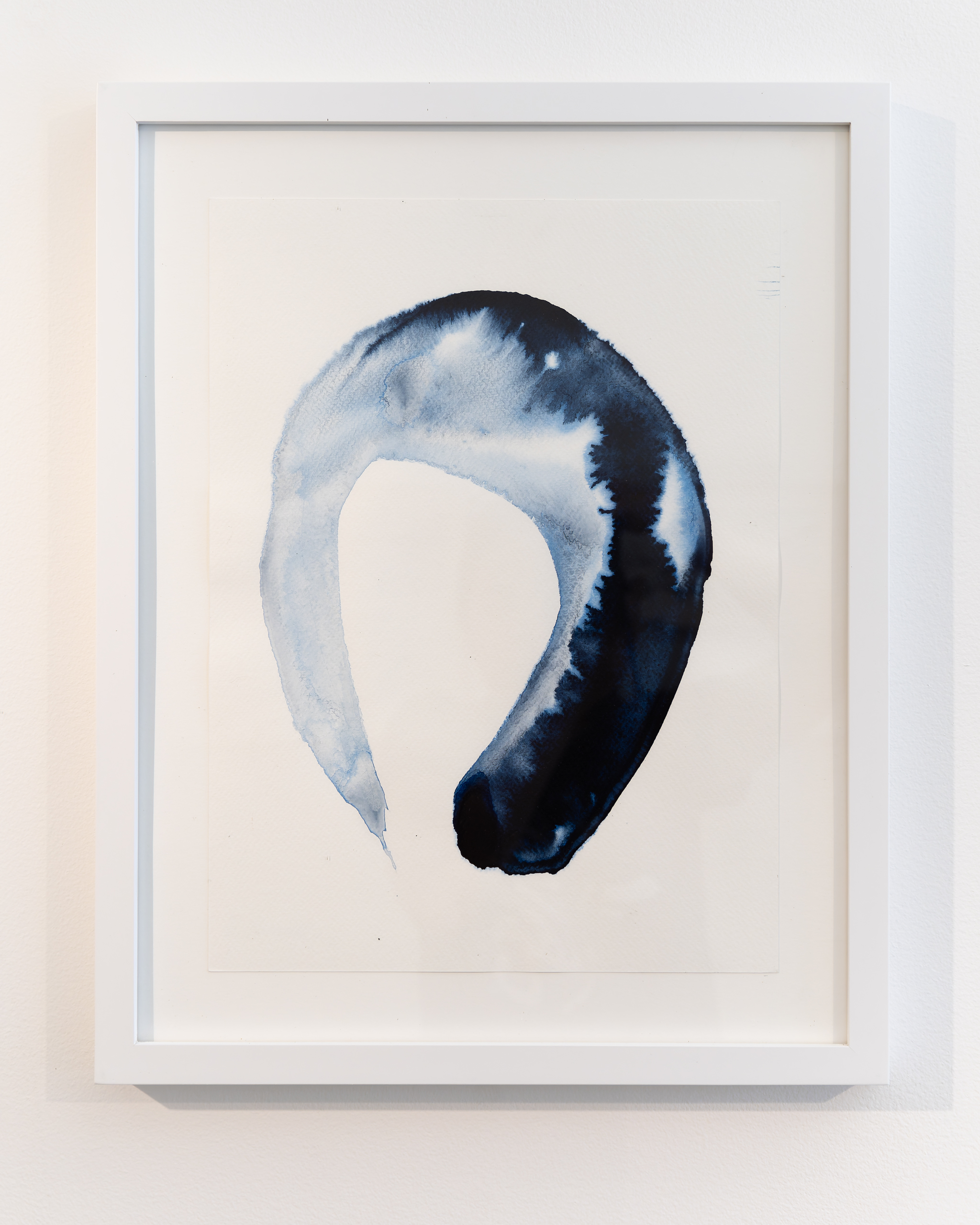
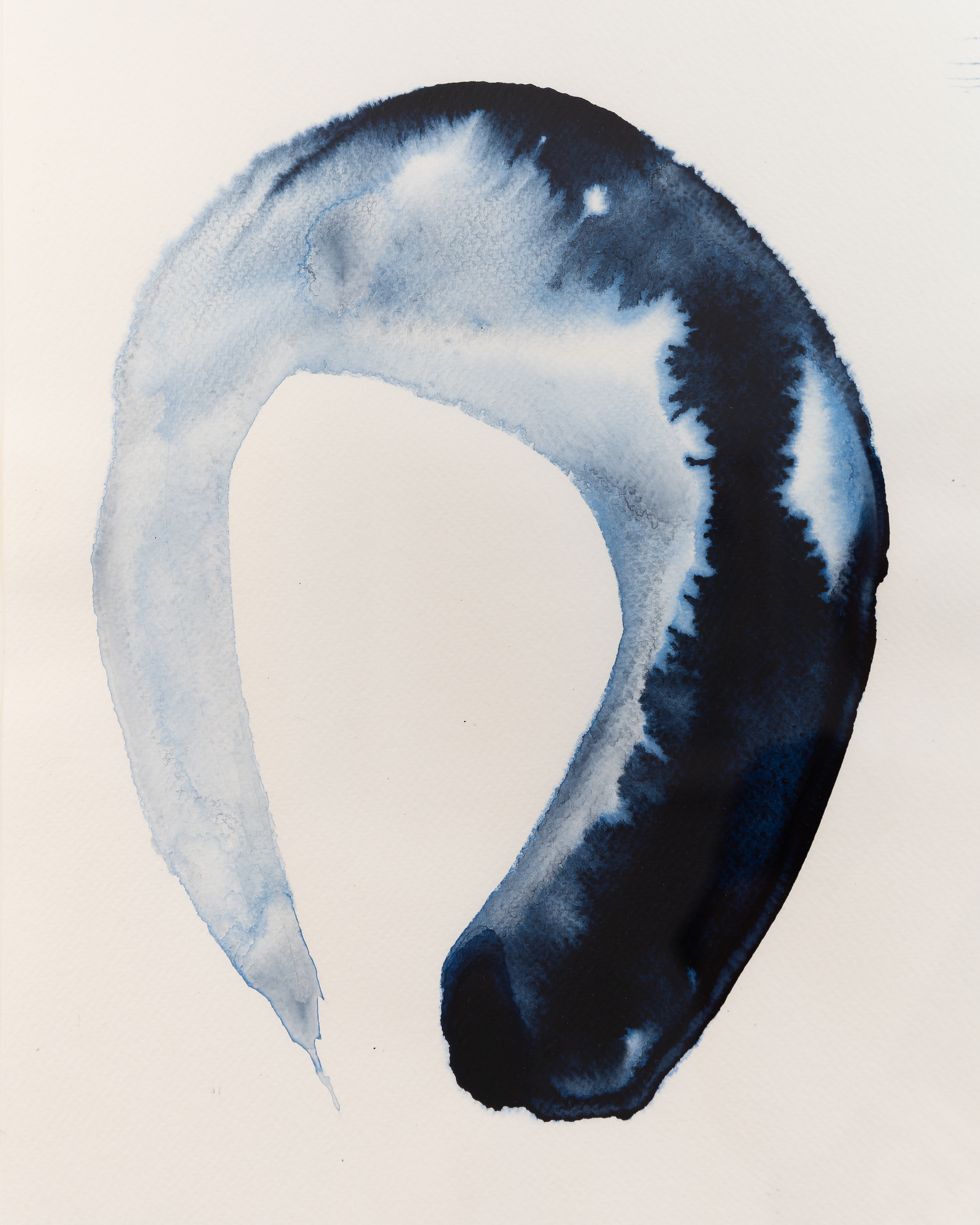
Light Play
Laser cut mylar of branch from human kidney, archival paper, light
18 x 18 x 4” (Framed)
18 x 18 x 4” (Framed)
8 x 12”
Branching systems can be found throughout nature, from microscopic to aerial view, suggesting an interdependent relation between the inner landscape of the body and the outer landscape of our environment. The Light Play Series works with a tributaries of the human kidney, our internal filtration system. A branching system like that of rivers, water ways and ice flow, its fluidity is in flux between reflection and shadow, responsive to light, breath and our movements.
Laser cut mylar of branch from human kidney, archival paper, light
18 x 18 x 4” (Framed)
18 x 18 x 4” (Framed)
8 x 12”
Branching systems can be found throughout nature, from microscopic to aerial view, suggesting an interdependent relation between the inner landscape of the body and the outer landscape of our environment. The Light Play Series works with a tributaries of the human kidney, our internal filtration system. A branching system like that of rivers, water ways and ice flow, its fluidity is in flux between reflection and shadow, responsive to light, breath and our movements.


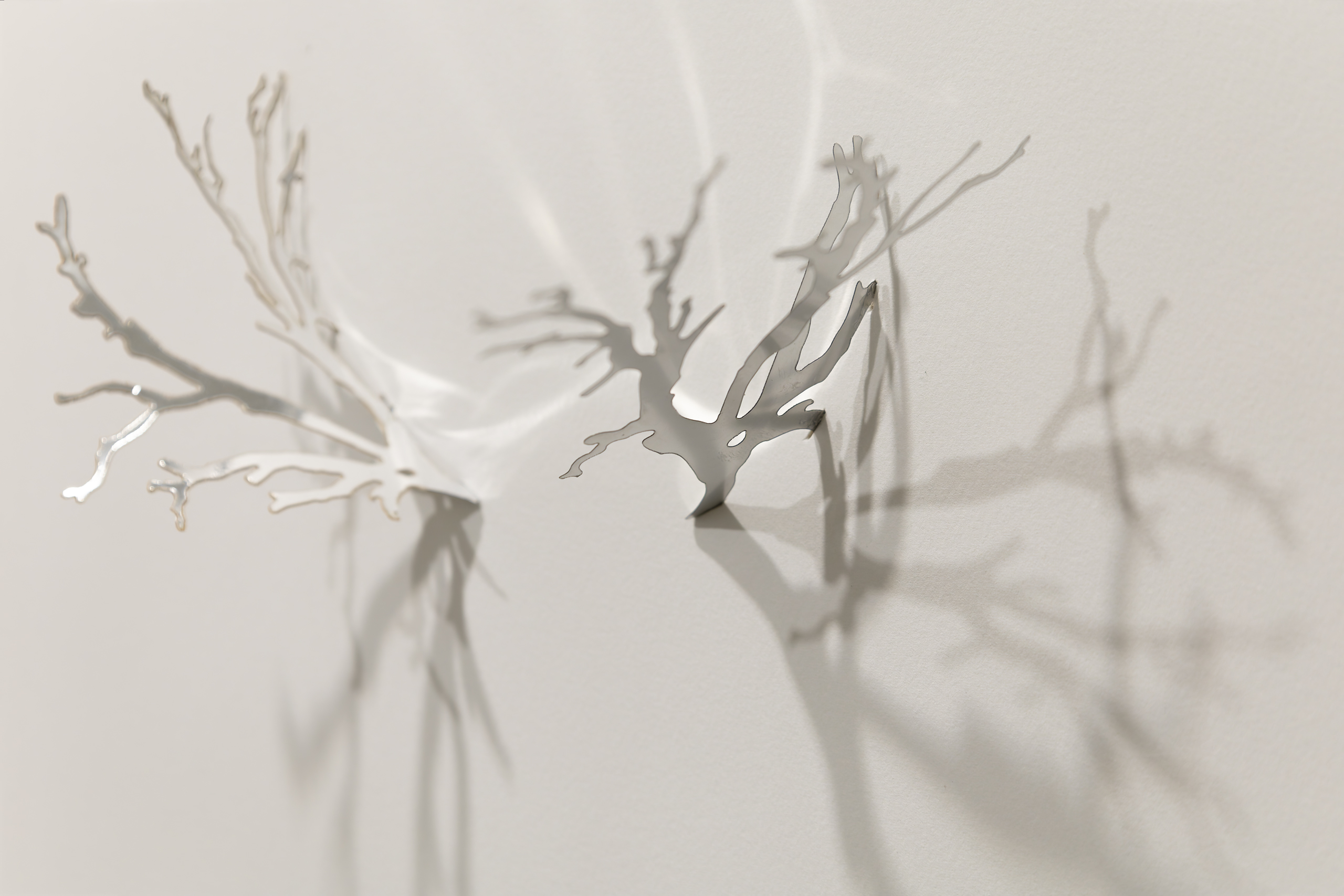
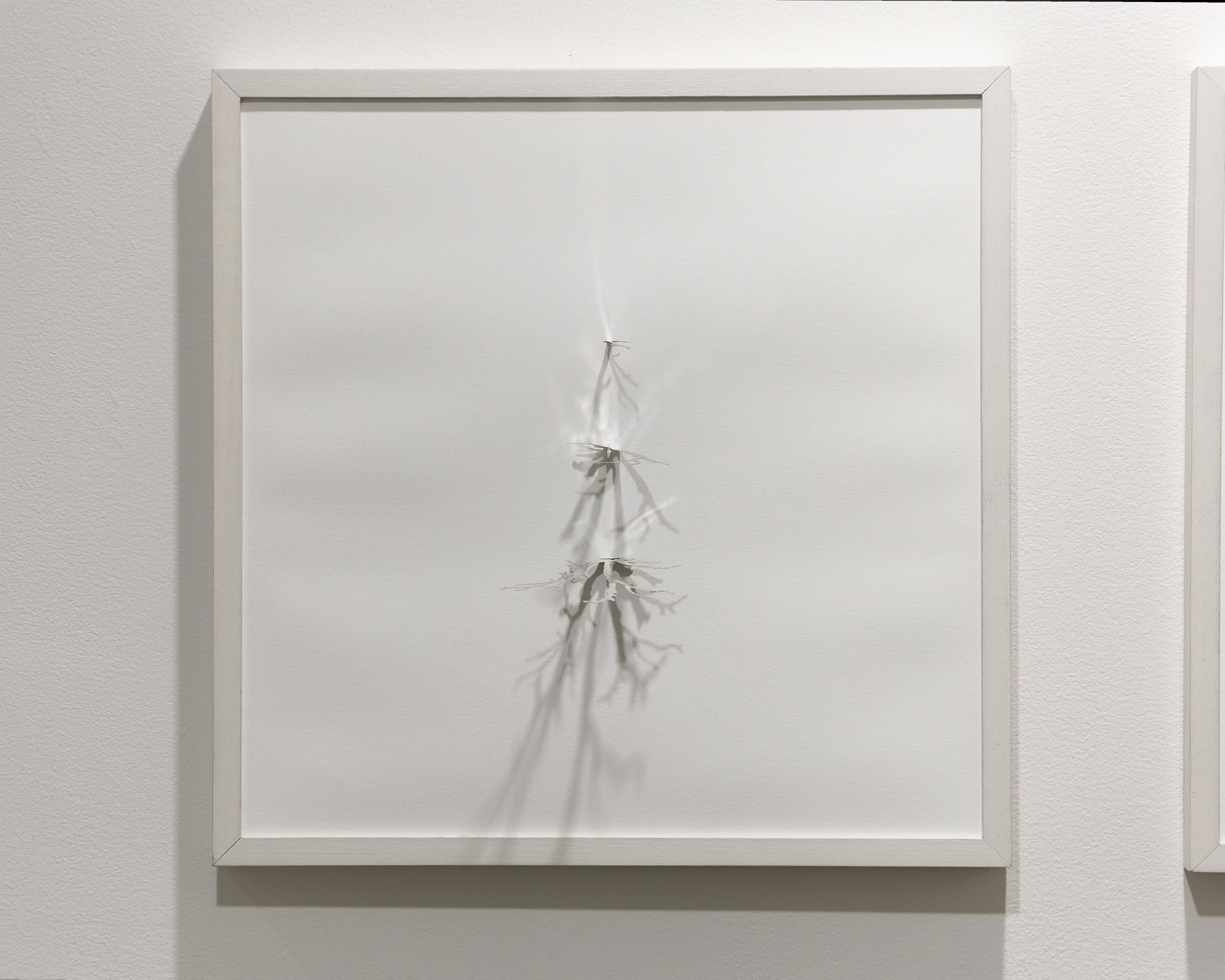
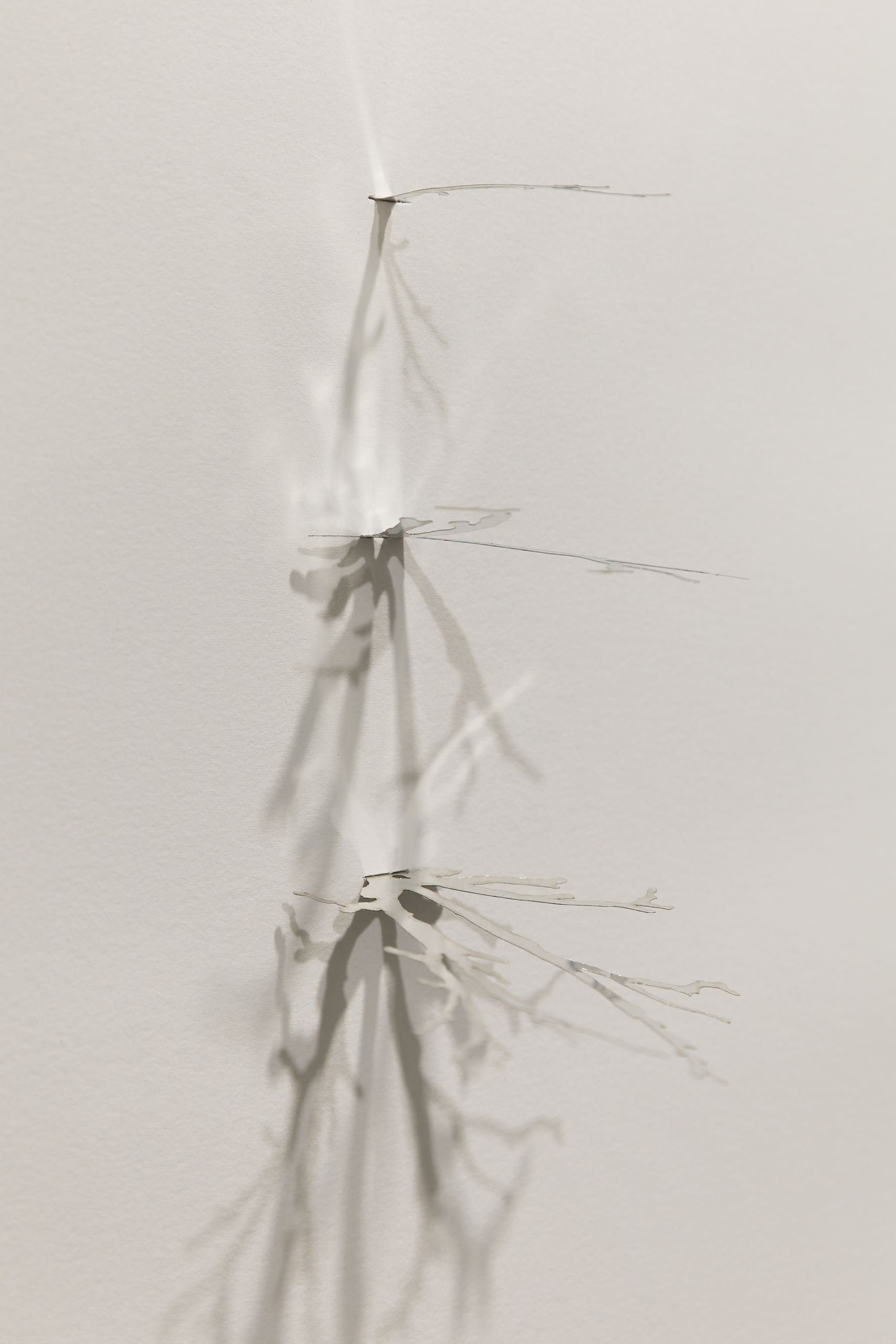


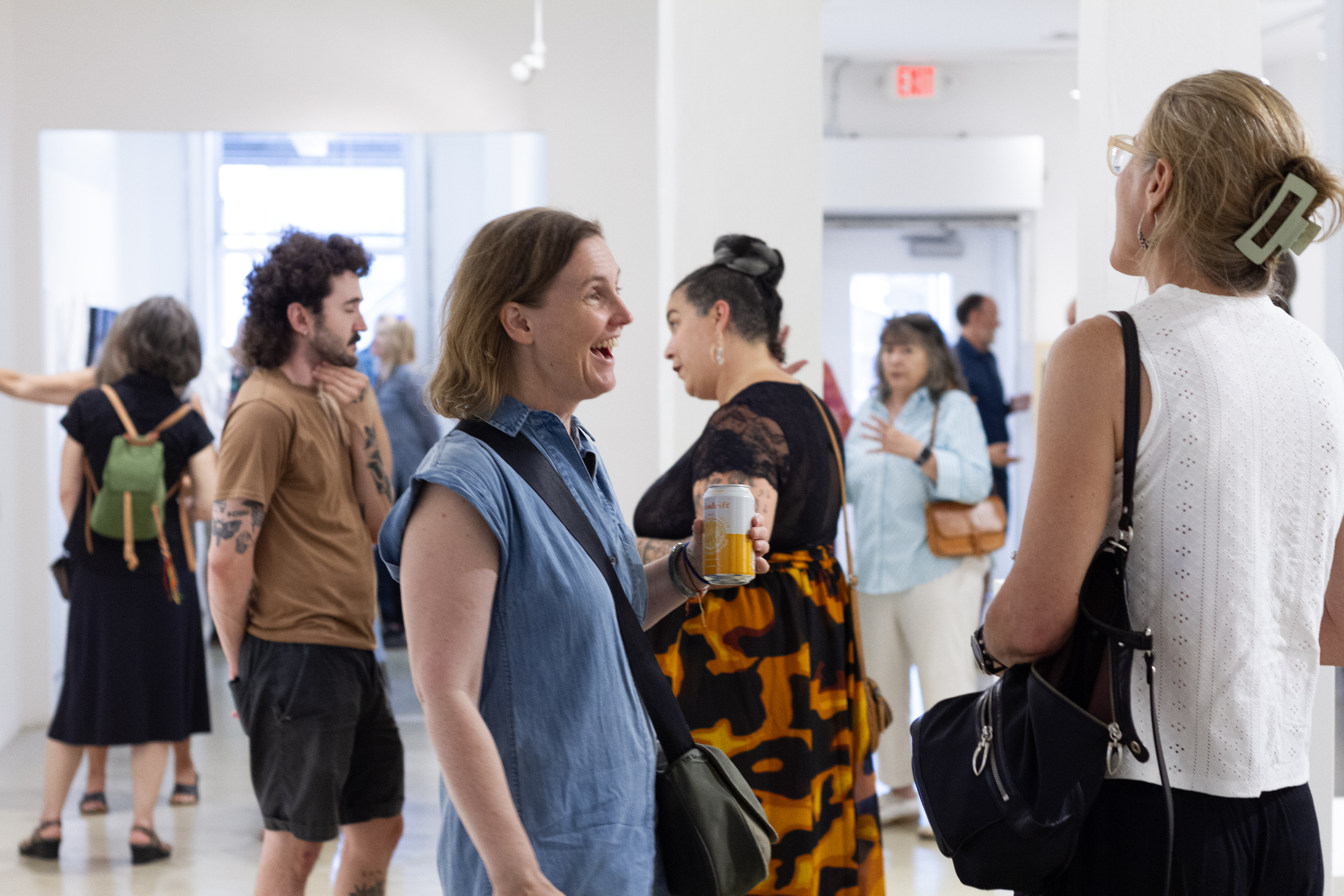

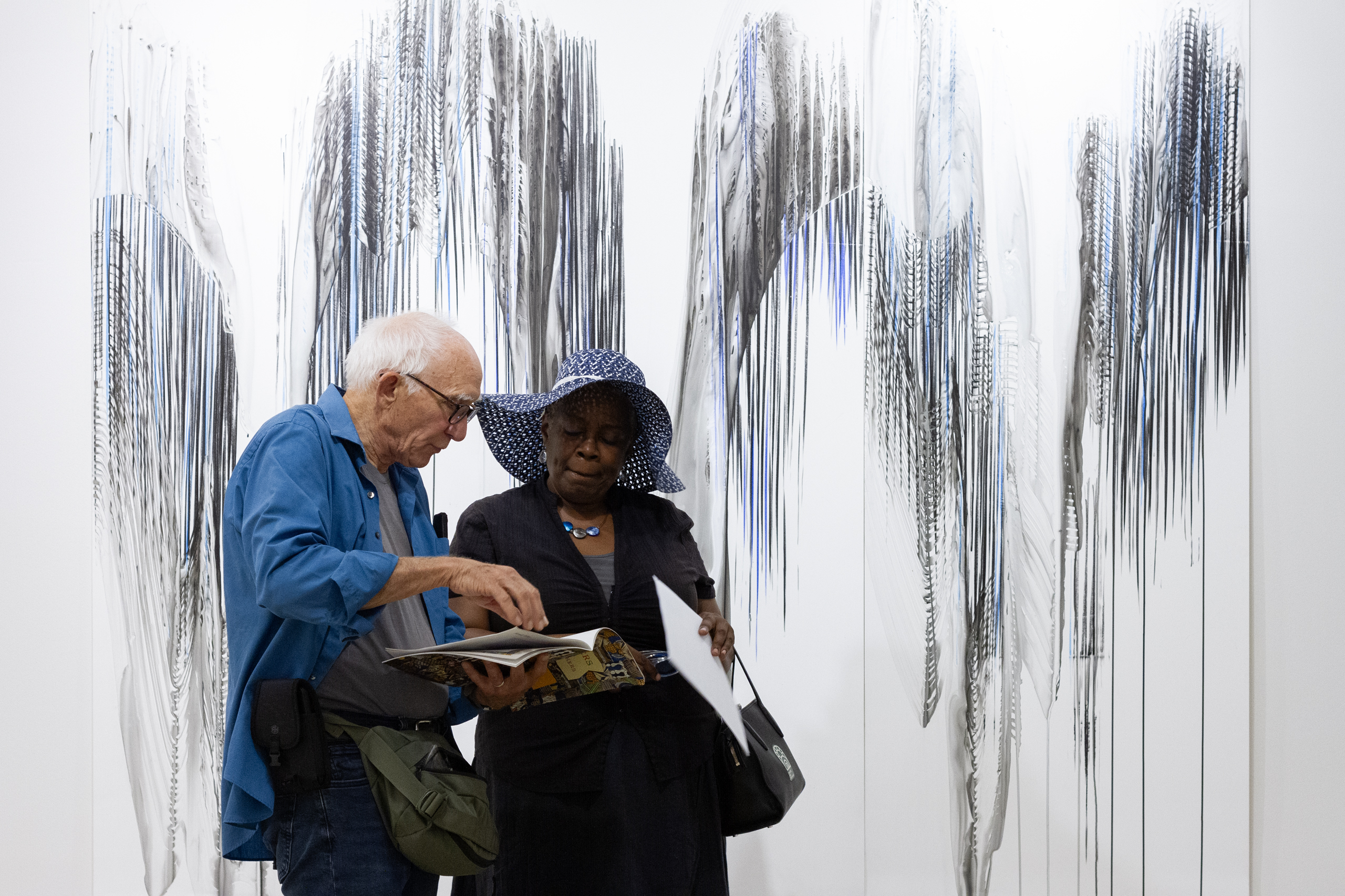



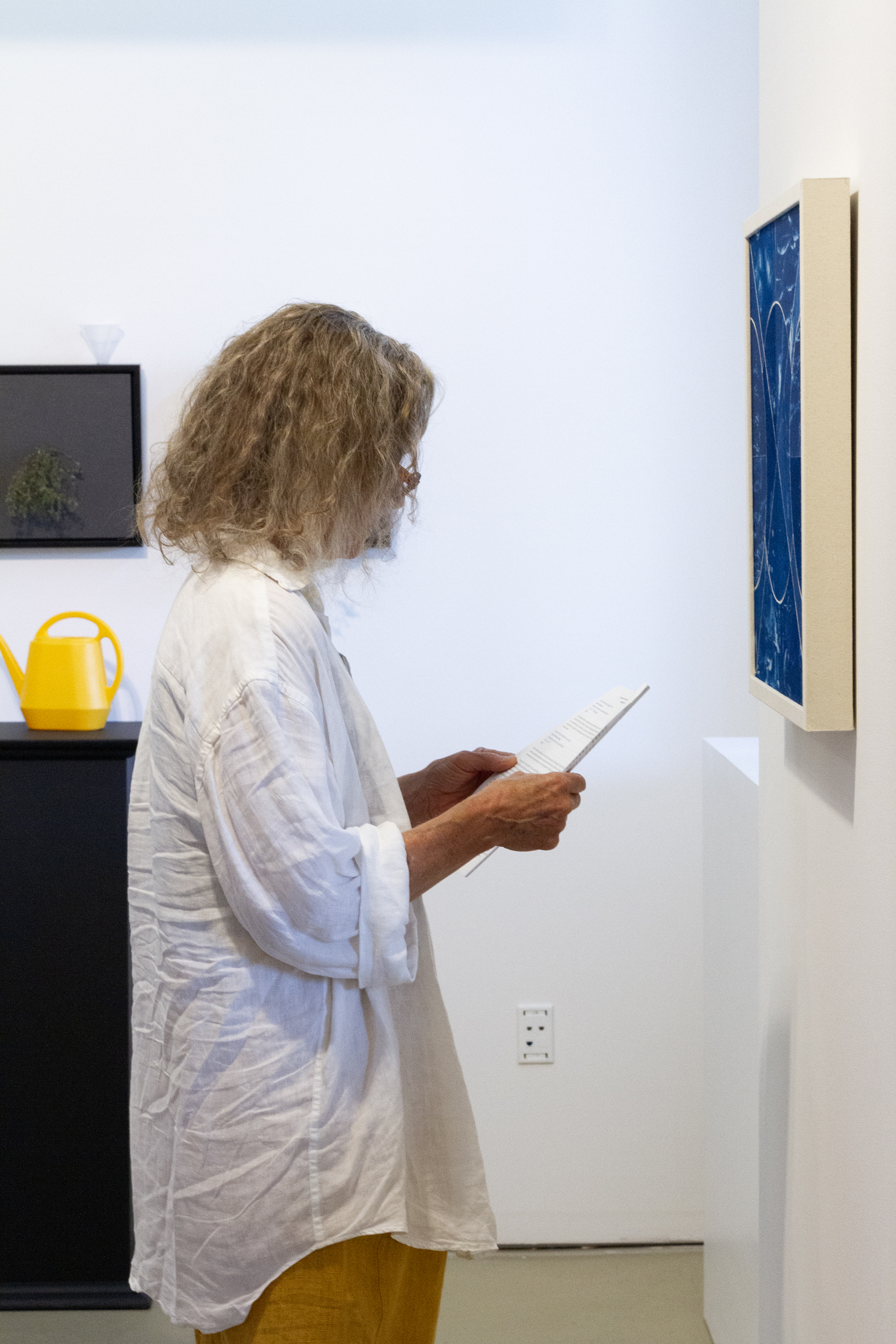
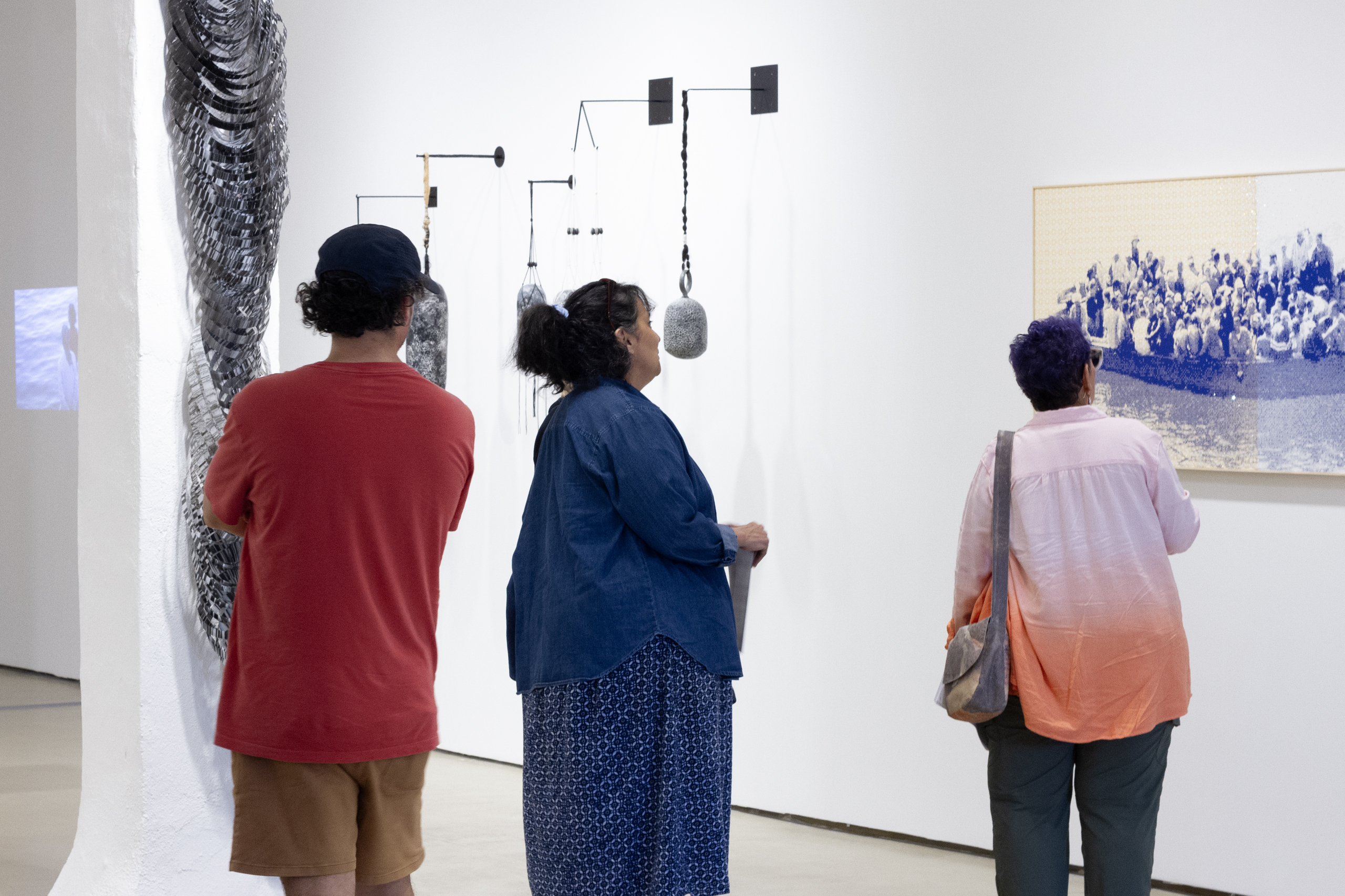



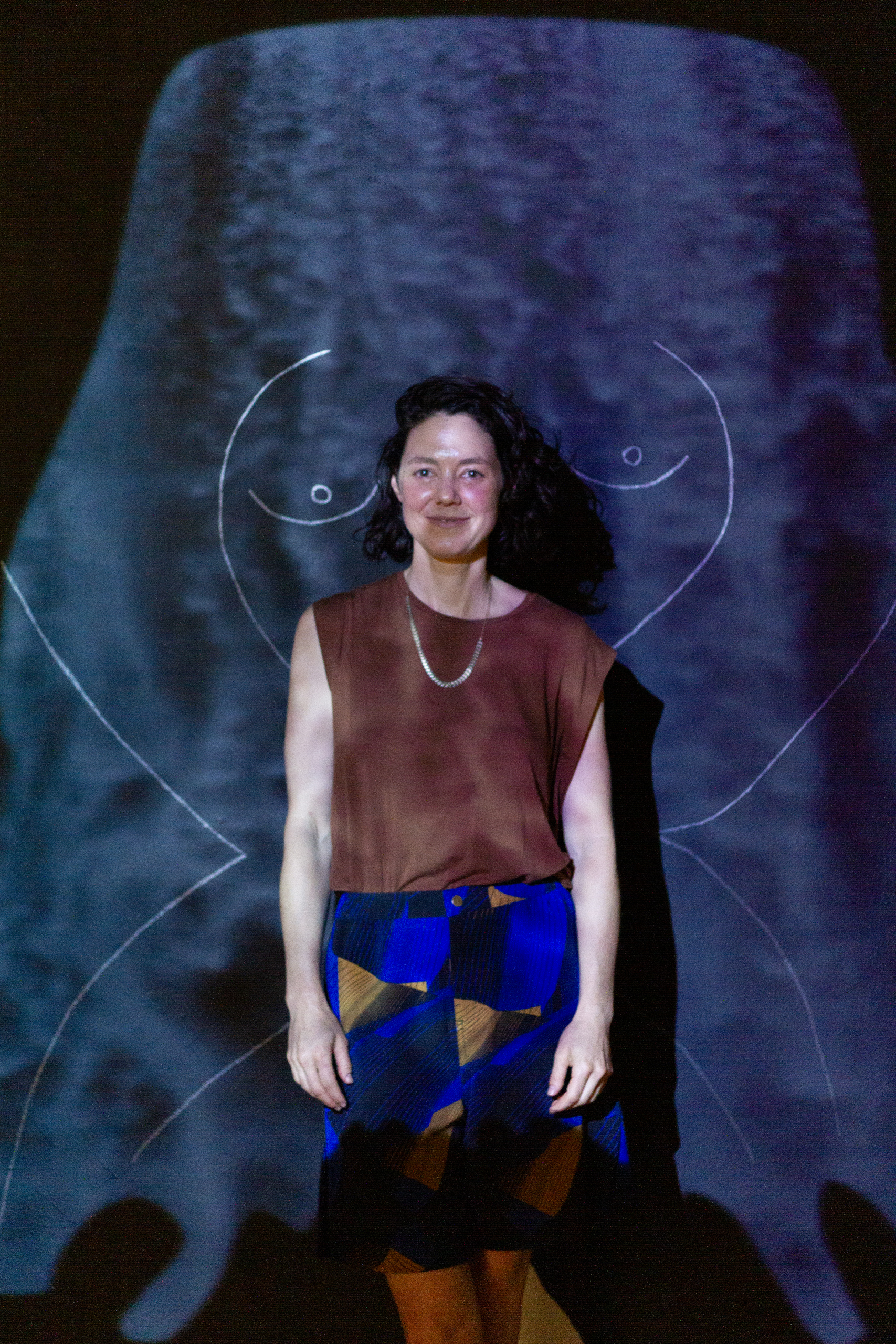
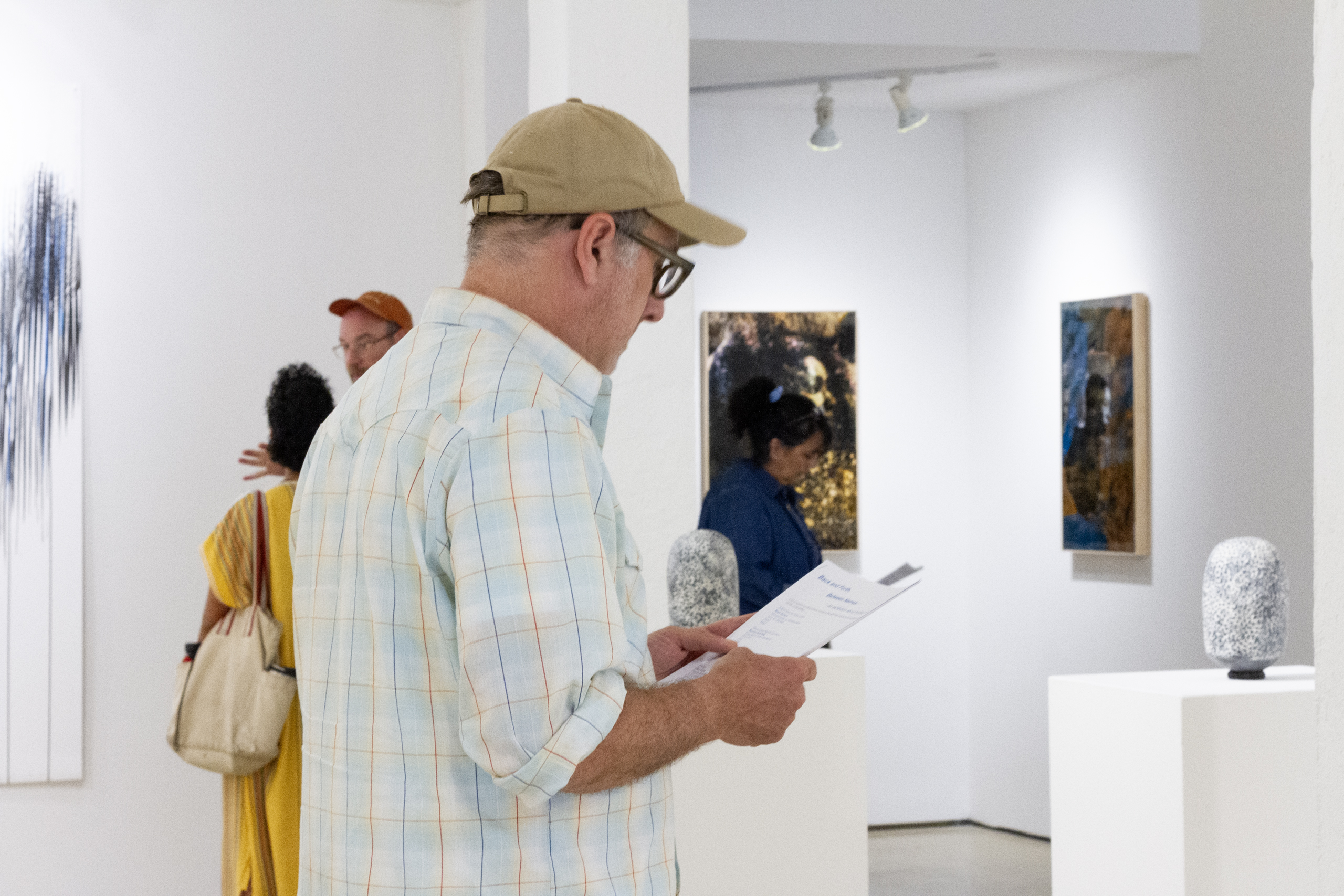

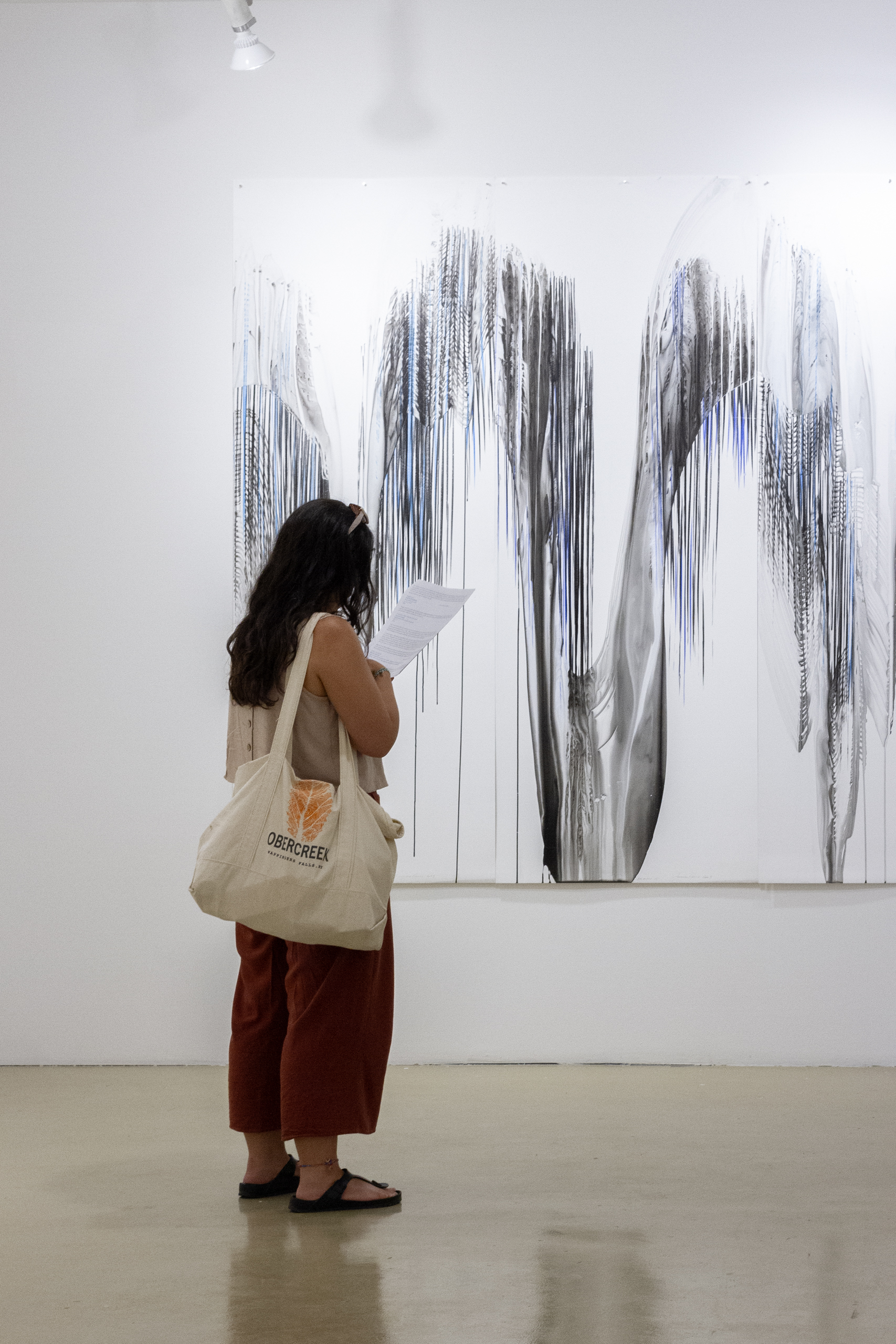
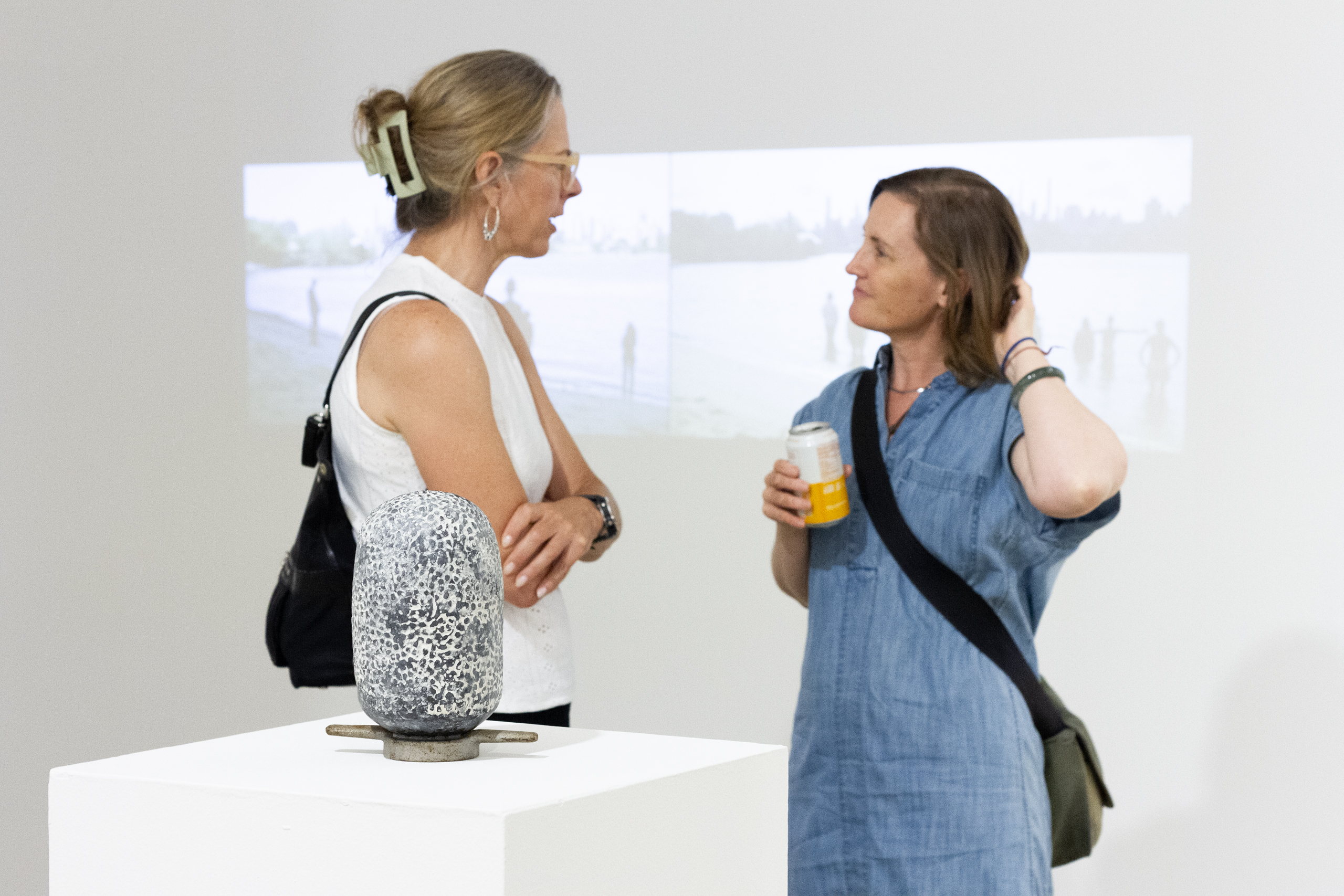





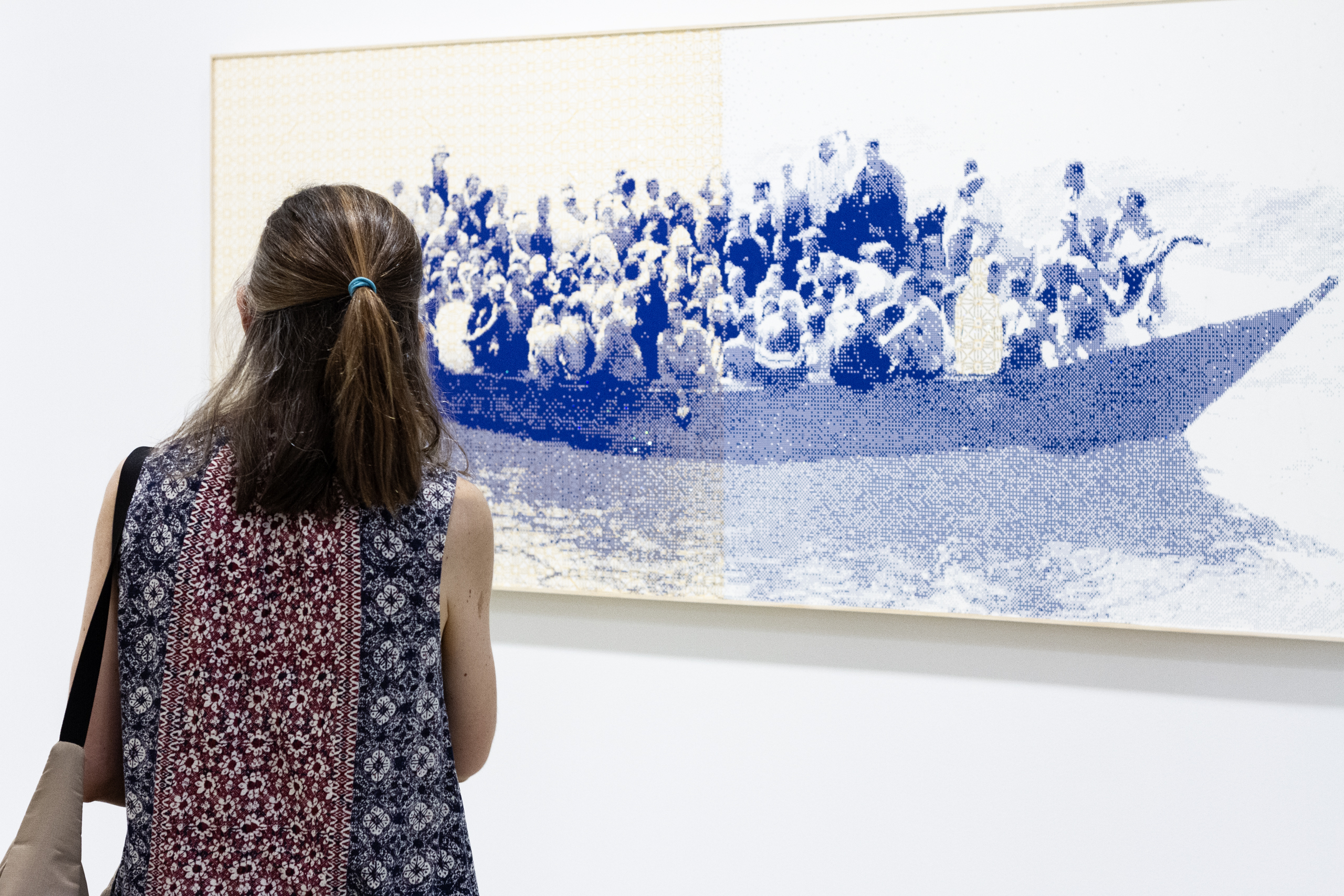


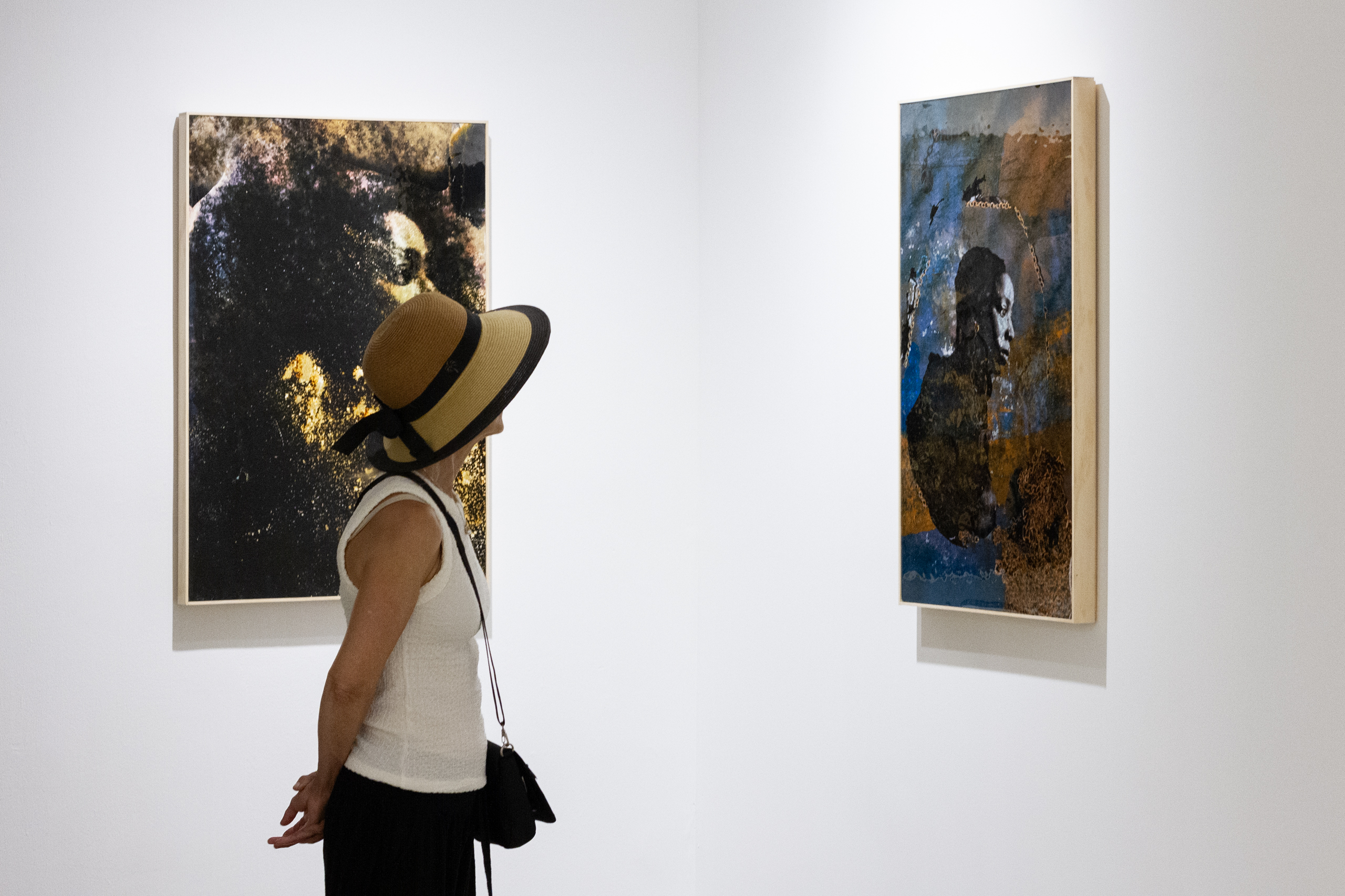
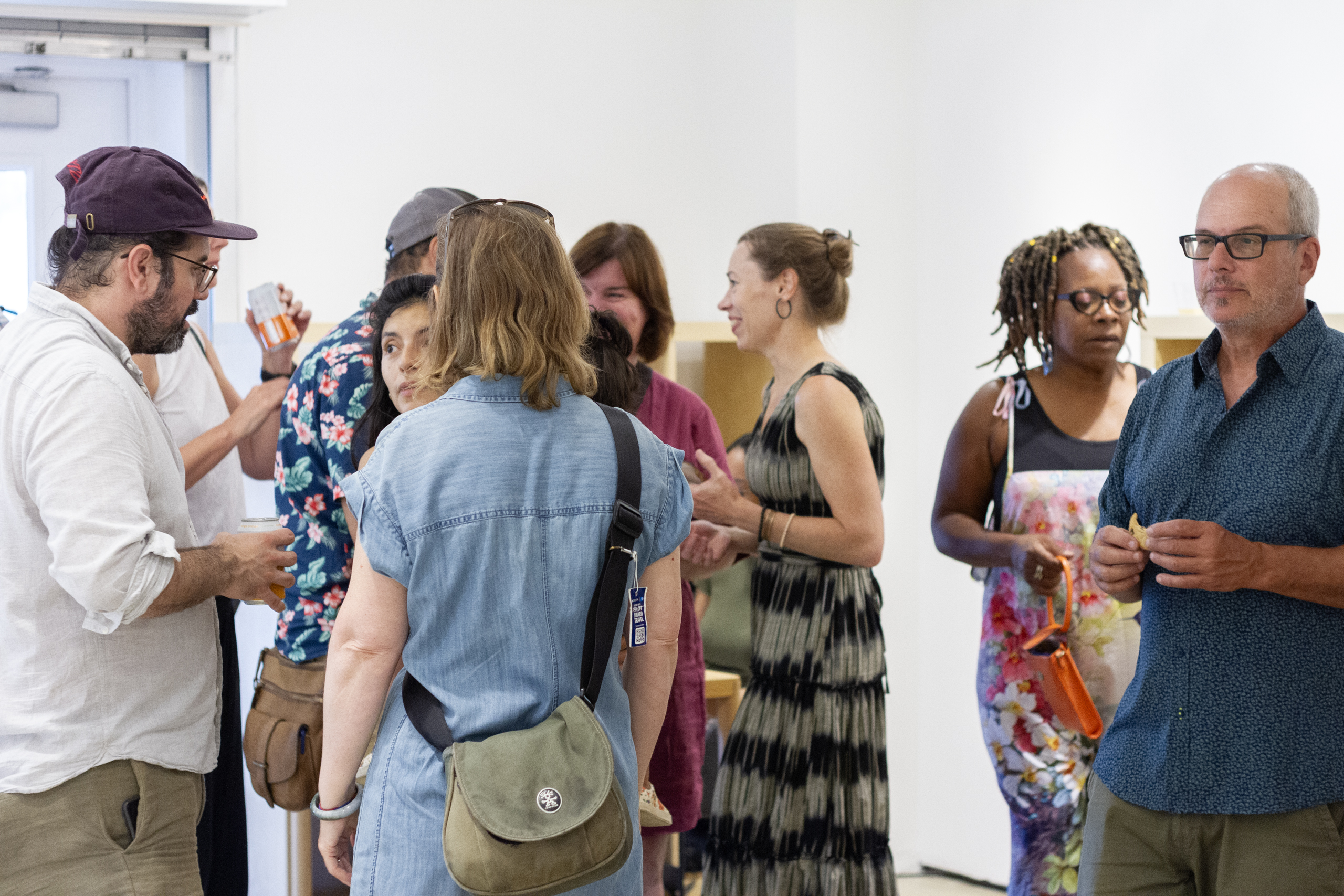





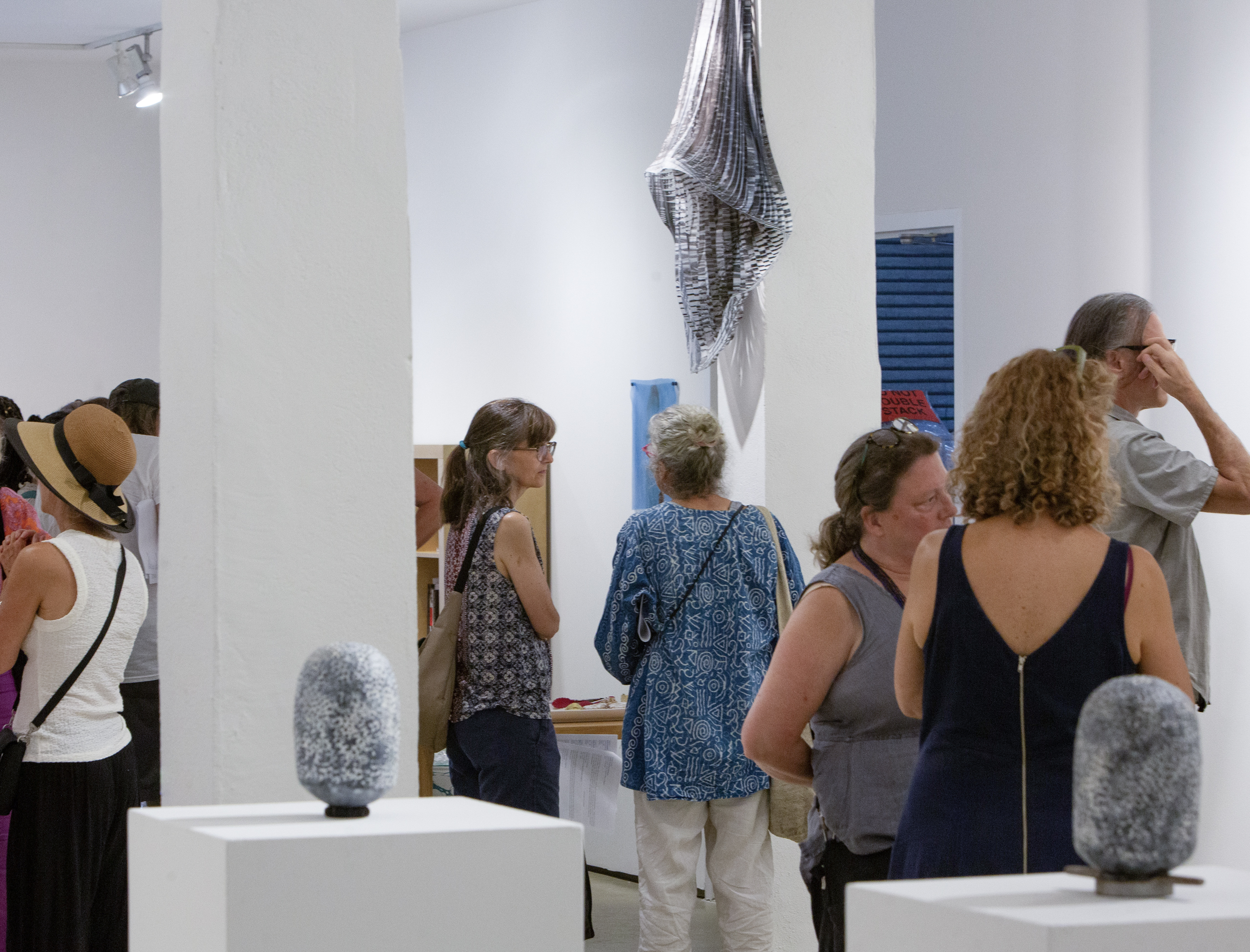



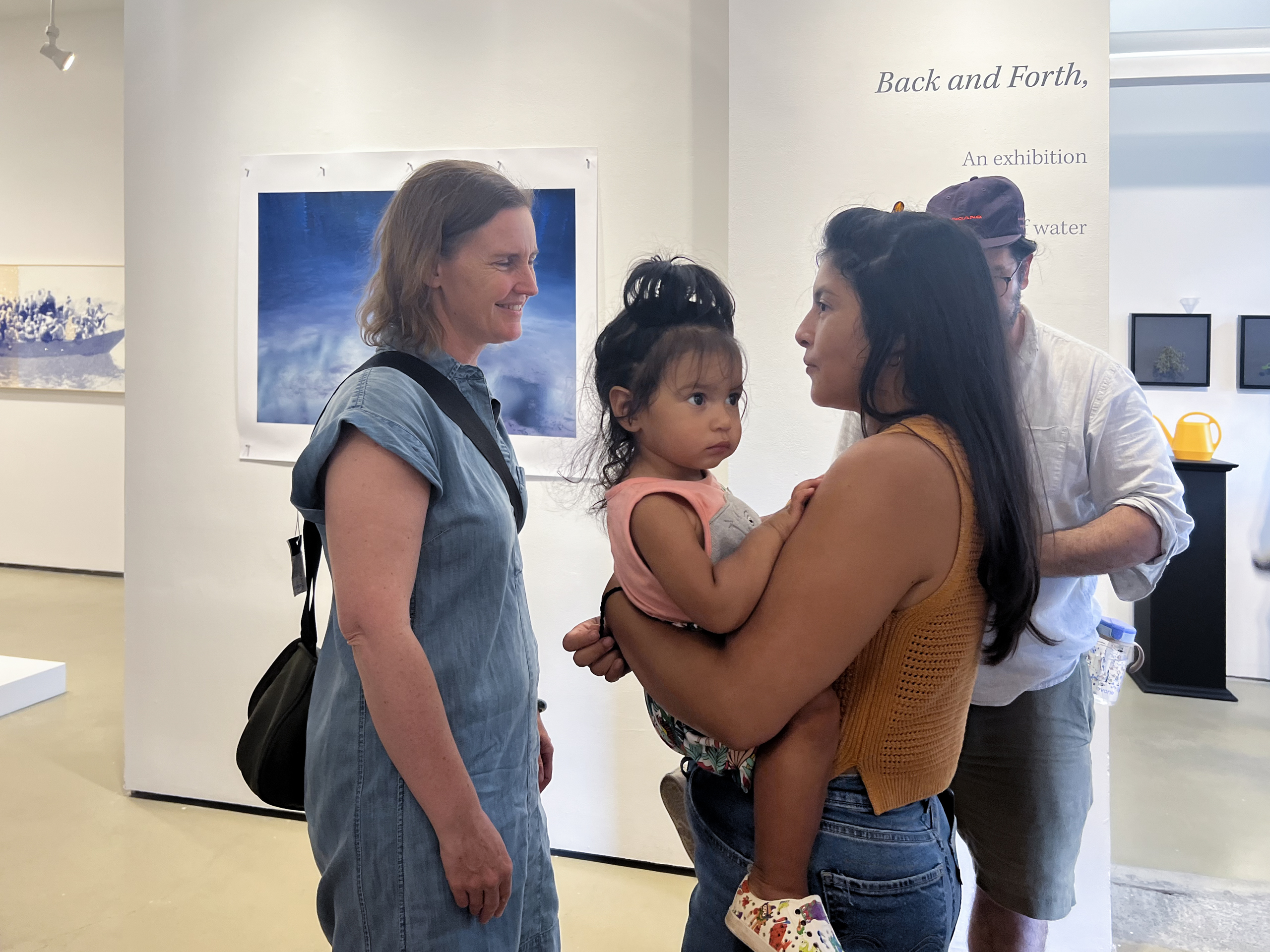
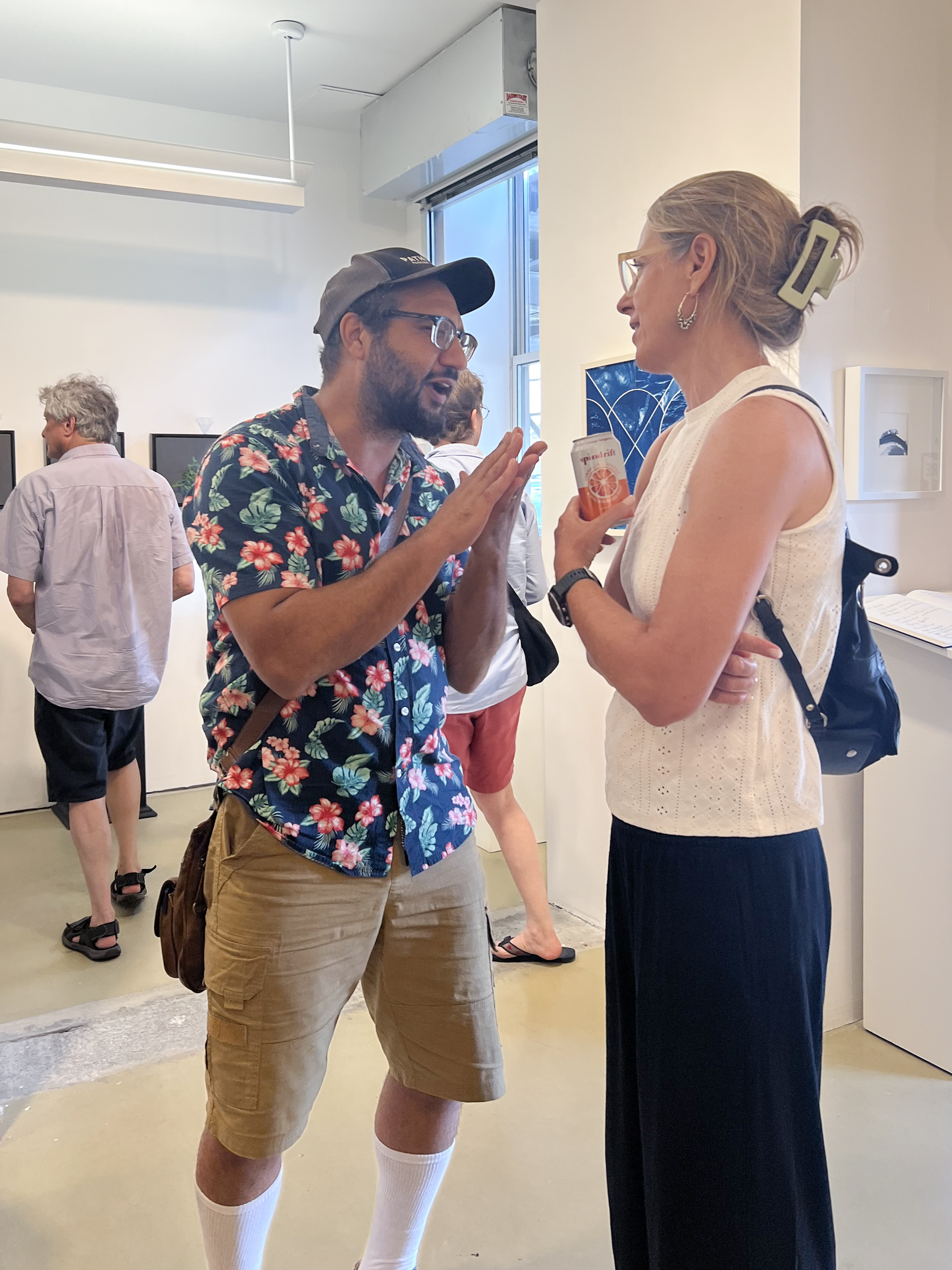







Ann Street Gallery’s summer exhibition and programming are made possible with support from the Dominican Sisters of Hope Ministry Fund and The M&T Charitable Foundation.


Back and Forth, Between Names
Summer 2024 Workshop and Program SeriesAugust 4 Water, Ink, Breath, Movement with Suzy Sureck
August 18 To Cleanse the River with Koyoltzintli
August 24 Glacier Elegy Newburgh with Jaanika Peerna
Free public programming supporting ASG’s summer exhibition, Back and Forth, Between Names: An exhibition about bodies of water, includes engagements with several regional artists, beginning with an interactive Water, Ink, Breath, Movement workshop with artist Suzy Sureck on August 4.
On August 18 is a procession from Ann Street Gallery to the river and back that includes a participatory performance and elemental listening event at the waterfront with Koyoltzintli.
A participatory performance by Jaanika Peerna at People’s Park, Newburgh riverfront followed by a closing reception at Ann Street Gallery is on August 24.
![]()
![]()
On August 18 is a procession from Ann Street Gallery to the river and back that includes a participatory performance and elemental listening event at the waterfront with Koyoltzintli.
A participatory performance by Jaanika Peerna at People’s Park, Newburgh riverfront followed by a closing reception at Ann Street Gallery is on August 24.

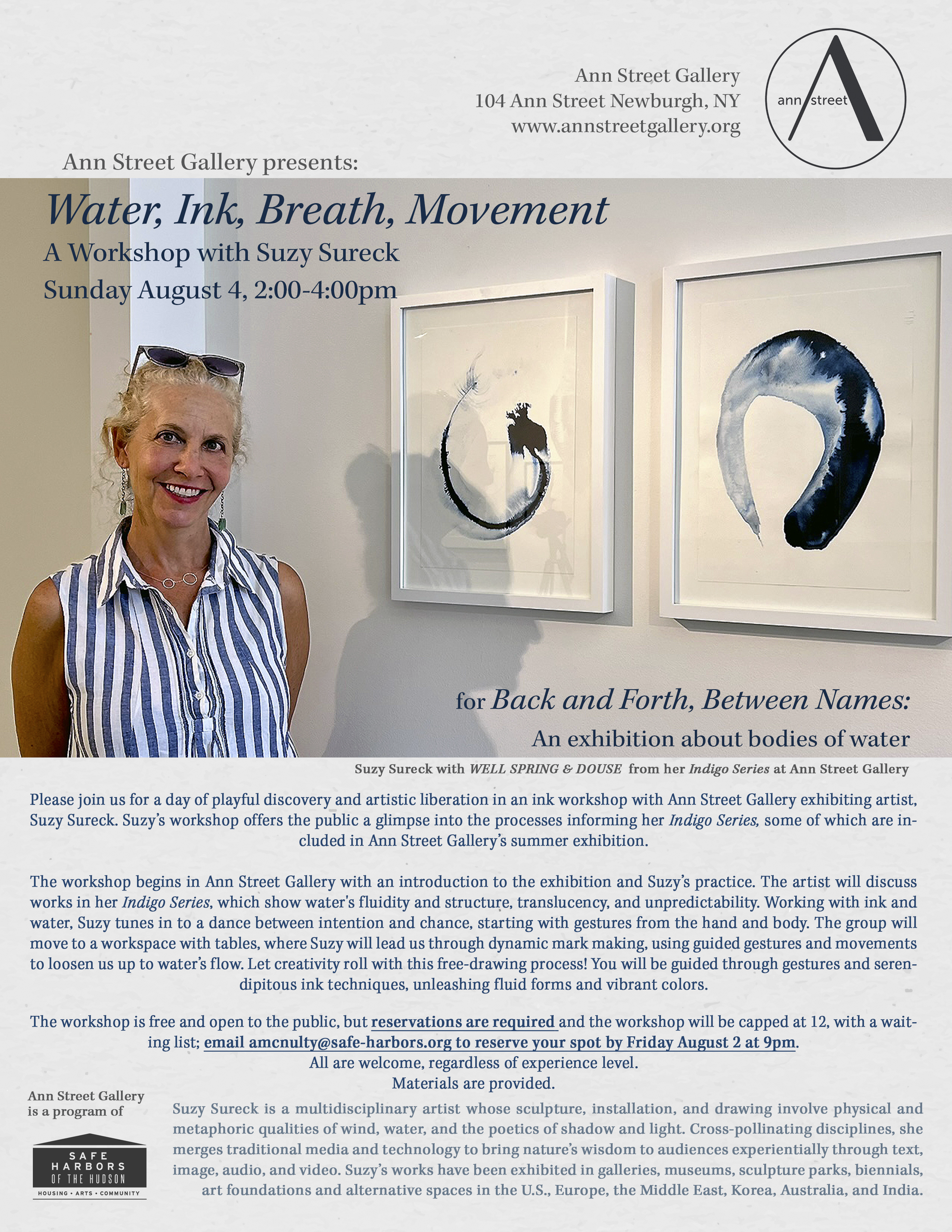
Water, Ink, Breath, Movement
A Workshop with Suzy Sureck
Sunday, August 4, 2:00pm - 4:00pm
Ann Street Gallery
104 Ann Street, Newburgh, NY
This workshop is free and open to the public, but reservations are required and the workshop will be capped at 12, with a waiting list. All are welcome, regardless of experience level. Materials are provided.
Email amcnulty@safe-harbors.org to reserve your spot by Friday August 2 at 9pm.
Please join us for a day of playful discovery and artistic liberation in a free ink workshop with Ann Street Gallery exhibiting artist, Suzy Sureck. Suzy’s workshop offers the public a glimpse into the processes informing her Indigo Series, some of which are included in the exhibition, Back and Forth, Between Names: An exhibition about bodies of water.
The workshop will begin in Ann Street Gallery, with an introduction to the exhibition and Suzy’s practice. The artist will discuss examples from her Indigo Series, which show water's fluidity and structure, translucency, and unpredictability. Working with ink and water, Suzy tunes in to a dance between intention and chance, starting with gestures from the hand and body. The group will move to a workspace with tables, where Suzy will lead us through dynamic mark making, using guided gestures and movements to loosen us up to water’s flow. Let creativity roll with this free-drawing process! You will be guided through gestures and serendipitous ink techniques, unleashing fluid forms and vibrant colors.
With hesitation or confidence, we make a mark, then let go of expectation, flowing with surprise, alive with wonder. This process of direct experience continues to be Suzy’s grounding practice and a lot of fun; she looks forward to sharing it with you!
Suzy’s ink process is seen in the images that move through pages of her first book of poetry and drawings SEE /SAW published by LumenDot in December 2023. Signed copies will be available.
Suzy Sureck is a multidisciplinary artist whose sculpture, installation, and drawing involve physical and metaphoric qualities of wind, water, and the poetics of shadow and light. Cross-pollinating disciplines, she merges traditional media and technology to bring nature’s wisdom to audiences experientially through text, image, audio, and video. Suzy’s works have been exhibited in galleries, museums, sculpture parks, biennials, art foundations and alternative spaces in the U.S., Europe, the Middle East, Korea, Australia, and India. Recent works include projection performances in the Hudson Valley, Germany and Lincoln Center. She has been awarded multiple residencies including MassMOCA, Yaddo, Virginia Center for Creative Arts, Art Omi and Studios of Key West. Her works have been reviewed in the NY Times, Hyperallergic, Sculpture Magazine, World Art, Flash Art and. New Observations. Suzy received a MFA in Sculpture from Cranbrook and BFA from Cooper Union. She lives and works in New York, and is an educator at Pratt Institute and DIA.
https://suzysureck.com/
@suzysureck


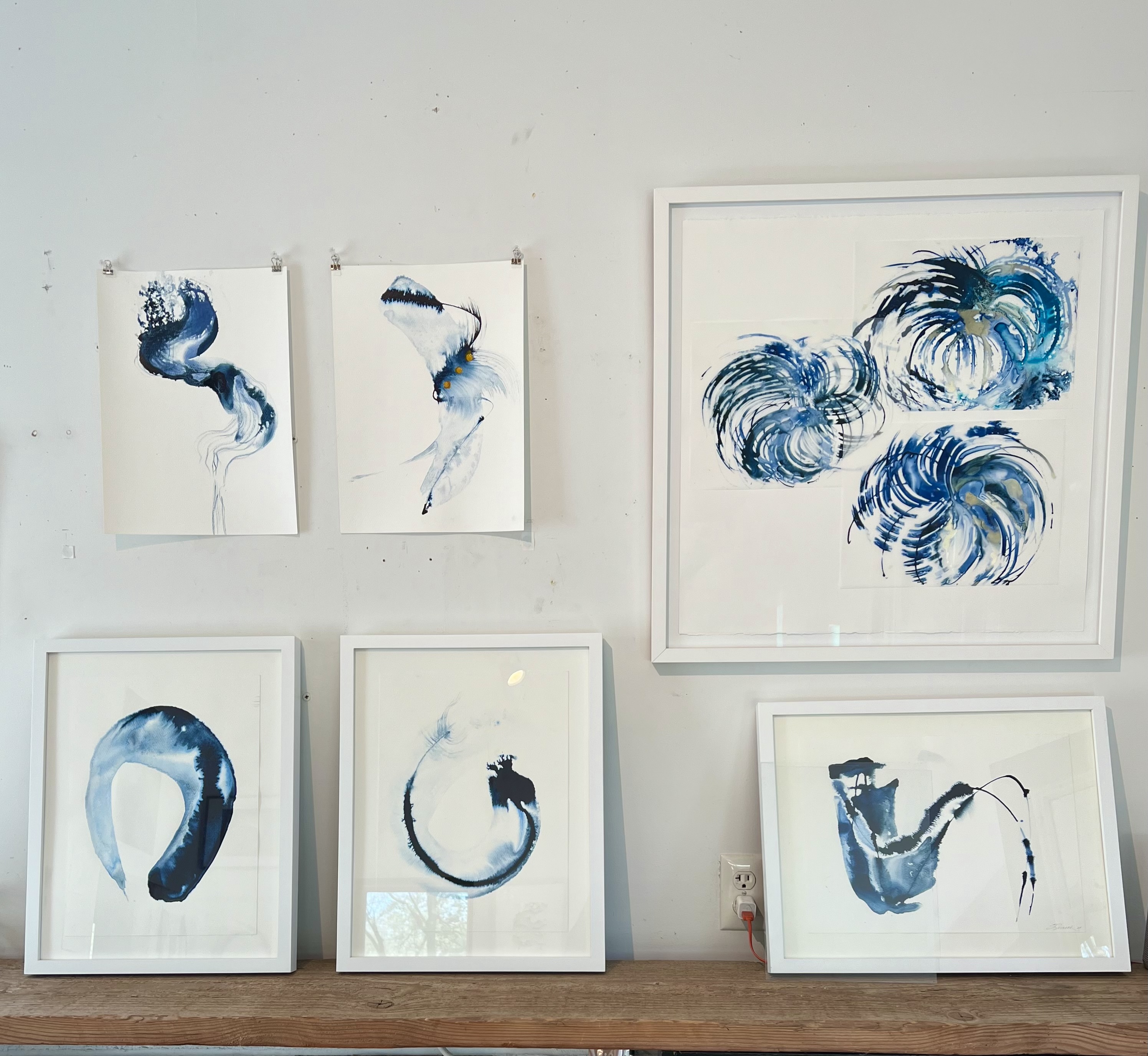


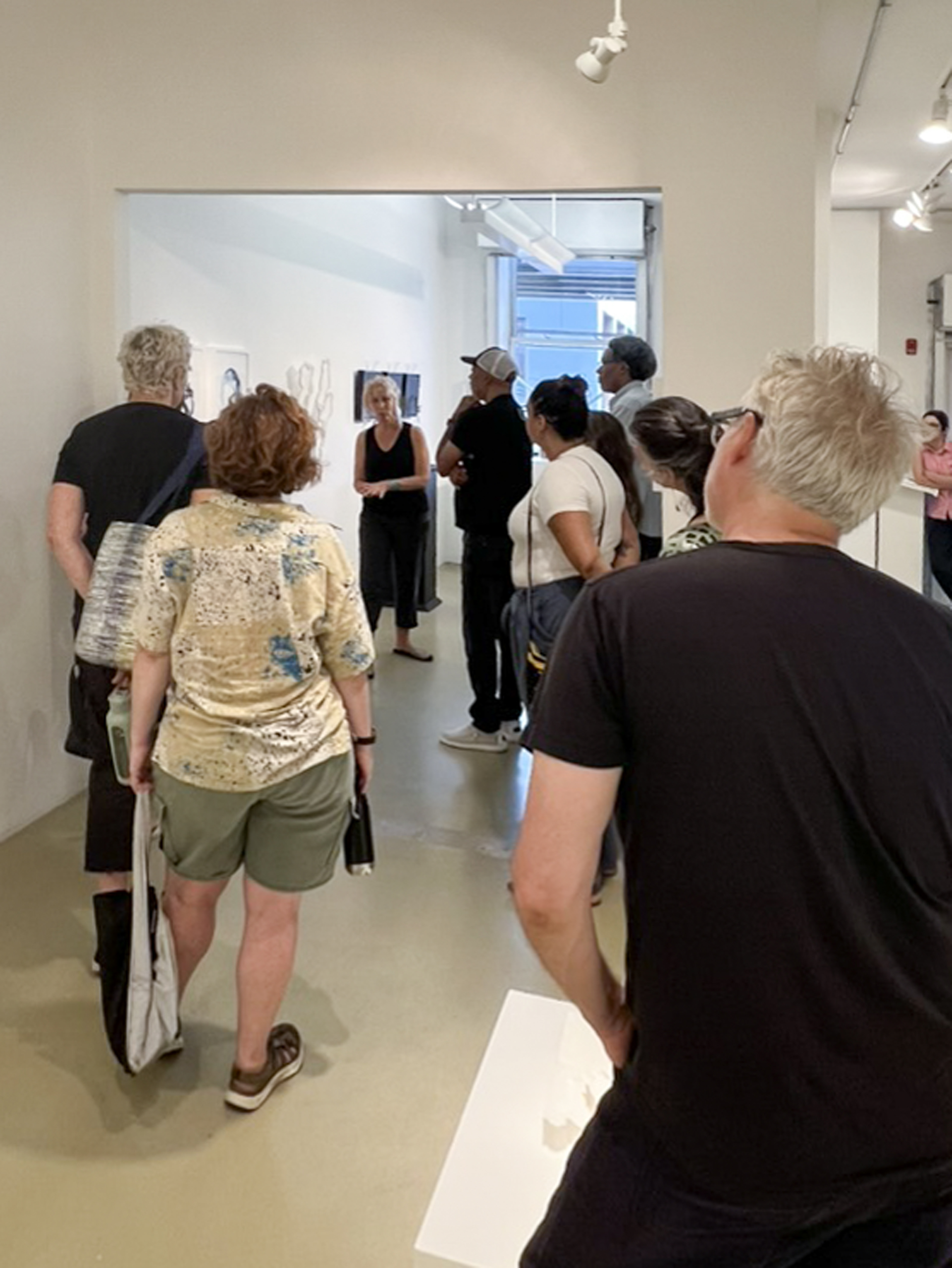







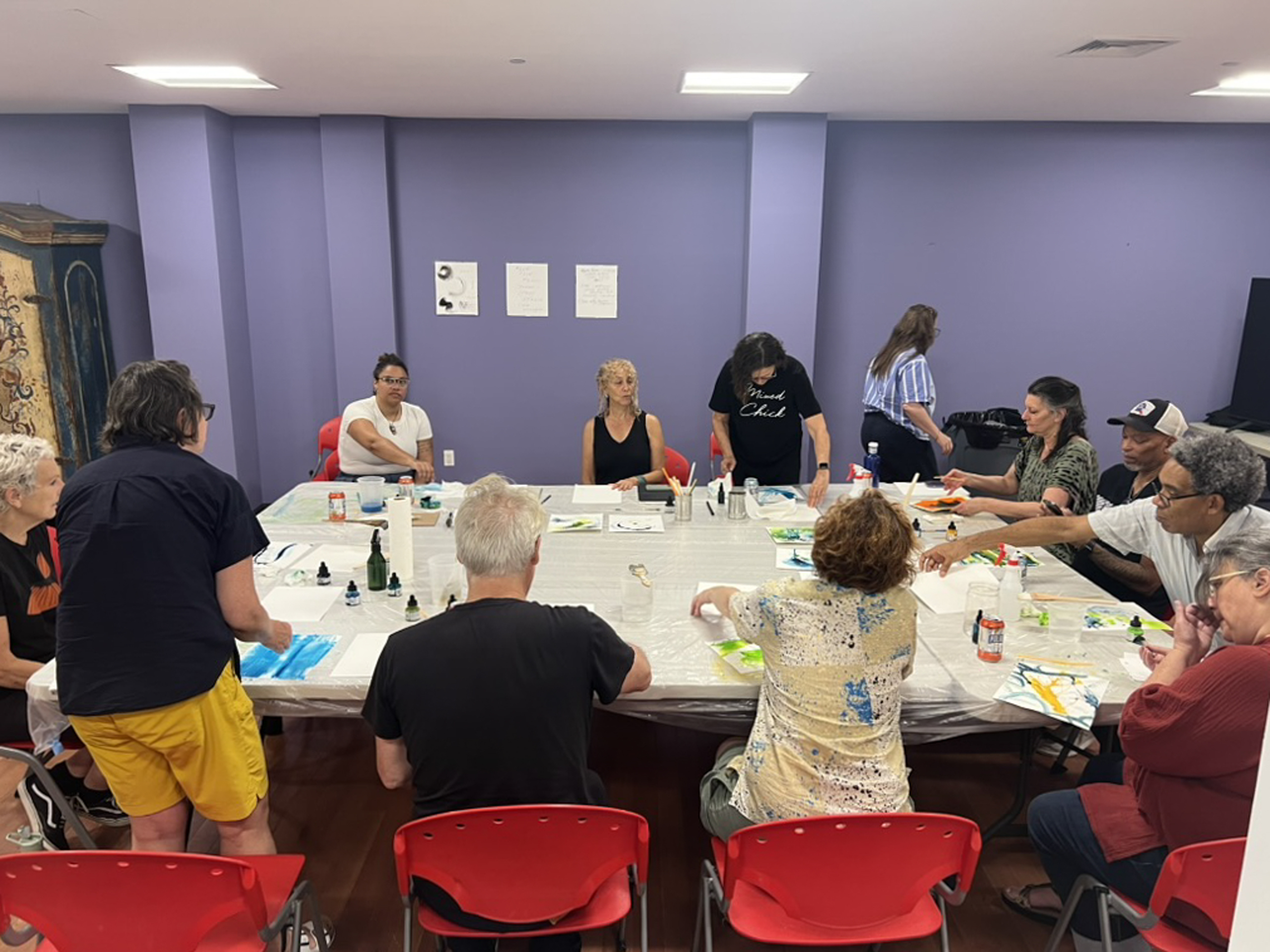

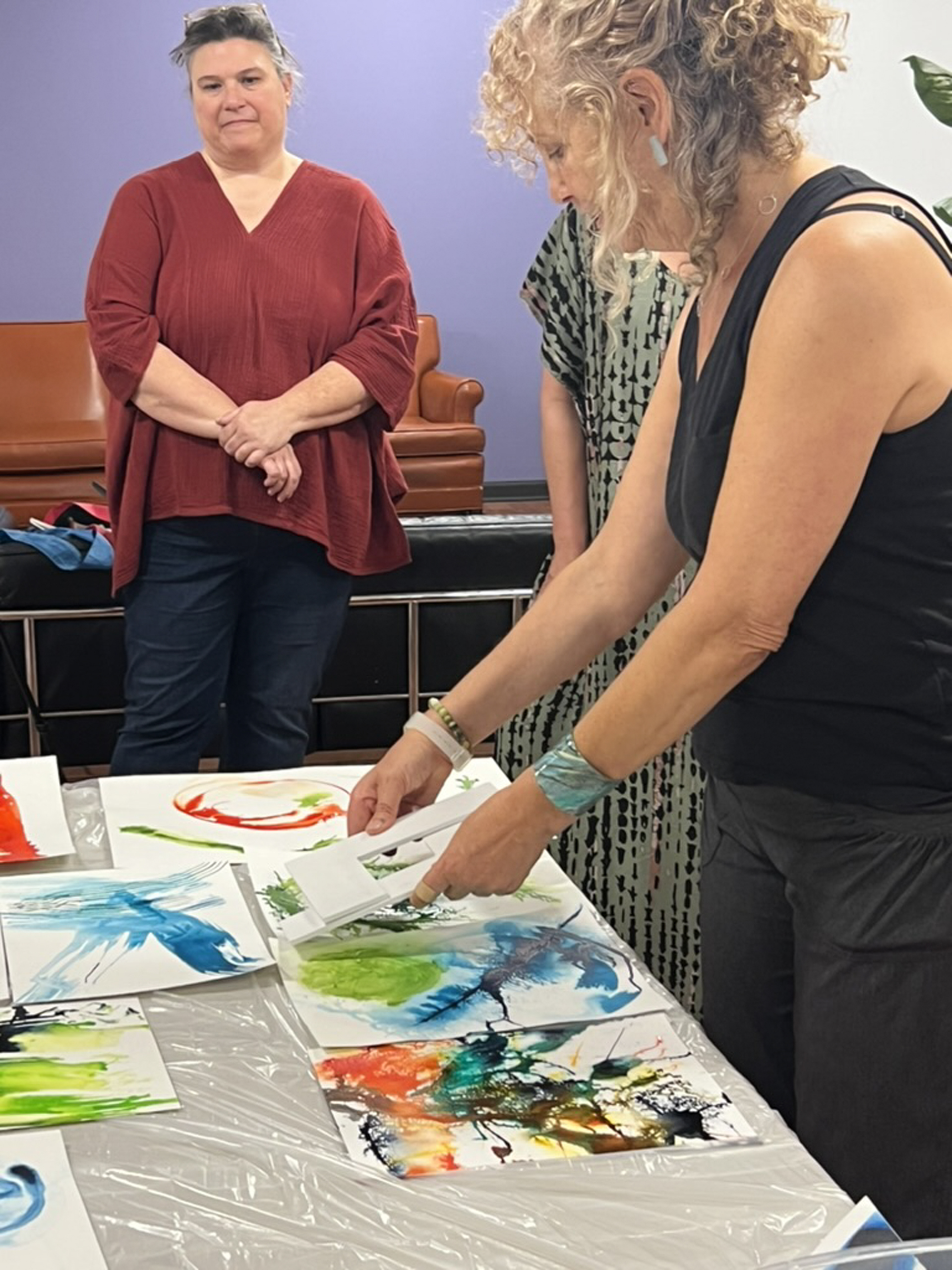



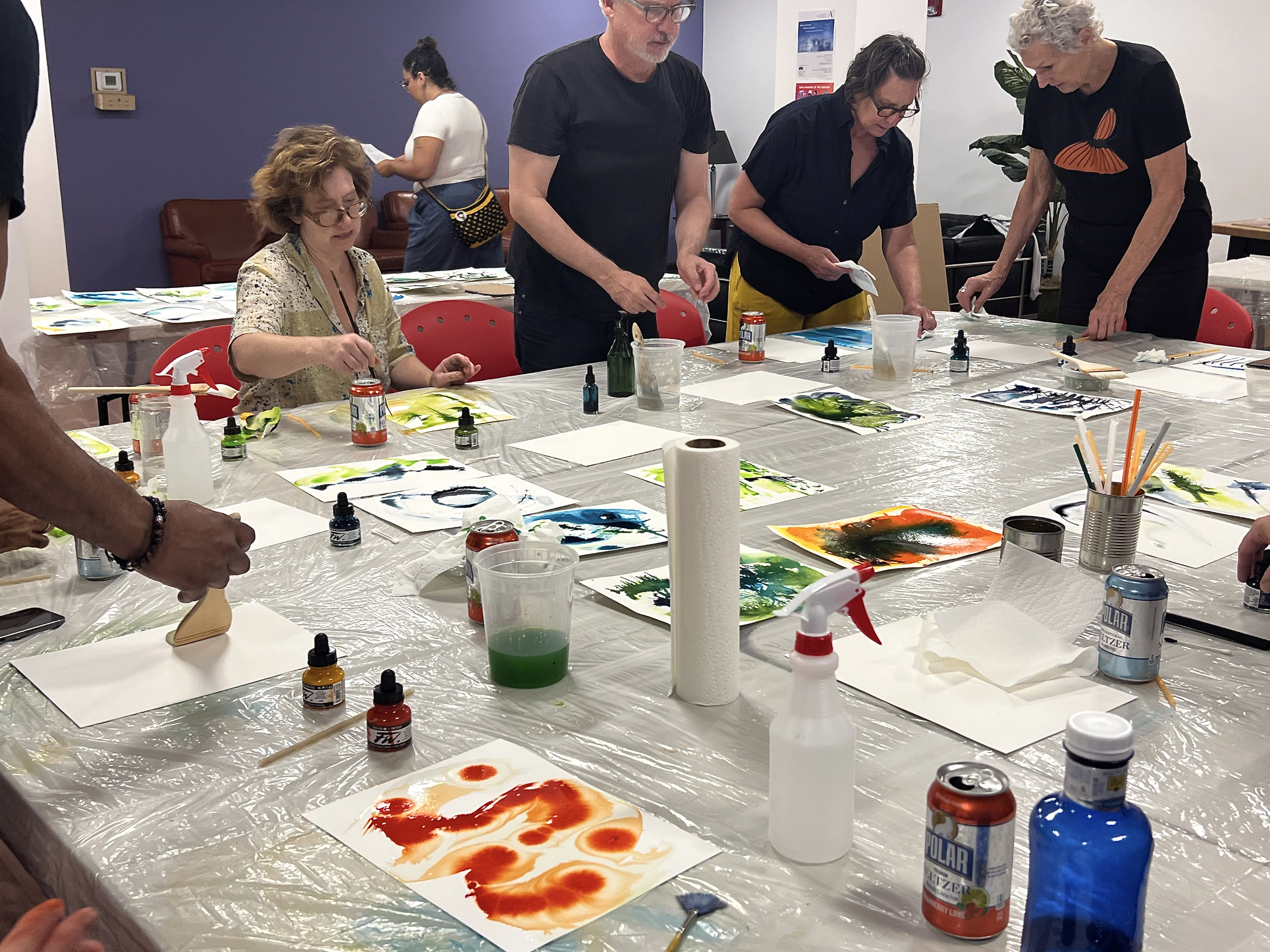



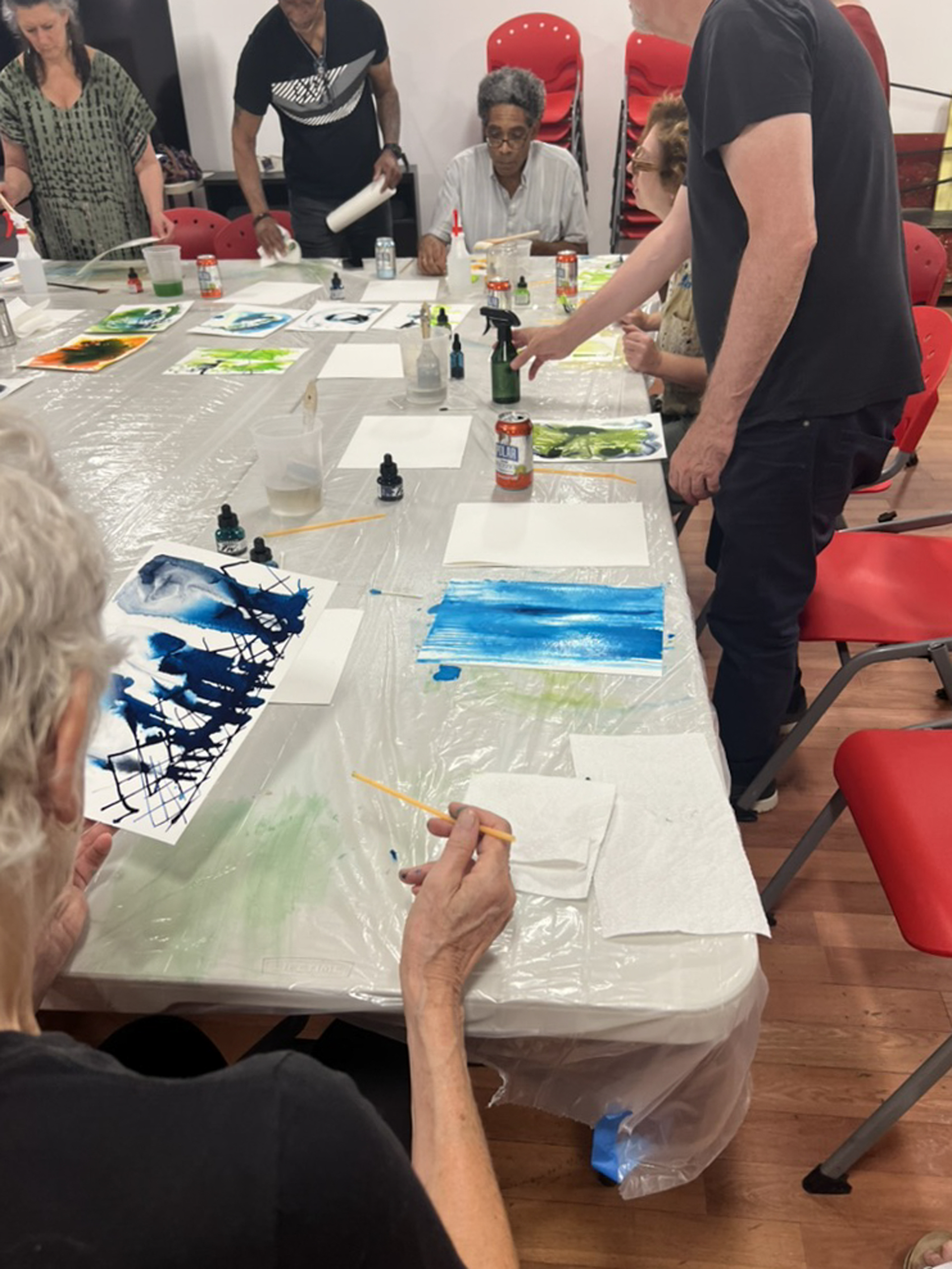


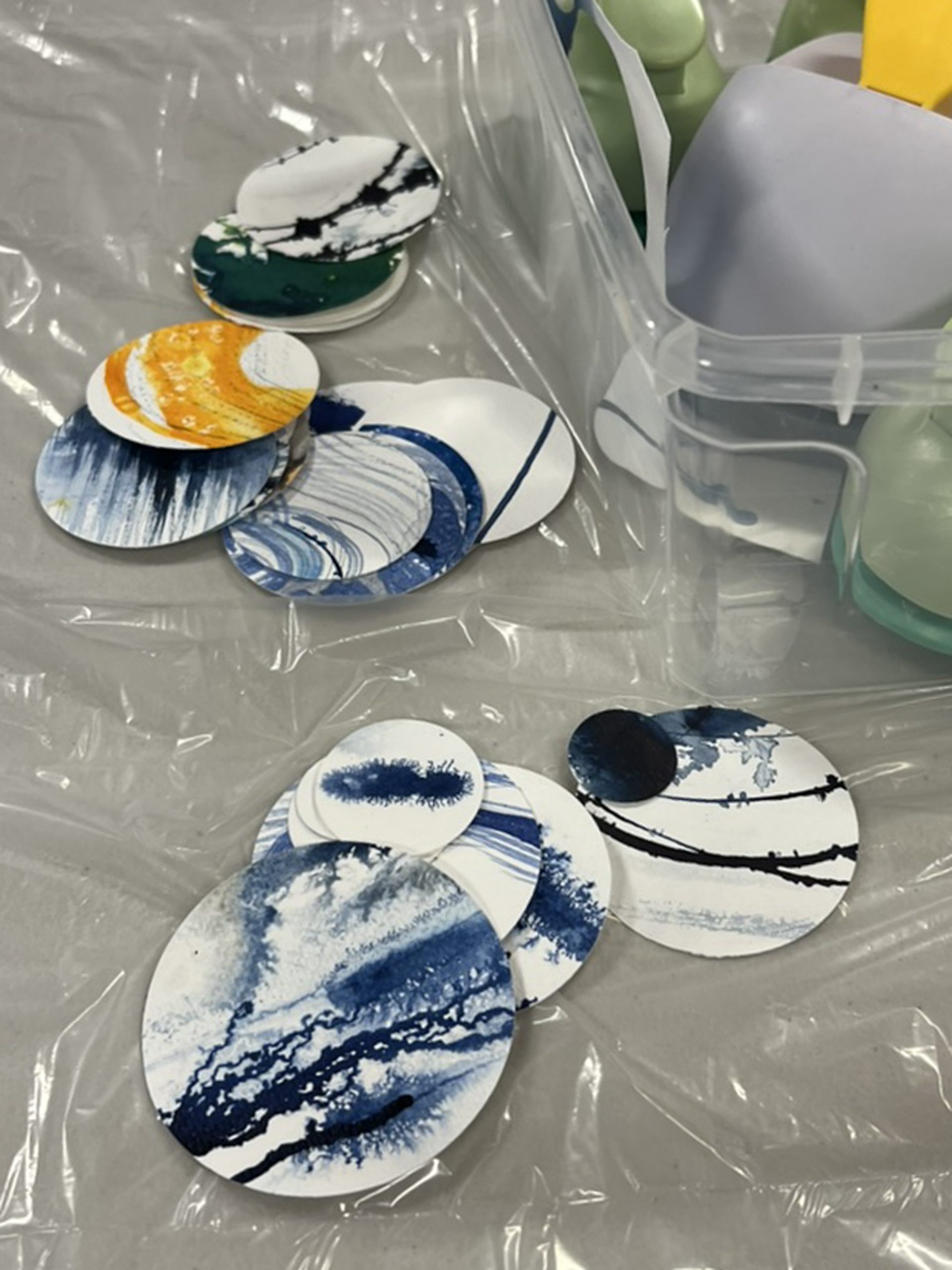
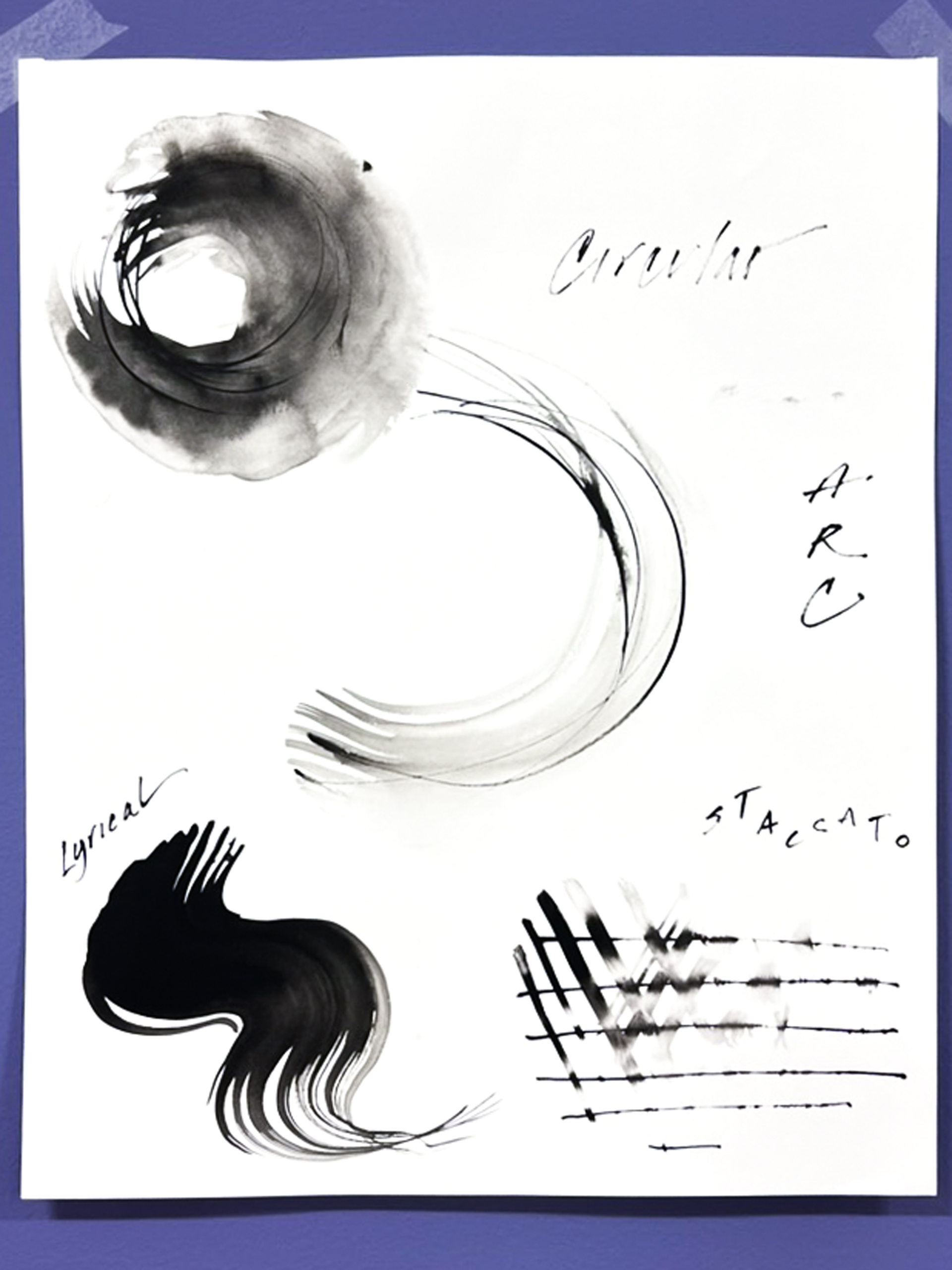
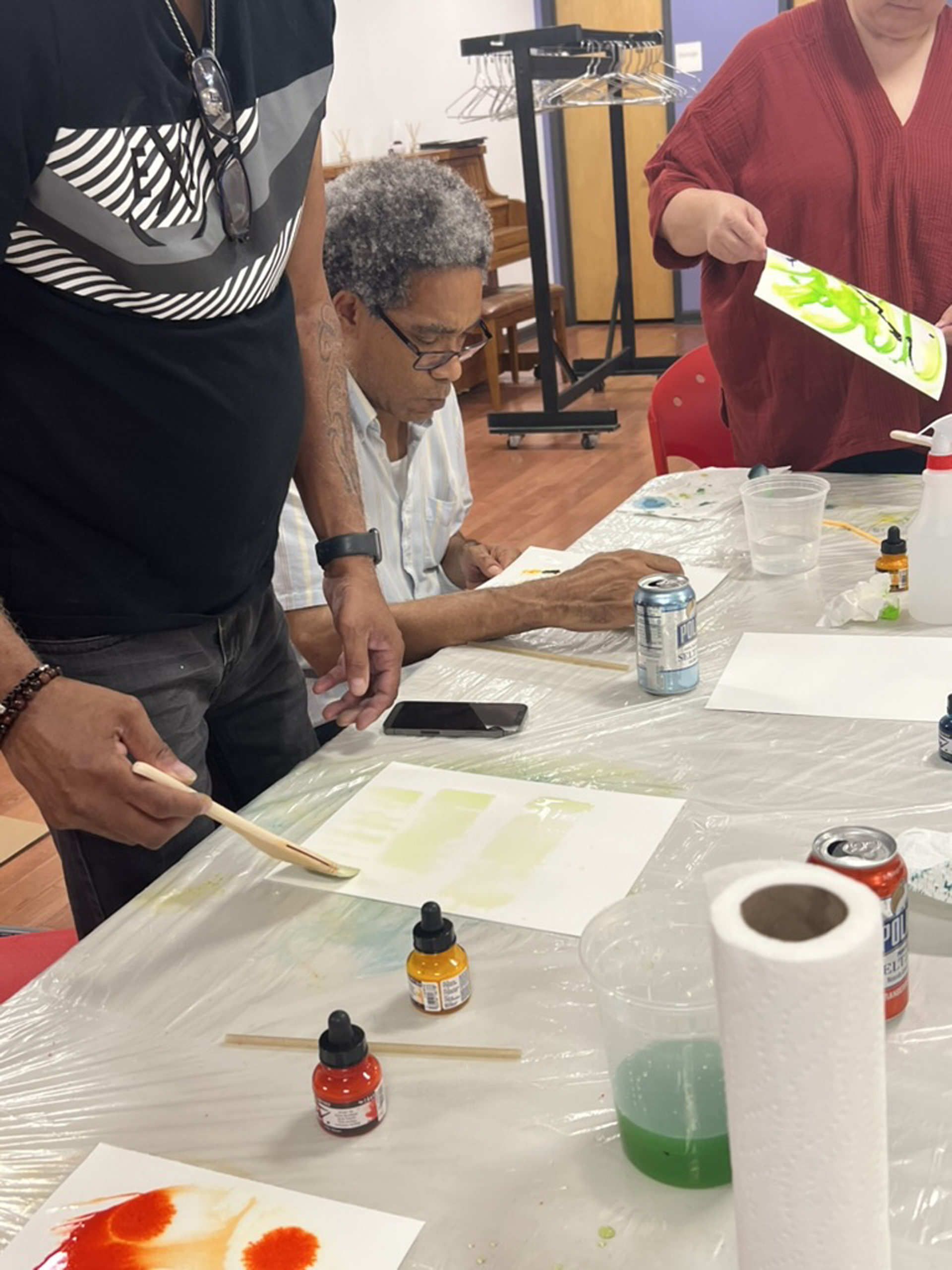




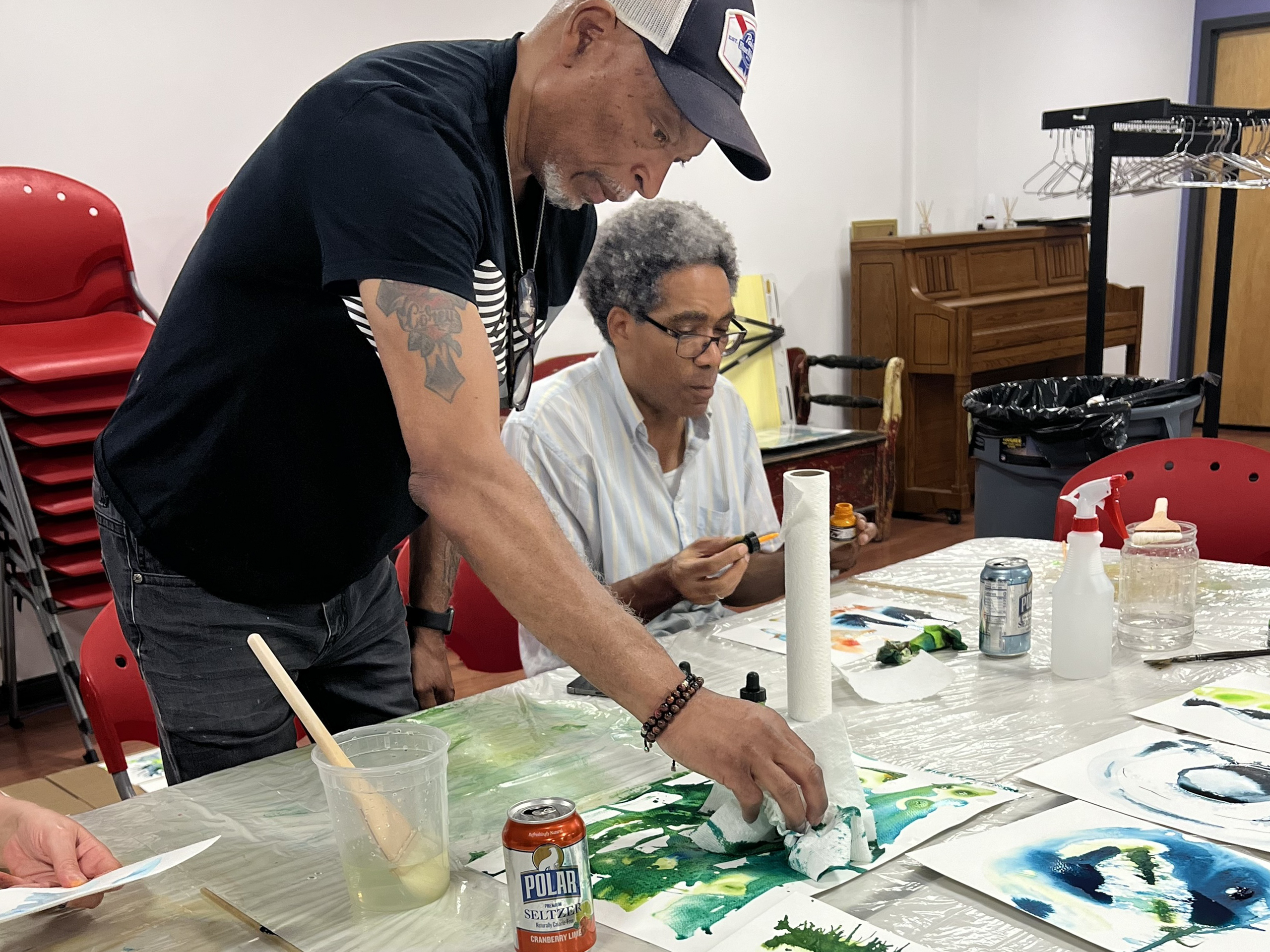


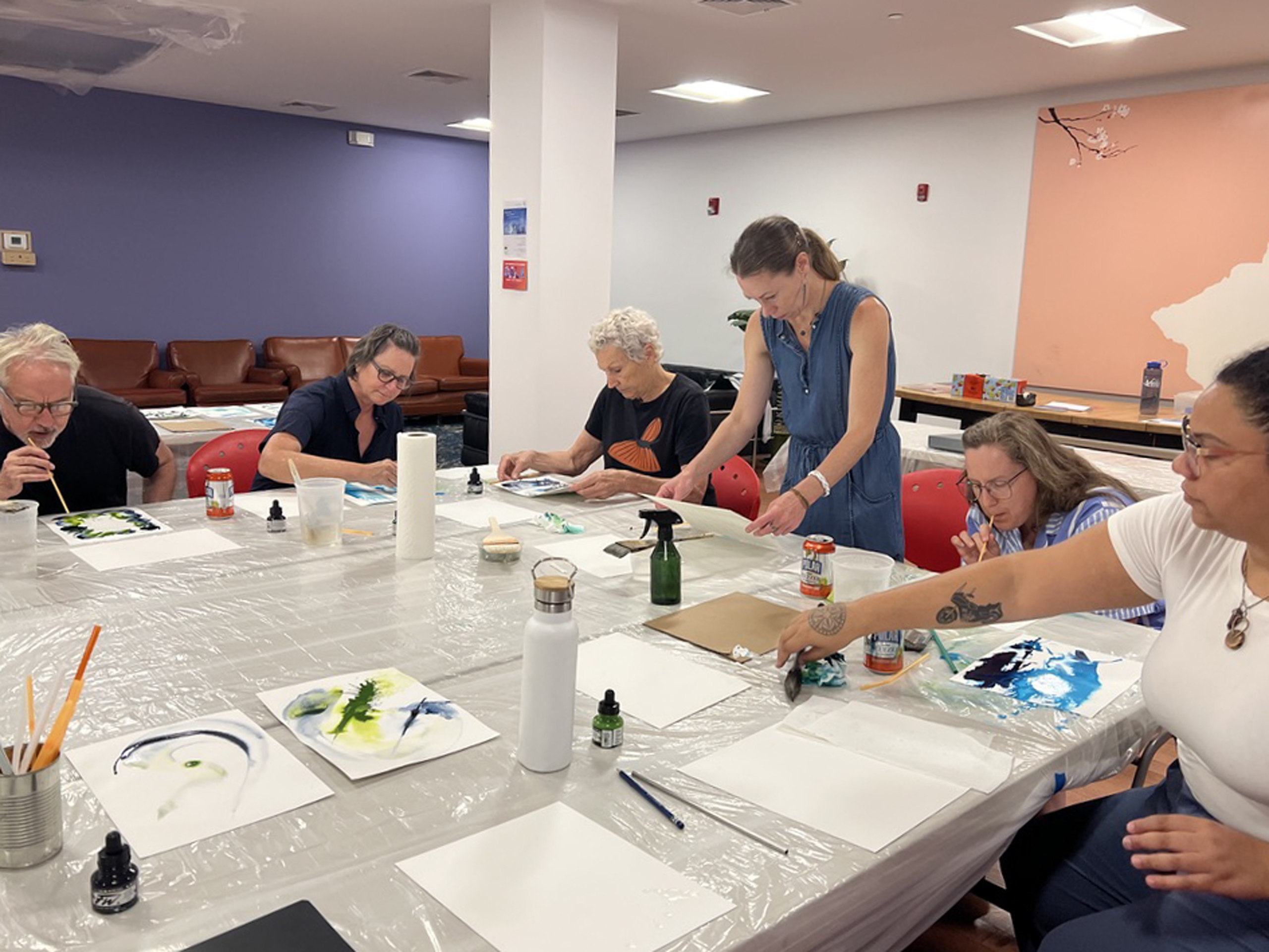
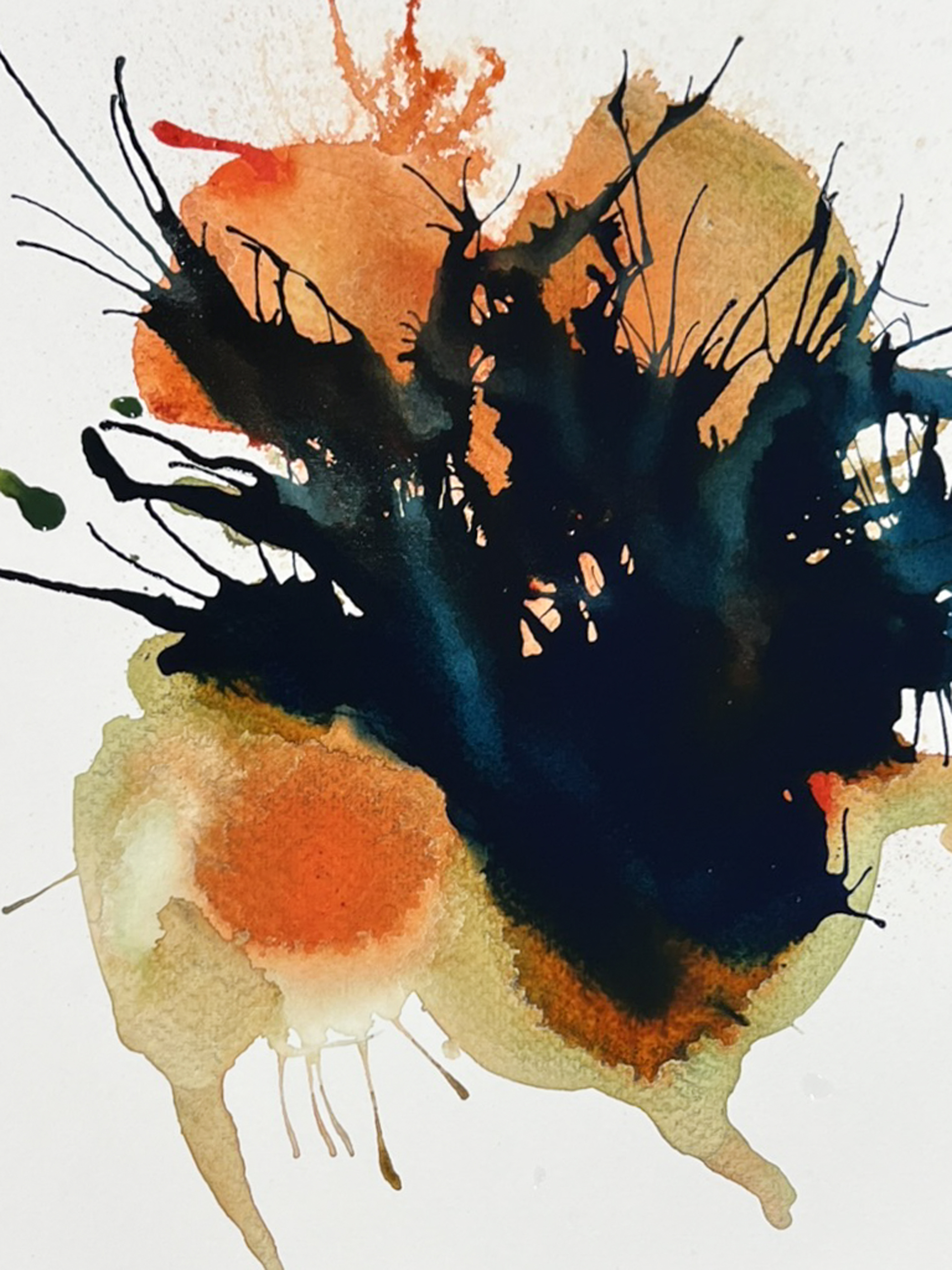



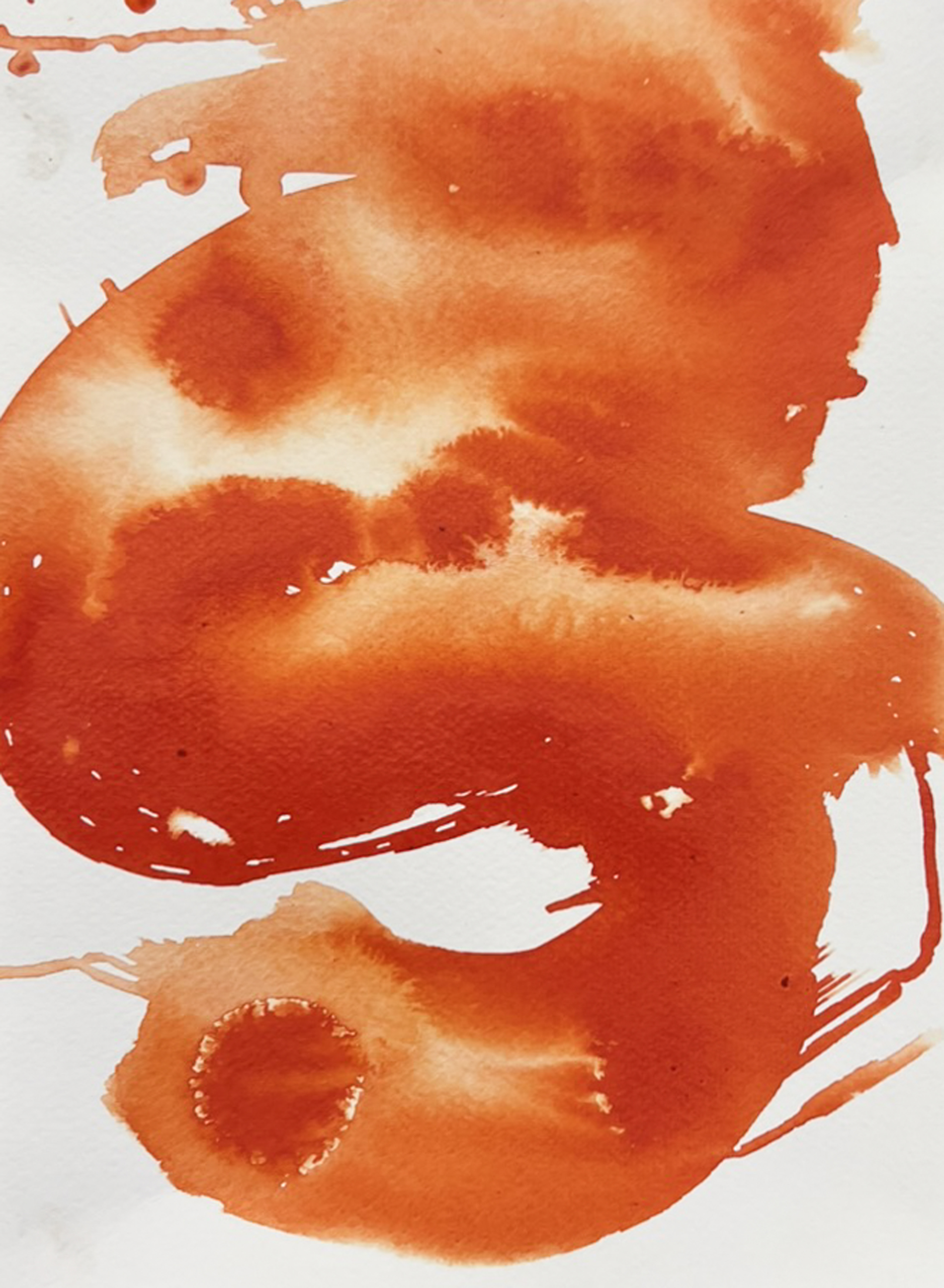
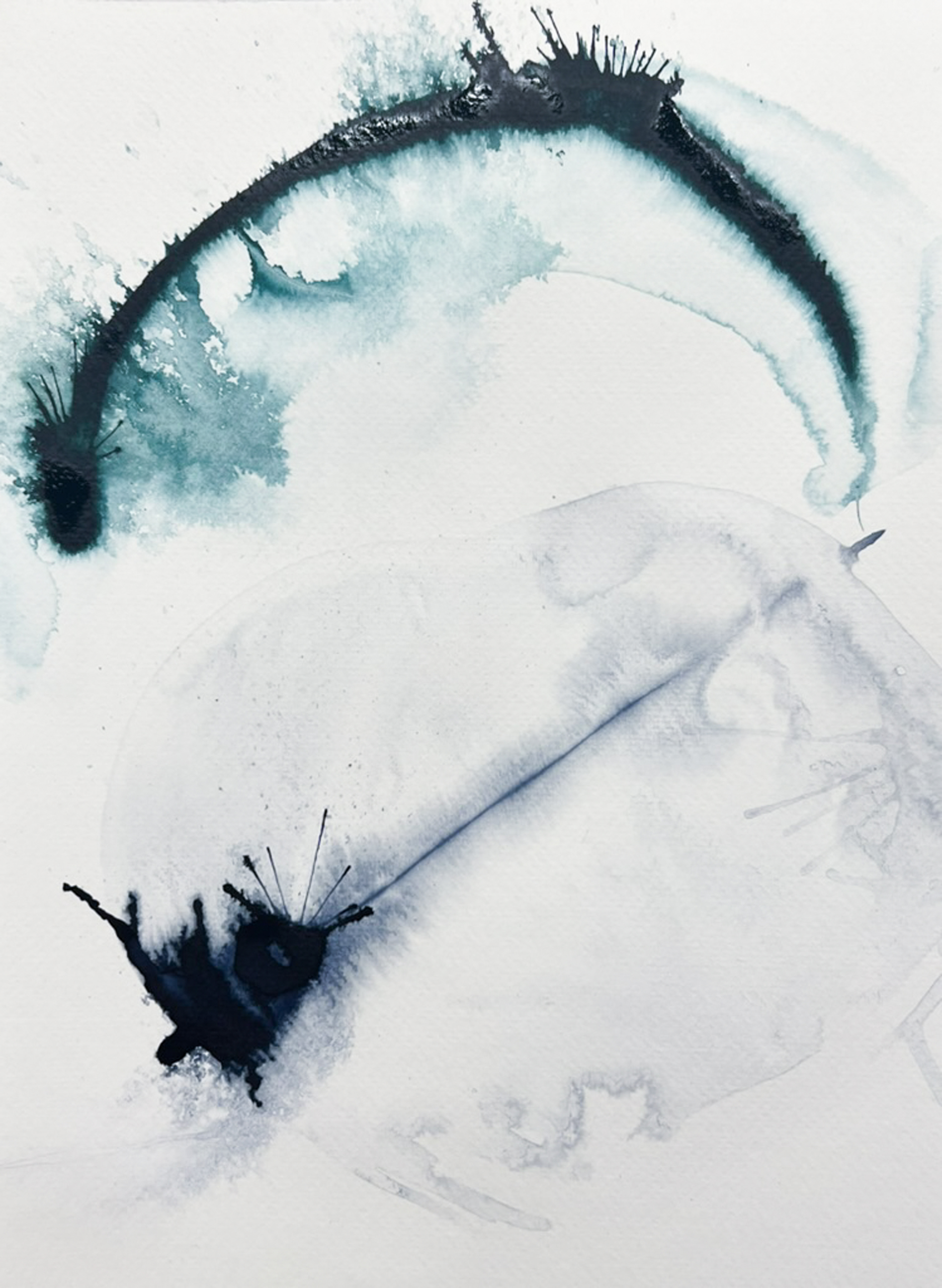
To Cleanse the River
A performance by Koyoltzintli
Sunday, August 18, 5:00pm
Starting at Ann Street Gallery
104 Ann Street, Newburgh, NY
A procession from Ann Street Gallery to the river and back including a participatory performance and elemental listening event at the waterfront with Koyoltzintli.
Free and open to the public. No reservations required.
In a soon to be dystopian reality, there will be an instrument that alongside mushrooms and algae will help decompose debris and plastic from the waters.
This instrument that emits sound frequencies that dissolve waste and bodily ailments (not) oddly enough sounds like a pre-american water whistle. So it happens that the answers to our future environmental and soul-based dilemmas are stored as artifacts in museums, when in fact they are ancient future technologies ready to assist us. conclusion : get those instruments out of the museum; let's hear them play!
Join Koyotzintli as we walk from the gallery to the river holding embracing gathering tuning aligning dissolving through sound.
Koyotzintli started making pre-columbian instruments from a place of grief; making and hearing them taught her about grief, as the environmentalist of the soul. It healed something in her, and since then, making has turned into inquiry: When were these instruments played, what rituals enveloped them, how did their rites of passages, and funerary rites sound? In addition, she explore pathways for indigenous and diasporic communities to reclaim these technologies, challenging colonial narratives through the essential act of listening.
Through crafting these instruments, Koyotztintli stitches together fragmented stories and revives one of the oldest and most obscure sonic heritages--Abya Yala's legacy. She seek guidance from celestial constellations as she shapes flute beings, water whistle beings, rattle beings, serpent beings--each endowed with unique patterns and frequencies. These inter-dimensional mechanisms are imbued with sonic codes, they are ancient future technologies, carrying memory about land and self.
MEETING POINT & PROCESSION
We will meet at 5:00pm inside Ann Street Gallery at 104 Ann Street, Newburgh.
Koyotzintli will lead a procession from Ann Street Gallery to the river, a .6 mile walk with a significant 100 feet of elevation change. Following her participatory performance and elemental listening event (about 40 mins), we will return to the gallery and replace the instrument within Koyotzintli’s constellation of seeds and ceramic figures at the Gallery.
For audience members who wish to meet the procession at the riverfront, please meet us at 5:15 at the gate to People’s Park at the bottom of Washington Street, next to the boat launch. Parking is available in the ferry parking lot,as indicated on the map posted below for Glacier Elegy Newburgh.
Koyotzintli will lead a procession from Ann Street Gallery to the river, a .6 mile walk with a significant 100 feet of elevation change. Following her participatory performance and elemental listening event (about 40 mins), we will return to the gallery and replace the instrument within Koyotzintli’s constellation of seeds and ceramic figures at the Gallery.
For audience members who wish to meet the procession at the riverfront, please meet us at 5:15 at the gate to People’s Park at the bottom of Washington Street, next to the boat launch. Parking is available in the ferry parking lot,as indicated on the map posted below for Glacier Elegy Newburgh.
Koyoltzintli, is an interdisciplinary artist, healer, and educator living in NY. She grew up on the pacific coast and the Andean mountains in Ecuador, these are geographies that permeate her work. She focuses on sound, ancestral technologies, ritual, and storytelling through collaborative processes and personal narratives. Nominated for Prix Pictet in 2019, and 2023 her work has been exhibited in the National Portrait Gallery in Washington, DC, the United Nations, Parish Art Museum, Princeton University, Aperture Foundation in NYC, and Paris Photo, She has had two solo shows at Miyako Yoshinaga Gallery and a solo show at Leila Greiche in 2023. She has taught at CalArts, SVA, ICP, and CUNY. Koyoltzintli, has received multiple awards and fellowships including the Musée du Quai Branly in Paris, NYFA, We Woman and most recently, the Latinx Artist Fellowship by US Latinx Art Forum (USLAF). Her first monograph Other Stories was published in 2017 by Autograph ABP. Her work was featured in the Native issue of Aperture Magazine (no. 240) and was included in the book Latinx Photography in the United States by Elizabeth Ferrer former chief curator at BRIC. Koyoltzintli has performed at various places among them, Whitney Museum, Wave Hill, Socrates Park, Brooklyn Museum, Queens Museum.
https://koyoltzintli.com/
@koyotzintli
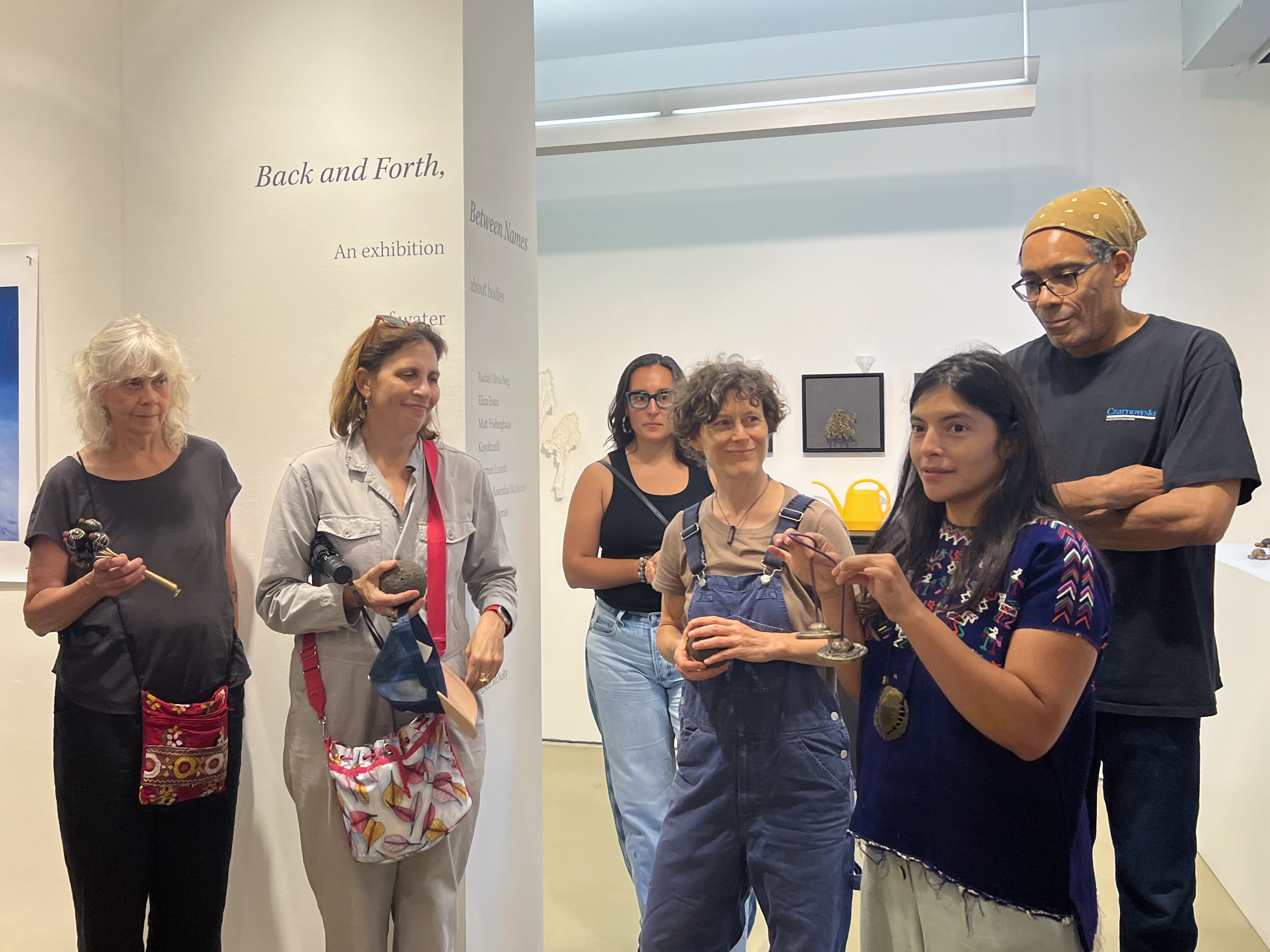


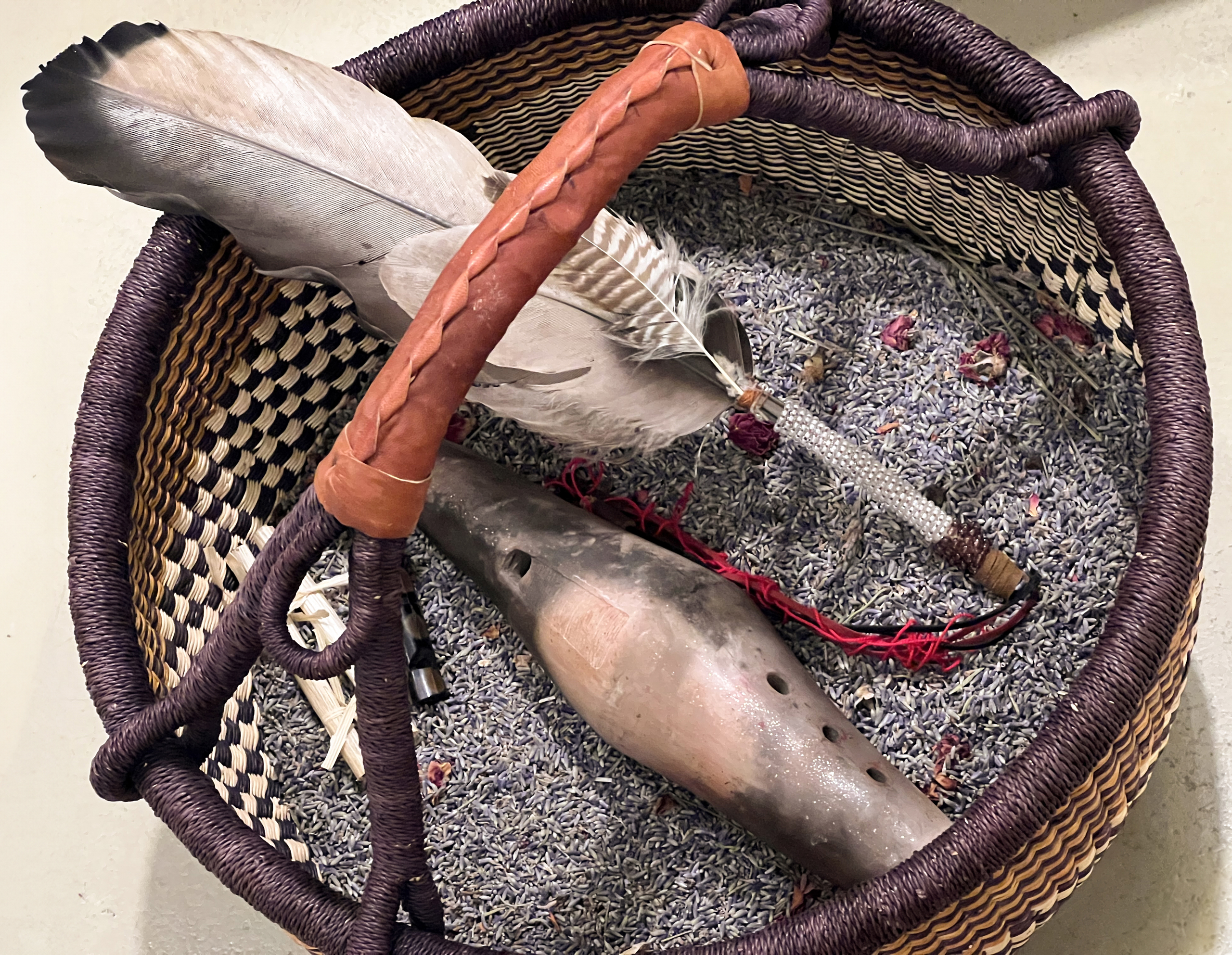
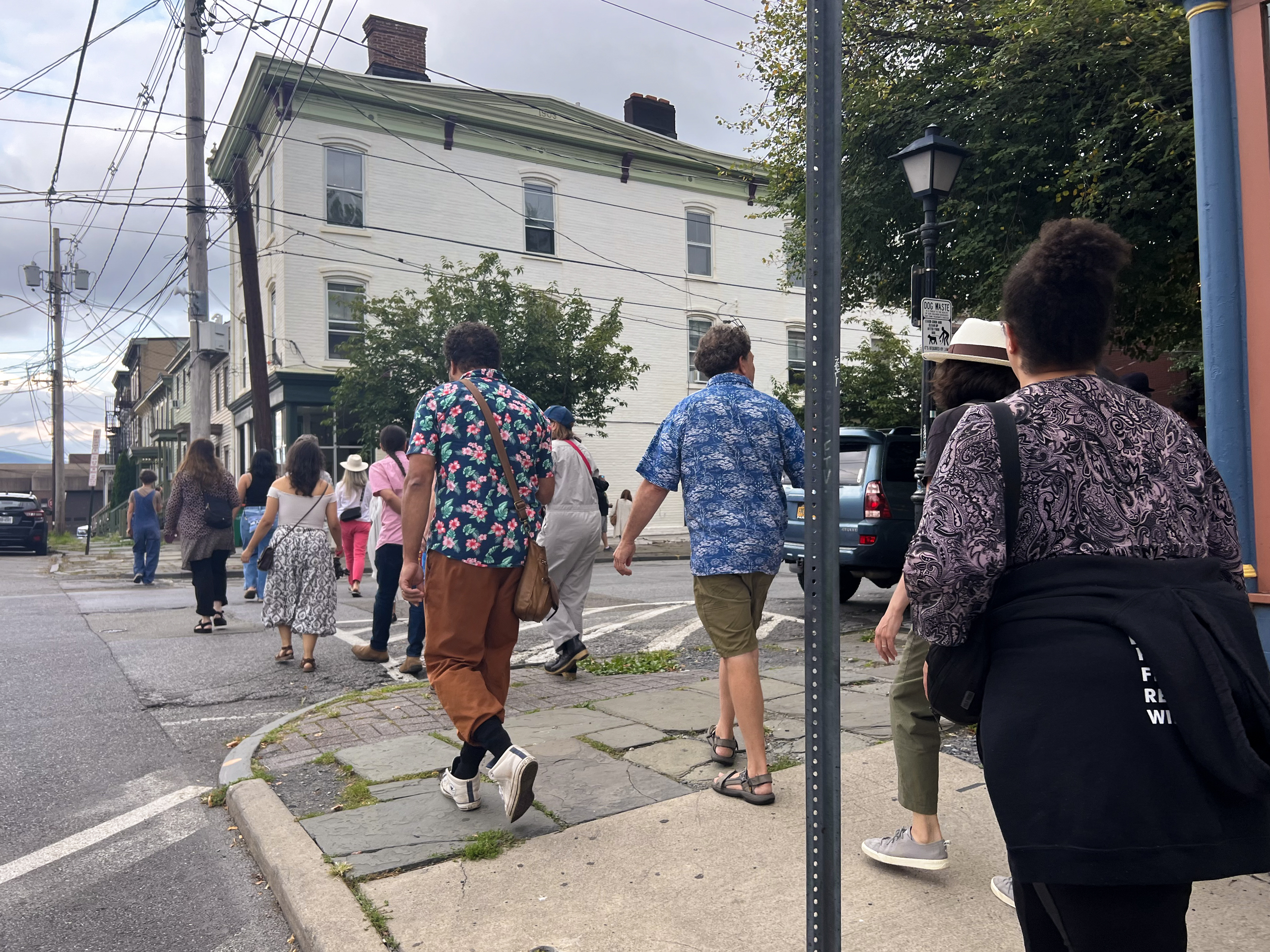
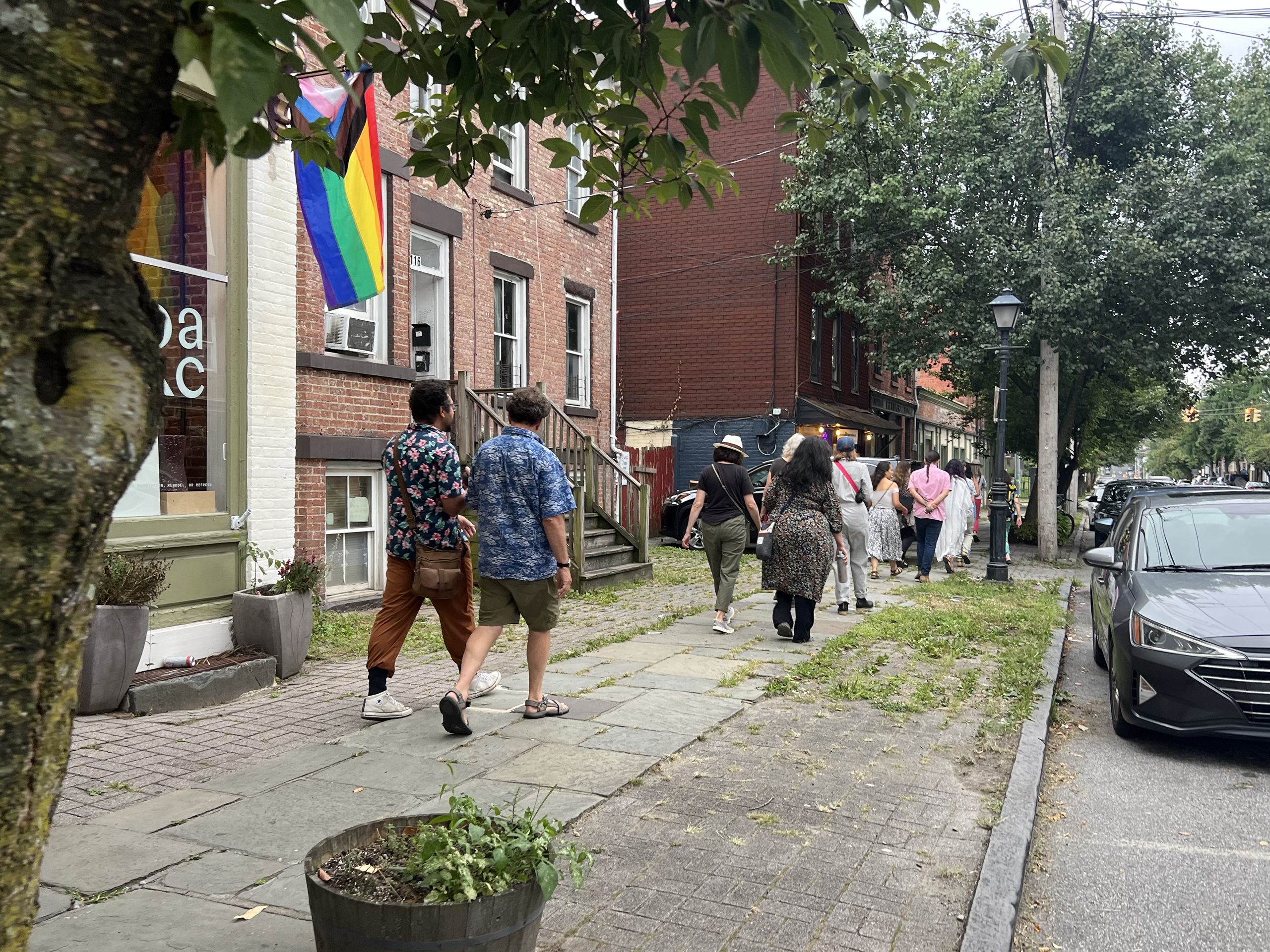
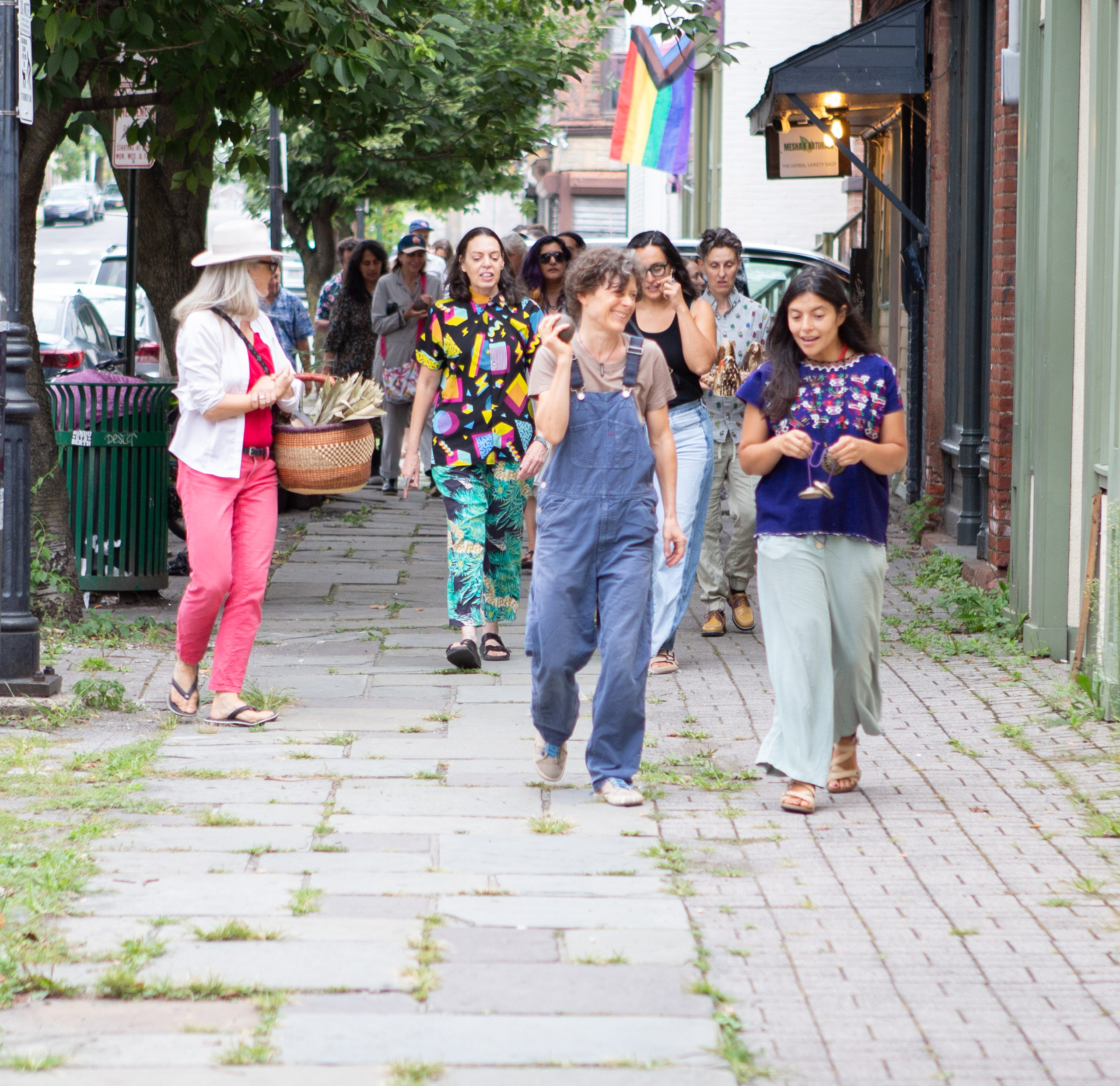
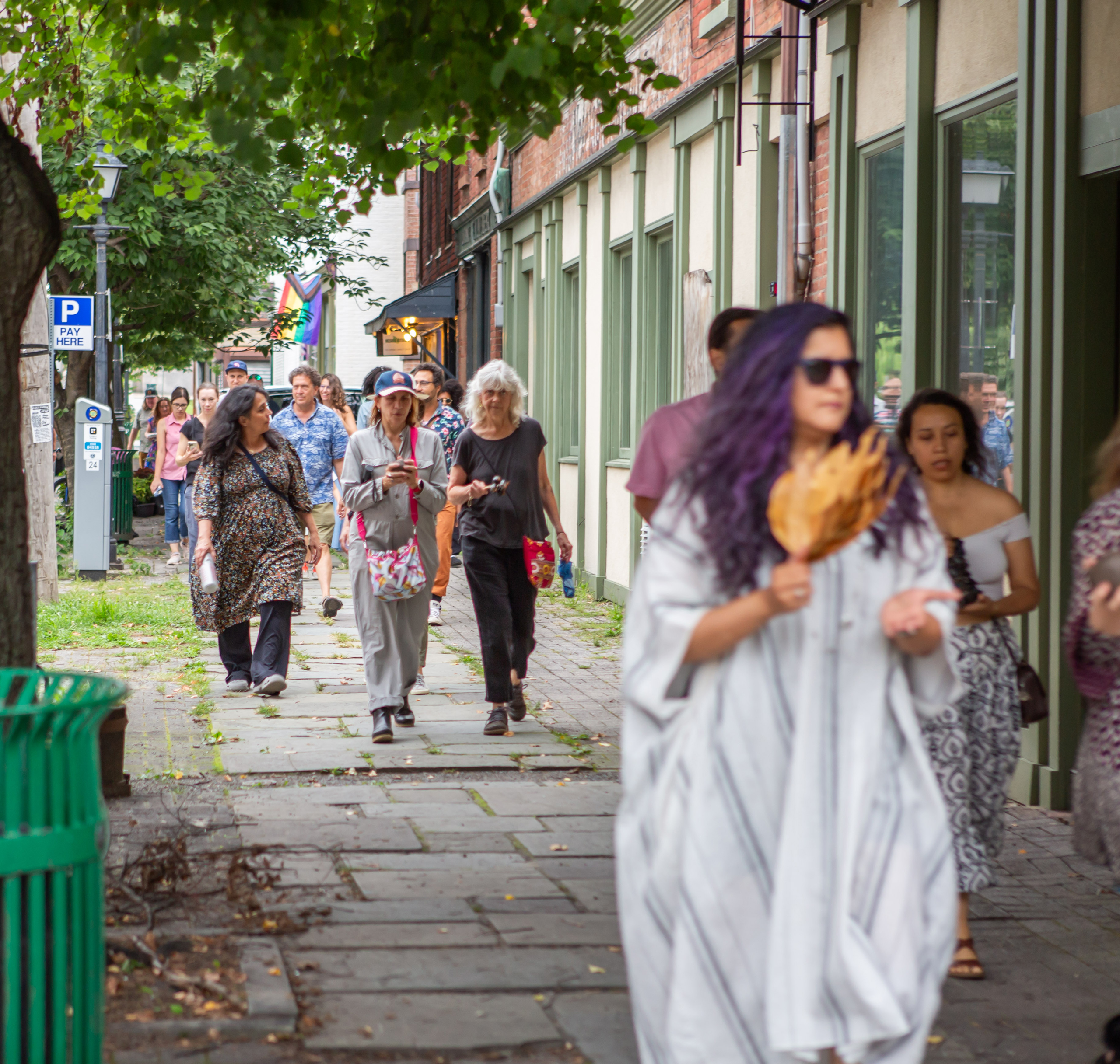


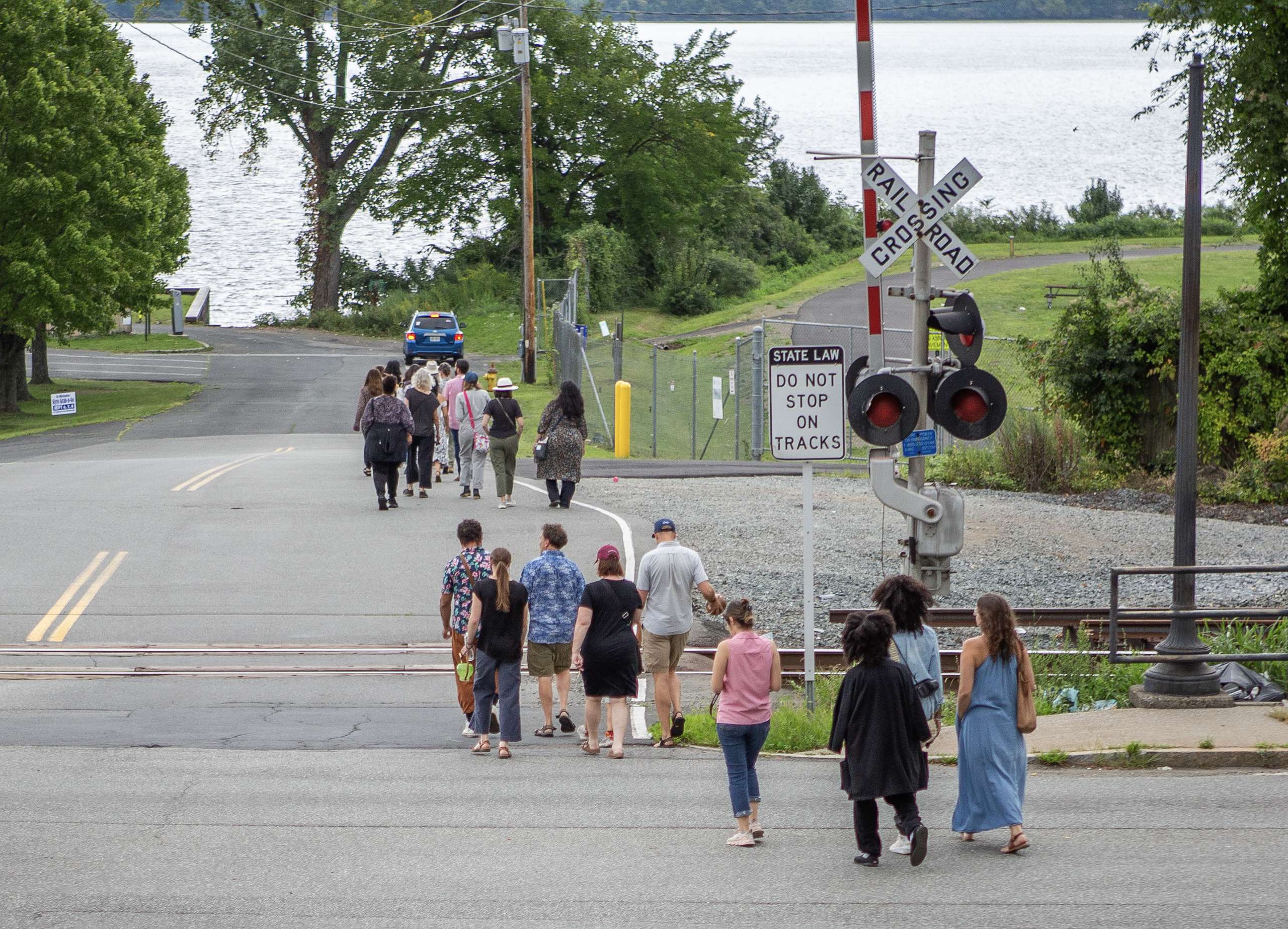

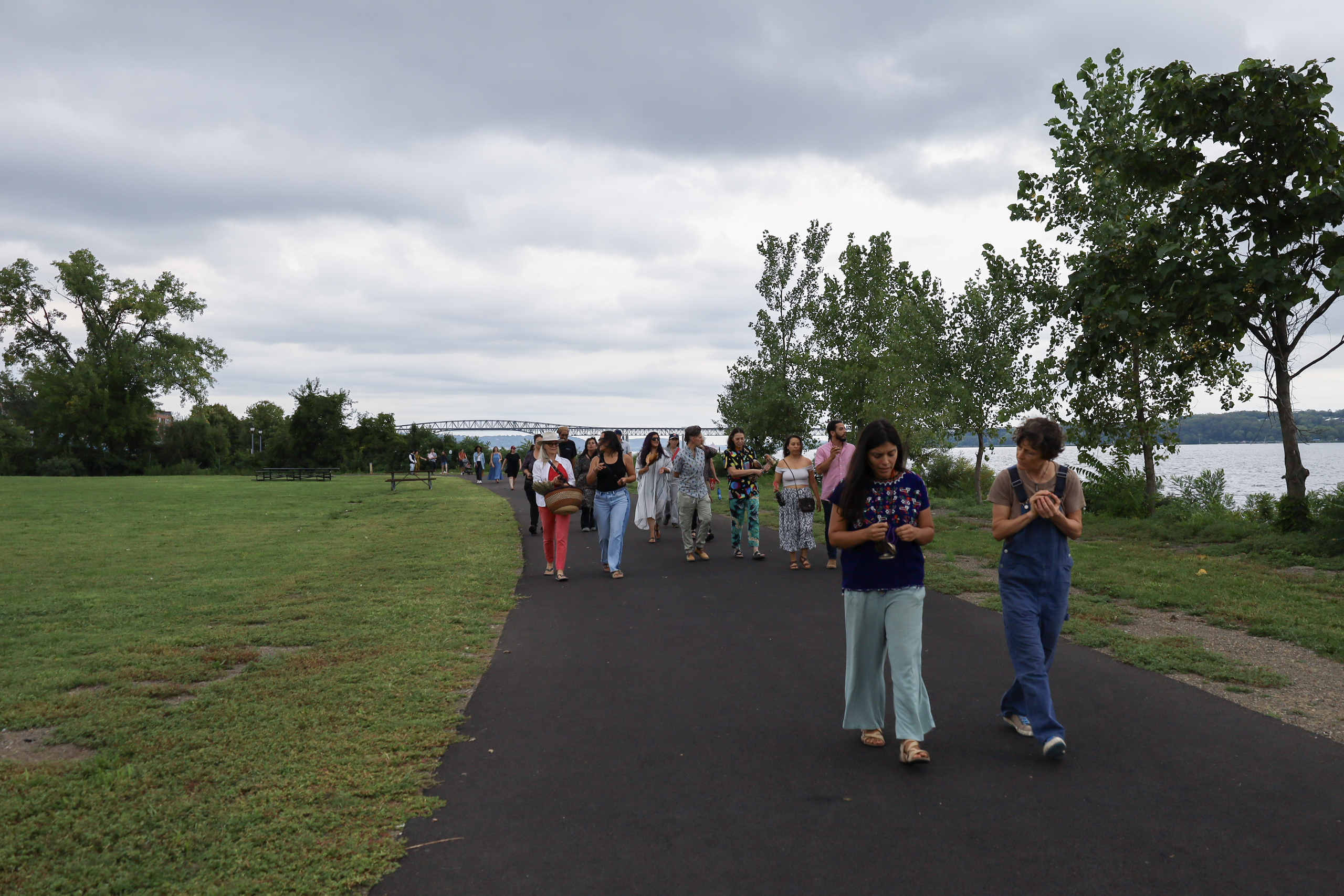




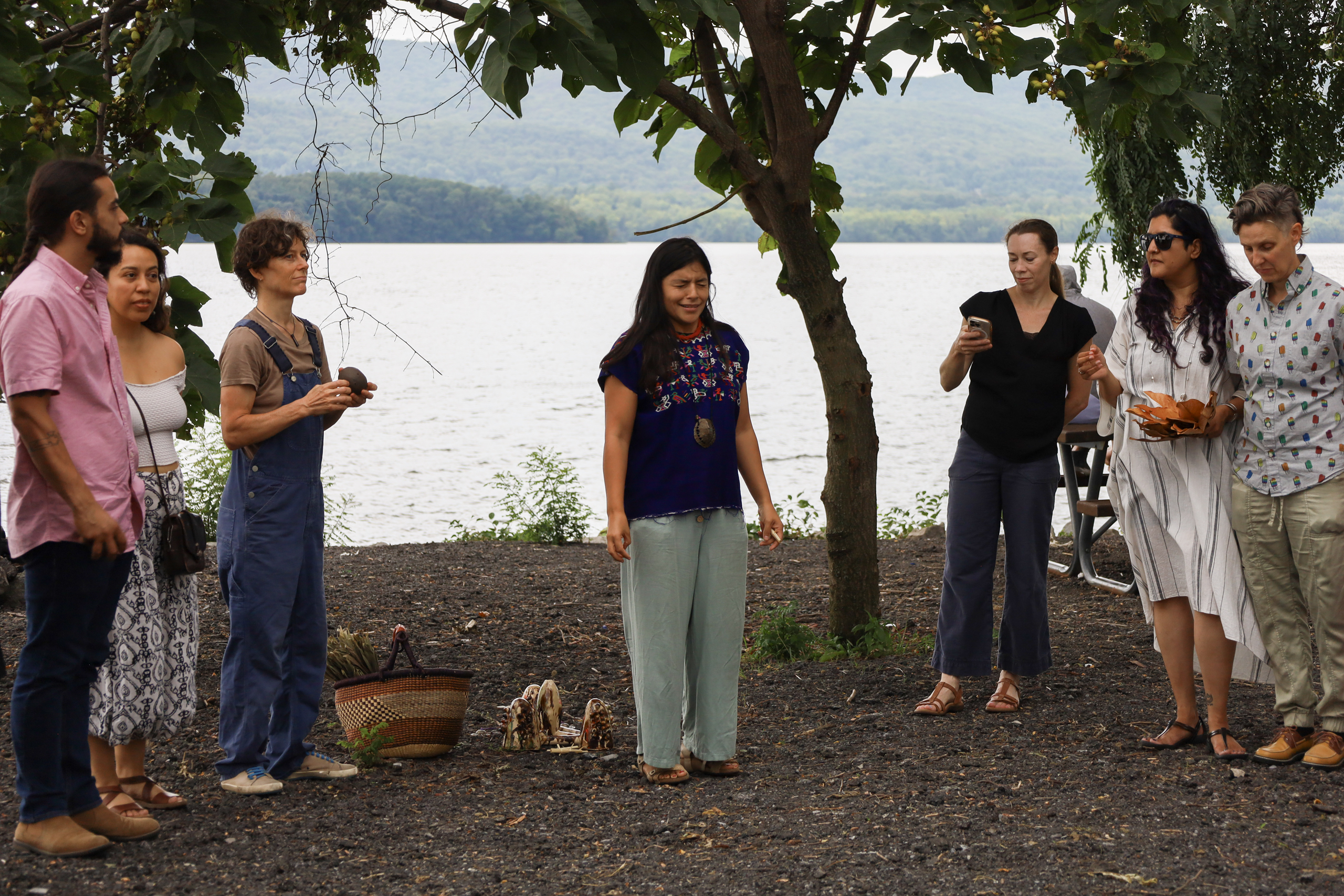




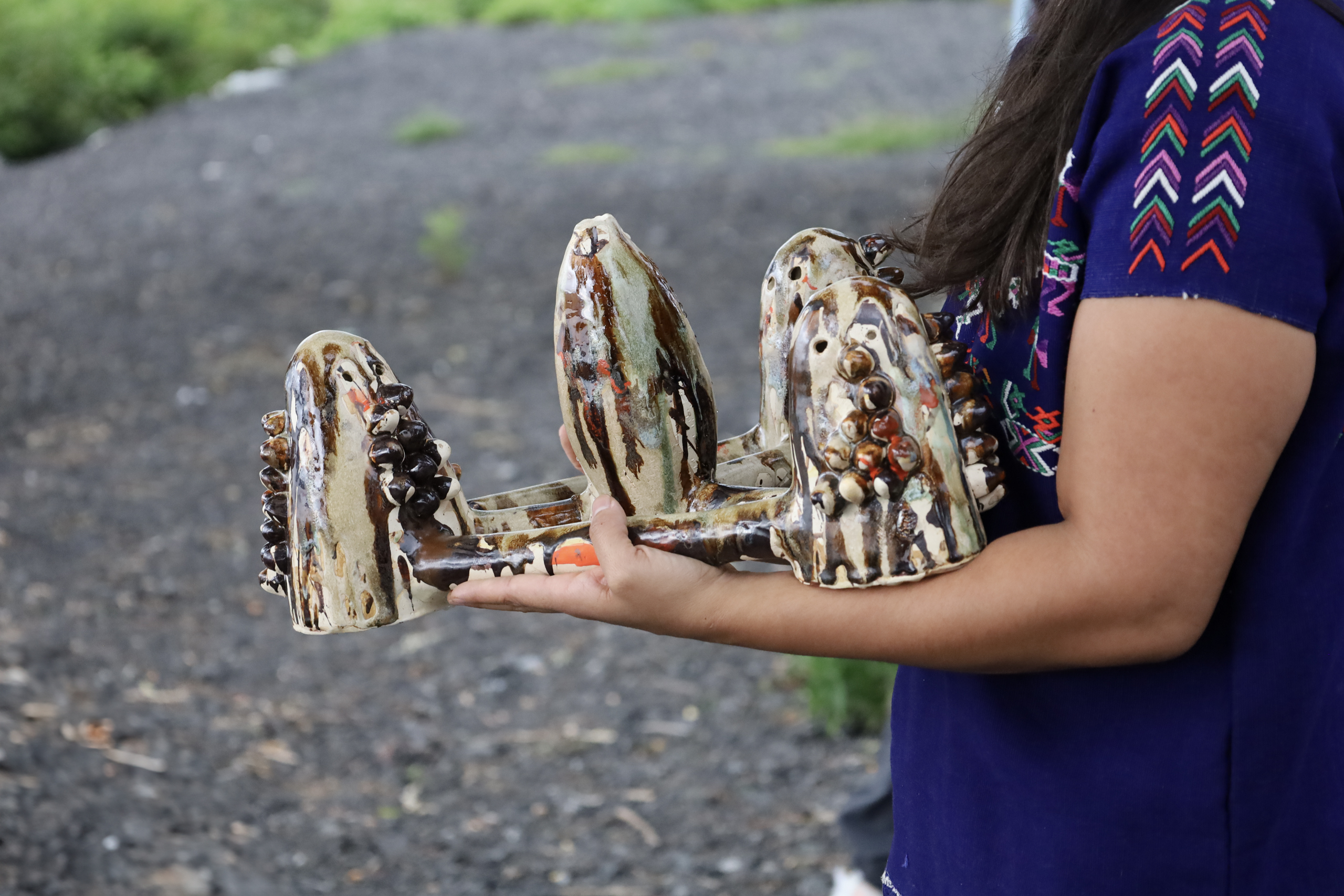
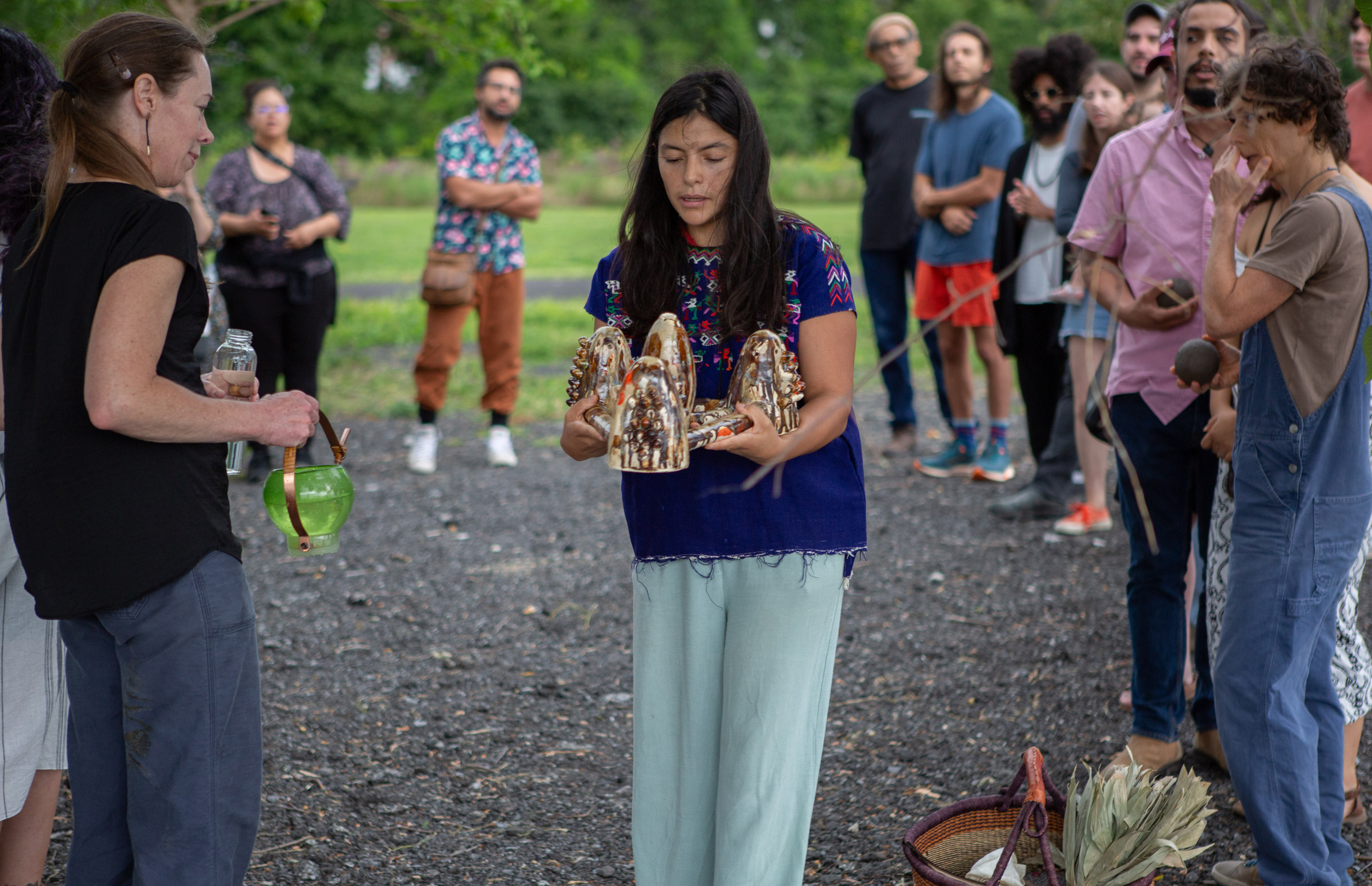
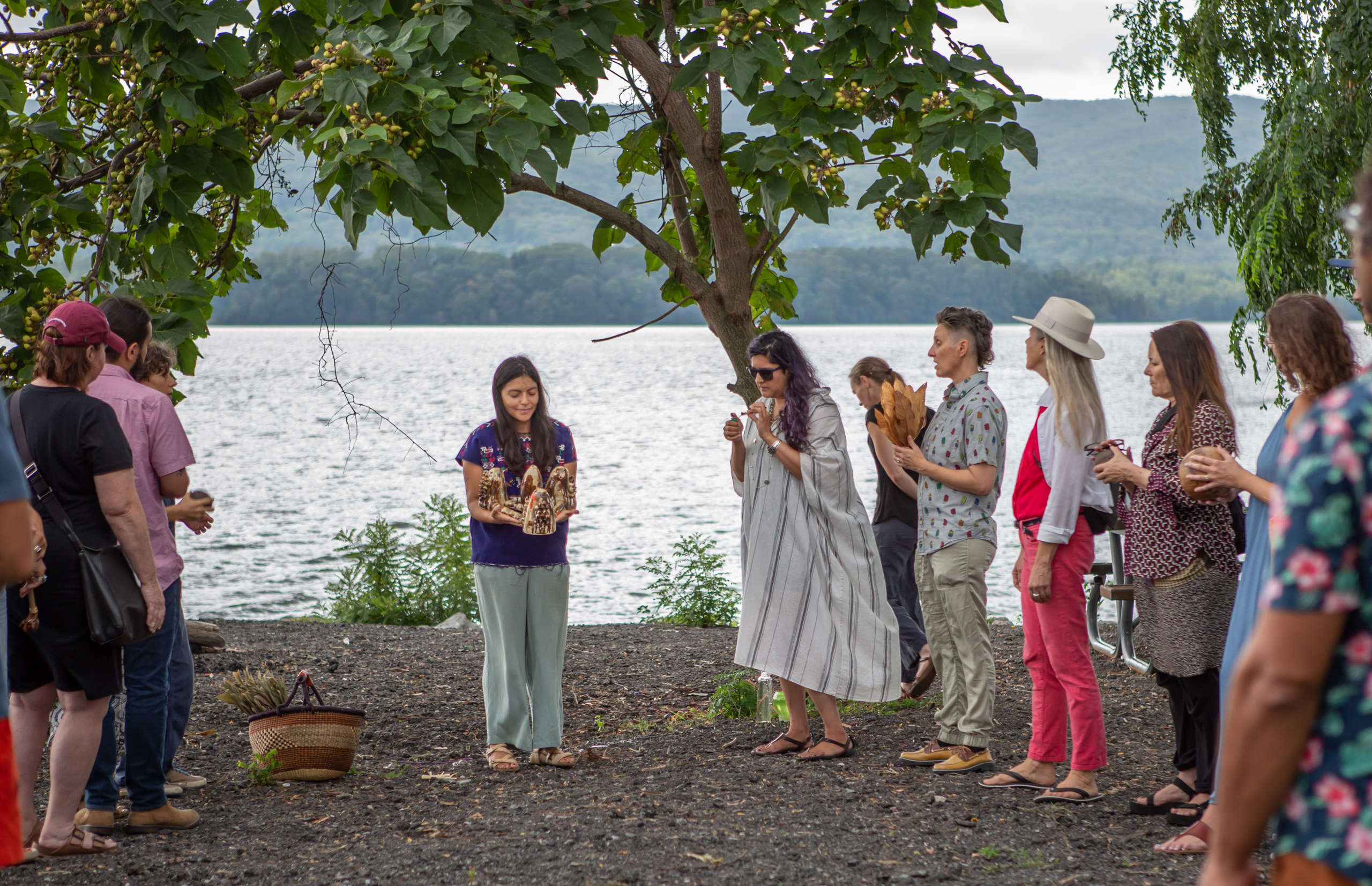
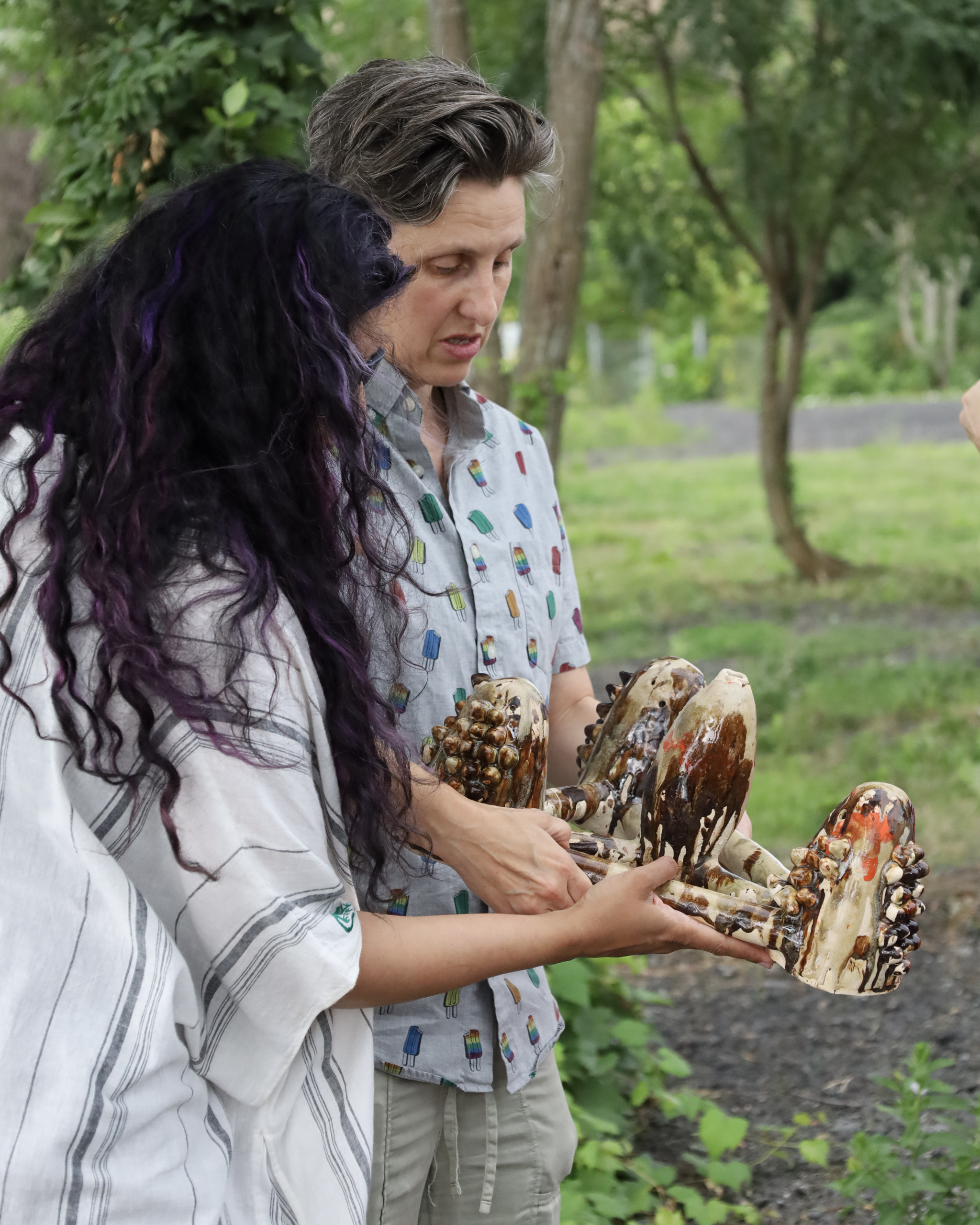


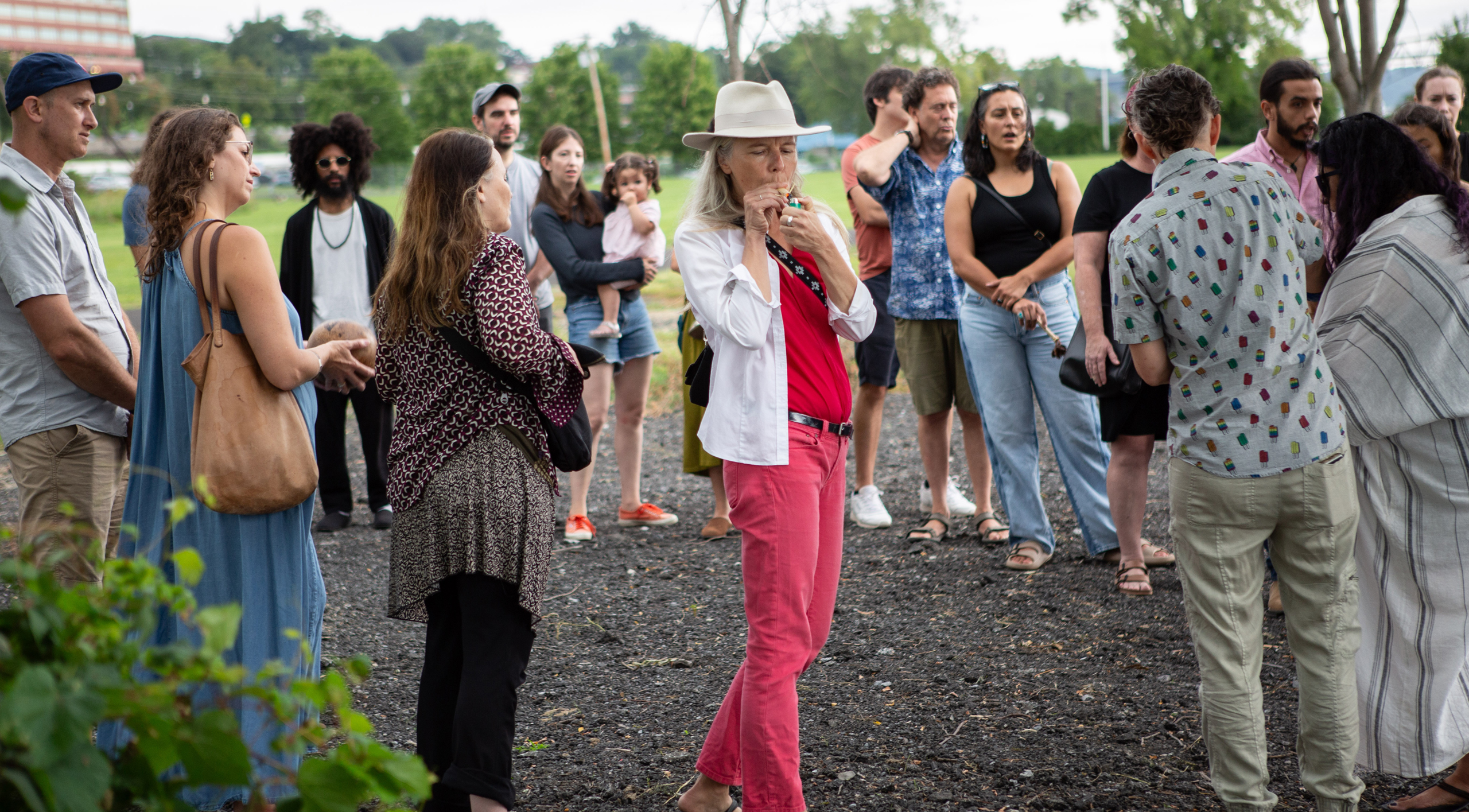

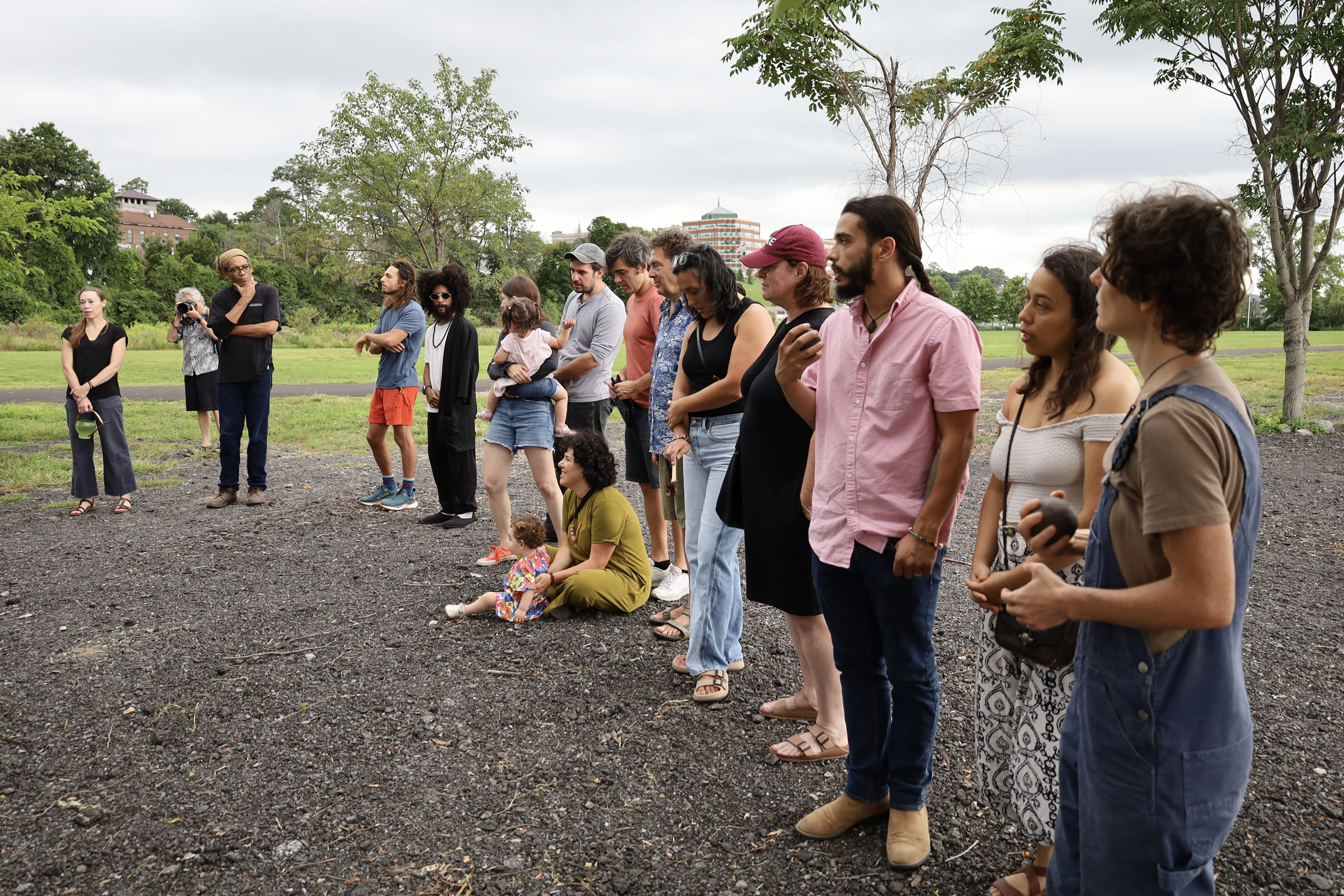

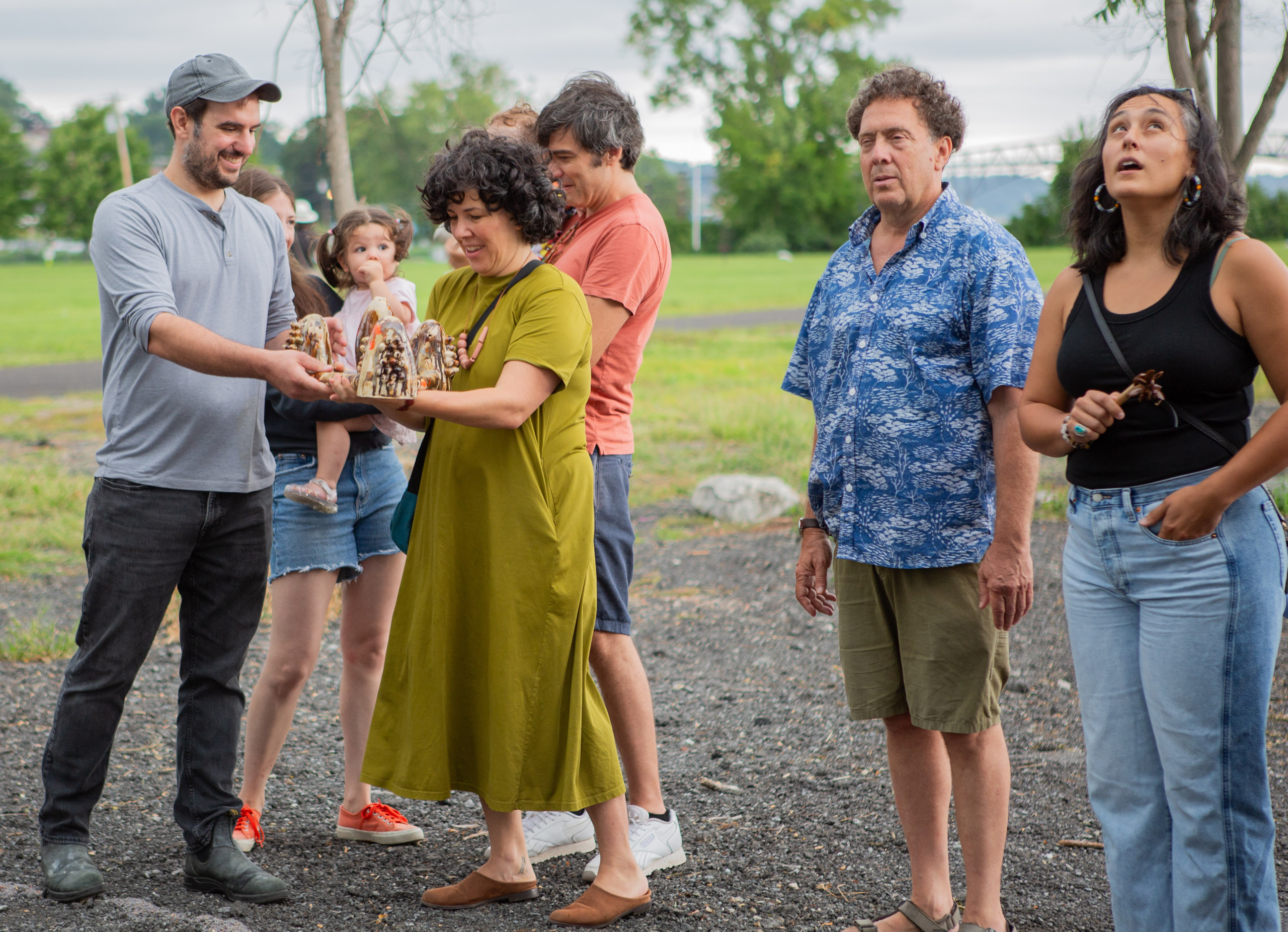

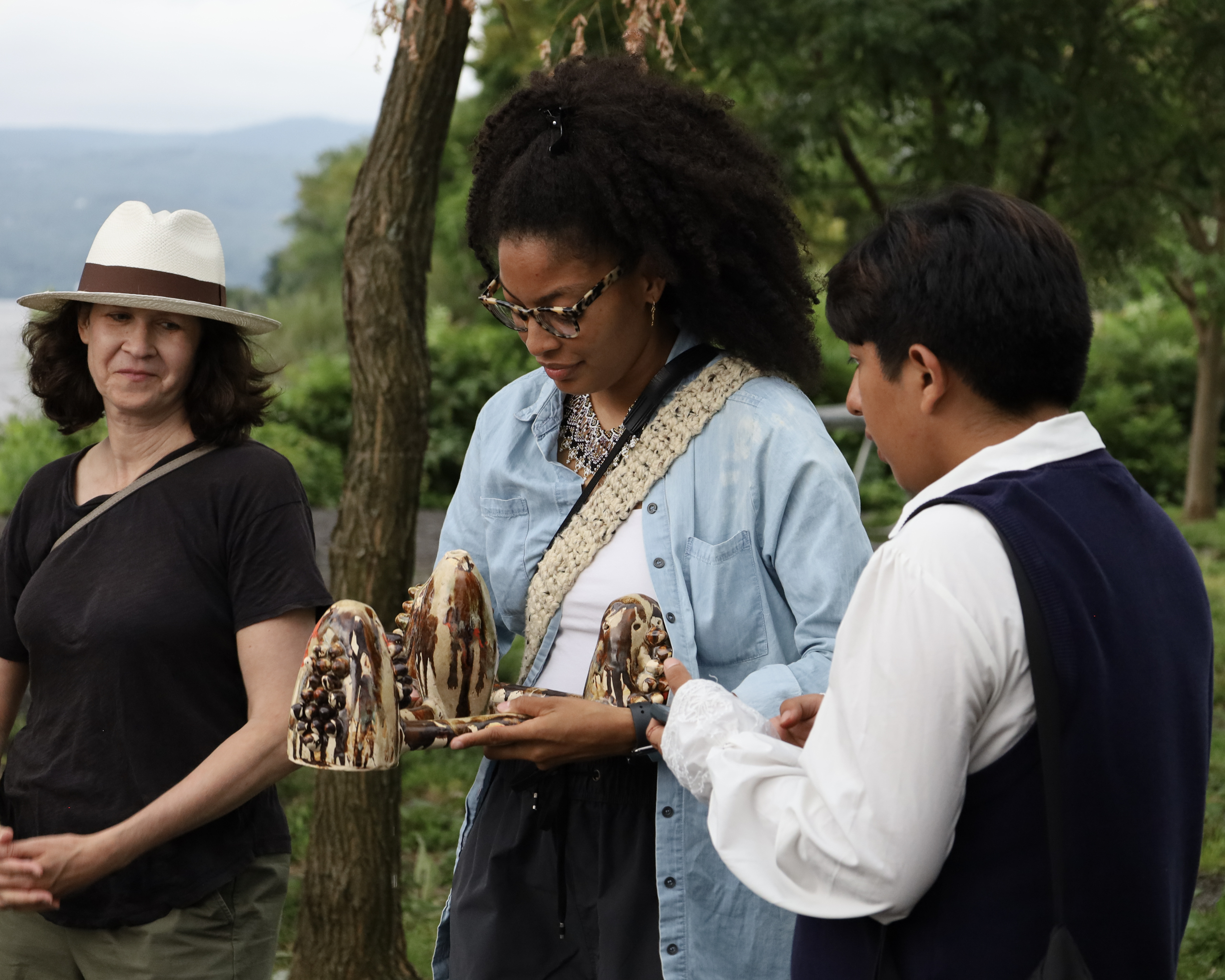
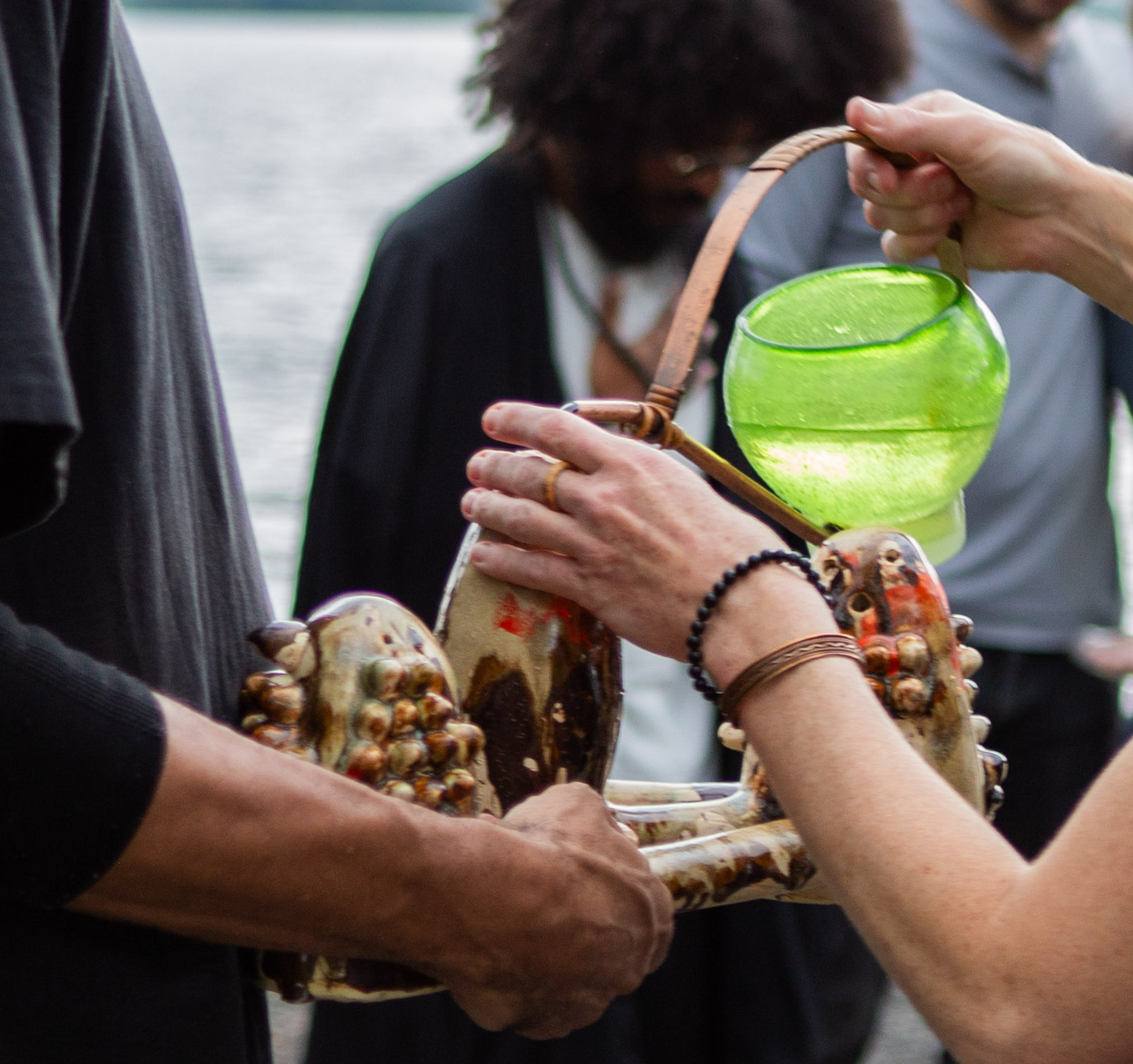

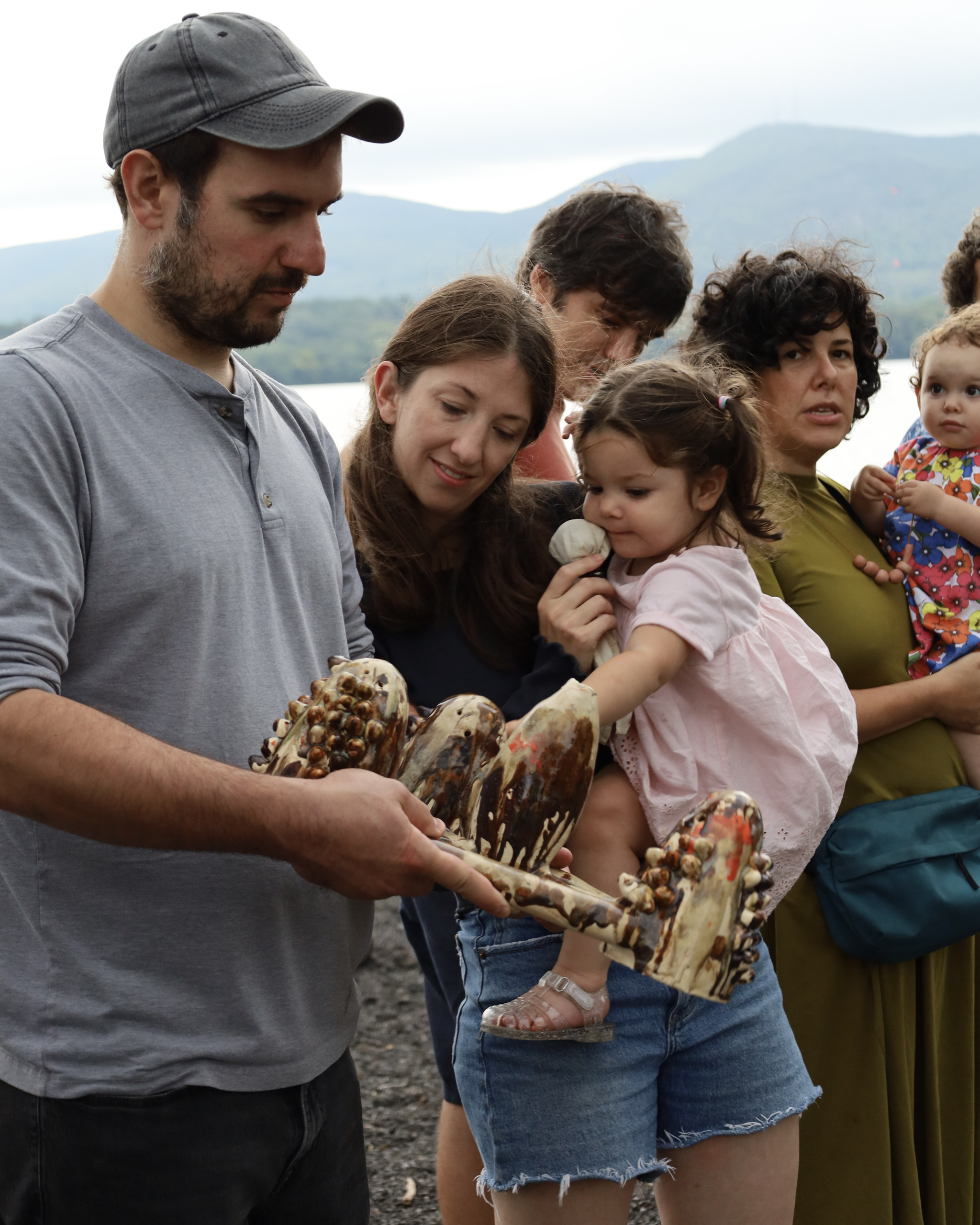



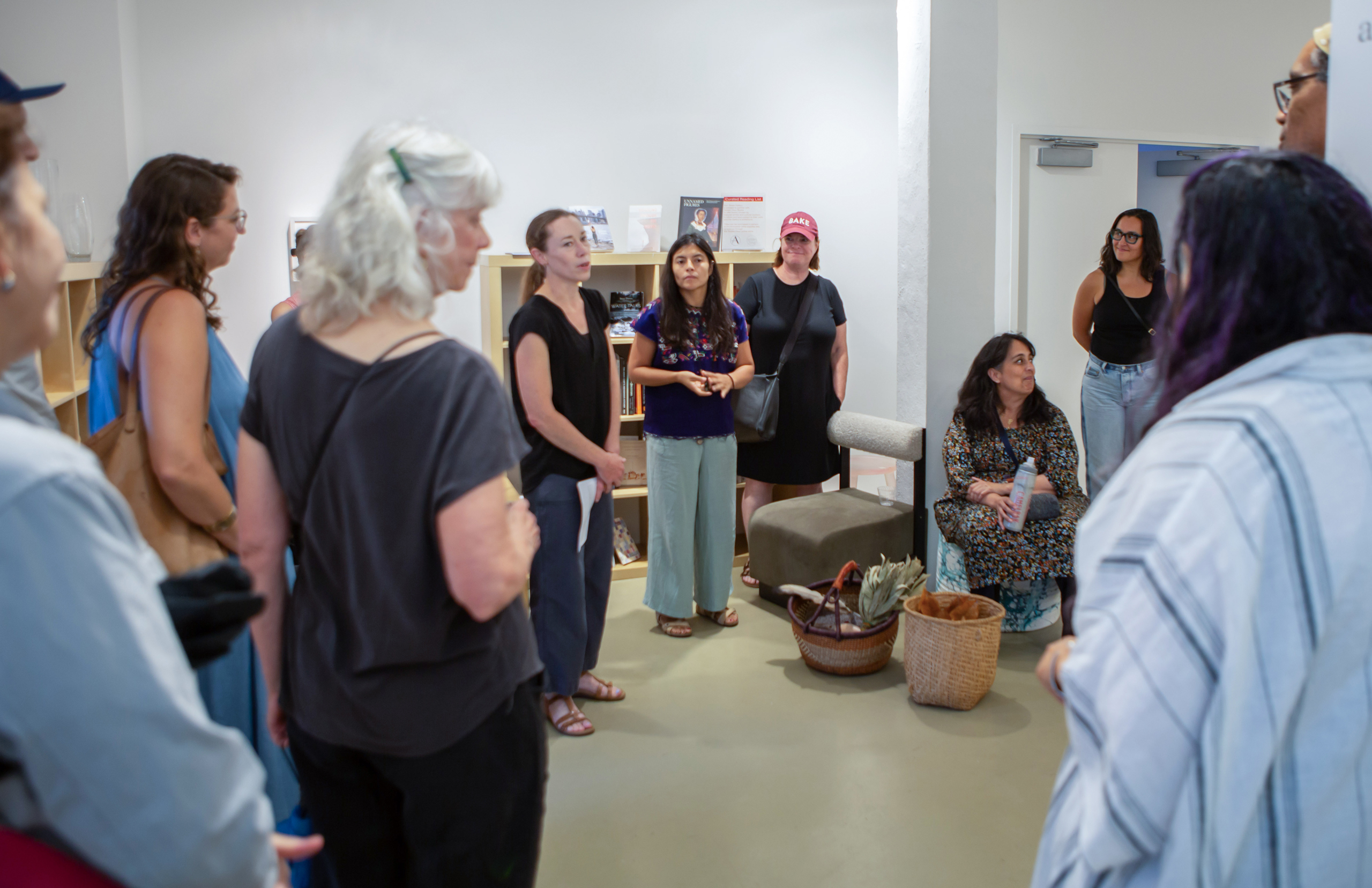

Glacier Elegy Newburgh
A performance by Jaanika Peerna
Saturday, August 24, 2:00pm
At People’s Park, Newburgh riverfront
followed by a closing reception at Ann Street Gallery
A participatory performance by Jaanika Peerna
at People’s Park, Newburgh riverfront
followed by a closing reception at Ann Street Gallery
Free and open to the public. No reservations required.
What would you do if you were handed the last piece of natural ice left on Earth? This silent question guides Jaanika in her Glacier Elegy Newburgh performance as she invites audience members to ponder the question with her.
Ever since Jaanika Peerna was a little girl dreaming of becoming an Olympic figure skater in the northern European country of Estonia, the material of ice has been close and dear to her: its toughness, transparency, beauty, as well as fragility. As we are witnessing a massive and furious melting speed of glaciers in polar regions these past decades, Jaanika has been looking for ways to face the facts, heal the soul, as well as act as an artist in order to help slow the destruction down.
Jaanika’s Glacier Elegy Newburgh performance takes place on the shore of the Mahicannituck/Hudson River, which itself flows in a glacier carved bed. Glaciers that covered and moved through what is now known as the Hudson Valley over 20,000 years ago carved grooves into the landscape, deepened the river bed, and shaped the landscape.
For Glacier Elegy Newburgh, we will proceed together from our meeting point and ground ourselves at the riverfront. Jaanika’s gestures and movements will invite the audience to collectively imagine connections between the landscape when it was sculpted by ice, the water moving both ways, and the pending absence of ice from the earth.
MEETING POINT, PARKING, RECEPTION
Jaanika’s performance will begin at 2:00pm.
The audience should navigate to People’s Park, Newburgh. People’s Park is on the South Side of the riverfront boat launch at the end of Washington St. Enter the park at the fence pictured above, and walk toward the meeting point at the edge of the tall grasses, ahead and to the right upon entering the park.
Parking is not available in the lot adjacent the park; please navigate to the ferry parking lot as indicated on the map above or walk from the the Gallery. The park is .5 mi walk from the gallery at 104 Ann St. with 100 feet of elevation change.
Please join us back at the gallery for a closing reception following Jaanika’s performance!
Jaanika’s performance will begin at 2:00pm.
The audience should navigate to People’s Park, Newburgh. People’s Park is on the South Side of the riverfront boat launch at the end of Washington St. Enter the park at the fence pictured above, and walk toward the meeting point at the edge of the tall grasses, ahead and to the right upon entering the park.
Parking is not available in the lot adjacent the park; please navigate to the ferry parking lot as indicated on the map above or walk from the the Gallery. The park is .5 mi walk from the gallery at 104 Ann St. with 100 feet of elevation change.
Please join us back at the gallery for a closing reception following Jaanika’s performance!
Jaanika Peerna is an Estonian-born artist living and working in New York since 1998. Her work encompasses drawing, installation, and performance, often dealing with the theme of transitions in light, air, water and other natural phenomena. Her art practice stems from the corporeal experience of our existence and reaches towards enhanced awareness of the fragility, interconnectedness and wonder of all life. She has exhibited her work and performed extensively in the entire New York metropolitan area as well as in Europe and Australia. Her work is in numerous private collections in the USA and Europe and is part of the Fonds National d’Art Contemporain, Paris. Her performance Glacier Elegy was acquired by the Glyn Vivian Museum in the UK and her drawing is in the Royal Collection of Sweden. In 2022 a monograph Glacier Elegies was published by Terra Nova Press, distributed by MIT Press.
https://www.jaanikapeerna.net/
@jaanika_peerna_studio


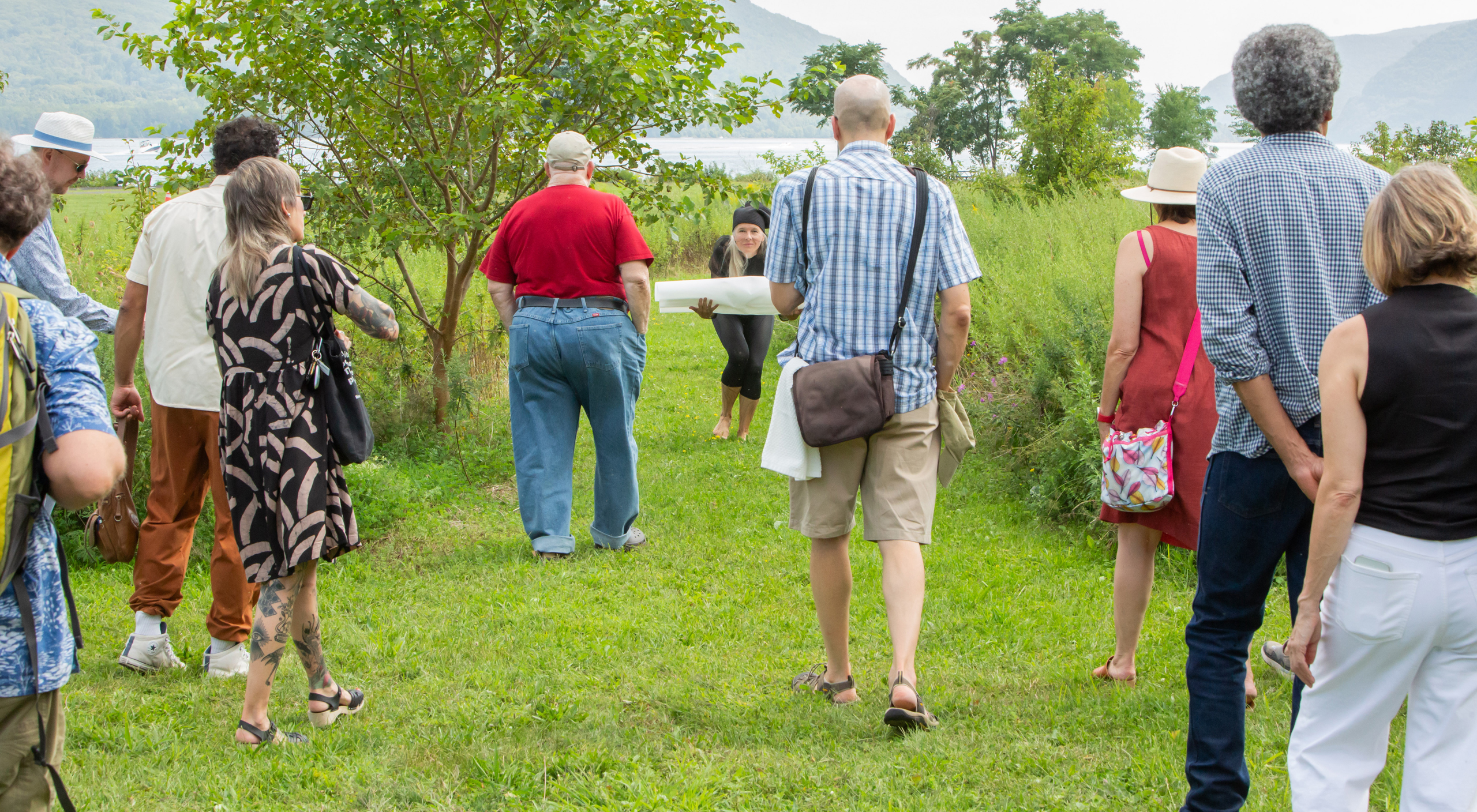
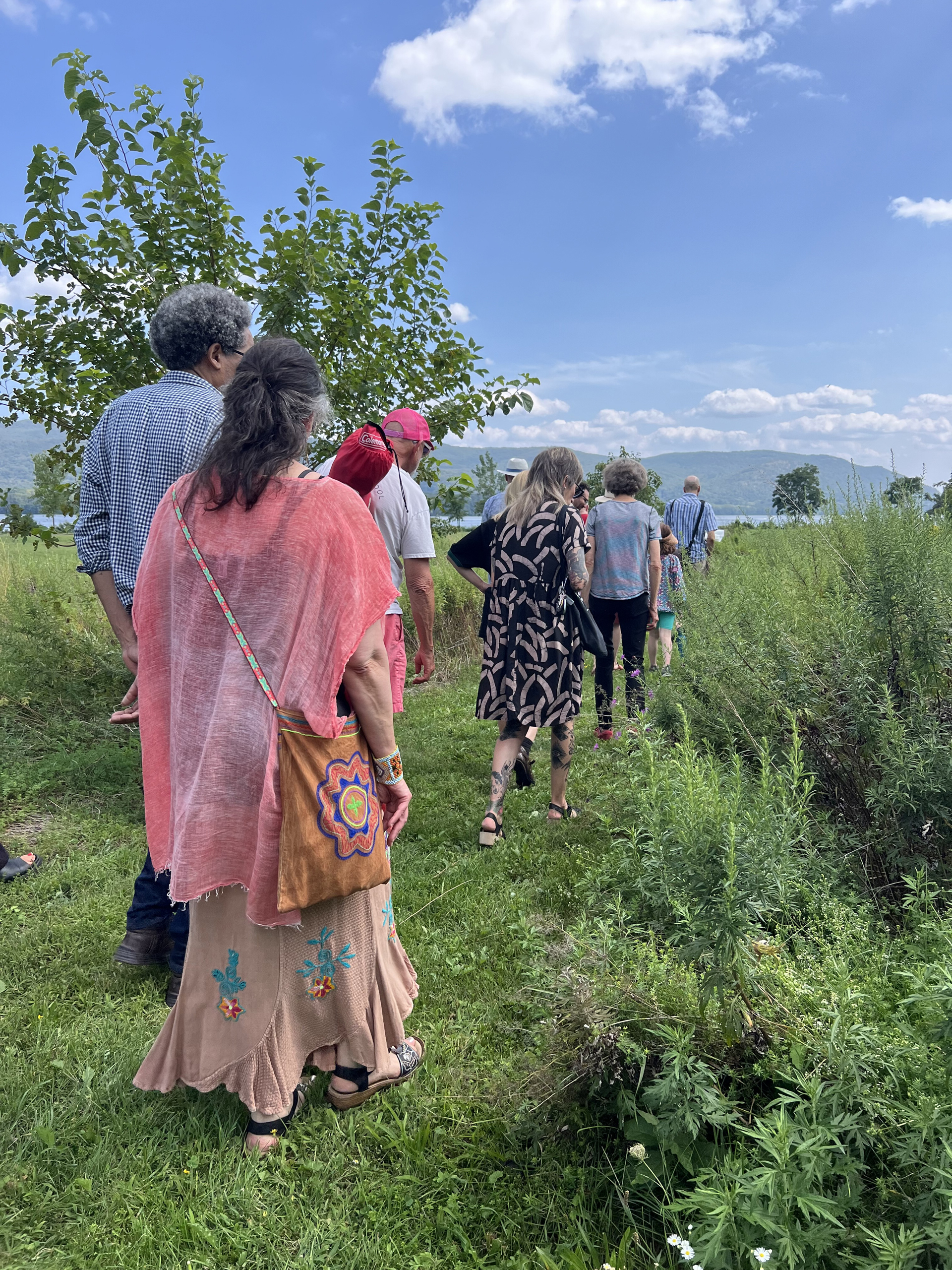


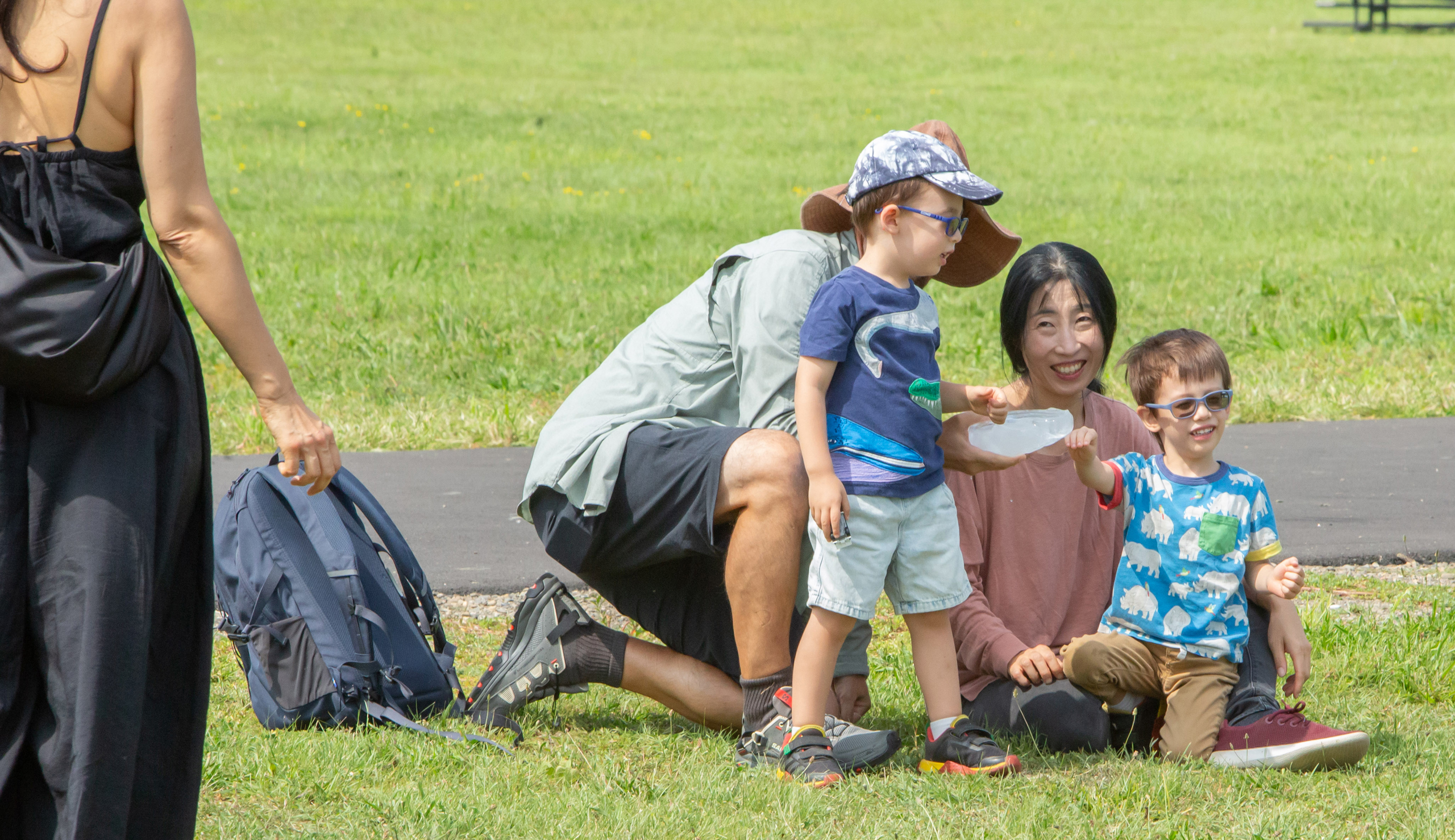




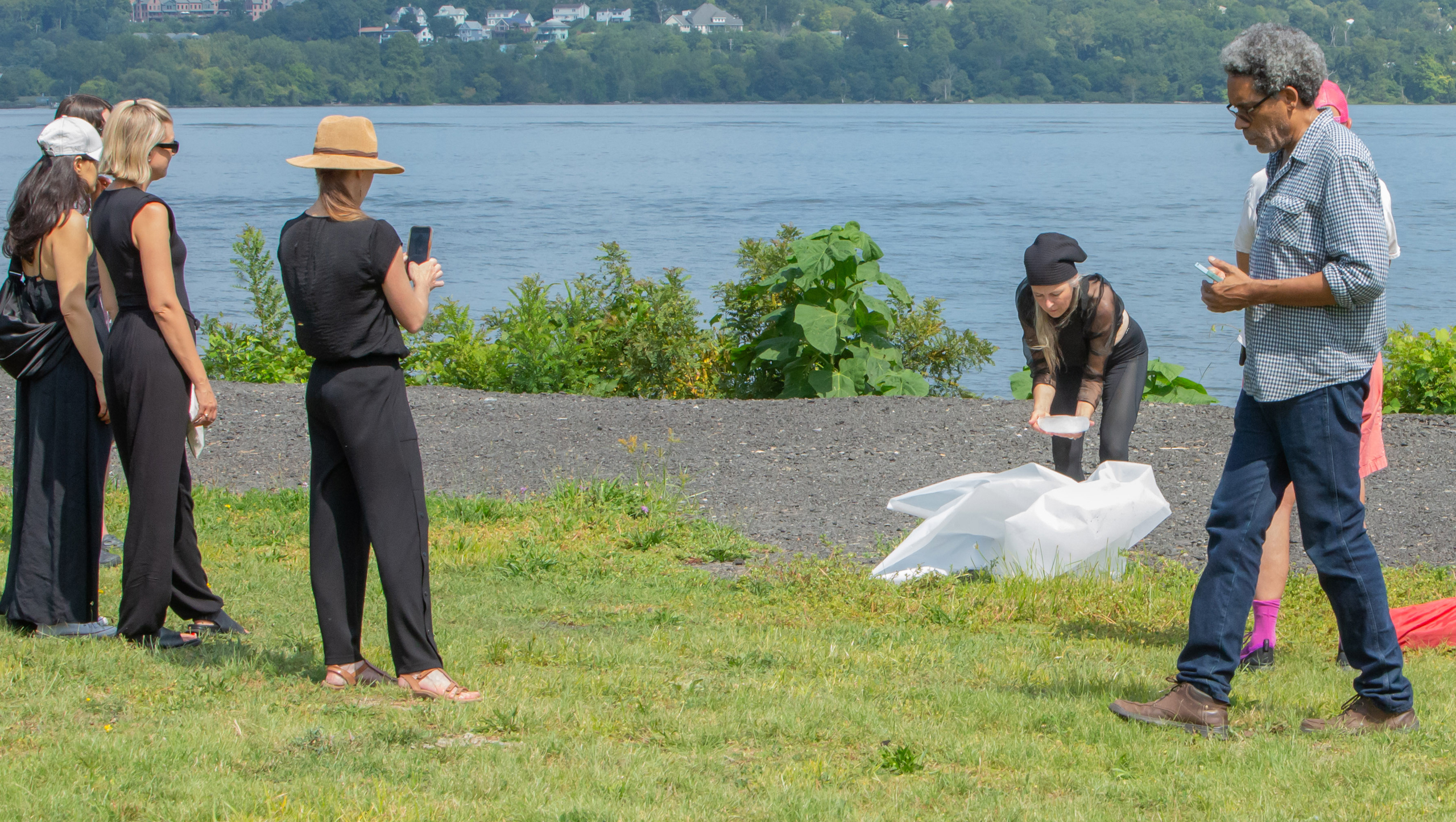
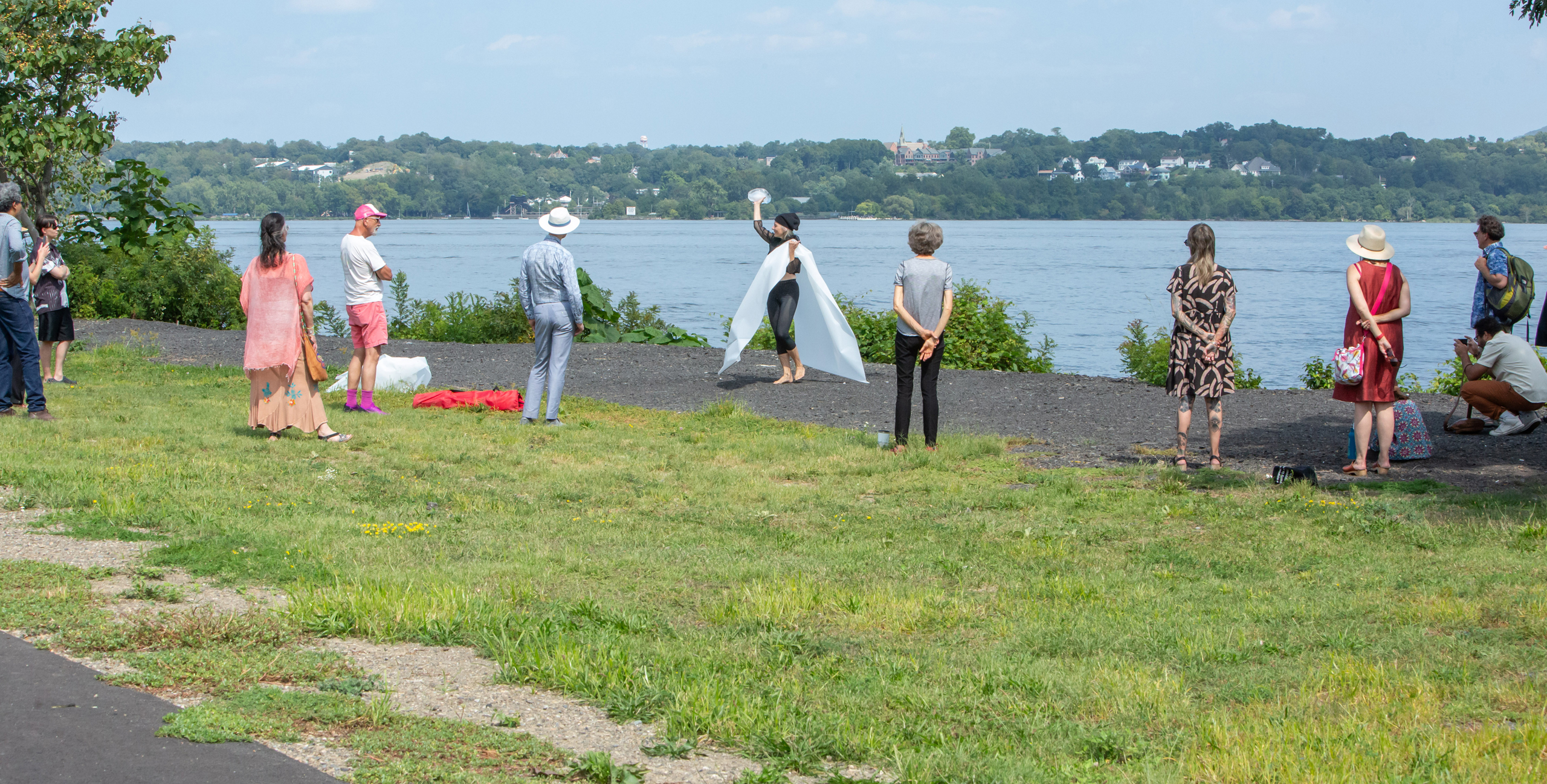




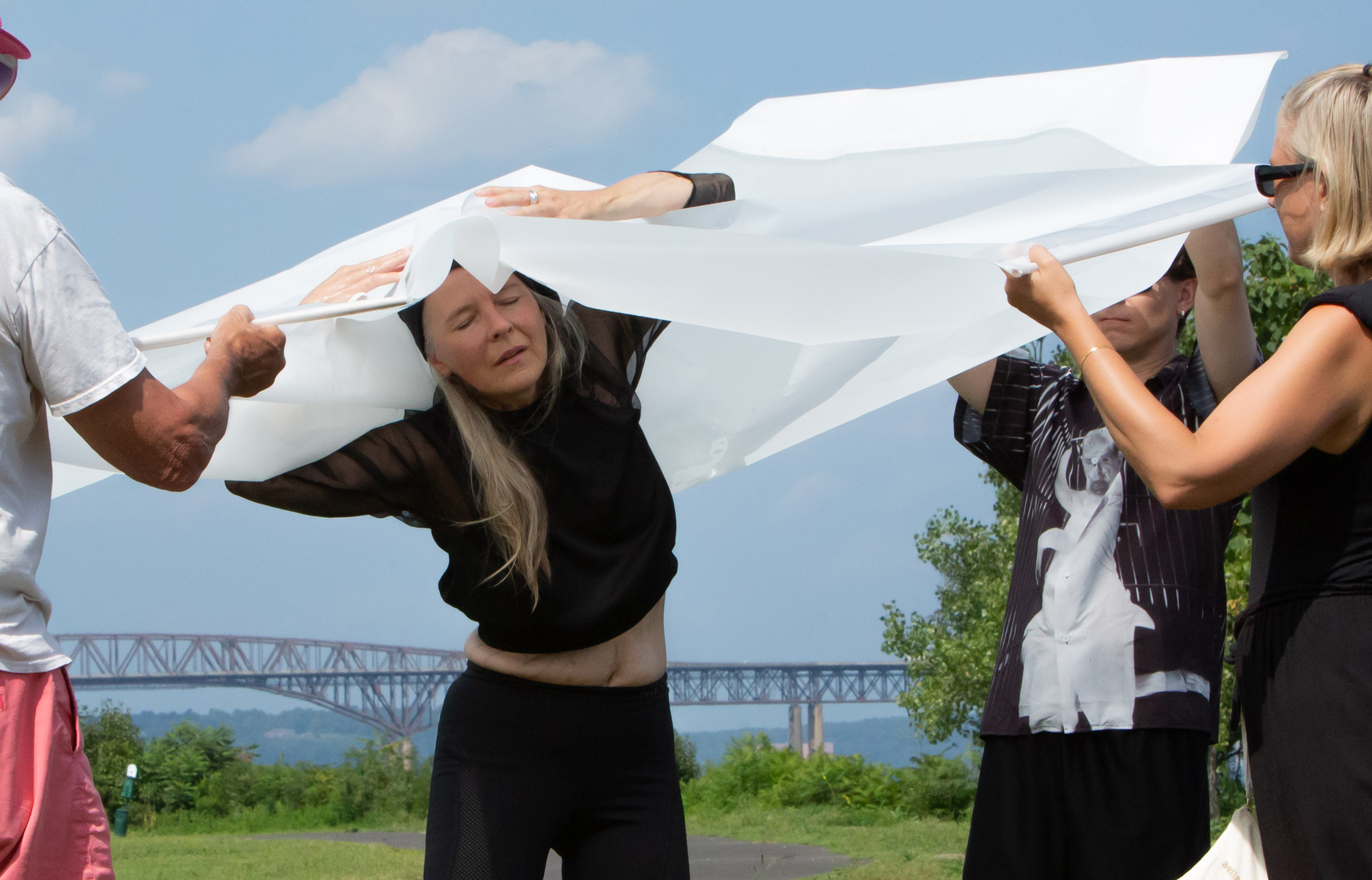



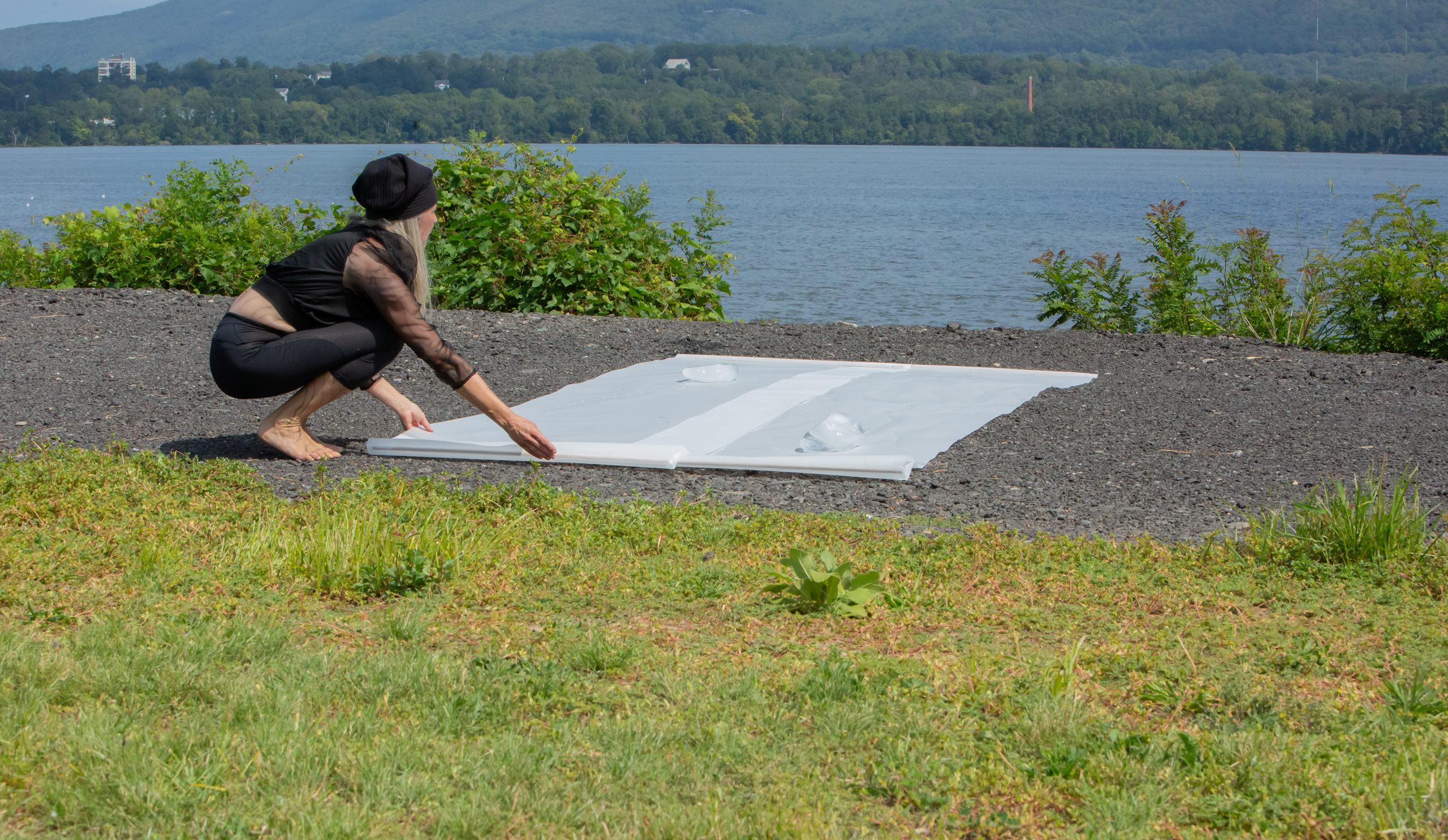



Curated Reading List
Lauren Rosenthal McManus’s Curated Reading List 006 has been commissioned to coincide with the exhibition Back and Forth Between Names: An exhibition about bodies of water at Ann Street Gallery in our Open Reading Room. Lauren’s reading list includes an introduction, title list, and annotations for each title.
View or download the list here.

Ann Street Gallery is on the 2024
Upstate Art Weekend (UPAW) Program
We are excited to share our participation in the fifth edition of Upstate Art Weekend, July 18-21, 2024! Over 140 cultural organizations will participate in this year’s edition, celebrating art and culture in ten counties in the Catskill Mountain and Hudson Valley.
Follow @upstateartweekend for more information and regular programming updates.
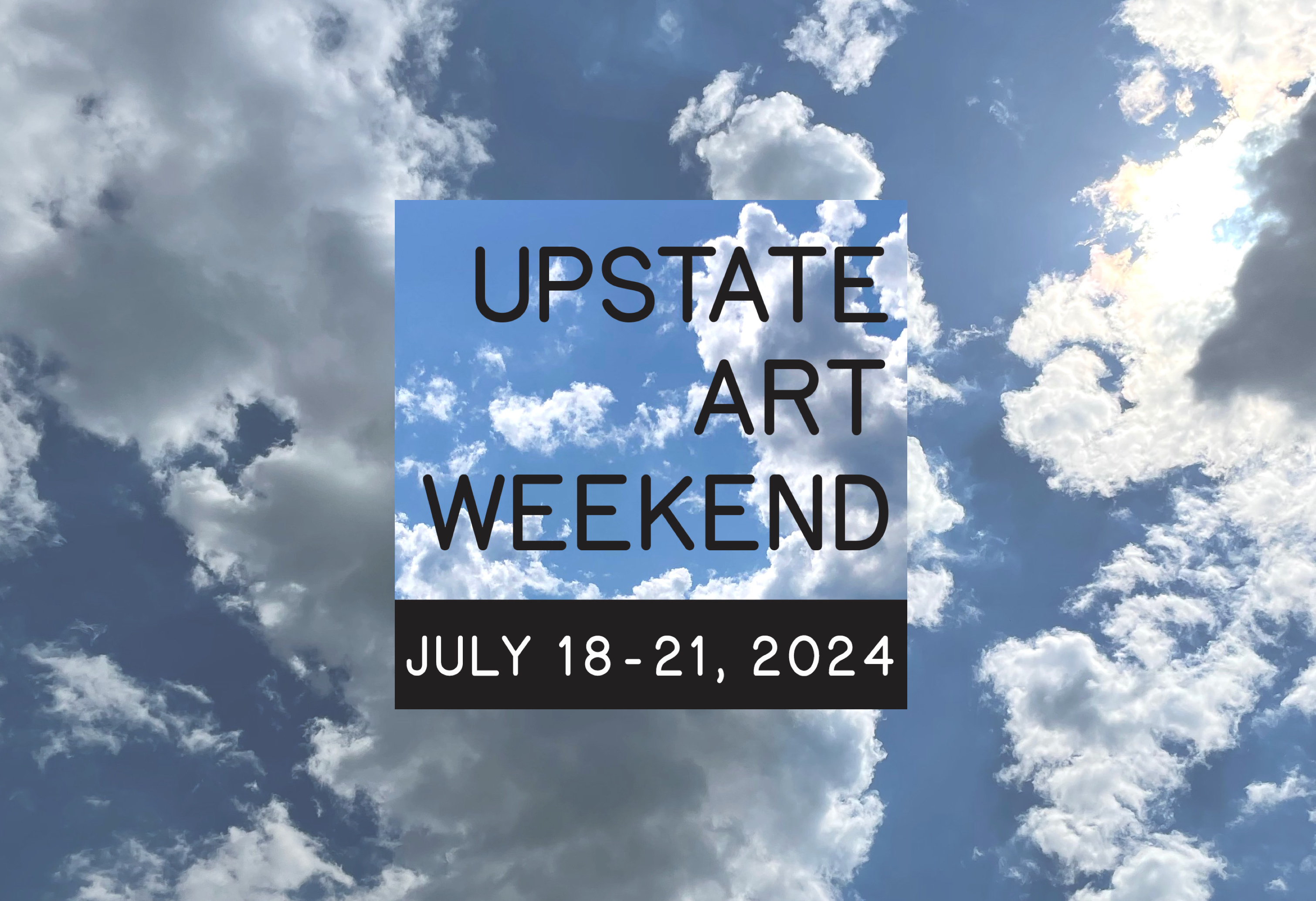

Return to Exhibition Overview
Ann Street Gallery wishes to thank our generous supporters for sharing their time and talents to our summer exhibition:
Volunteers: Patricia Phillips, Jasmine Beauvilaire, Travis Schaben
Reception and Performance Documentation: Brian Wolfe
Gallery Assistants: Ferris Ramirez and Maedeh Ojaghloo
Ann Street Gallery’s summer exhibition and programming are made possible with support from the Dominican Sisters of Hope Ministry Fund and The M&T Charitable Foundation.




Listening to Land:
Imaginal Technologies,
Material Conduits,
&
Landscape Translations
Toward Perceiving Place
July 13, 2023 - August 27, 2023
Opening Reception July 15, 4:00-7:00pm
Closing Reception & Gallery Talks August 27, 4:00-5:30pm
Exhibition Checklist The image gallery to the right follows the exhibition checklist.
Listening to Land is a group exhibition exploring practices of listening in relation to place and the place-making potential of creative acts of listening, wherein to land is a verb, and listening provides a point of ingress.
Artists in the exhibition use storytelling, jam-making, woodworking, basketry, mapping, lenses, microphones, speakers, and other technologies to heighten our ability to relate to our surroundings and other beings, and to extend our capacity to perceive beyond what is visible or knowable in the landscape. Prehistoric, mythical, and contemporary techniques used by the artists help us to imagine futures in which humans are in more reciprocal relationships with each other and the broader cosmology of entities with whom we share the land.
The exhibition offers sounds, portals, and moments of suspension, aiming to inspire silence, slowness, and humility. Materials such as wood, water, stone, soil, plants, glass, metal, horsehair, and minerals act as conduits for the voices of the land from whence they came. The artists invoke the non-human presences of specific places through ultrasensitive explorations of their materials’ inherent qualities and capabilities, inviting us to pause, and reshaping our perceptions.
The works in the exhibition suggest that when one listens to land, the land reveals entanglements with intangible forces and phenomena, with buried histories and lost kinships, and with water systems. Rather than rendering landscapes that delineate land from water, human activity, or the cosmos, the works in the exhibition translate images of landscape into abstractions, experiences, revisions, and mappings that allow us to know the land through intricate and interconnected relationships.
Free public programming supporting the exhibition will include engagements with several regional artists, informal gallery talks at a closing reception walk-through, and Curated Reading List 003 in our Open Reading Room...Learn more here
The exhibition is curated by Gallery Director Alison McNulty and includes works by:
Margaux Crump
Donna Francis
Katerie Gladdys
Katie Grove
Ellie Irons
Sergey Jivetin
Kite and Robbie Wing
Fernanda Mello
Steve Rossi
Jean-Marc Superville Sovak
Susan Walsh
Millicent Young
The exhibition, programming, and receptions are free and open to the public, but some workshops accommodate a limited number of participants and require a reservation.



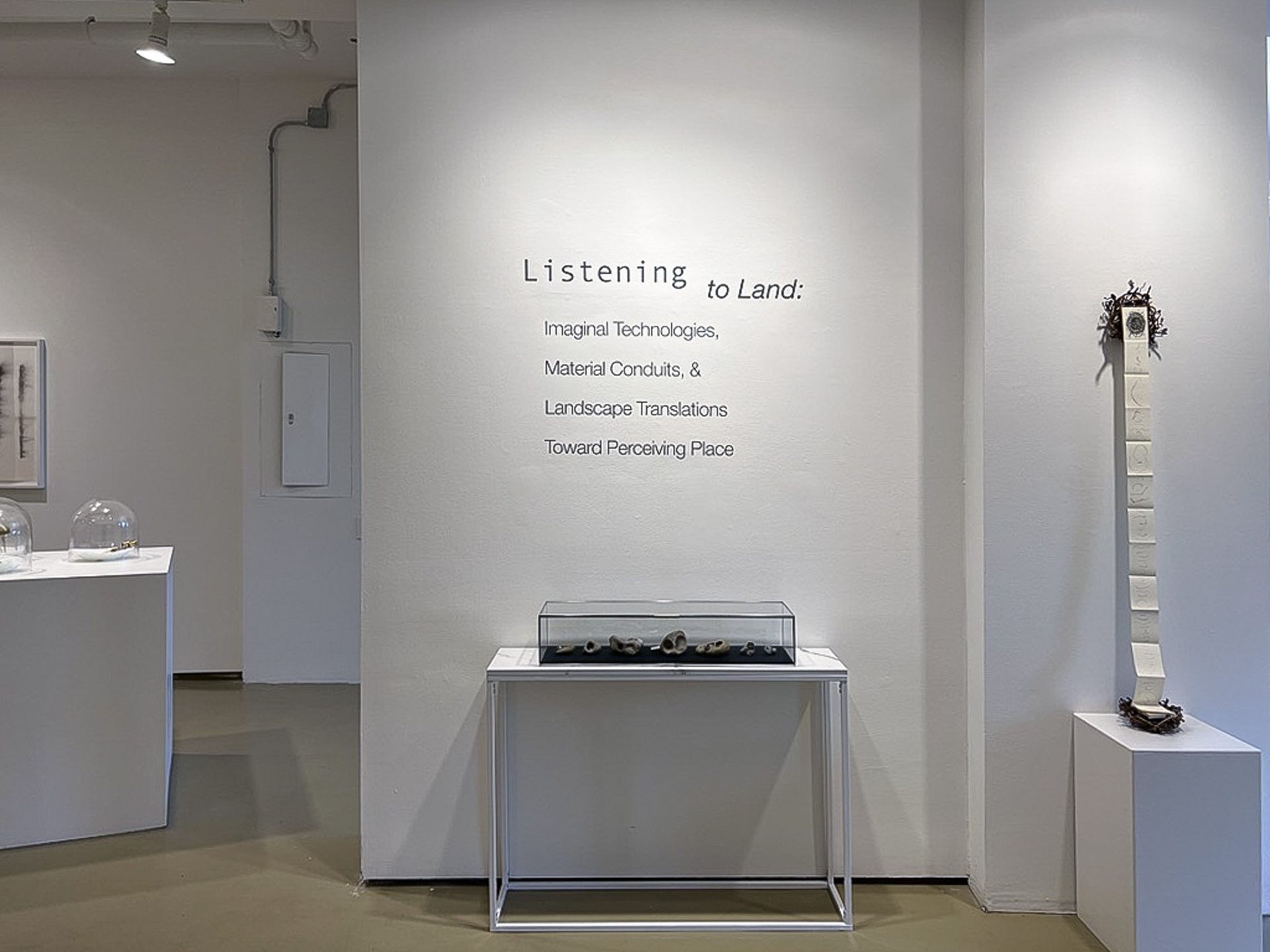
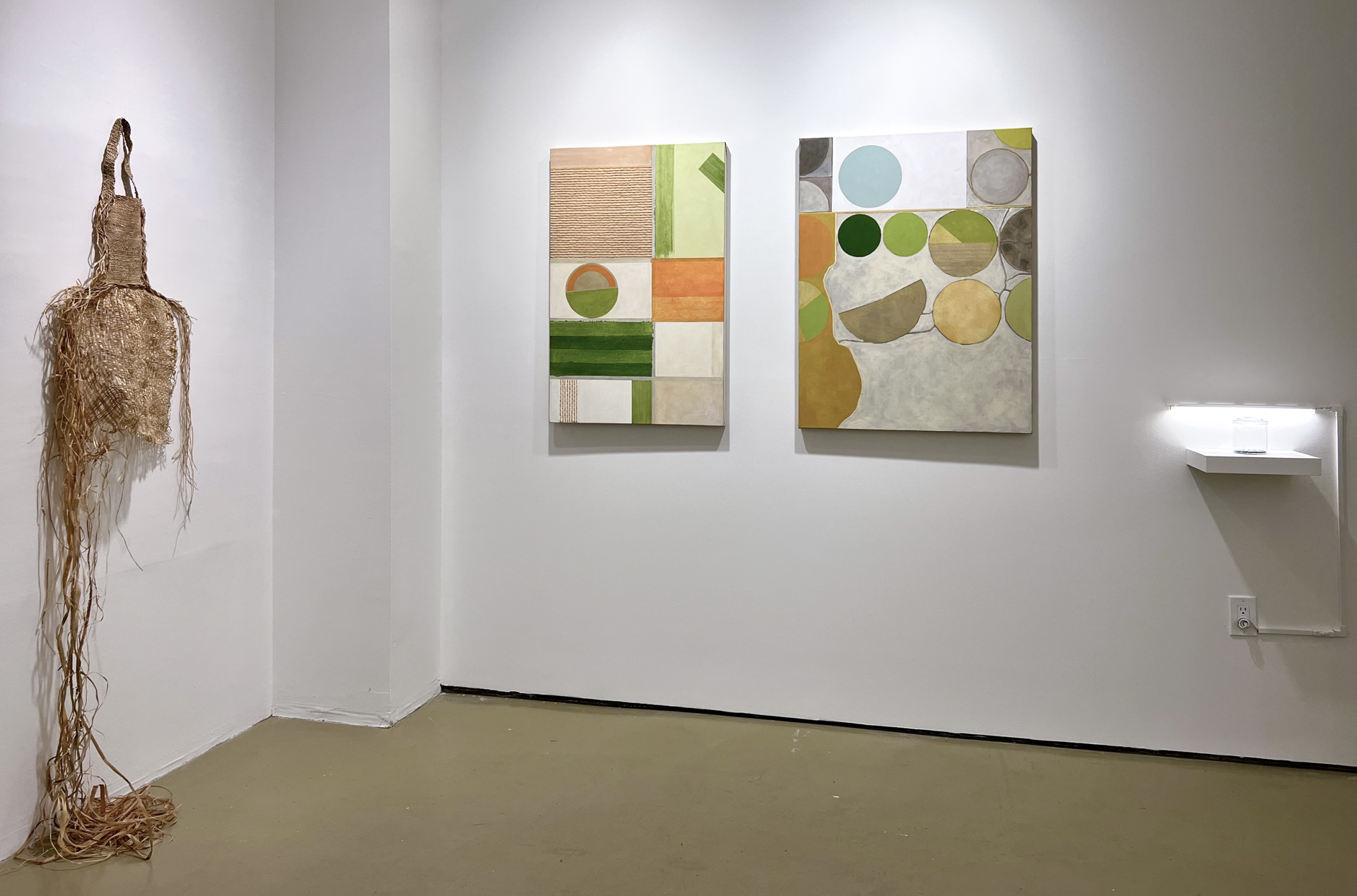



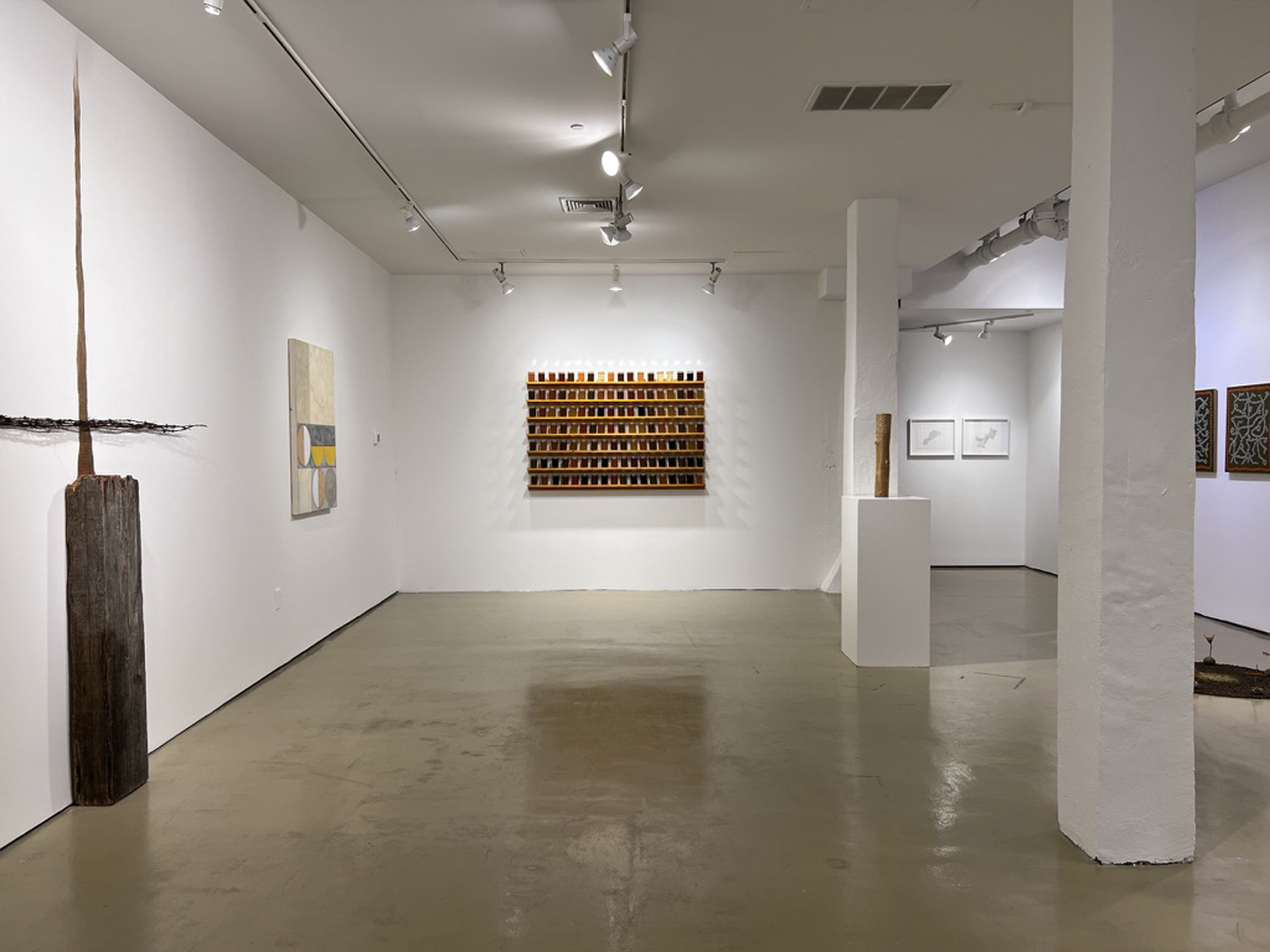




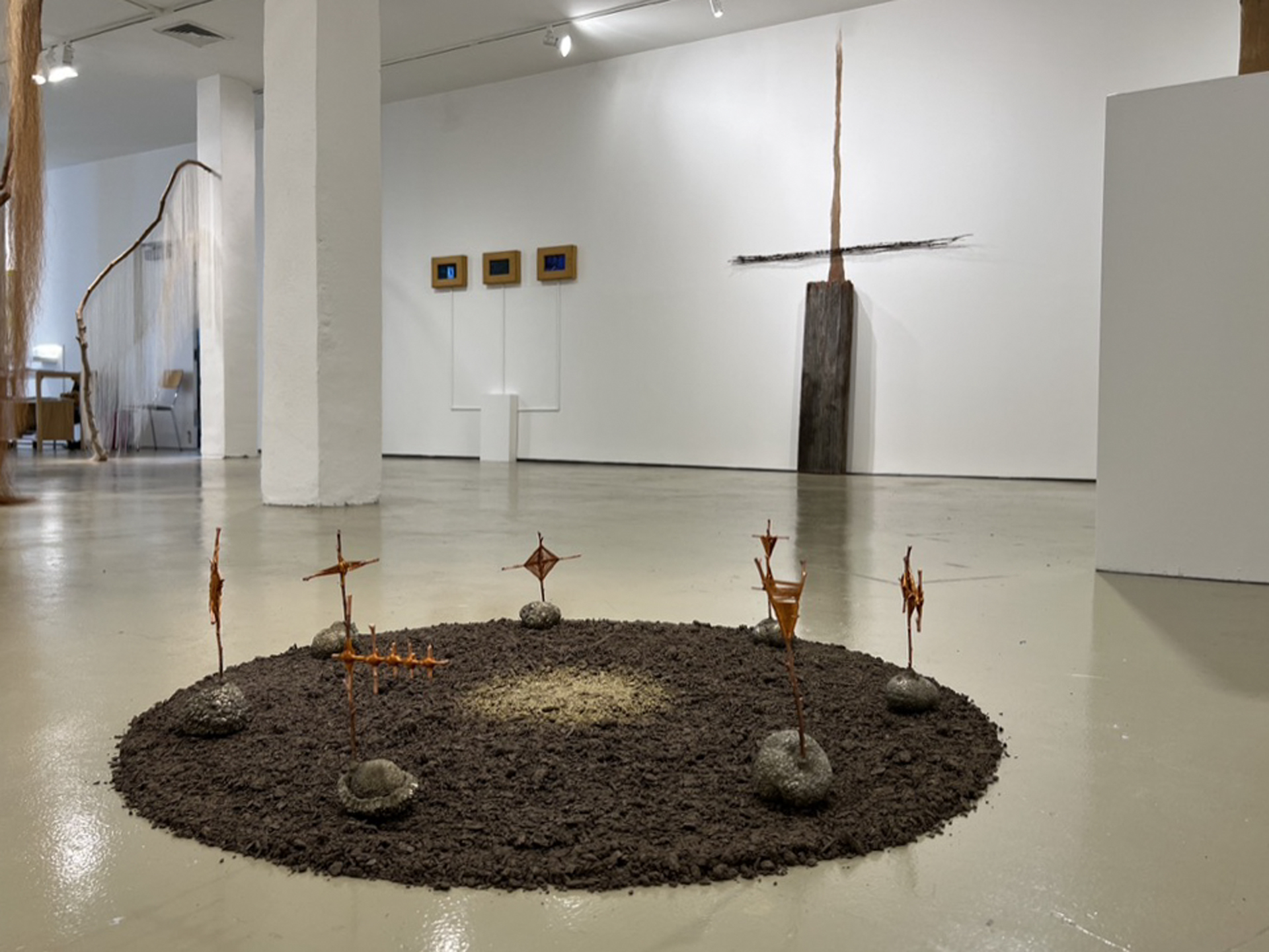
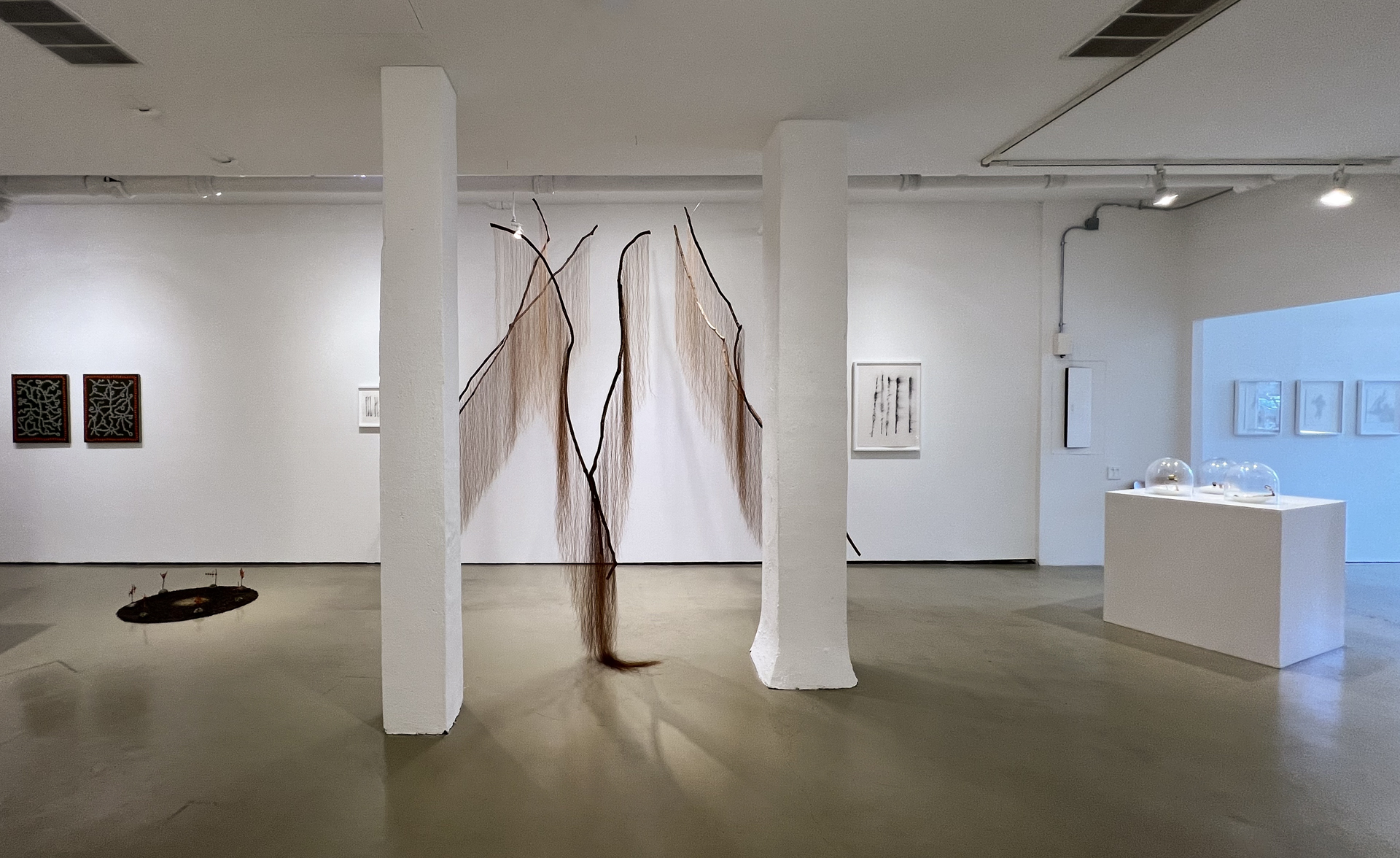









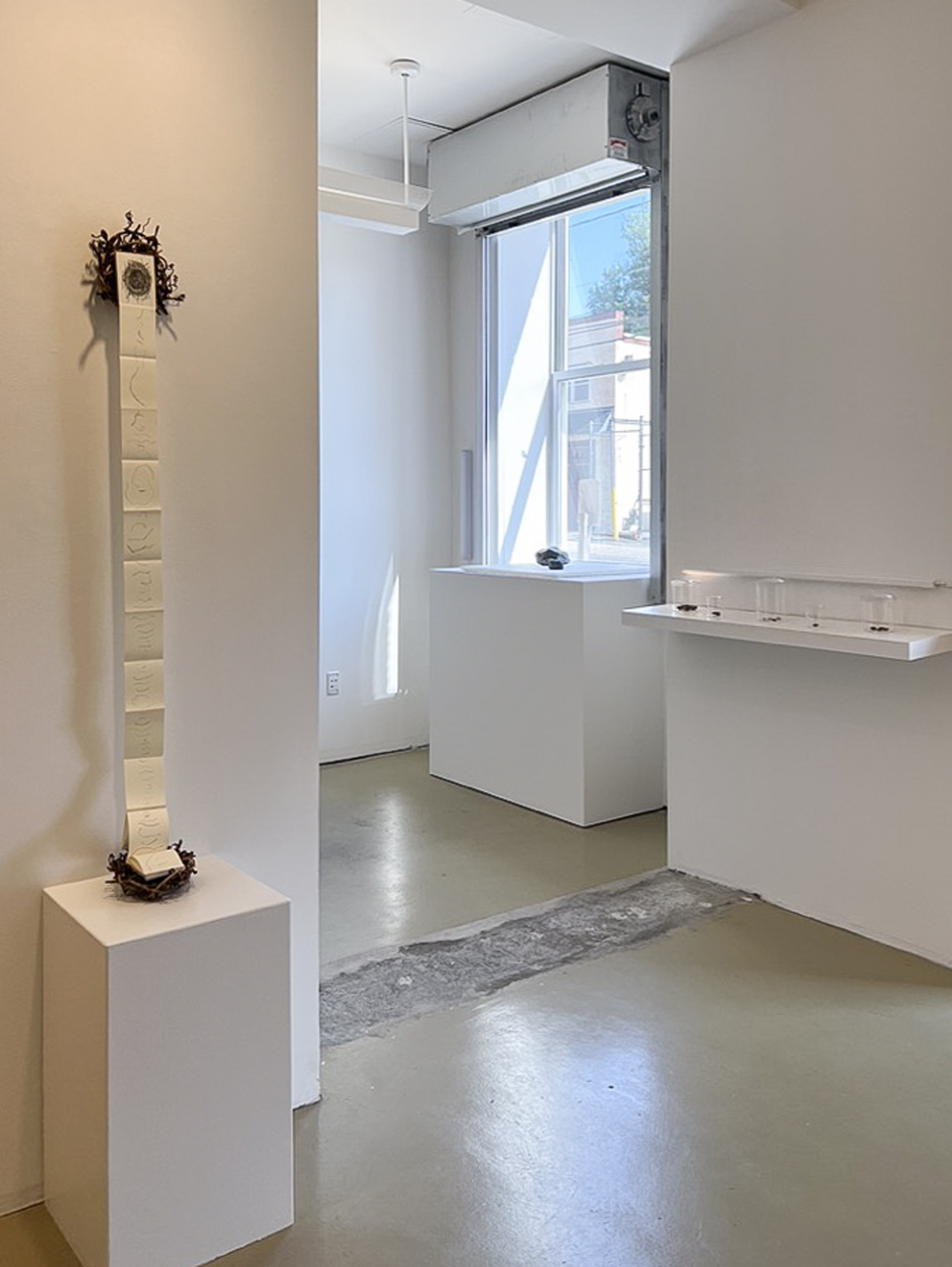



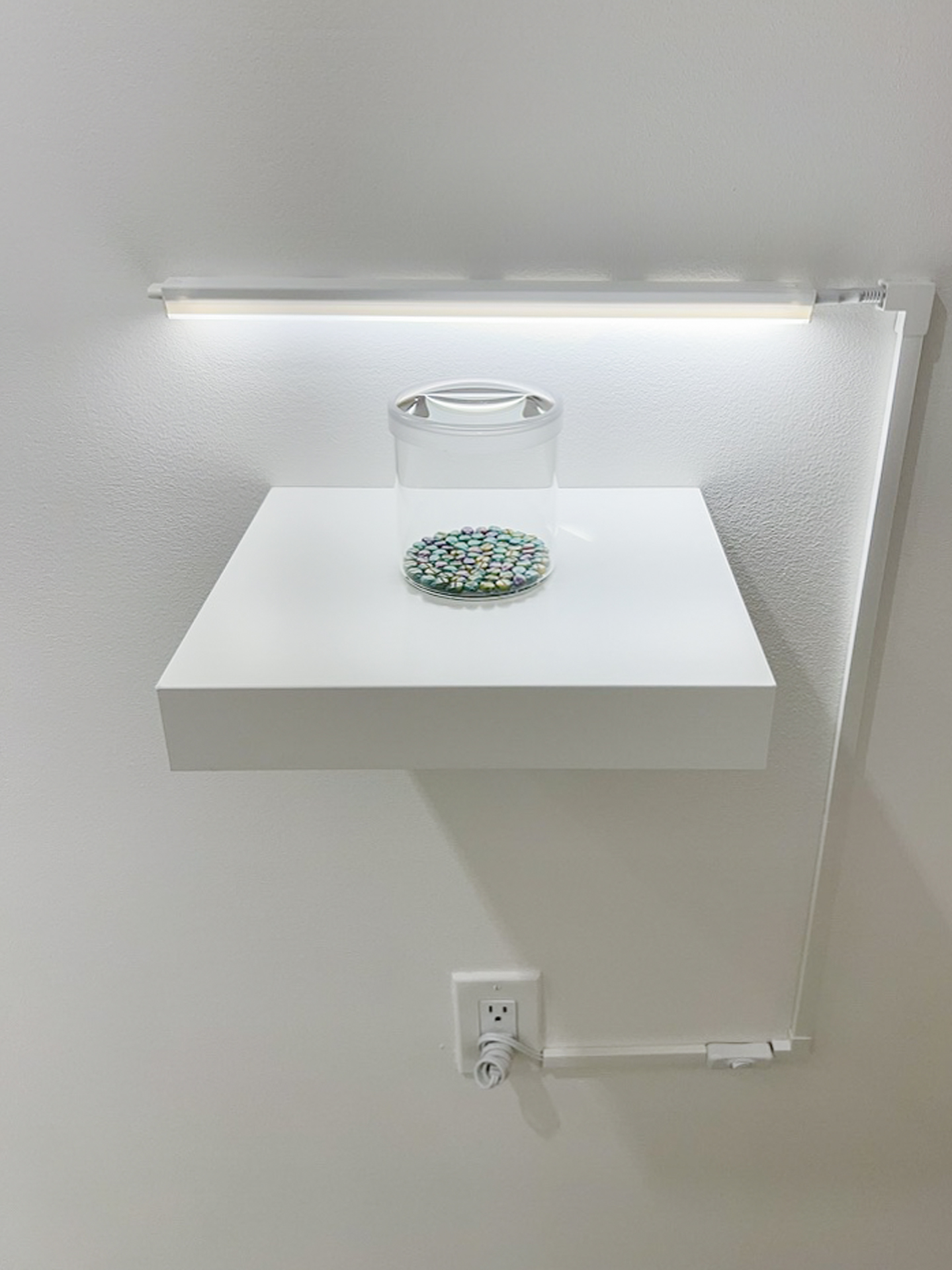
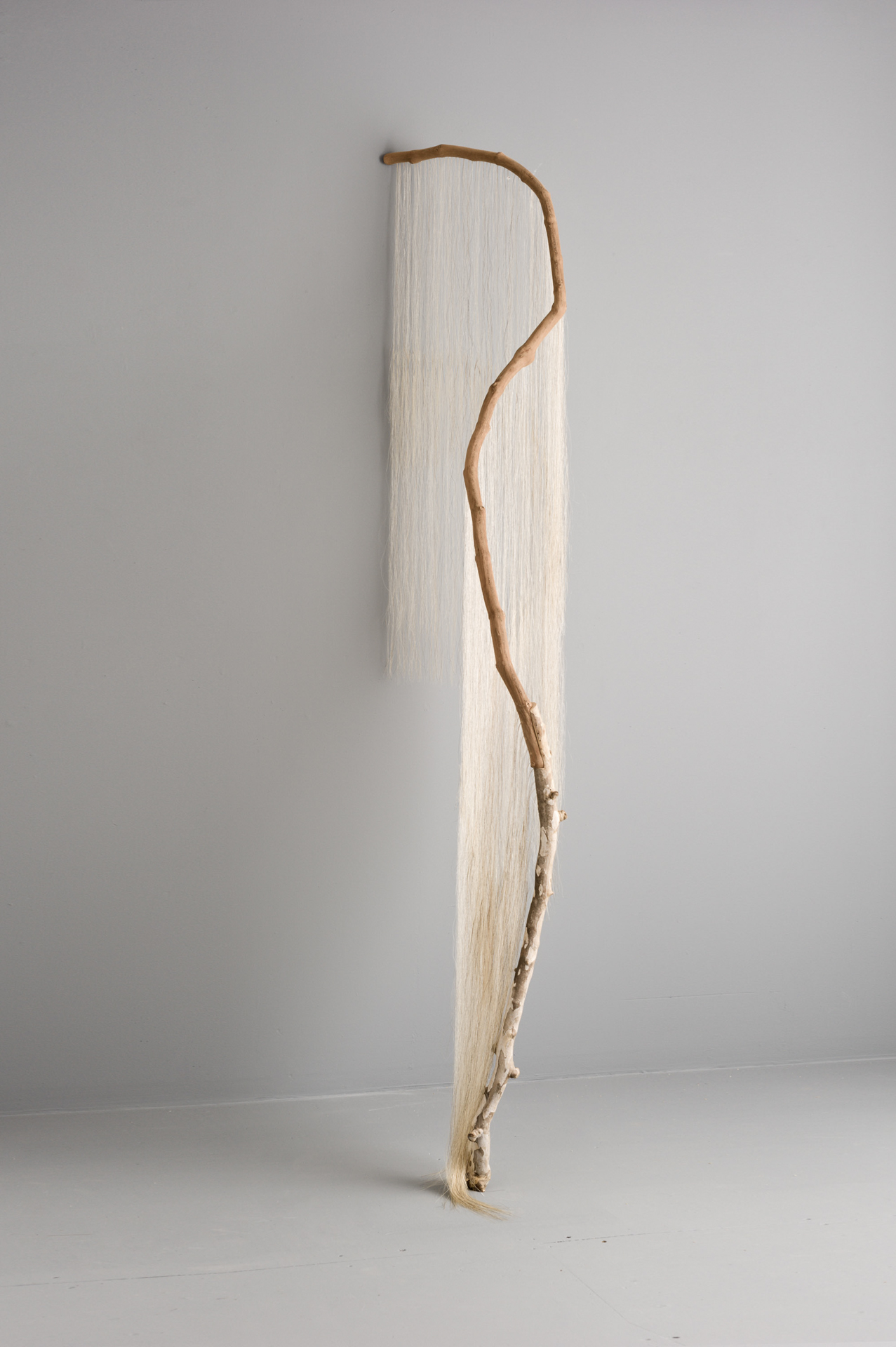

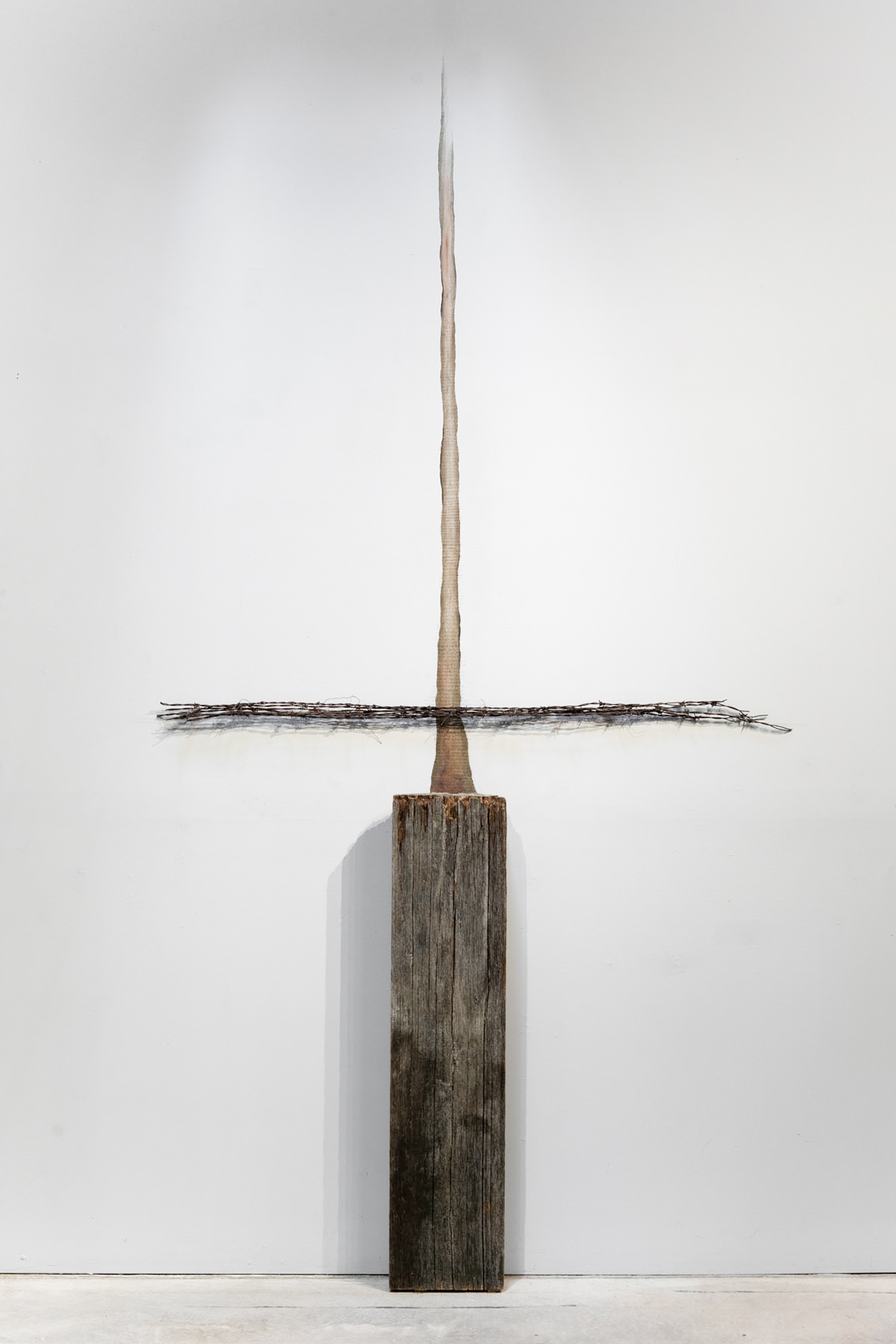



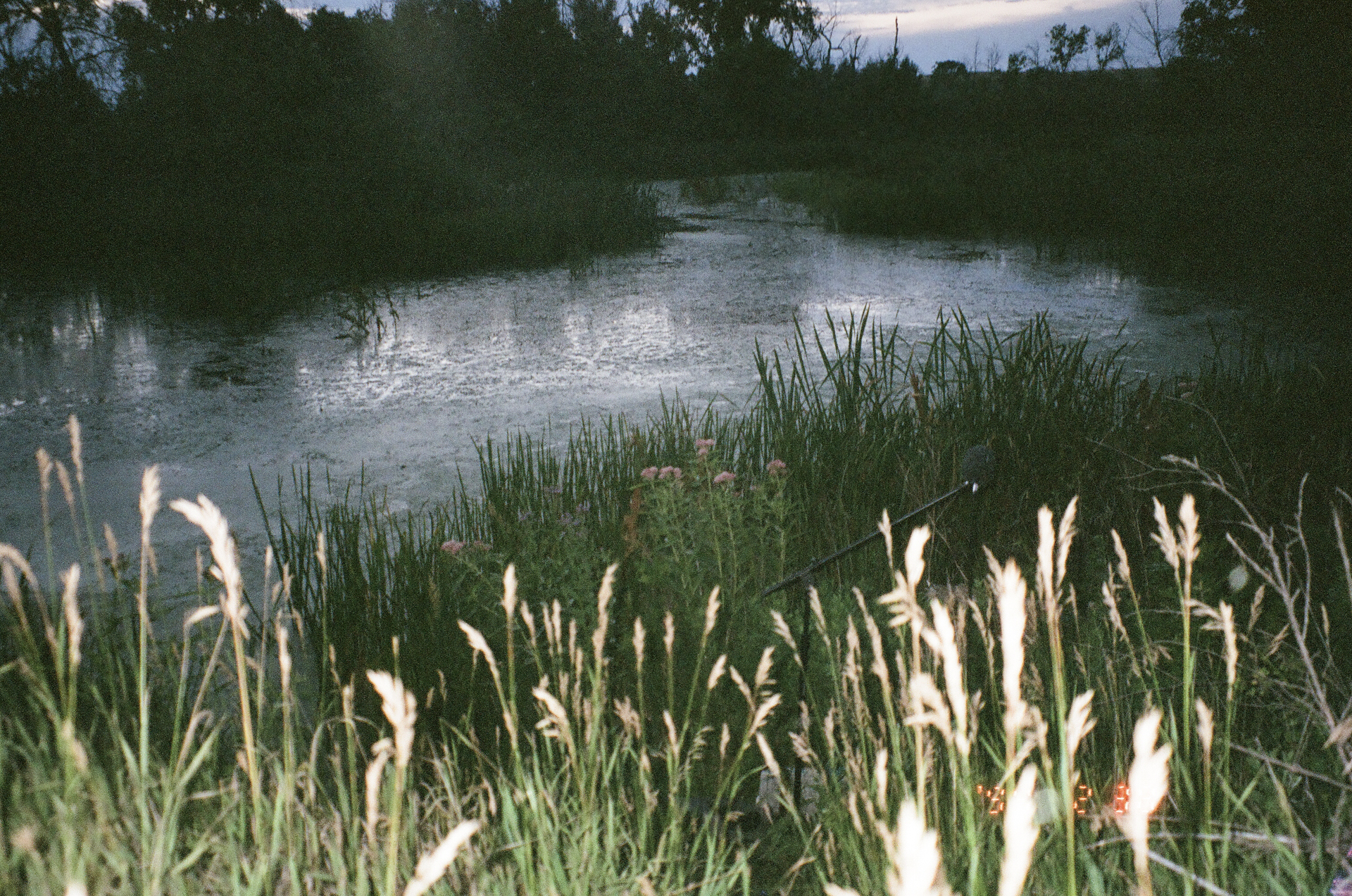














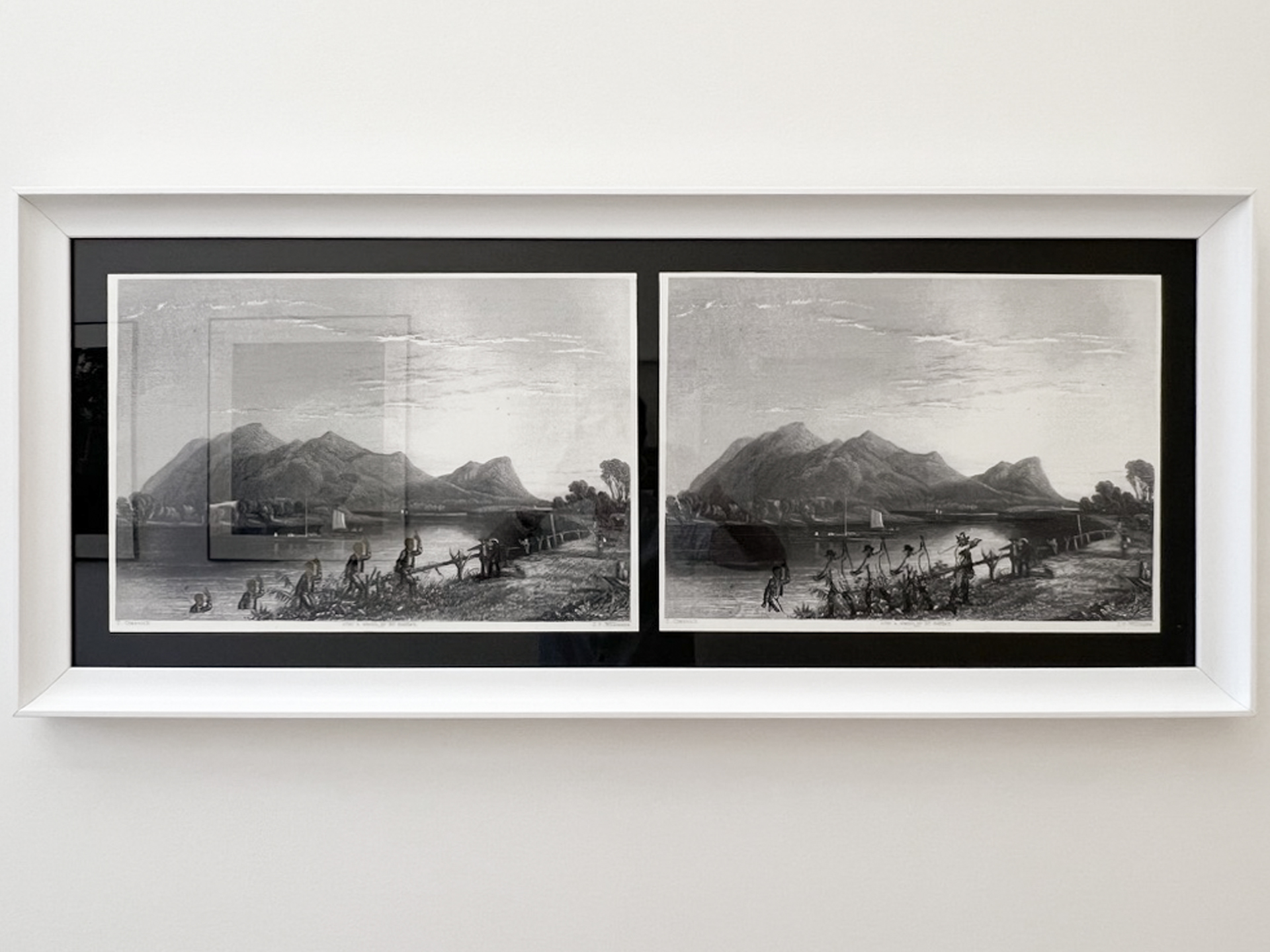



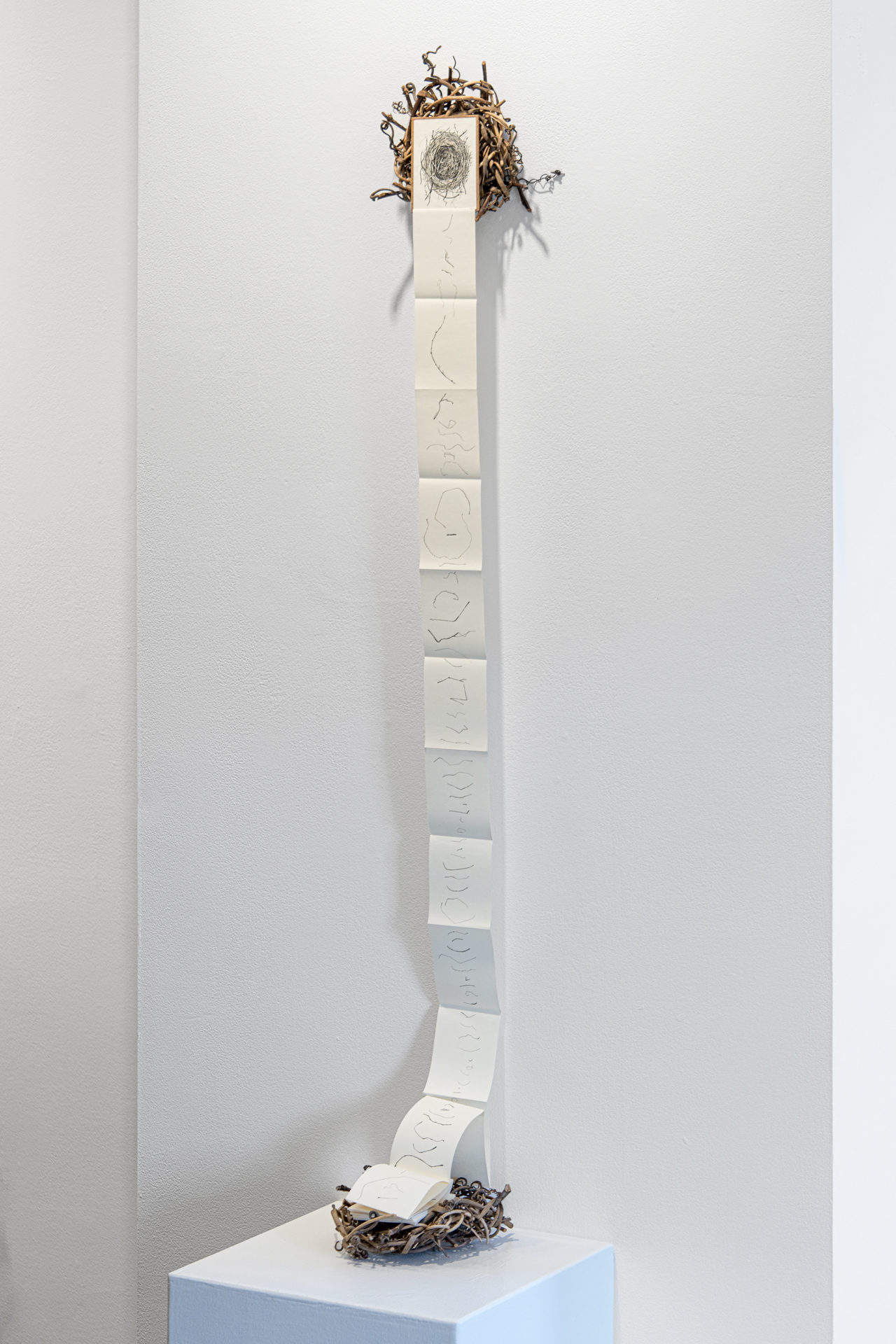

Can you hear me now?
Pyrite concretions and dust, copper magnet wire, copper electroformed twigs, soil, mica, salt
6 x 36 x 36”
Can you hear me now? is a series of fantastical listening devices that playfully reimagines how we communicate with—and through—minerals. Informed by early crystal radios, antique copper antennas, and apotropaic Brigid crosses, these sculptural objects merge spiritual and mundane technologies by leveraging their shared materials, processes, and traits. As a ritual installation, the individual devices create a circuit, opening a conduit that is grounded by the soil and salt circle.
Pyrite concretions and dust, copper magnet wire, copper electroformed twigs, soil, mica, salt
6 x 36 x 36”
Can you hear me now? is a series of fantastical listening devices that playfully reimagines how we communicate with—and through—minerals. Informed by early crystal radios, antique copper antennas, and apotropaic Brigid crosses, these sculptural objects merge spiritual and mundane technologies by leveraging their shared materials, processes, and traits. As a ritual installation, the individual devices create a circuit, opening a conduit that is grounded by the soil and salt circle.








For Seeing Neither Here Nor Elsewhere
Naturally holed hag stones, antique microscope lenses and objectives, engraved glass and velvet display
case
6 x 30 x 9”
For Seeing Neither Here Nor Elsewhere explores lenses and apertures as ocular portals. How we see shapes our reality. In certain folk beliefs, peering through holed stones enables you to see across the veil into the otherworld. In science, microscopy similarly reveals the invisible world of microbes. This work combines these complementary visual technologies to shift how we see—incorporating the imagination as an integral aspect of human perception.
Naturally holed hag stones, antique microscope lenses and objectives, engraved glass and velvet display
case
6 x 30 x 9”
For Seeing Neither Here Nor Elsewhere explores lenses and apertures as ocular portals. How we see shapes our reality. In certain folk beliefs, peering through holed stones enables you to see across the veil into the otherworld. In science, microscopy similarly reveals the invisible world of microbes. This work combines these complementary visual technologies to shift how we see—incorporating the imagination as an integral aspect of human perception.







Donna & June
4x5 Pinhole Camera/Archival Giclee Print
26 x 31”
4x5 Pinhole Camera/Archival Giclee Print
26 x 31”



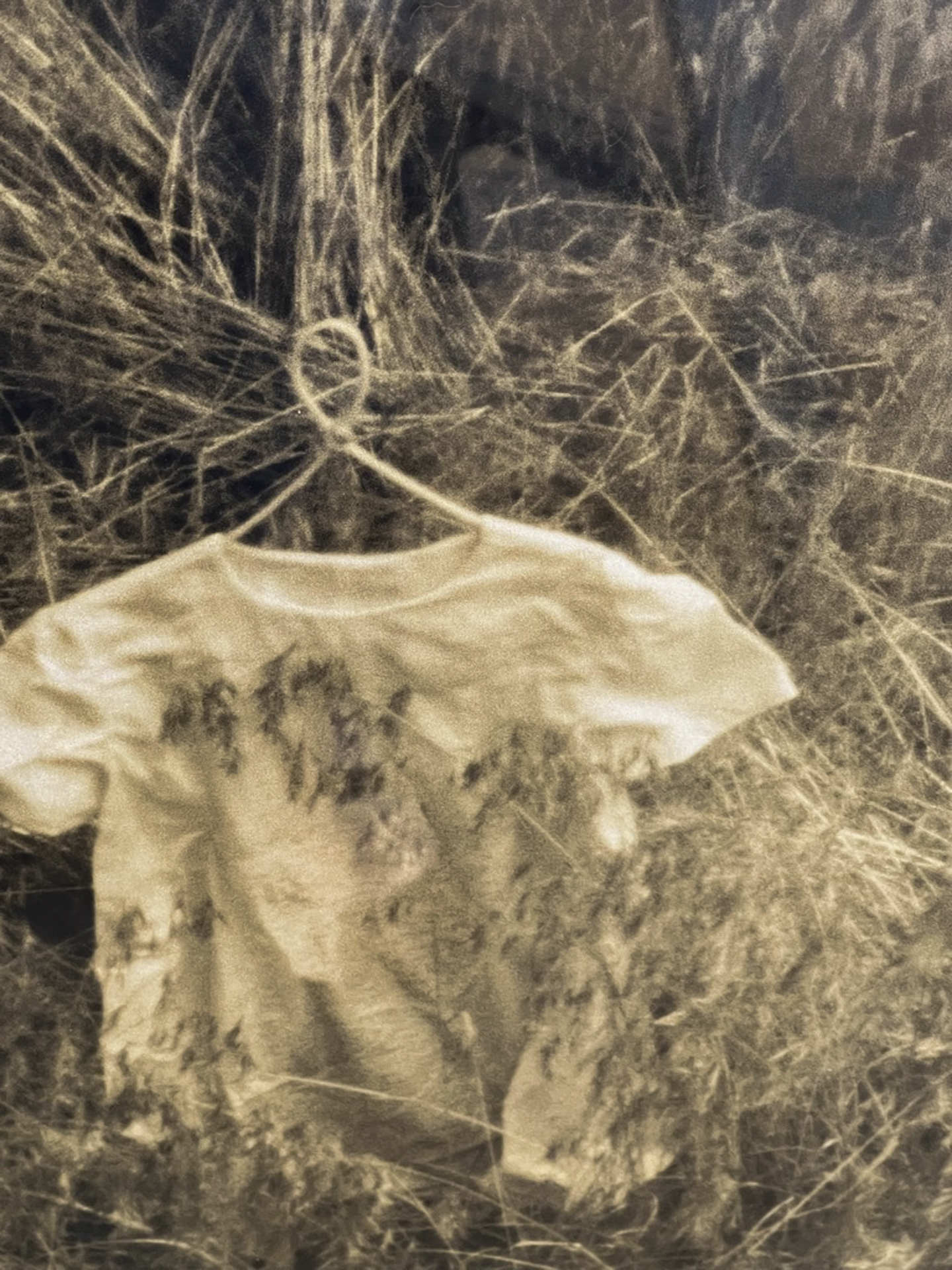
Mercy
4x5 Pinhole Camera/Archival Giclee Print
26 x 31”
4x5 Pinhole Camera/Archival Giclee Print
26 x 31”

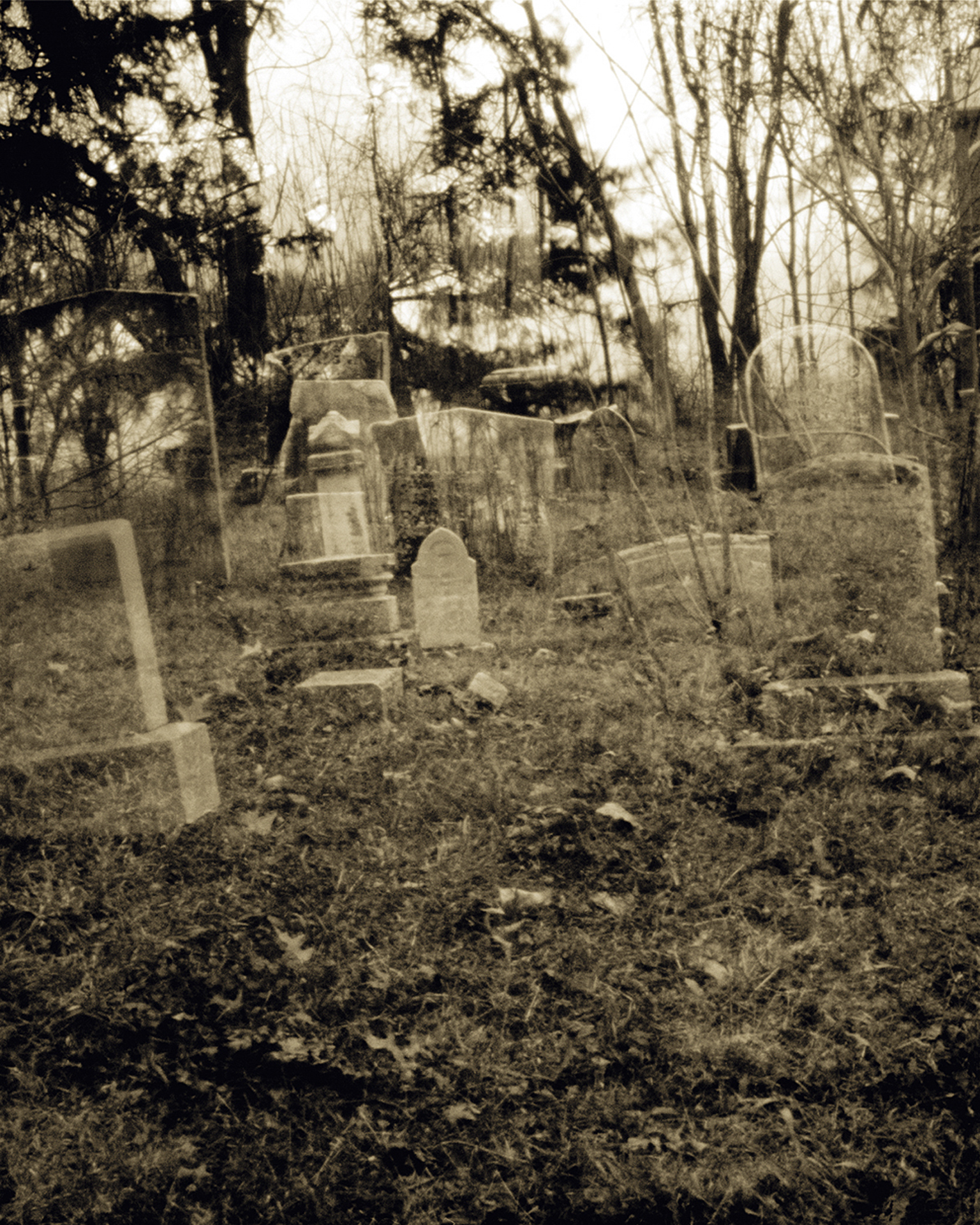
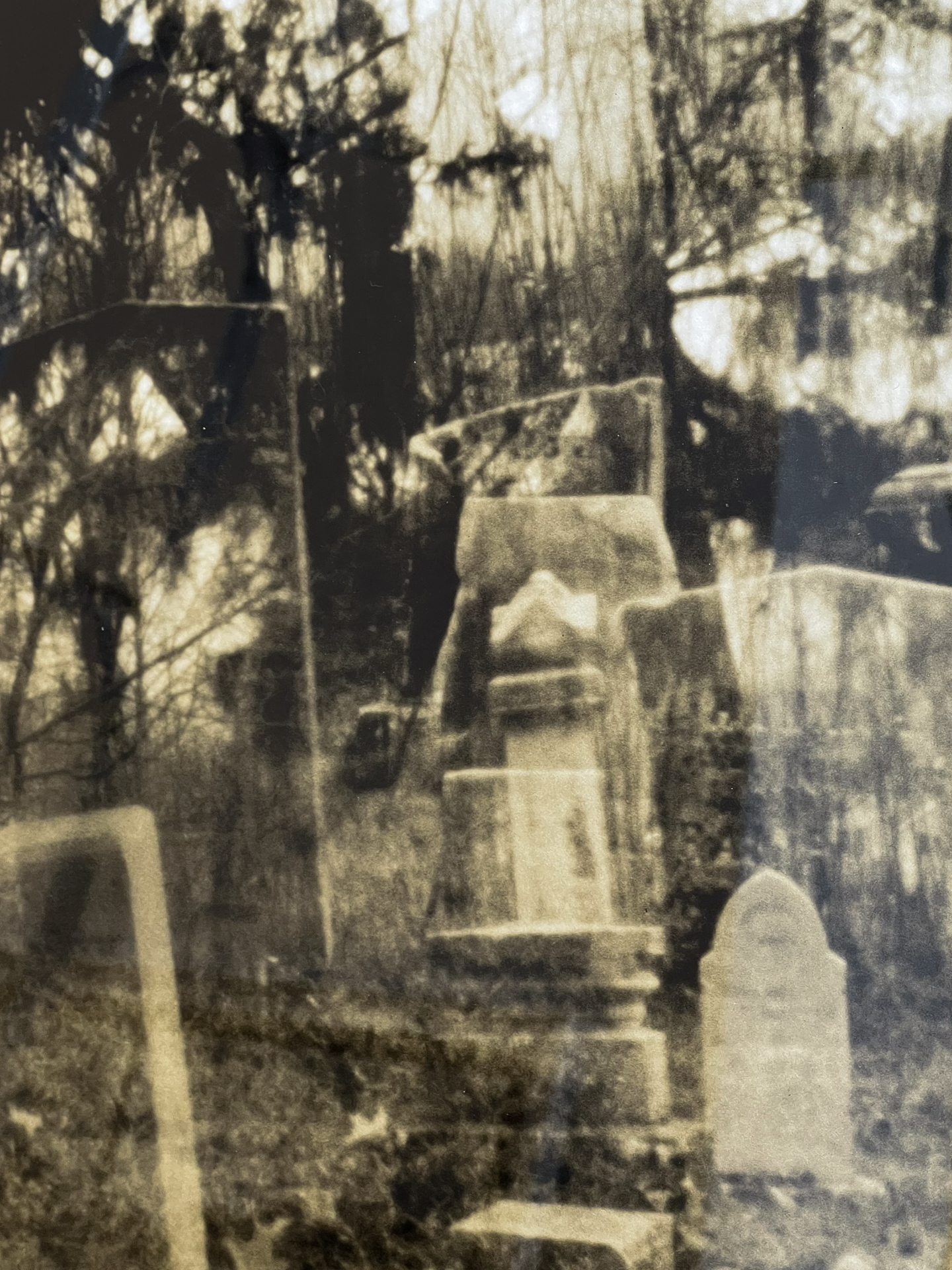
green lining?
Portable DVD players, wood, video
55” x 72” (installed) 13” x 10” (individual boxes)
1 minute and 15 seconds, 3 minutes and 14 seconds, 1 minute and 14 seconds
Slash and burn land clearing in Florida provides an optimal habitat for edible weeds. green lining? documents the tragedy, irony, and possible redemption of these landscapes. Rampant land development—condominiums, churches, and subdivisions— marks/mars the Florida landscape and is part of the ongoing history of the state. In the current the real estate market, developers clear land at a breathtaking pace, forest, farm or ranch land one week, strip mall and high density suburban homes the next. Bulldozers, fire, and herbicide destroy entire ecosystems. Next, a road replete with a cul-de-sac is etched into the landscape, followed by utilities and signage purposing the land into sale-able lots. If not immediately built upon, the cleared land is left to its own devices becoming a ruderal ecosystem, providing a habitat for edible weeds and creating a green lining in light of the greater destruction.
Portable DVD players, wood, video
55” x 72” (installed) 13” x 10” (individual boxes)
1 minute and 15 seconds, 3 minutes and 14 seconds, 1 minute and 14 seconds
Slash and burn land clearing in Florida provides an optimal habitat for edible weeds. green lining? documents the tragedy, irony, and possible redemption of these landscapes. Rampant land development—condominiums, churches, and subdivisions— marks/mars the Florida landscape and is part of the ongoing history of the state. In the current the real estate market, developers clear land at a breathtaking pace, forest, farm or ranch land one week, strip mall and high density suburban homes the next. Bulldozers, fire, and herbicide destroy entire ecosystems. Next, a road replete with a cul-de-sac is etched into the landscape, followed by utilities and signage purposing the land into sale-able lots. If not immediately built upon, the cleared land is left to its own devices becoming a ruderal ecosystem, providing a habitat for edible weeds and creating a green lining in light of the greater destruction.



Mapping the Managed Forest: Interstitial Sustenance
In collaboration with longleaf pine, sand pine, marsh fleabane, shiny blueberry, sparkle berry, deerberry, myrtle, beautyberry,
gallberry, red bay, magnolia, lac bugs and bees
sugar, honey, water, canning jars, pine shelving
68 x 48”
Drive in any direction away from town on an interstate or backcountry road and rows upon rows of pine trees morph into grids of pine plantations that constitute the majority of the rural landscapes of the southeastern US. Managed pine forests are economic resources with ties to private industry, but many are also part of the public trust in the form of state wildlife and water management areas that are simultaneously sites of outdoor recreation and agriculture.
Longleaf pines (pinus palustrus), once dominated pre-European settlement forests and are deeply rooted in the economy, culture and history of the southeastern United States. Longleaf pine forests were one of the most diverse and abundant ecosystems in the world--open, sandy, bright and airy landscapes that provided habitat for birds, deer, bobcats, bears, tortoises, reptiles and hundreds of diverse plant species. In the present, the organization of most managed forests abets the commodification and efficient development of timber resources.
Eccentric Grids: Mapping the Managed Forest: is a series of cross-disciplinary sensual investigations into the pine ecosystems of north Florida. Interstitial Sustenance examines the historical medicinal and culinary uses of the native plant understory that connects and supports the gridded formation of cultivated longleaf pines at Austin Cary Forest, University of Florida’s teaching forest. Foraging and preserving plants in sugar using canning technologies invites the audience to consider how practices of scientific collection and extraction shape our relationship to the land.
Interstitial Sustenance is both the painting formed by the shelving and the jars of jelly and jam, and my physical engagement with the managed forest. I began by walking the forest with botanist documenting and identifying the plants living amongst the pines. I, then, researched each plant’s natural history, surprised by the lack of information on the uses and edibility of each plant. Descriptions often ended with mention of an association of the plant with “native peoples”, but absent was the recognition of the specificity of indigenous knowledge. With gratitude, I carefully harvested needles, leaves and berries, walking and crawling amongst the plants, noticing patterns of how they space and entangle with one another and learning their strategies for dispersal and sustainability. Finally, I processed the plants into jam and jelly in mason jars recalling the history of preservation of specimens and speculating on the potentials and contradictions of what constitutes listening to, caring for, and making use of land.
Austin Cary Forest and my home sit on the ancestral territory of the Potano and of the Seminole peoples. An acknowledgment of the land is a formal statement that recognizes Indigenous Peoples as the traditional stewards of the land and acknowledges the enduring relationship between them and their traditional territories. The purpose of this statement is to raise awareness of this relationship as well as the complex histories that led to the forceful removal of Native Americans from their ancestral lands in what today is recognized as the state of Florida.
Special thanks to Alex Abair for botanical consultation and plant identification and the staff of University of Florida’s School of Forest, Fisheries, & Geomatics Sciences Austin Cary Forest for access and technical support.
In collaboration with longleaf pine, sand pine, marsh fleabane, shiny blueberry, sparkle berry, deerberry, myrtle, beautyberry,
gallberry, red bay, magnolia, lac bugs and bees
sugar, honey, water, canning jars, pine shelving
68 x 48”
Drive in any direction away from town on an interstate or backcountry road and rows upon rows of pine trees morph into grids of pine plantations that constitute the majority of the rural landscapes of the southeastern US. Managed pine forests are economic resources with ties to private industry, but many are also part of the public trust in the form of state wildlife and water management areas that are simultaneously sites of outdoor recreation and agriculture.
Longleaf pines (pinus palustrus), once dominated pre-European settlement forests and are deeply rooted in the economy, culture and history of the southeastern United States. Longleaf pine forests were one of the most diverse and abundant ecosystems in the world--open, sandy, bright and airy landscapes that provided habitat for birds, deer, bobcats, bears, tortoises, reptiles and hundreds of diverse plant species. In the present, the organization of most managed forests abets the commodification and efficient development of timber resources.
Eccentric Grids: Mapping the Managed Forest: is a series of cross-disciplinary sensual investigations into the pine ecosystems of north Florida. Interstitial Sustenance examines the historical medicinal and culinary uses of the native plant understory that connects and supports the gridded formation of cultivated longleaf pines at Austin Cary Forest, University of Florida’s teaching forest. Foraging and preserving plants in sugar using canning technologies invites the audience to consider how practices of scientific collection and extraction shape our relationship to the land.
Interstitial Sustenance is both the painting formed by the shelving and the jars of jelly and jam, and my physical engagement with the managed forest. I began by walking the forest with botanist documenting and identifying the plants living amongst the pines. I, then, researched each plant’s natural history, surprised by the lack of information on the uses and edibility of each plant. Descriptions often ended with mention of an association of the plant with “native peoples”, but absent was the recognition of the specificity of indigenous knowledge. With gratitude, I carefully harvested needles, leaves and berries, walking and crawling amongst the plants, noticing patterns of how they space and entangle with one another and learning their strategies for dispersal and sustainability. Finally, I processed the plants into jam and jelly in mason jars recalling the history of preservation of specimens and speculating on the potentials and contradictions of what constitutes listening to, caring for, and making use of land.
Austin Cary Forest and my home sit on the ancestral territory of the Potano and of the Seminole peoples. An acknowledgment of the land is a formal statement that recognizes Indigenous Peoples as the traditional stewards of the land and acknowledges the enduring relationship between them and their traditional territories. The purpose of this statement is to raise awareness of this relationship as well as the complex histories that led to the forceful removal of Native Americans from their ancestral lands in what today is recognized as the state of Florida.
Special thanks to Alex Abair for botanical consultation and plant identification and the staff of University of Florida’s School of Forest, Fisheries, & Geomatics Sciences Austin Cary Forest for access and technical support.

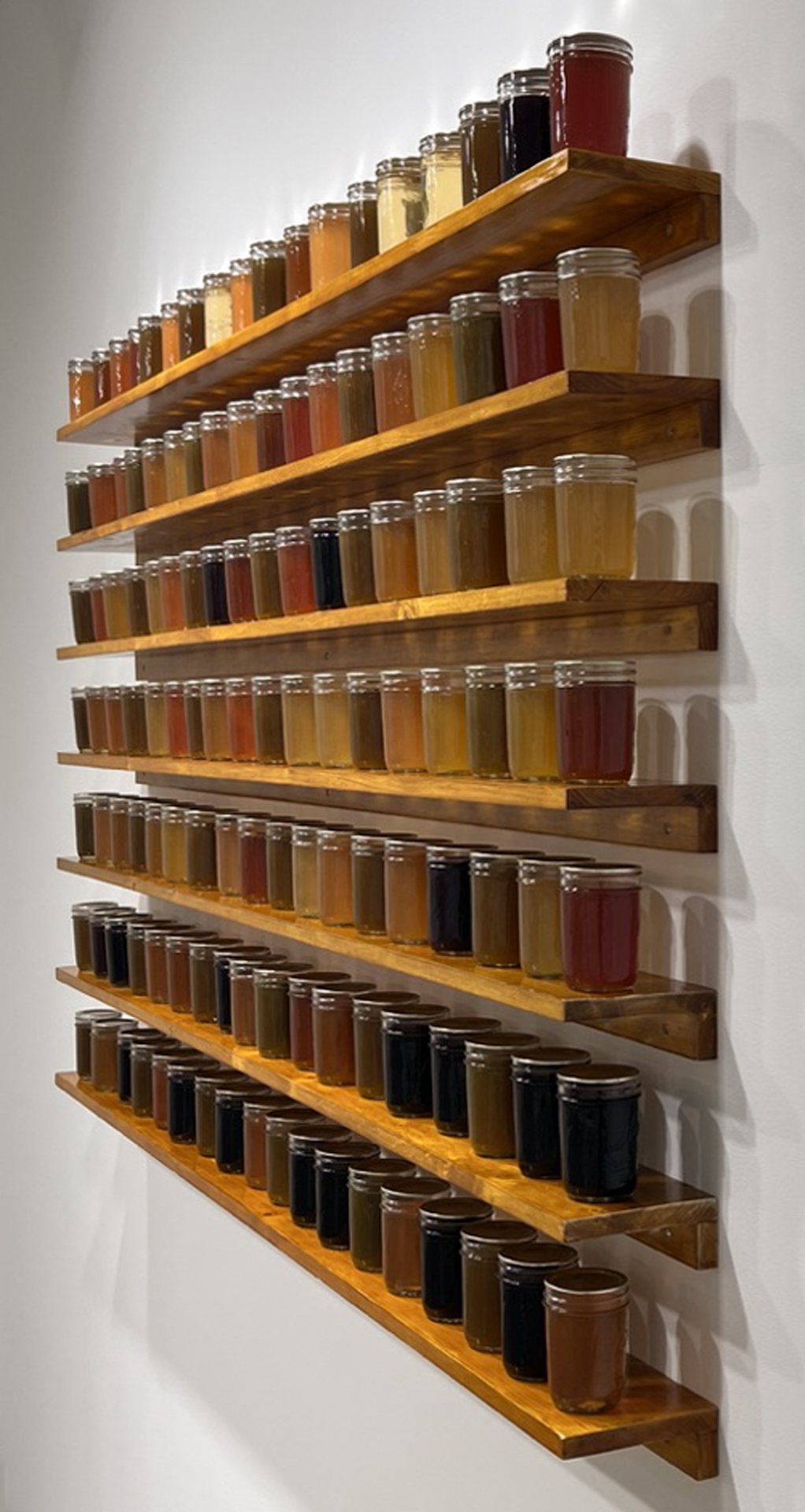



Apron
Basswood fiber (Tilia americana)
75 x 35”
In Objects of Power II, the inner bark (bast) fiber of a basswood tree (Tilia americana) weaves and unweaves into the form of an apron, a symbol of domestic life and women’s work. Bast fiber from species of trees in the genus Tilia was essential to the lives of my ancestors in Germany, the Czech Republic, and Norway for tens of thousands of years. Through harvesting, processing, and creating with basswood fiber in both traditional and non-traditional was I seek to connect to their lives and experiences.
Basswood fiber (Tilia americana)
75 x 35”
In Objects of Power II, the inner bark (bast) fiber of a basswood tree (Tilia americana) weaves and unweaves into the form of an apron, a symbol of domestic life and women’s work. Bast fiber from species of trees in the genus Tilia was essential to the lives of my ancestors in Germany, the Czech Republic, and Norway for tens of thousands of years. Through harvesting, processing, and creating with basswood fiber in both traditional and non-traditional was I seek to connect to their lives and experiences.

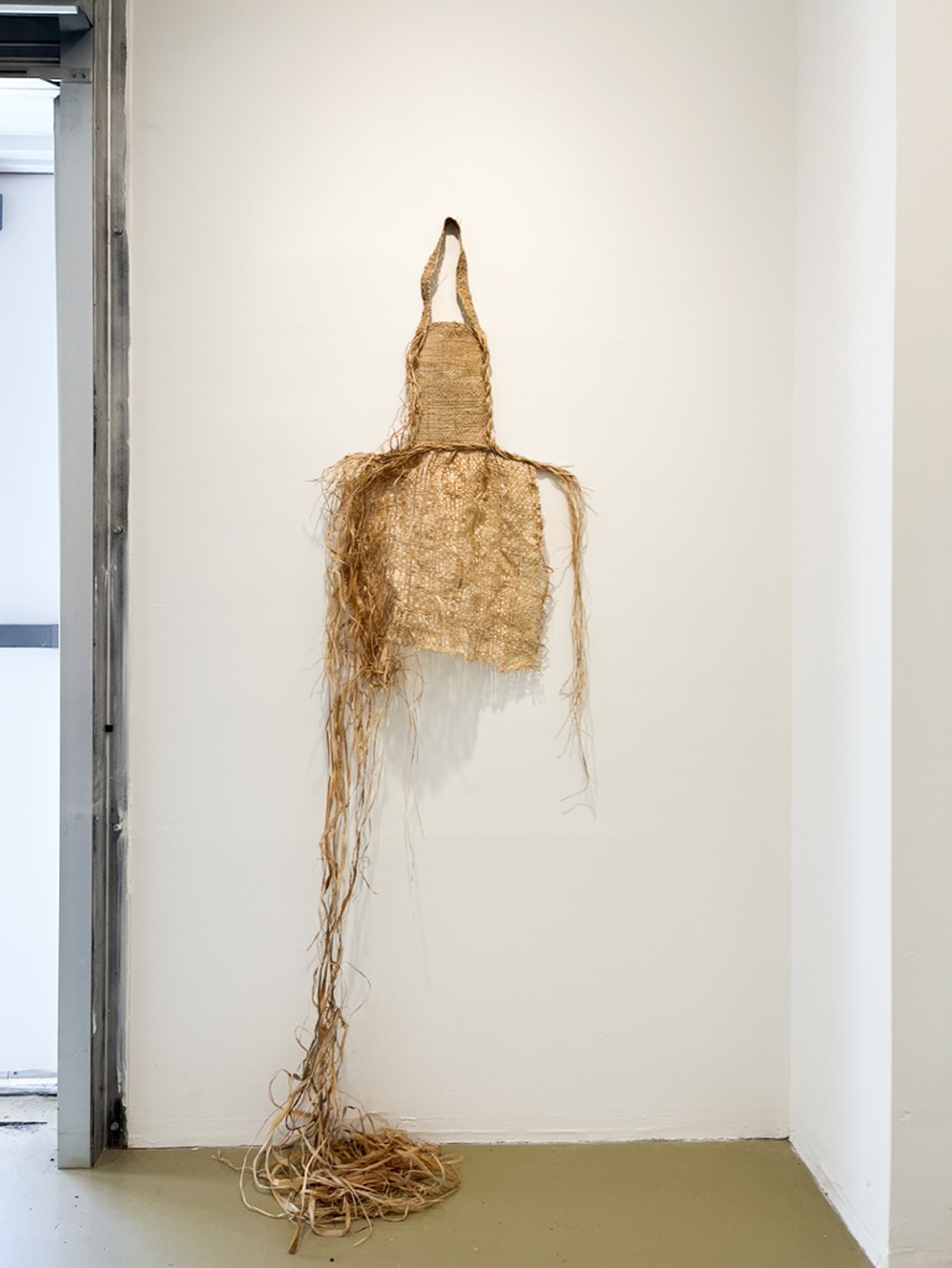
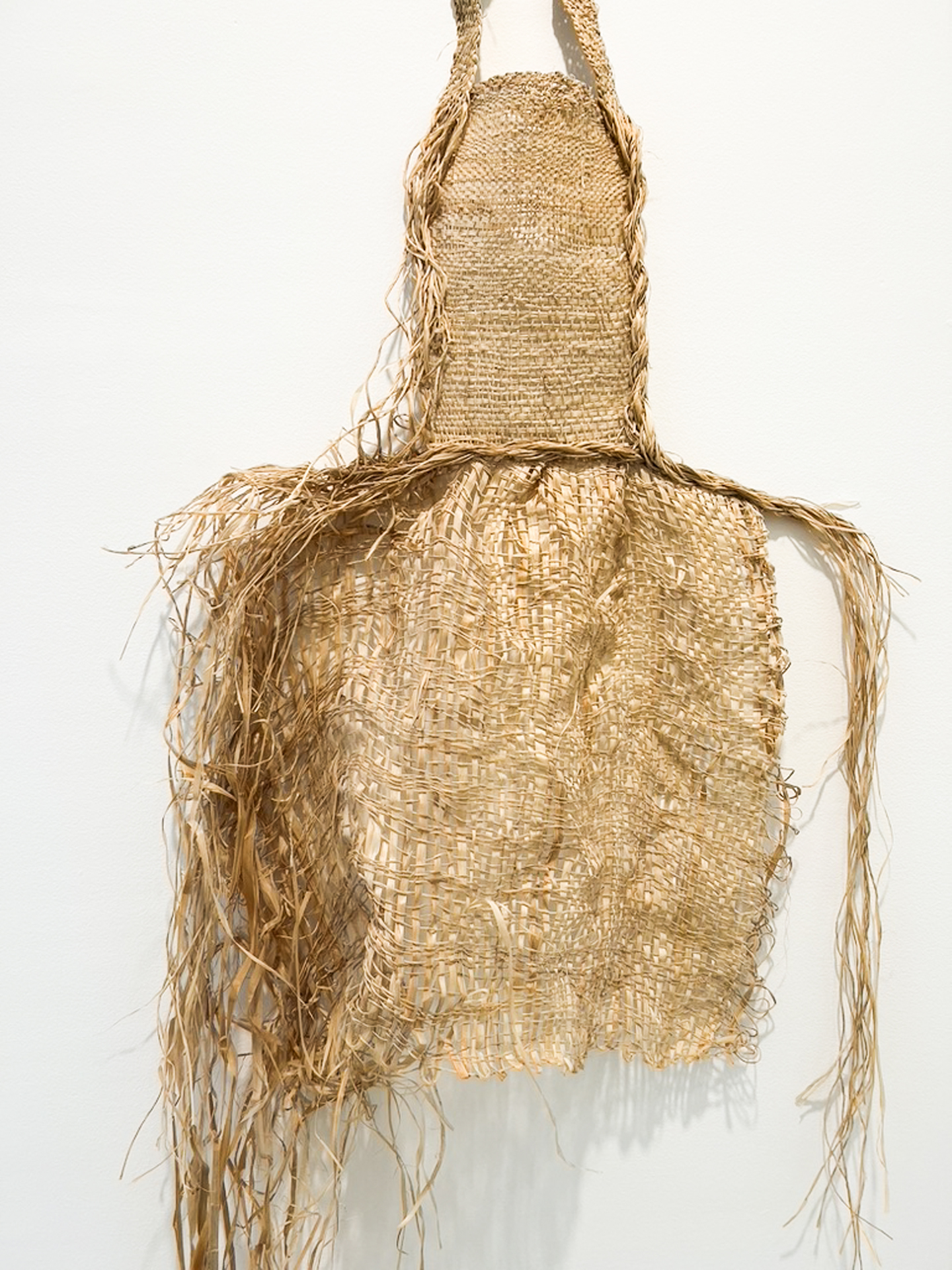
Ulmus Unweaving
American elm branch bark (Ulmus americana)
61 x 6 x 6”
In Ulmus Unweaving, the inner part of a found piece of elm bark separates from the main body and either weaves or unweaves itself in a tangle of patterns. The process of peeling inner bark can only happen in the spring and this piece represents the ephemeral nature of that short time frame. During the making of Ulmus Unweaving and related pieces I start with the pieces of bark and listen to the material as I construct it in situ.
American elm branch bark (Ulmus americana)
61 x 6 x 6”
In Ulmus Unweaving, the inner part of a found piece of elm bark separates from the main body and either weaves or unweaves itself in a tangle of patterns. The process of peeling inner bark can only happen in the spring and this piece represents the ephemeral nature of that short time frame. During the making of Ulmus Unweaving and related pieces I start with the pieces of bark and listen to the material as I construct it in situ.



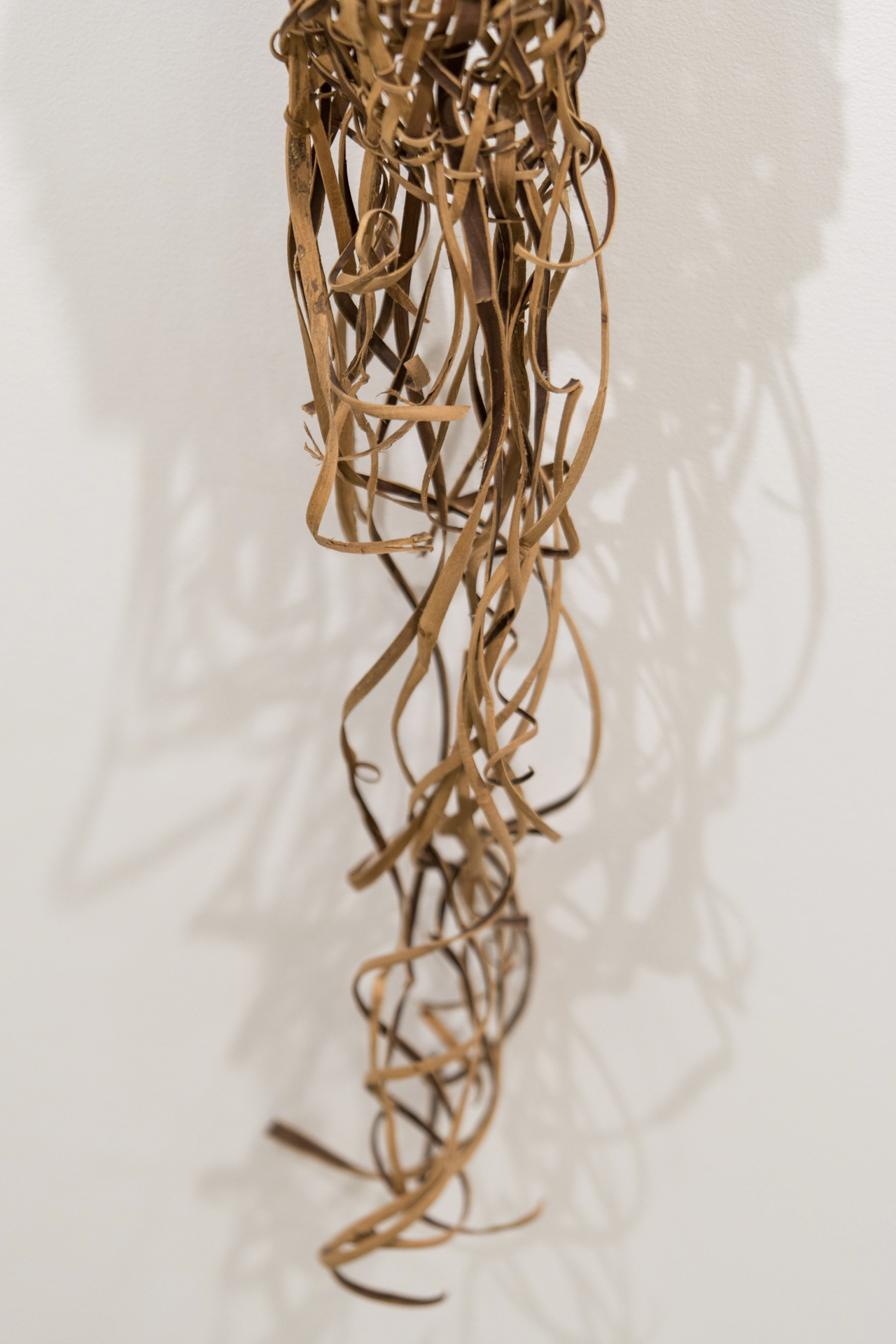
Standing Form/Becoming
Black ash log and splints (Fraxinus alba)
21 ¼ x 4 x 4”
Standing Form/Becoming uitlizes the traditional North American basketry material of black ash splints in a way that collaborates with the log, and therefore the tree, from which the material came. As black ash trees continue to die off due to invasive emerald ash borer beetles this series may be my only experience working with this incredible material, lending an air of reverence to the process and the final piece.
Black ash log and splints (Fraxinus alba)
21 ¼ x 4 x 4”
Standing Form/Becoming uitlizes the traditional North American basketry material of black ash splints in a way that collaborates with the log, and therefore the tree, from which the material came. As black ash trees continue to die off due to invasive emerald ash borer beetles this series may be my only experience working with this incredible material, lending an air of reverence to the process and the final piece.


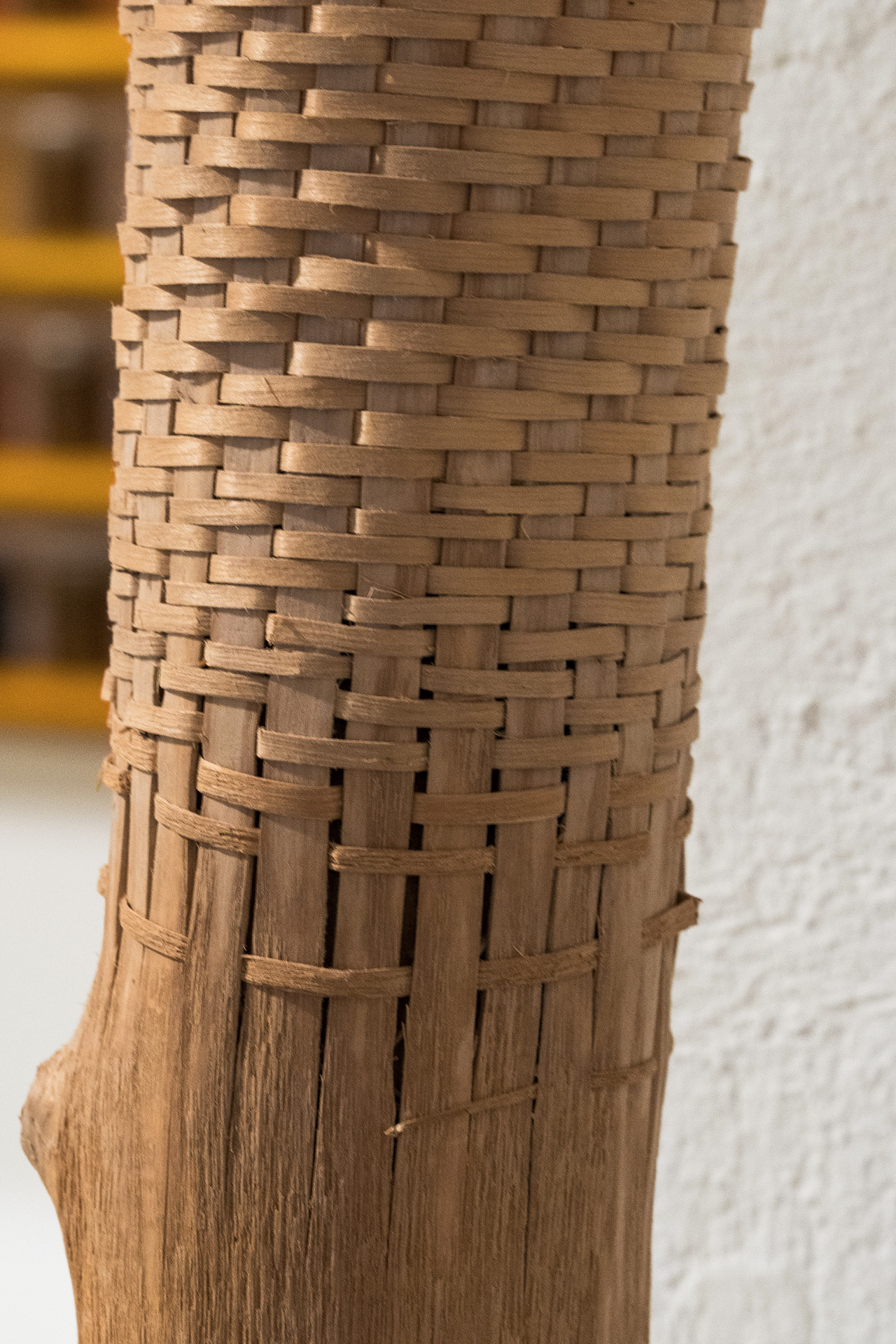

Woven Words
Grapevine (Vitis sp.), black walnut husk dye, honeysuckle vine (Lonicera japonica), pen on rives heavyweight paper
Dimensions variable
By carefully deconstructing entire bird’s nests and drawing each twig and rootlet, I am able to pay tribute to both the bird’s, and my own, diligence and attention to detail. The nest pieces laid out next to each other bear a striking resemblance to the characters of an unreadable, yet incredibly compelling language. In this attempt to understand more-than-human worlds the individual beauty and value of each piece of the nest is highlighted, as well as the whole that they are a part of.
Grapevine (Vitis sp.), black walnut husk dye, honeysuckle vine (Lonicera japonica), pen on rives heavyweight paper
Dimensions variable
By carefully deconstructing entire bird’s nests and drawing each twig and rootlet, I am able to pay tribute to both the bird’s, and my own, diligence and attention to detail. The nest pieces laid out next to each other bear a striking resemblance to the characters of an unreadable, yet incredibly compelling language. In this attempt to understand more-than-human worlds the individual beauty and value of each piece of the nest is highlighted, as well as the whole that they are a part of.




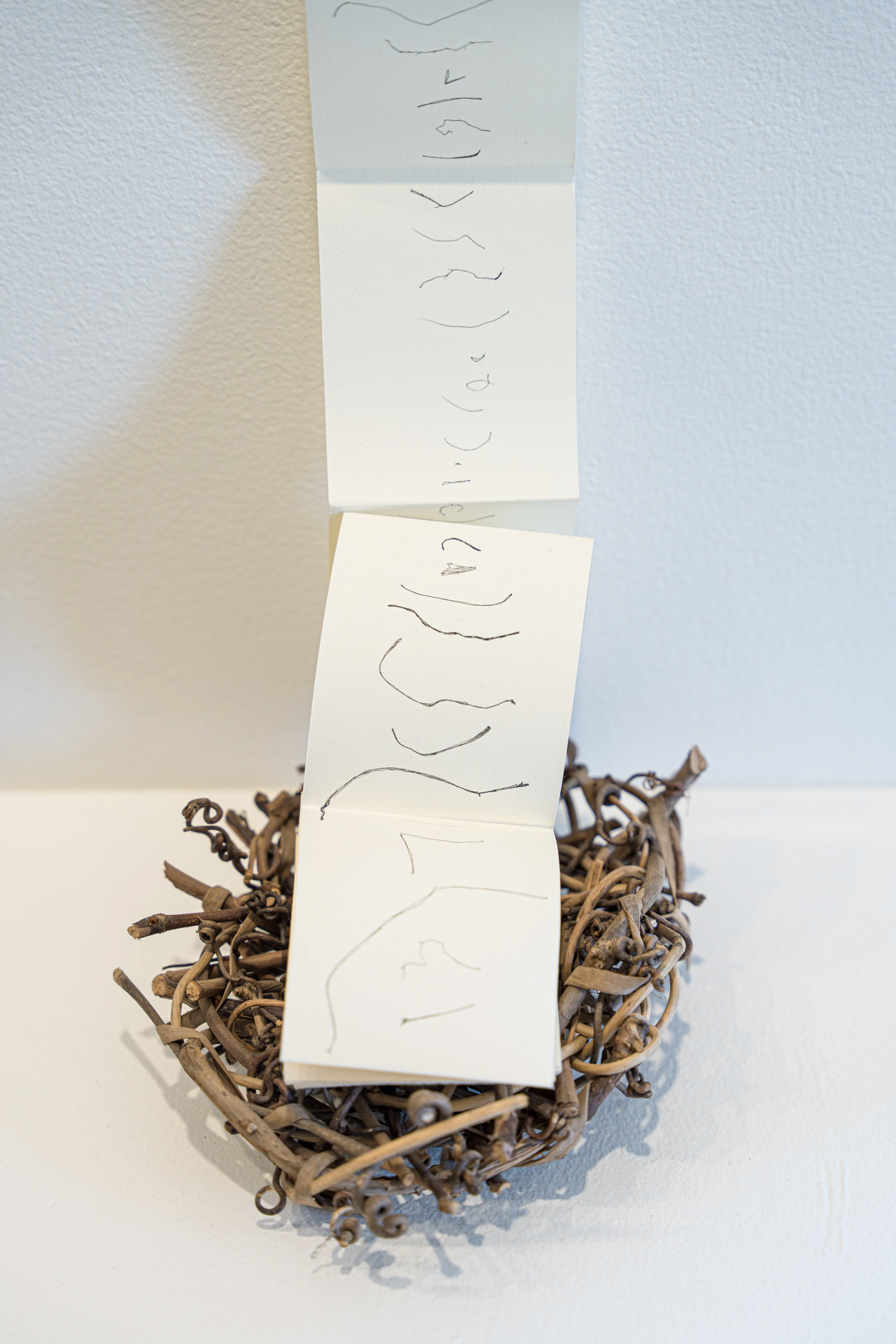
Watershed Topography (Neversink River)
Graphite on paper
9 x 13”
My Watershed Topography series is a group of drawings that present an alternative set of borders for familiar landscapes. Although appearing initially as abstract forms, these dense branching masses actually depict a bird’s eye view of hydrologic structures defined by rainfall and the flow of water across land. In Western earth science, a watershed connotes an area of land that contains a common set of streams and rivers that all drain into a single larger body of water, also sometimes described as a basin or drainage area.
Watershed Topography (Neversink River) depicts the area of land drained by several branches of the Neversink River in the Catskills, and the current footprint of the human-constructed reservoir they drain into, the Neversink Reservoir. The drawing ends at the damn at the southern end of the reservoir. This reservoir and the rivers that flow into it--represented here by the white of the paper surrounded by overland water flows in dark graphite--is one of several reservoirs in the Catskills that catch and hold water from adjacent watersheds that catch and hold water that would otherwise flow southeast into the Delaware River, rerouting it via an aqueduct system to provide drinking water to New York City.
Graphite on paper
9 x 13”
My Watershed Topography series is a group of drawings that present an alternative set of borders for familiar landscapes. Although appearing initially as abstract forms, these dense branching masses actually depict a bird’s eye view of hydrologic structures defined by rainfall and the flow of water across land. In Western earth science, a watershed connotes an area of land that contains a common set of streams and rivers that all drain into a single larger body of water, also sometimes described as a basin or drainage area.
Watershed Topography (Neversink River) depicts the area of land drained by several branches of the Neversink River in the Catskills, and the current footprint of the human-constructed reservoir they drain into, the Neversink Reservoir. The drawing ends at the damn at the southern end of the reservoir. This reservoir and the rivers that flow into it--represented here by the white of the paper surrounded by overland water flows in dark graphite--is one of several reservoirs in the Catskills that catch and hold water from adjacent watersheds that catch and hold water that would otherwise flow southeast into the Delaware River, rerouting it via an aqueduct system to provide drinking water to New York City.


Ghost Estuary (Gowanus Canal)
Graphite on paper
9 x 13”
Ghost Estuary (Gowanus Canal) depicts that past and present footprint of the Gowanus in its transition from a river traversing a marsh into a superfunded canal over several centuries. The darkest gray graphite patches represent the footprint of the Gowanus marshlands circa 1766, the light gray patches represent the flow of the Gowanus Creek at the same time period, while the exposed white paper in the center of the form represents the current canal (see research by Jessica T. Miller).
Graphite on paper
9 x 13”
Ghost Estuary (Gowanus Canal) depicts that past and present footprint of the Gowanus in its transition from a river traversing a marsh into a superfunded canal over several centuries. The darkest gray graphite patches represent the footprint of the Gowanus marshlands circa 1766, the light gray patches represent the flow of the Gowanus Creek at the same time period, while the exposed white paper in the center of the form represents the current canal (see research by Jessica T. Miller).
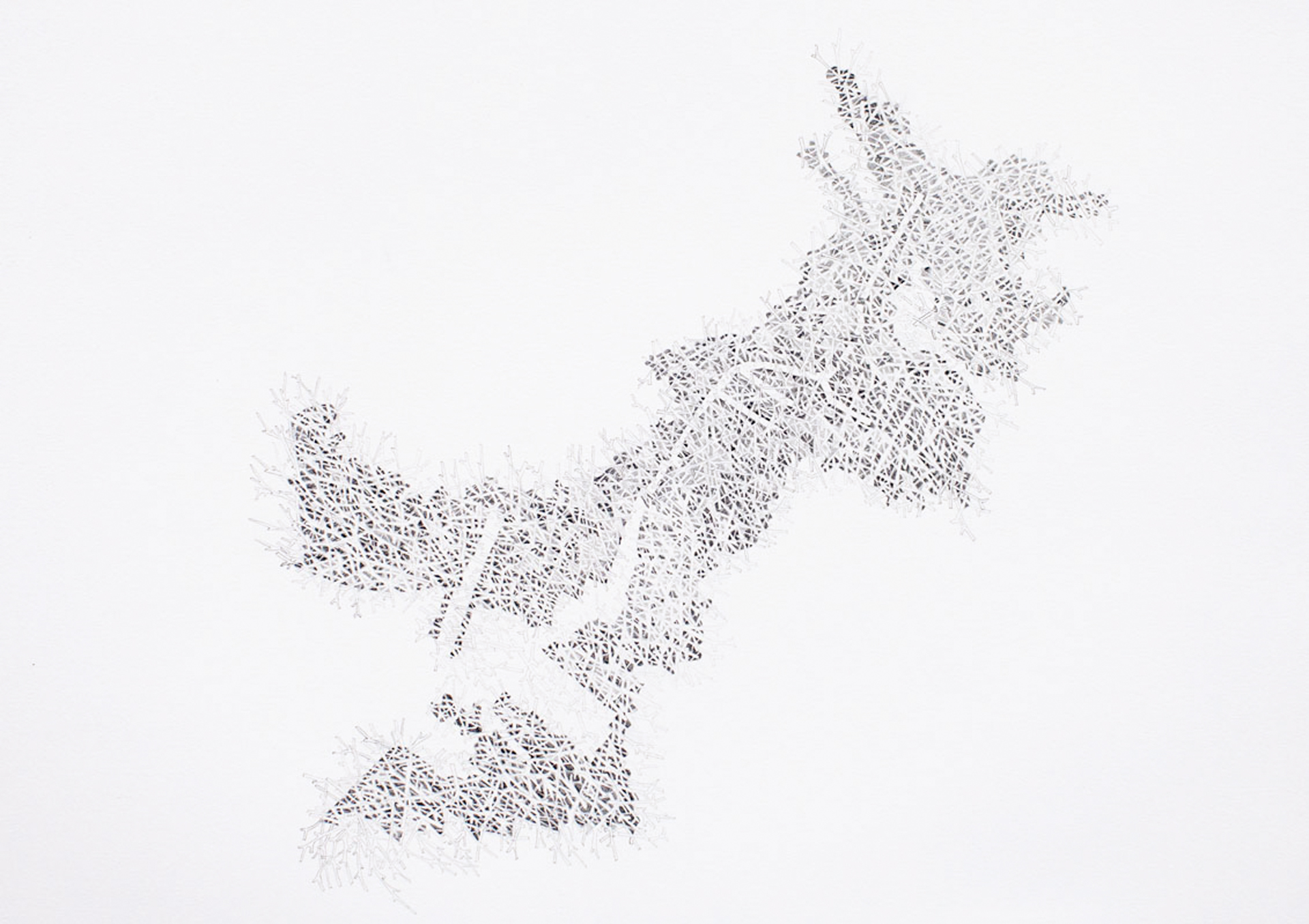

Watershed Topography: Hudson Headwaters (Calamity Brook/Henderson Lake)
Graphite on paper
12 x 9”
Watershed Topography: Hudson Headwaters (Calamity Brook/Henderson Lake) depicts Calamity Brook, the northernmost tributary of the Hudson River, as it flows past Henderson Lake and joins the Hudson at the Flowed Lands at the northernmost portion of the Hudson/Mahicanituck Watershed in the Adirondacks. The dark graphite patches represent named the creek, lake, river, and marshlands, while the woven branches depict the many complex overland and underground flows that contribute to the watershed.
Graphite on paper
12 x 9”
Watershed Topography: Hudson Headwaters (Calamity Brook/Henderson Lake) depicts Calamity Brook, the northernmost tributary of the Hudson River, as it flows past Henderson Lake and joins the Hudson at the Flowed Lands at the northernmost portion of the Hudson/Mahicanituck Watershed in the Adirondacks. The dark graphite patches represent named the creek, lake, river, and marshlands, while the woven branches depict the many complex overland and underground flows that contribute to the watershed.


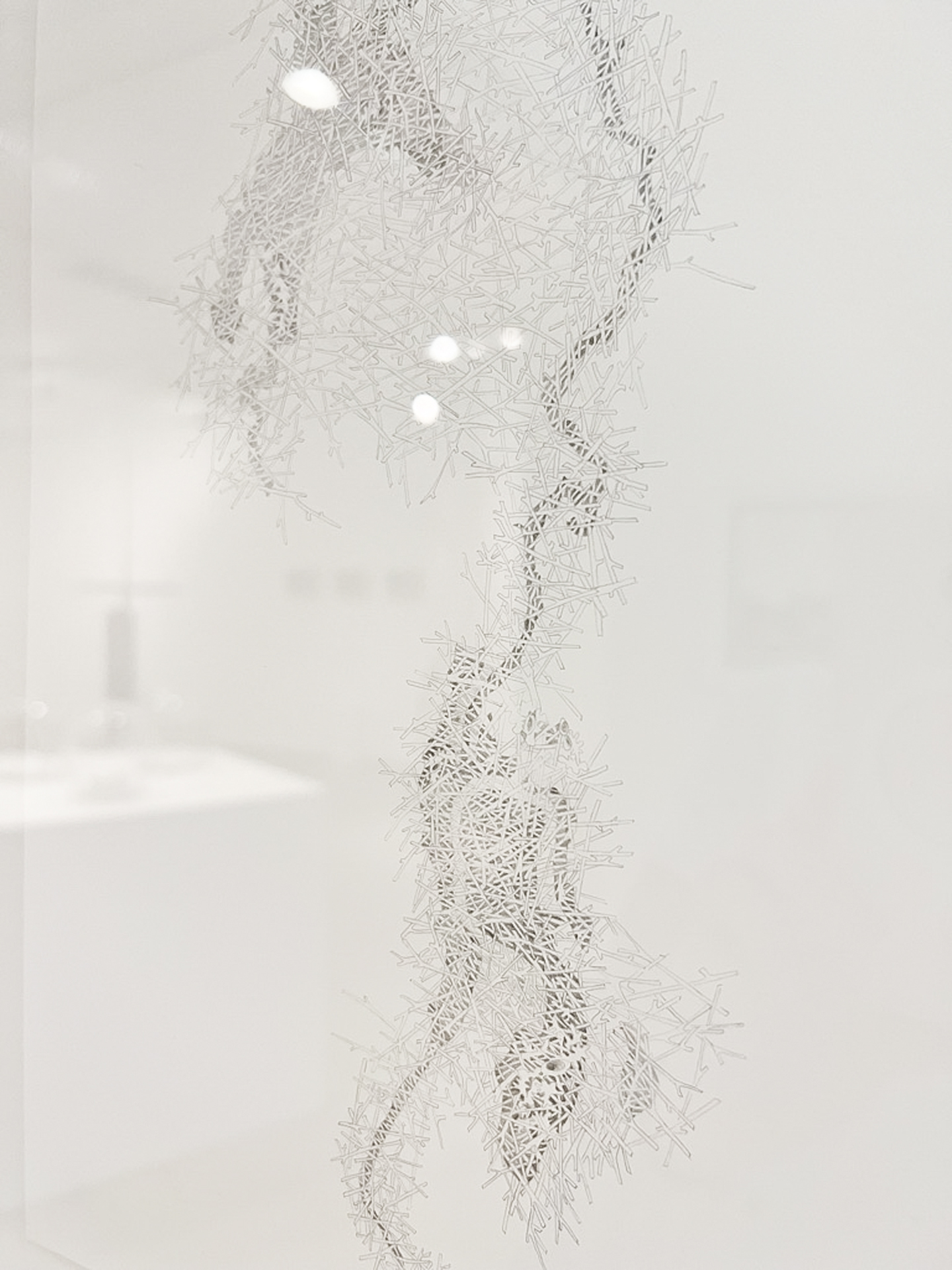
Watershed Topography: You Are Here (Hudson/Mahicanituck)
Graphite on paper, magnets, acrylic paint
11 x 10”
Watershed Topography: You Are Here (Hudson/Mahicanituck) is based on the footprint of the complete Hudson/Mahicanituck Watershed, with a moveable red magnet placed at the location within the watershed where the work is on view. In this drawing, the dark graphite patches represent the land area that makes up the watershed, from the northernmost tip in the Adirondacks, to the southern-most point in New York bay south of Manhattan. The easternmost portion of the watershed is in western New York, drained by the Mohawk River, with the easternmost portion drains parts of current-day Vermont, Massachusetts, and Connecticut. The branching forms revealing the white of the paper are mostly intuitive representations of the complex, fractal nature of watershed topographies, but some major named rivers are visible, including the Hudson/Mahicanituck running up the watershed’s center, and the Mohawk river coming in from the West and joining the Hudson at current-day Troy, NY.
Graphite on paper, magnets, acrylic paint
11 x 10”
Watershed Topography: You Are Here (Hudson/Mahicanituck) is based on the footprint of the complete Hudson/Mahicanituck Watershed, with a moveable red magnet placed at the location within the watershed where the work is on view. In this drawing, the dark graphite patches represent the land area that makes up the watershed, from the northernmost tip in the Adirondacks, to the southern-most point in New York bay south of Manhattan. The easternmost portion of the watershed is in western New York, drained by the Mohawk River, with the easternmost portion drains parts of current-day Vermont, Massachusetts, and Connecticut. The branching forms revealing the white of the paper are mostly intuitive representations of the complex, fractal nature of watershed topographies, but some major named rivers are visible, including the Hudson/Mahicanituck running up the watershed’s center, and the Mohawk river coming in from the West and joining the Hudson at current-day Troy, NY.
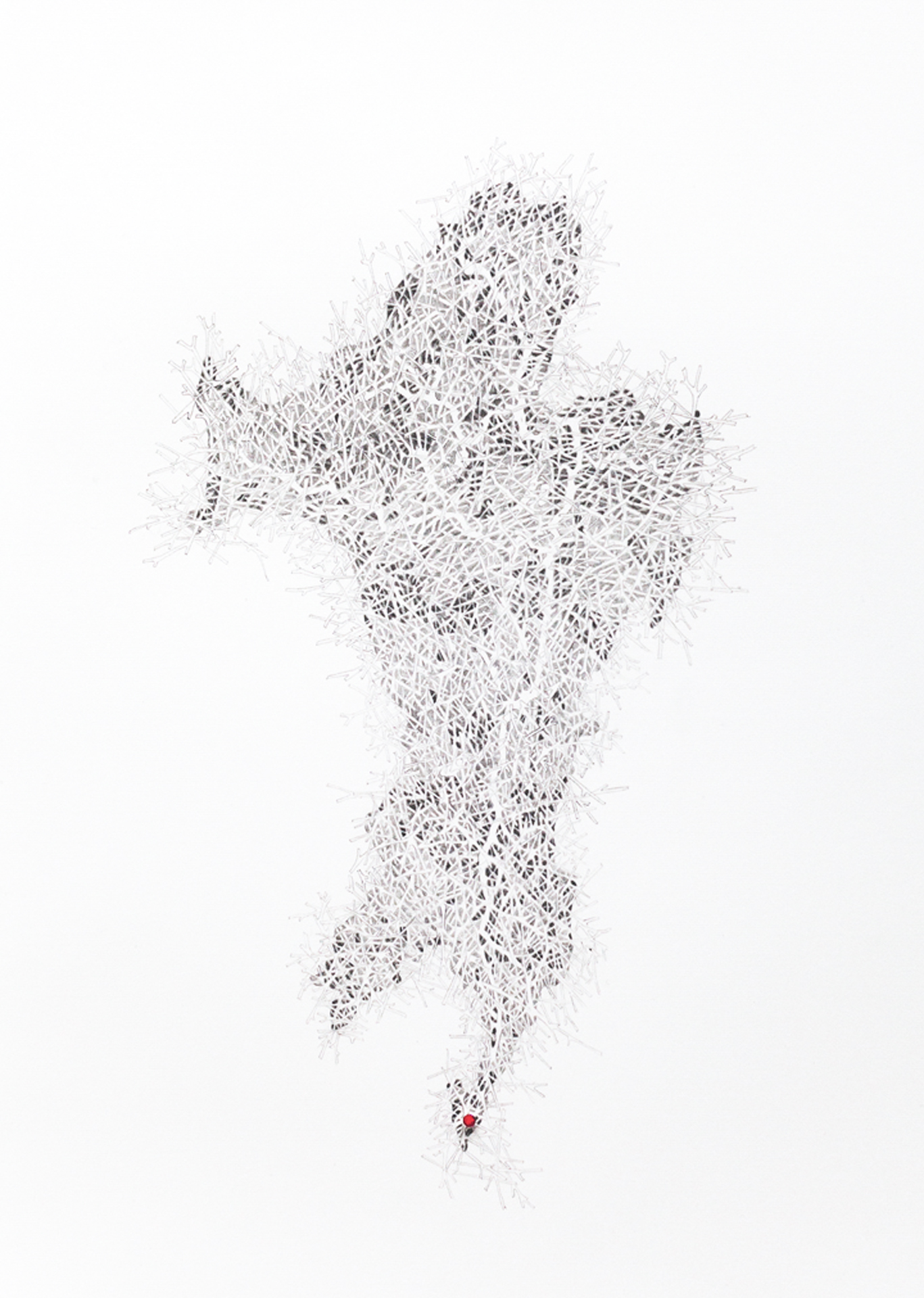


Watershed Topography: New York Harbor (Past, Present, Future)
Graphite on paper
10 x 8.5”
Watershed Topography: New York Harbor (Past, Present, Future) is based on maps of past, current, and future water levels where the Hudson river passes through current-day New York City and empties into the Atlantic at New York Bay. The dark gray graphite patches represent portions of the river’s mouth that are water currently, in the 21st Century, including the Hudson, East River, Jamaica Bay, New York Harbor, New York Bay, and a small portion of the Atlantic Ocean in the southeastern corner of the frame. The light gray patches are an amalgamation of past river and tidal topographies from the pre and early colonial period, before the river was dredged and its edges filled and hardened, along with influences from projected maps of sea level rise and coastal flooding over the next 100 years. The white were dry land prior to colonization, and are predicted to remain dry land over the next century (see research by Jessica Cox, George Colbert, and Guenter Vollath and FEMA’s flood maps).
Graphite on paper
10 x 8.5”
Watershed Topography: New York Harbor (Past, Present, Future) is based on maps of past, current, and future water levels where the Hudson river passes through current-day New York City and empties into the Atlantic at New York Bay. The dark gray graphite patches represent portions of the river’s mouth that are water currently, in the 21st Century, including the Hudson, East River, Jamaica Bay, New York Harbor, New York Bay, and a small portion of the Atlantic Ocean in the southeastern corner of the frame. The light gray patches are an amalgamation of past river and tidal topographies from the pre and early colonial period, before the river was dredged and its edges filled and hardened, along with influences from projected maps of sea level rise and coastal flooding over the next 100 years. The white were dry land prior to colonization, and are predicted to remain dry land over the next century (see research by Jessica Cox, George Colbert, and Guenter Vollath and FEMA’s flood maps).


Branded
Container 4 x 6 x 6"
Patent number laser-etched into Roundup-ready corn kernels.
Container 4 x 6 x 6"
Patent number laser-etched into Roundup-ready corn kernels.



Spectacles
Vintage optical instruments, utensils, brass, with gold-leafed radish and beets, soil, and radish and beet seeds, plates, and bell jars
7 x 3 x 4"
Borrowing the visual language from early natural science instruments, this series of dining implements alludes to the time when Western scientific inquiry relied on the inspection of natural specimens. These art pieces enable participants to step back in time and re-discover that sense of wonder, while playfully examining the micro and macro aspects of their food. Each grouping of objects in the series is based on a specific type of apparatus: antique opera binoculars, map readers, telescope/microscope barrels, proportional drafting, and navigational chart dividers. Each antique piece is reassembled and retrofitted with other found and hand-fabricated elements to create an individually unique piece.
Vintage optical instruments, utensils, brass, with gold-leafed radish and beets, soil, and radish and beet seeds, plates, and bell jars
7 x 3 x 4"
Borrowing the visual language from early natural science instruments, this series of dining implements alludes to the time when Western scientific inquiry relied on the inspection of natural specimens. These art pieces enable participants to step back in time and re-discover that sense of wonder, while playfully examining the micro and macro aspects of their food. Each grouping of objects in the series is based on a specific type of apparatus: antique opera binoculars, map readers, telescope/microscope barrels, proportional drafting, and navigational chart dividers. Each antique piece is reassembled and retrofitted with other found and hand-fabricated elements to create an individually unique piece.

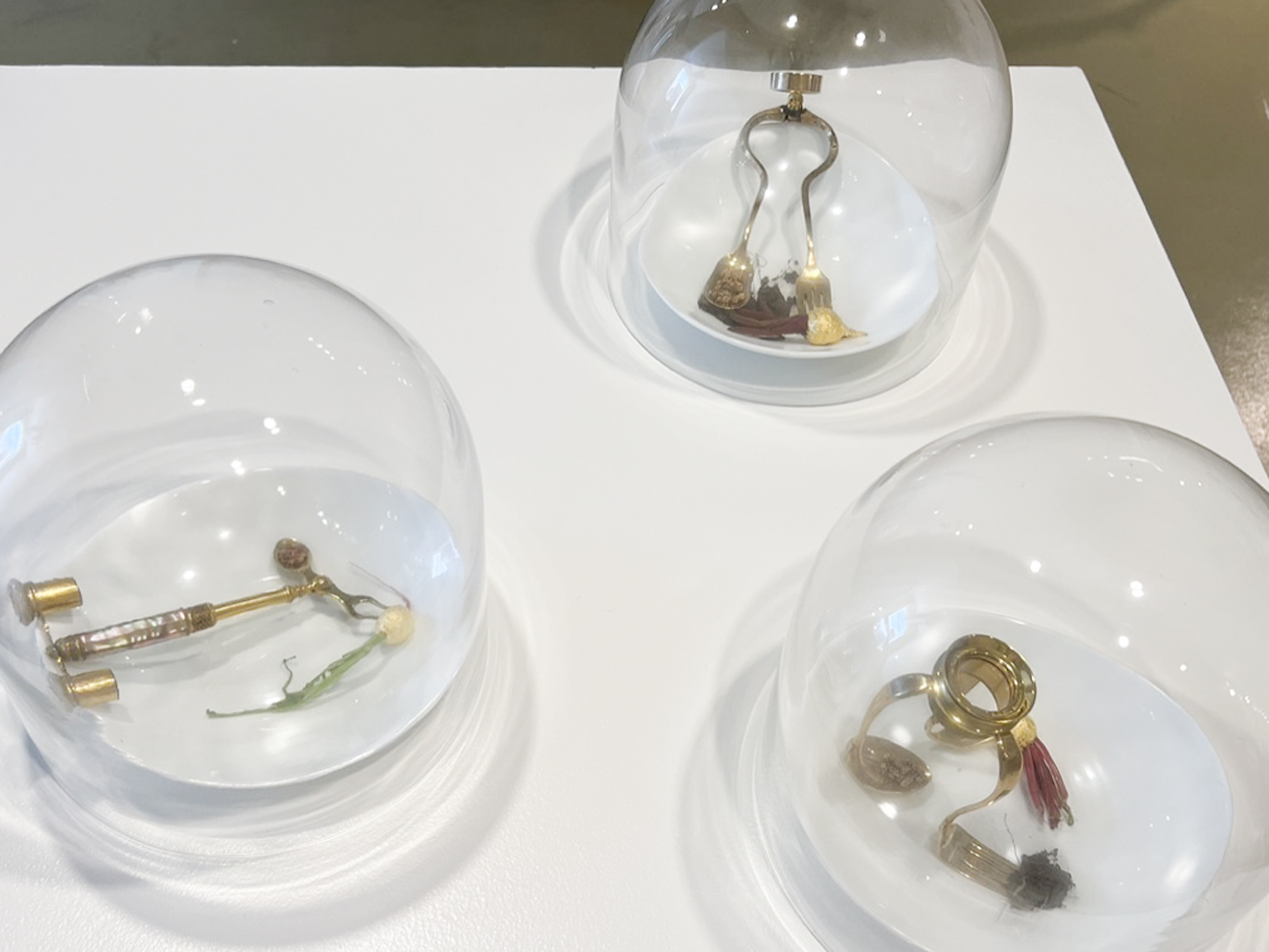
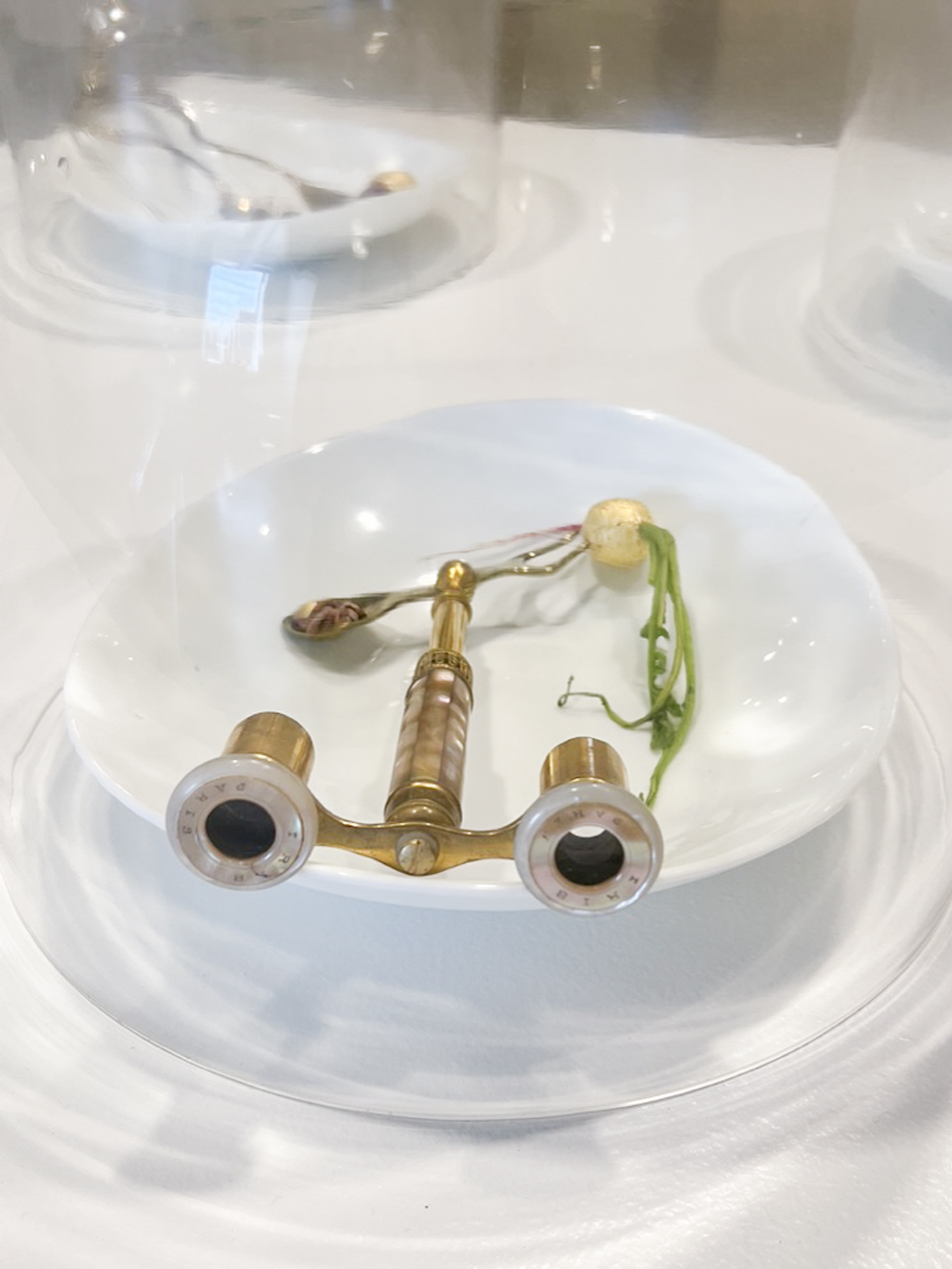
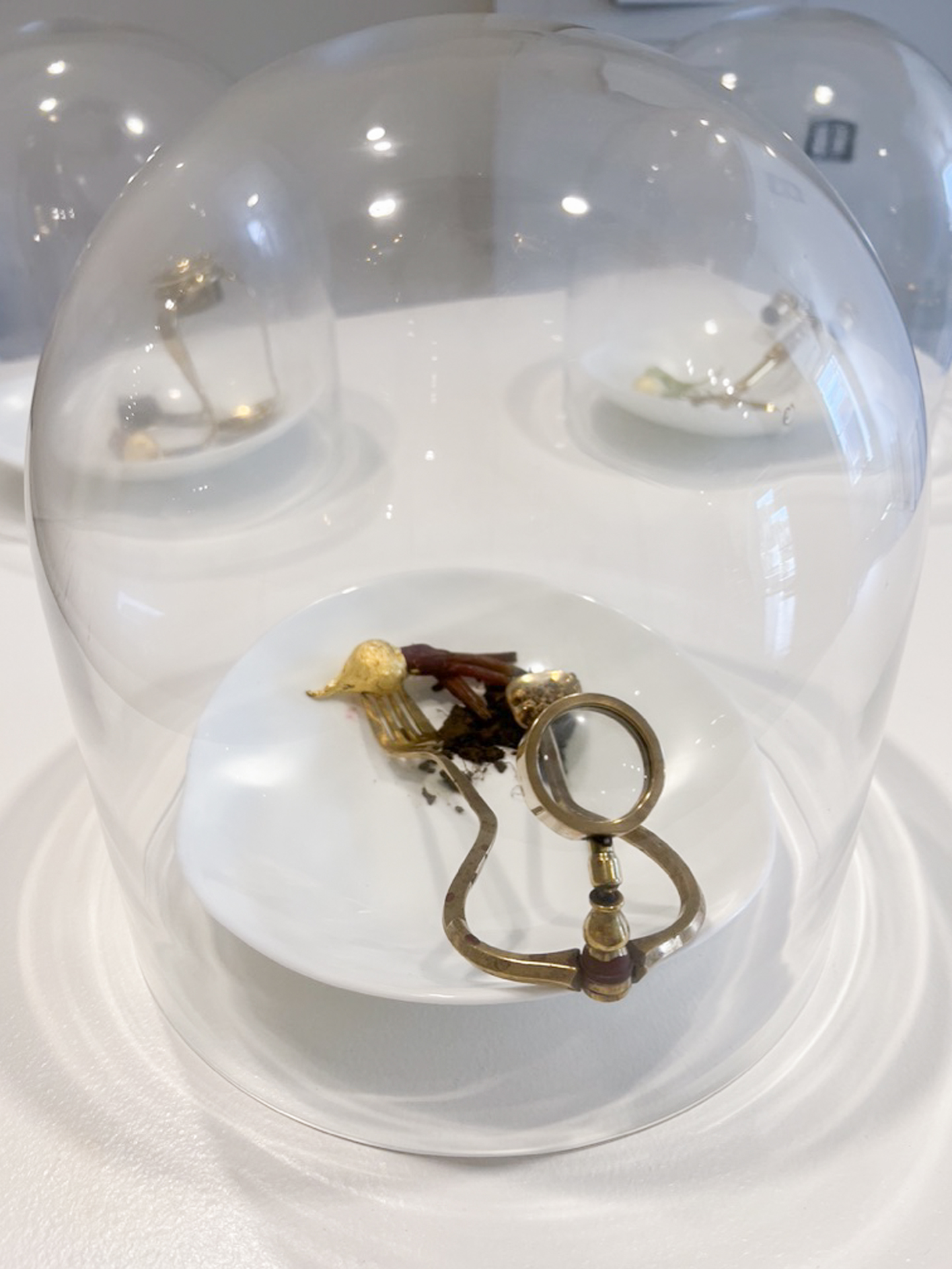

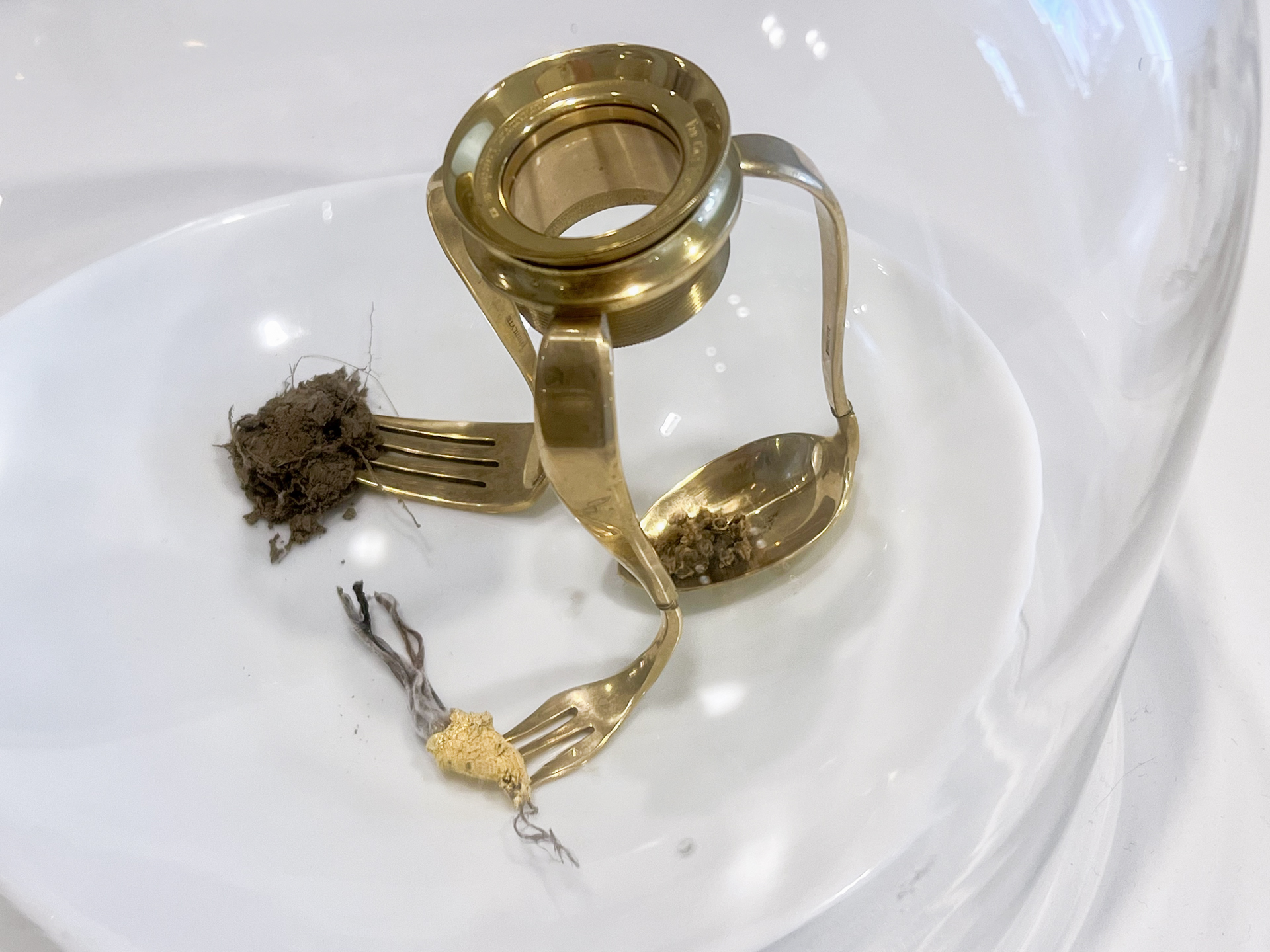



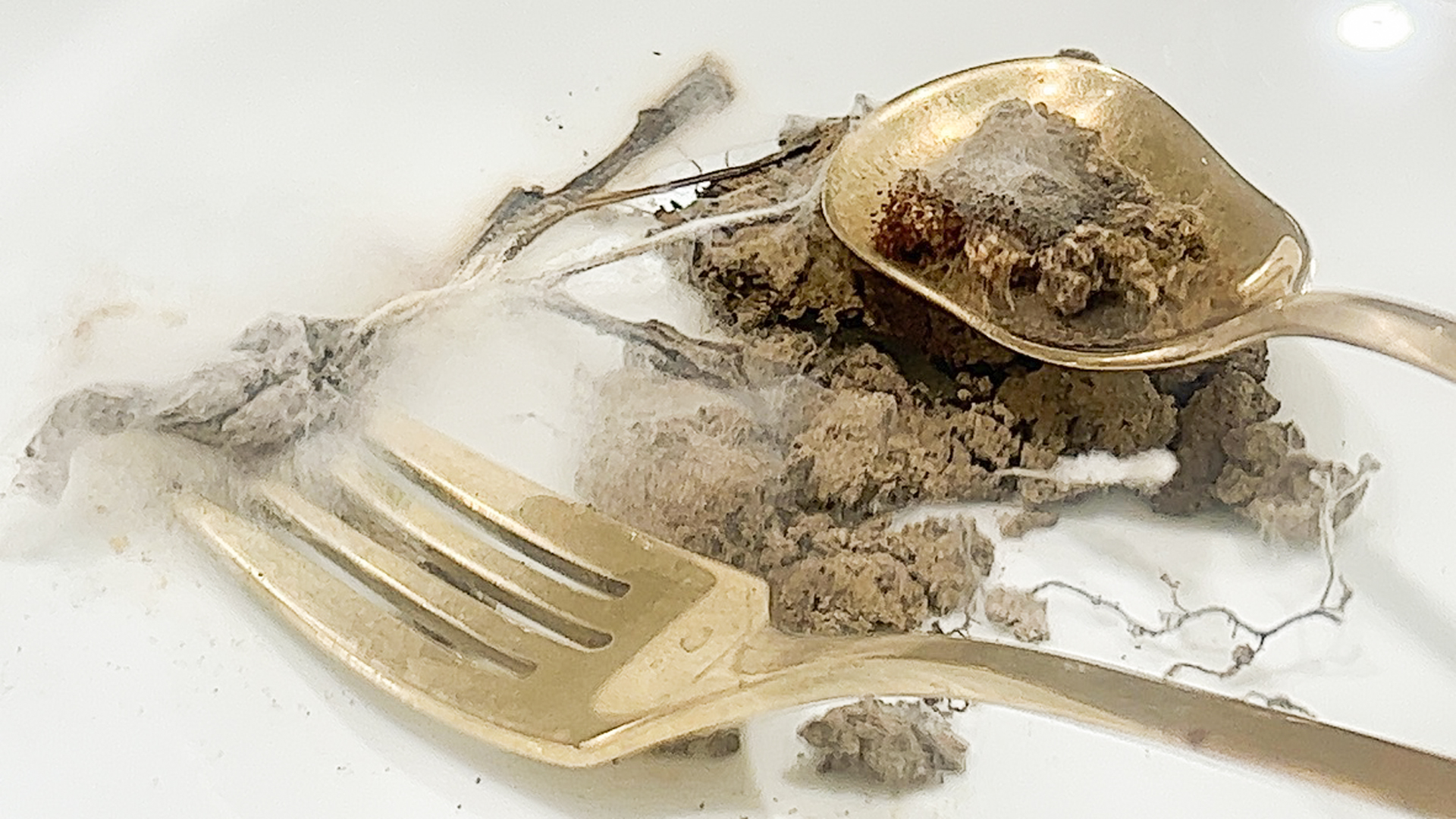

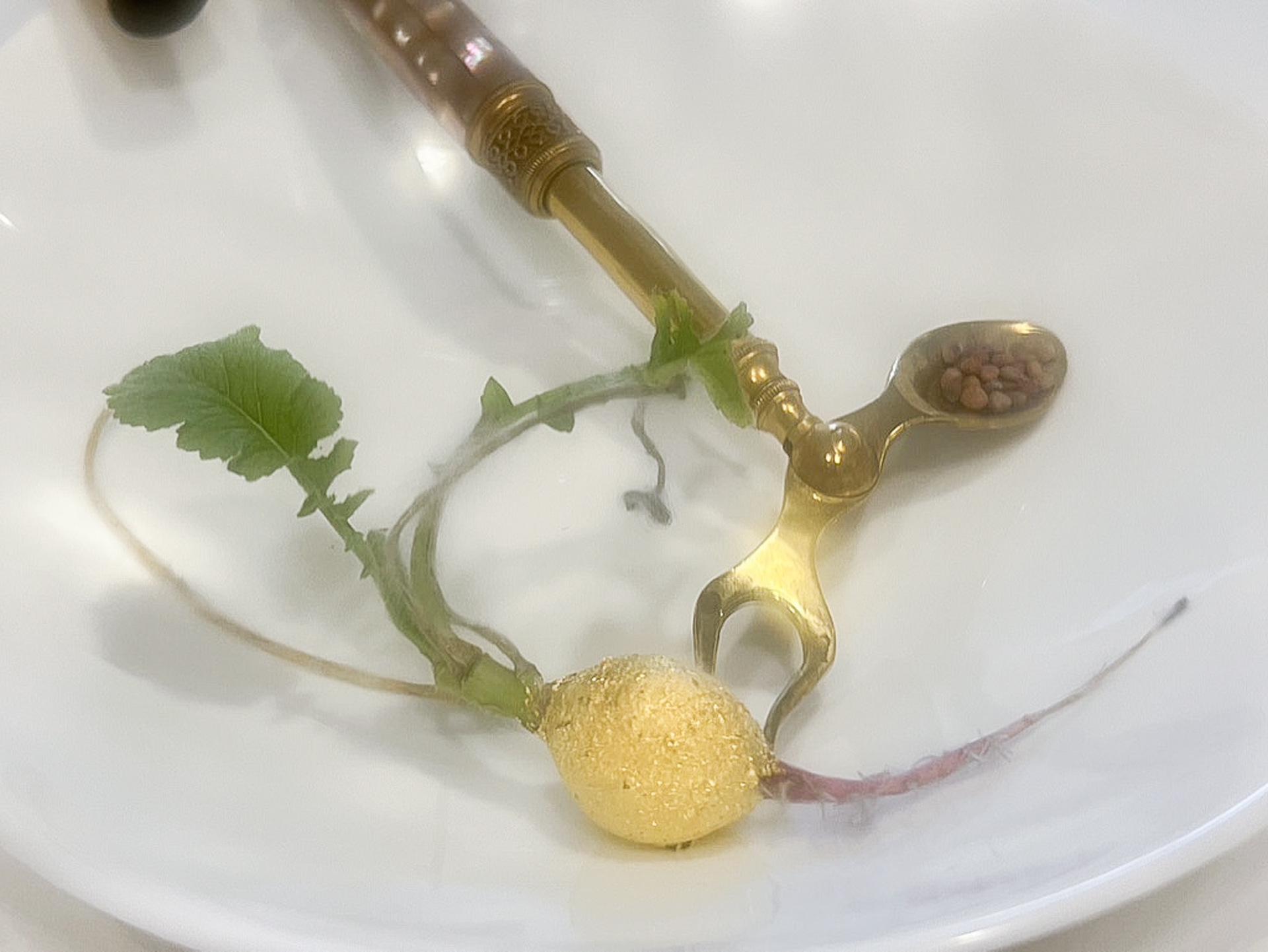

Furrow Seed Stories
Hand-engraved seeds
Each container approx 4 x 6 x 6"
Seeds are fundamental units in our relationship with food, agriculture, and the natural environment. On both physical and symbolic levels, seeds collectively carry the history of complex motives and consequences of plant domestication. Seeds have been both silent witnesses and active participants in waves of travels and migrations, growth and decline, and individual and societal transformations. Seeds are also records of more personal stories of people or families that cultivated them for generations. Such diversity and richness in the deeply rooted relationships of people and seeds remain mostly silent, physically, and figuratively locked inside the coat of each seed. By traveling the country and connecting with a multitude of people and organizations that contribute to seed advocacy, the Furrow project seeks to make those often-compelling stories visible, to externalize and memorialize the contributions of professional and enthusiast growers, breeders, and seed-savers. The nature of the artist's hand guiding a cutting tool and creating a miniature furrow in a shell of a seed alludes to a farmer's plow piercing through the top layer of soil, releasing nutrients and jump-starting a cycle of growth. The symbolic act of piercing through the seed coat to uncover the information contained within is coupled with the physical function of helping it germinate if planted. The motifs are based on stories relevant to the nature of specific seeds and the people or organizations who provide them.
Descriptions of the seeds in containers (left to right):
1. American Chestnut, Illustrating the various methods for breeding a blight-resistant Castanea Dentata tree species, engraved on chestnuts
2. Antique Atlas, made for True-Love Seeds company, on Fava bean
3. Hudson Valley Farms, seed motifs; Clockwise from top:
Mill-stone movements, for Wild Hive Farm on Adlay's millet seed.
Logotype, for Phillies Bridge Farm Project on Blue Hopi maize kernel.
Three Sisters, for Native American Seed Sanctuary at the Hudson Valley Farm Hub on Red Maize kernel. Logotype, for Rondout Valley Growers Association on Hank's X-tra Special Baking bean.
Life-forces, for Long Season Farm on Otto File Flint maize kernel.
Memory, for Maynard Orchard on Macoun Apple seed.
Center: Tome, for Hudson Valley Seed Company on Butternut Squash seed.
4. Watershed, private commission, on Pawpaw seed.
5. Farming Soils of the Rondout Valley, Silt-loam soil horizons/strata on tiger beans.
Hand-engraved seeds
Each container approx 4 x 6 x 6"
Seeds are fundamental units in our relationship with food, agriculture, and the natural environment. On both physical and symbolic levels, seeds collectively carry the history of complex motives and consequences of plant domestication. Seeds have been both silent witnesses and active participants in waves of travels and migrations, growth and decline, and individual and societal transformations. Seeds are also records of more personal stories of people or families that cultivated them for generations. Such diversity and richness in the deeply rooted relationships of people and seeds remain mostly silent, physically, and figuratively locked inside the coat of each seed. By traveling the country and connecting with a multitude of people and organizations that contribute to seed advocacy, the Furrow project seeks to make those often-compelling stories visible, to externalize and memorialize the contributions of professional and enthusiast growers, breeders, and seed-savers. The nature of the artist's hand guiding a cutting tool and creating a miniature furrow in a shell of a seed alludes to a farmer's plow piercing through the top layer of soil, releasing nutrients and jump-starting a cycle of growth. The symbolic act of piercing through the seed coat to uncover the information contained within is coupled with the physical function of helping it germinate if planted. The motifs are based on stories relevant to the nature of specific seeds and the people or organizations who provide them.
Descriptions of the seeds in containers (left to right):
1. American Chestnut, Illustrating the various methods for breeding a blight-resistant Castanea Dentata tree species, engraved on chestnuts
2. Antique Atlas, made for True-Love Seeds company, on Fava bean
3. Hudson Valley Farms, seed motifs; Clockwise from top:
Mill-stone movements, for Wild Hive Farm on Adlay's millet seed.
Logotype, for Phillies Bridge Farm Project on Blue Hopi maize kernel.
Three Sisters, for Native American Seed Sanctuary at the Hudson Valley Farm Hub on Red Maize kernel. Logotype, for Rondout Valley Growers Association on Hank's X-tra Special Baking bean.
Life-forces, for Long Season Farm on Otto File Flint maize kernel.
Memory, for Maynard Orchard on Macoun Apple seed.
Center: Tome, for Hudson Valley Seed Company on Butternut Squash seed.
4. Watershed, private commission, on Pawpaw seed.
5. Farming Soils of the Rondout Valley, Silt-loam soil horizons/strata on tiger beans.














Kite and Robbie Wing
http://kitekitekitekite.com/
@kitekitekitekitekite
http://robbiewing.com/
@wingrobbie
Owákhitȟaŋiŋ
8-channel sound installation
12 minutes and 16 seconds
Field recordings taken at dusk and dawn in the Stover Tióšpaye, near No Flesh Creek and Kyle Dam in Kyle, South Dakota.
8-channel sound installation
12 minutes and 16 seconds
Field recordings taken at dusk and dawn in the Stover Tióšpaye, near No Flesh Creek and Kyle Dam in Kyle, South Dakota.





Nuŋȟwáuŋzazapi (We Only Hear Snatches of What is Said)
Framed photograph
3 x 4'
Image of taking field recordings taken at dusk and dawn in the Stover Tióšpaye, near No Flesh Creek and Kyle Dam in Kyle, South Dakota.
Framed photograph
3 x 4'
Image of taking field recordings taken at dusk and dawn in the Stover Tióšpaye, near No Flesh Creek and Kyle Dam in Kyle, South Dakota.


Knot of Flows 1 and Knot of Flows 2
Acrylic on linen
26 x 21 x 1”
Knot of Flows is a metaphor image that challenges our relationship with time. Shaped as a thread of little rocks with the background color palette of the Hudson River, the knot of flows is portrayed to be a prayer on a body of water, to affirm our interconnectedness with the landscape that goes beyond rationality and cartesian frameworks of existence.
26 x 21 x 1”
Knot of Flows is a metaphor image that challenges our relationship with time. Shaped as a thread of little rocks with the background color palette of the Hudson River, the knot of flows is portrayed to be a prayer on a body of water, to affirm our interconnectedness with the landscape that goes beyond rationality and cartesian frameworks of existence.


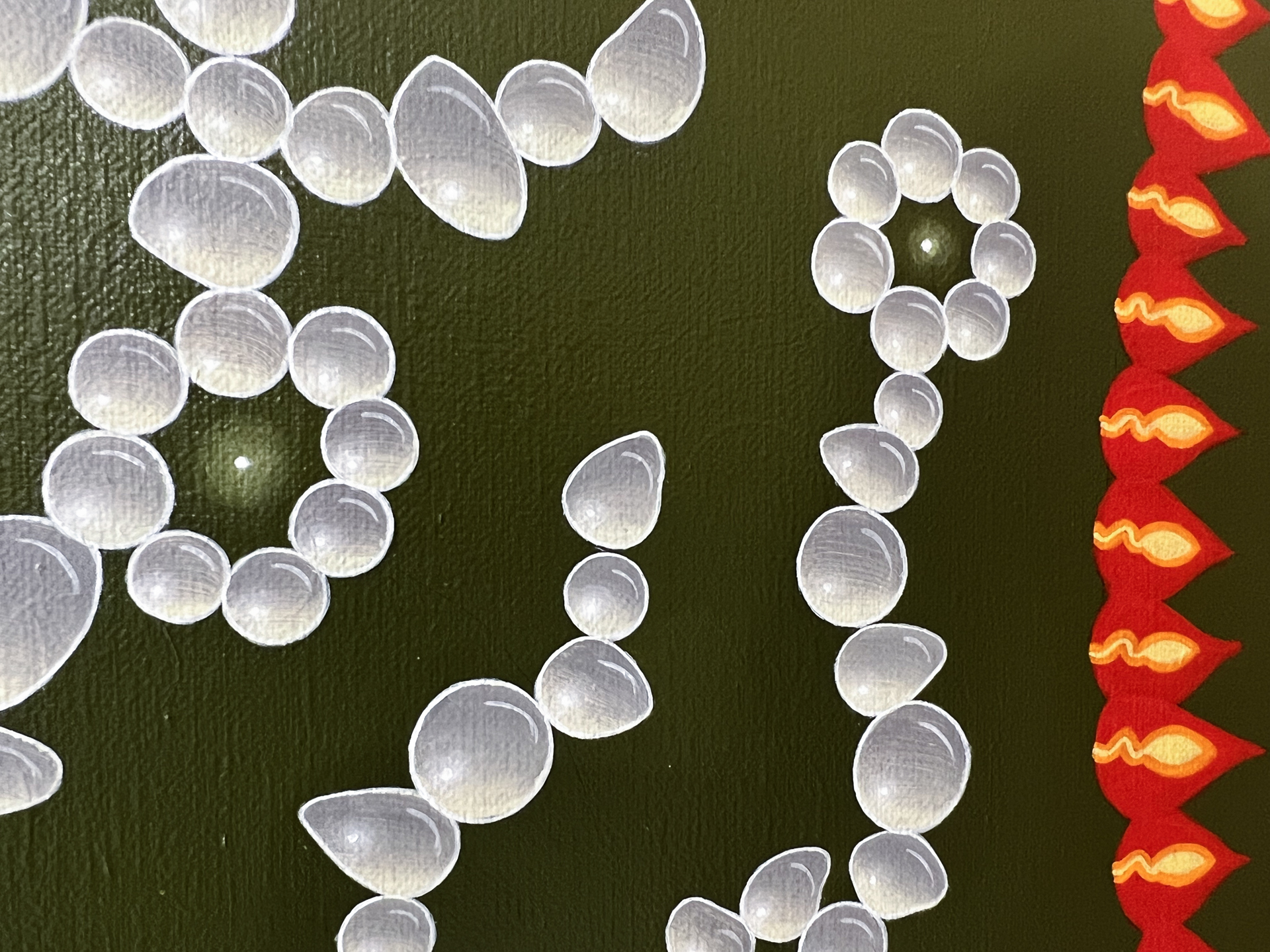




34.45553,-103.0077549 and 34.233707,-103.084940
Acrylic on canvas, embroidery thread on canvas
26 x 39”
Acrylic on canvas
30 x 39”
Finding aesthetic value in utilitarian forms, the Transitional Spaces series takes its inspiration from the landscape and Ogallala Aquifer in the Great Plains region of the United States where groundwater pivot irrigation is widely used to support industrial agriculture. Referencing satellite imagery, circles from irrigation, squares delineated by roadways, and the repeated linear elements of plowed fields are drawn upon for inherent colors, forms, patterns, and textures. These repeated geometric forms cover thousands of square miles. When flying over this region, the marks of human intervention are on stark view and can be seen and experienced in ways not noticeable from the ground. The sheer scale is awe inspiring and unsettling. Through the process of groundwater pivot irrigation, the extractive demands of industrial agriculture are draining the Ogallala Aquifer far more quickly than it can be naturally replenished. This interdisciplinary body of work explores the paradox of technological optimism within the framework of 21st century capitalist production in relation to the food supply we’re all dependent on.
Water is a key element in the acrylic paintings on canvas, as thin watery layers of pigment are applied to build up the surface in each work. In addition to the painting process, hand embroidery is also incorporated into two of the works on canvas. The embroidery thread is created by unraveling sheets of canvas, allowing the painting’s support to play an important aesthetic and metaphorical role, as the underlying material is literally consumed for the works creation, paralleling the processes of extractive groundwater irrigation. Through the unseen and meticulous process of unraveling canvas, collecting numerous threads, then hand-stitching linear embroidery patterns to reference the linear patterns created through plowing, planting, and harvesting crops, my artistic labor also stands in solidarity with workers doing difficult physical and unseen labor.
Acrylic on canvas, embroidery thread on canvas
26 x 39”
Acrylic on canvas
30 x 39”
Finding aesthetic value in utilitarian forms, the Transitional Spaces series takes its inspiration from the landscape and Ogallala Aquifer in the Great Plains region of the United States where groundwater pivot irrigation is widely used to support industrial agriculture. Referencing satellite imagery, circles from irrigation, squares delineated by roadways, and the repeated linear elements of plowed fields are drawn upon for inherent colors, forms, patterns, and textures. These repeated geometric forms cover thousands of square miles. When flying over this region, the marks of human intervention are on stark view and can be seen and experienced in ways not noticeable from the ground. The sheer scale is awe inspiring and unsettling. Through the process of groundwater pivot irrigation, the extractive demands of industrial agriculture are draining the Ogallala Aquifer far more quickly than it can be naturally replenished. This interdisciplinary body of work explores the paradox of technological optimism within the framework of 21st century capitalist production in relation to the food supply we’re all dependent on.
Water is a key element in the acrylic paintings on canvas, as thin watery layers of pigment are applied to build up the surface in each work. In addition to the painting process, hand embroidery is also incorporated into two of the works on canvas. The embroidery thread is created by unraveling sheets of canvas, allowing the painting’s support to play an important aesthetic and metaphorical role, as the underlying material is literally consumed for the works creation, paralleling the processes of extractive groundwater irrigation. Through the unseen and meticulous process of unraveling canvas, collecting numerous threads, then hand-stitching linear embroidery patterns to reference the linear patterns created through plowing, planting, and harvesting crops, my artistic labor also stands in solidarity with workers doing difficult physical and unseen labor.







34.200845,-103.156917
Acrylic on canvas, embroidery thread on canvas
34 x 45”
Finding aesthetic value in utilitarian forms, the Transitional Spaces series takes its inspiration from the landscape and Ogallala Aquifer in the Great Plains region of the United States where groundwater pivot irrigation is widely used to support industrial agriculture. Referencing satellite imagery, circles from irrigation, squares delineated by roadways, and the repeated linear elements of plowed fields are drawn upon for inherent colors, forms, patterns, and textures. These repeated geometric forms cover thousands of square miles. When flying over this region, the marks of human intervention are on stark view and can be seen and experienced in ways not noticeable from the ground. The sheer scale is awe inspiring and unsettling. Through the process of groundwater pivot irrigation, the extractive demands of industrial agriculture are draining the Ogallala Aquifer far more quickly than it can be naturally replenished. This interdisciplinary body of work explores the paradox of technological optimism within the framework of 21st century capitalist production in relation to the food supply we’re all dependent on.
Water is a key element in the acrylic paintings on canvas, as thin watery layers of pigment are applied to build up the surface in each work. In addition to the painting process, hand embroidery is also incorporated into two of the works on canvas. The embroidery thread is created by unraveling sheets of canvas, allowing the painting’s support to play an important aesthetic and metaphorical role, as the underlying material is literally consumed for the works creation, paralleling the processes of extractive groundwater irrigation. Through the unseen and meticulous process of unraveling canvas, collecting numerous threads, then hand-stitching linear embroidery patterns to reference the linear patterns created through plowing, planting, and harvesting crops, my artistic labor also stands in solidarity with workers doing difficult physical and unseen labor.
Acrylic on canvas, embroidery thread on canvas
34 x 45”
Finding aesthetic value in utilitarian forms, the Transitional Spaces series takes its inspiration from the landscape and Ogallala Aquifer in the Great Plains region of the United States where groundwater pivot irrigation is widely used to support industrial agriculture. Referencing satellite imagery, circles from irrigation, squares delineated by roadways, and the repeated linear elements of plowed fields are drawn upon for inherent colors, forms, patterns, and textures. These repeated geometric forms cover thousands of square miles. When flying over this region, the marks of human intervention are on stark view and can be seen and experienced in ways not noticeable from the ground. The sheer scale is awe inspiring and unsettling. Through the process of groundwater pivot irrigation, the extractive demands of industrial agriculture are draining the Ogallala Aquifer far more quickly than it can be naturally replenished. This interdisciplinary body of work explores the paradox of technological optimism within the framework of 21st century capitalist production in relation to the food supply we’re all dependent on.
Water is a key element in the acrylic paintings on canvas, as thin watery layers of pigment are applied to build up the surface in each work. In addition to the painting process, hand embroidery is also incorporated into two of the works on canvas. The embroidery thread is created by unraveling sheets of canvas, allowing the painting’s support to play an important aesthetic and metaphorical role, as the underlying material is literally consumed for the works creation, paralleling the processes of extractive groundwater irrigation. Through the unseen and meticulous process of unraveling canvas, collecting numerous threads, then hand-stitching linear embroidery patterns to reference the linear patterns created through plowing, planting, and harvesting crops, my artistic labor also stands in solidarity with workers doing difficult physical and unseen labor.




Blood of Souls, Diadem of Kings and Love is a Form of Death
Monoprint on archival inkjet print
Since 2019 I’ve been collecting original 19th century landscape engravings typical of the representational idealism of the Hudson River School and altering them to include images of captured fugitive slaves and Underground Railroad caravans from anti- slavery tracts and illustrated abolitionist literature which are very close in historical contemporaneity to the original printed engravings. As an artist of mixed-race working in the Hudson Valley, my “a-Historical Landscapes” are a decolonizing strategy to interrogate art historical conventions and aim to serve as a corrective by filling the absences left by those dominant narratives.
Monoprint on archival inkjet print
Since 2019 I’ve been collecting original 19th century landscape engravings typical of the representational idealism of the Hudson River School and altering them to include images of captured fugitive slaves and Underground Railroad caravans from anti- slavery tracts and illustrated abolitionist literature which are very close in historical contemporaneity to the original printed engravings. As an artist of mixed-race working in the Hudson Valley, my “a-Historical Landscapes” are a decolonizing strategy to interrogate art historical conventions and aim to serve as a corrective by filling the absences left by those dominant narratives.

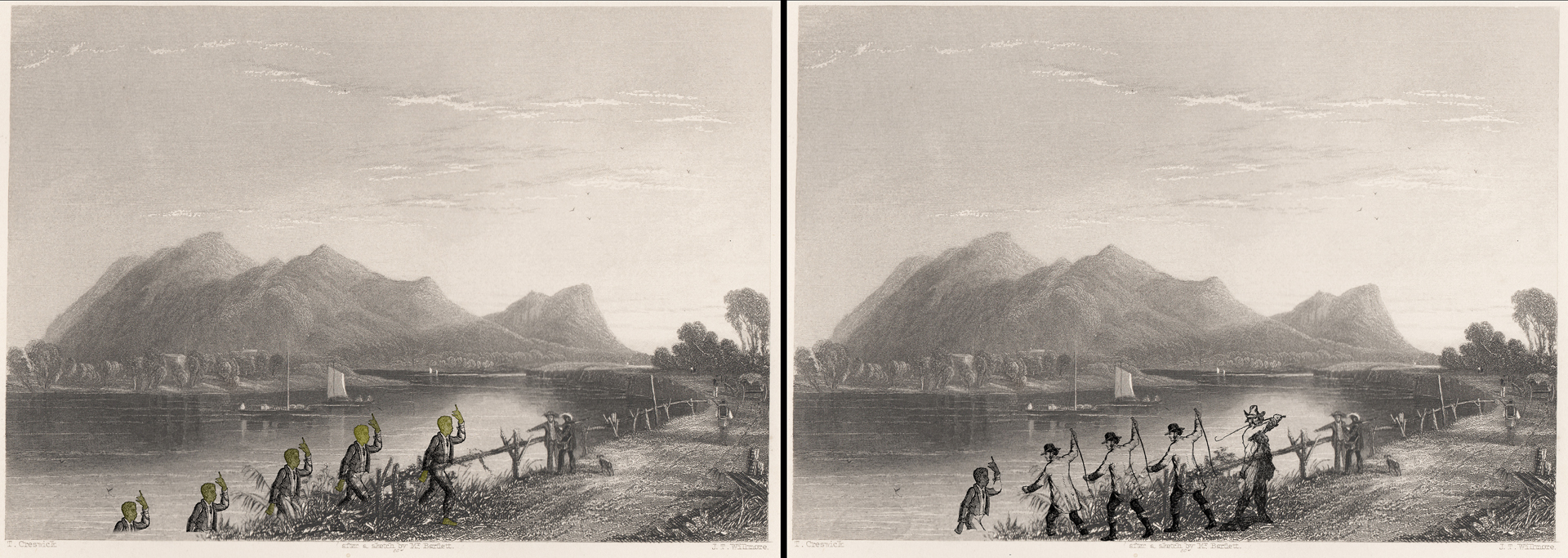





Wind Drawing #2 and Wind Drawing #12
Charcoal powder, Arches paper
12 x 15” framed
26 x 34 x 2” framed
The consistent theme of my work has been marking time through observable changes in natural phenomena. Invisible wind is seen only through its effects on other elements, in trees, for example. In this work, after stamping Arches paper with charcoal powder (made from charred wood), and allowing the wind to activate the powder, we see the wind’s movement across the paper and that movement is fixed in time. I note the speed and direction in graphite.
Charcoal powder, Arches paper
12 x 15” framed
26 x 34 x 2” framed
The consistent theme of my work has been marking time through observable changes in natural phenomena. Invisible wind is seen only through its effects on other elements, in trees, for example. In this work, after stamping Arches paper with charcoal powder (made from charred wood), and allowing the wind to activate the powder, we see the wind’s movement across the paper and that movement is fixed in time. I note the speed and direction in graphite.



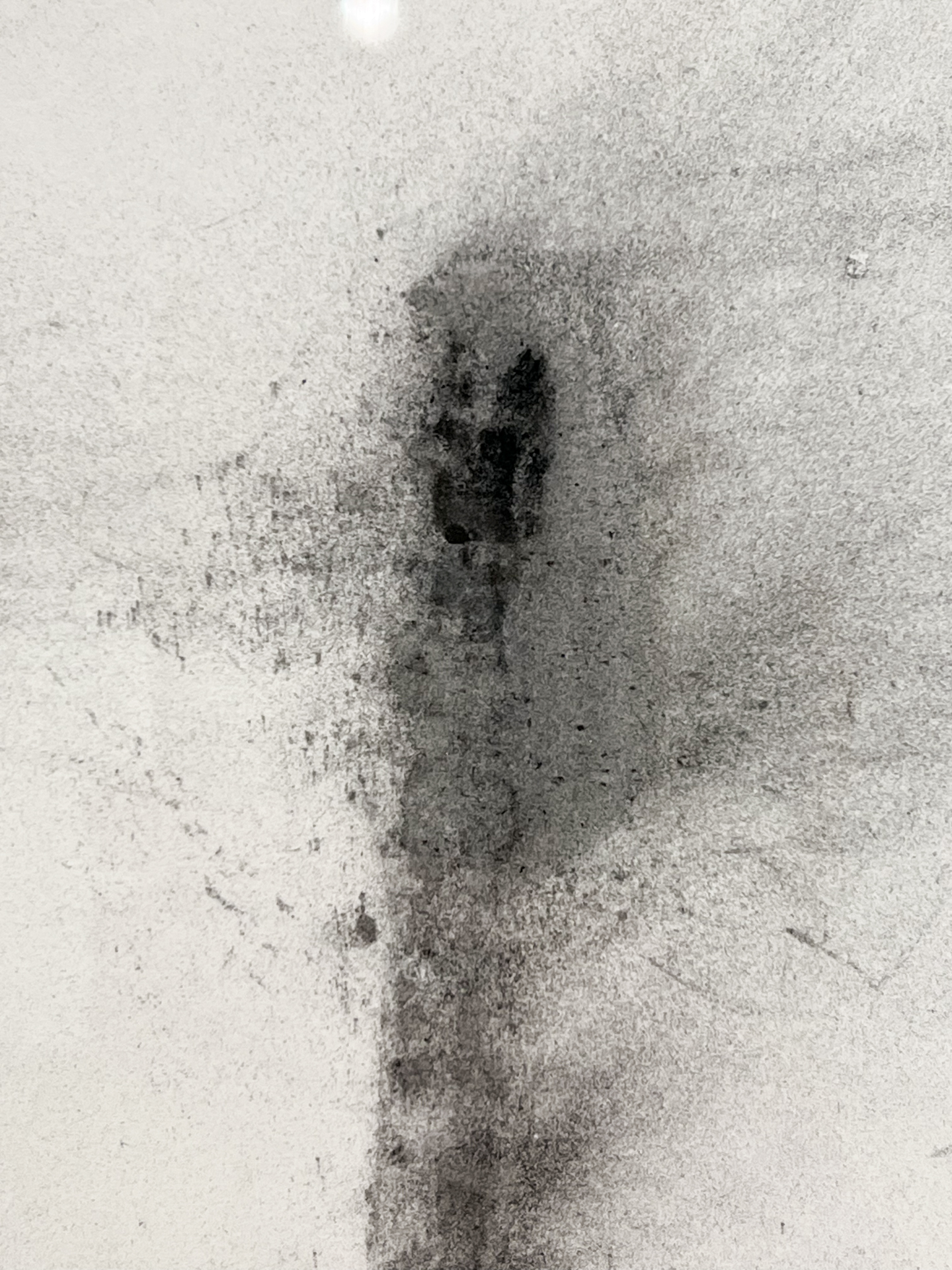
Time Story #13
Wood, paint, graphite, basalt stone from Hudson Valley
28 x 28 x 1”
The Time Story Series creates a map of potential observances of natural phenomena. The sculpture (of wood, paint, graphite, and local basalt stone), invites stories of deep-time stone, and shadows, along with wood and its tree-grain timelines. Anything that rests ephemerally on its surface is participant: for example, sunlight, leaves and wind, insects, etc. The first shadow is drawn (as graphite dashes) and invites a layering of new shadows to come. With artist as recorder, photographs are a complementary component to this work.
Wood, paint, graphite, basalt stone from Hudson Valley
28 x 28 x 1”
The Time Story Series creates a map of potential observances of natural phenomena. The sculpture (of wood, paint, graphite, and local basalt stone), invites stories of deep-time stone, and shadows, along with wood and its tree-grain timelines. Anything that rests ephemerally on its surface is participant: for example, sunlight, leaves and wind, insects, etc. The first shadow is drawn (as graphite dashes) and invites a layering of new shadows to come. With artist as recorder, photographs are a complementary component to this work.








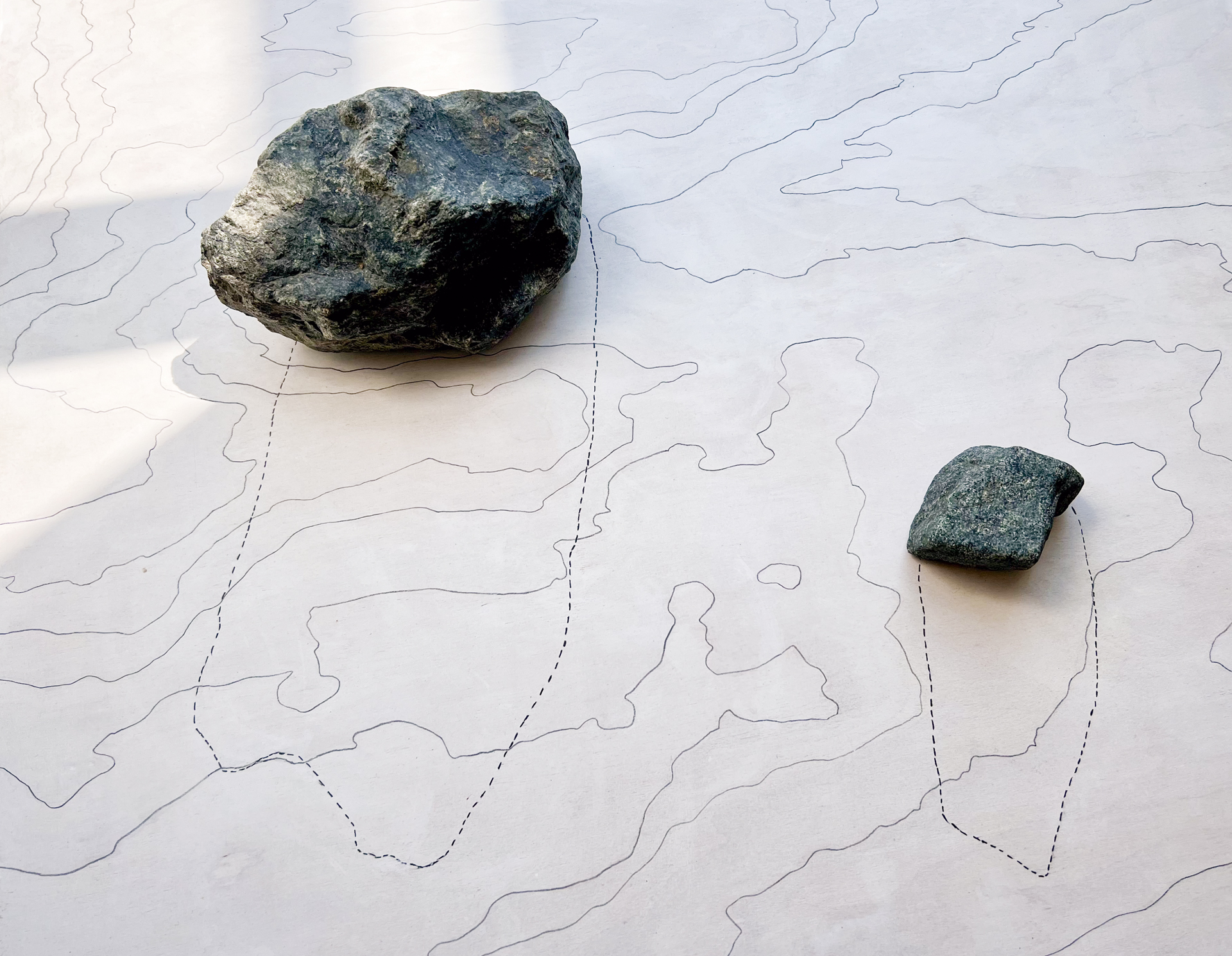

Liminal
Grapevine, sycamore, horse hair, thread
94 x 15 x 39”
Liminal is a threshold made from the once living bodies of plants and animals and the inert Cartesian planes of the built architecture we inhabit. The curvilinear line though organic is nevertheless constructed using simple joining techniques as is the scrim of hair. Liminal is a visual poem about portals belonging to a series of works Known/Not Known made during the time of my father’s passage from the living world.
Grapevine, sycamore, horse hair, thread
94 x 15 x 39”
Liminal is a threshold made from the once living bodies of plants and animals and the inert Cartesian planes of the built architecture we inhabit. The curvilinear line though organic is nevertheless constructed using simple joining techniques as is the scrim of hair. Liminal is a visual poem about portals belonging to a series of works Known/Not Known made during the time of my father’s passage from the living world.

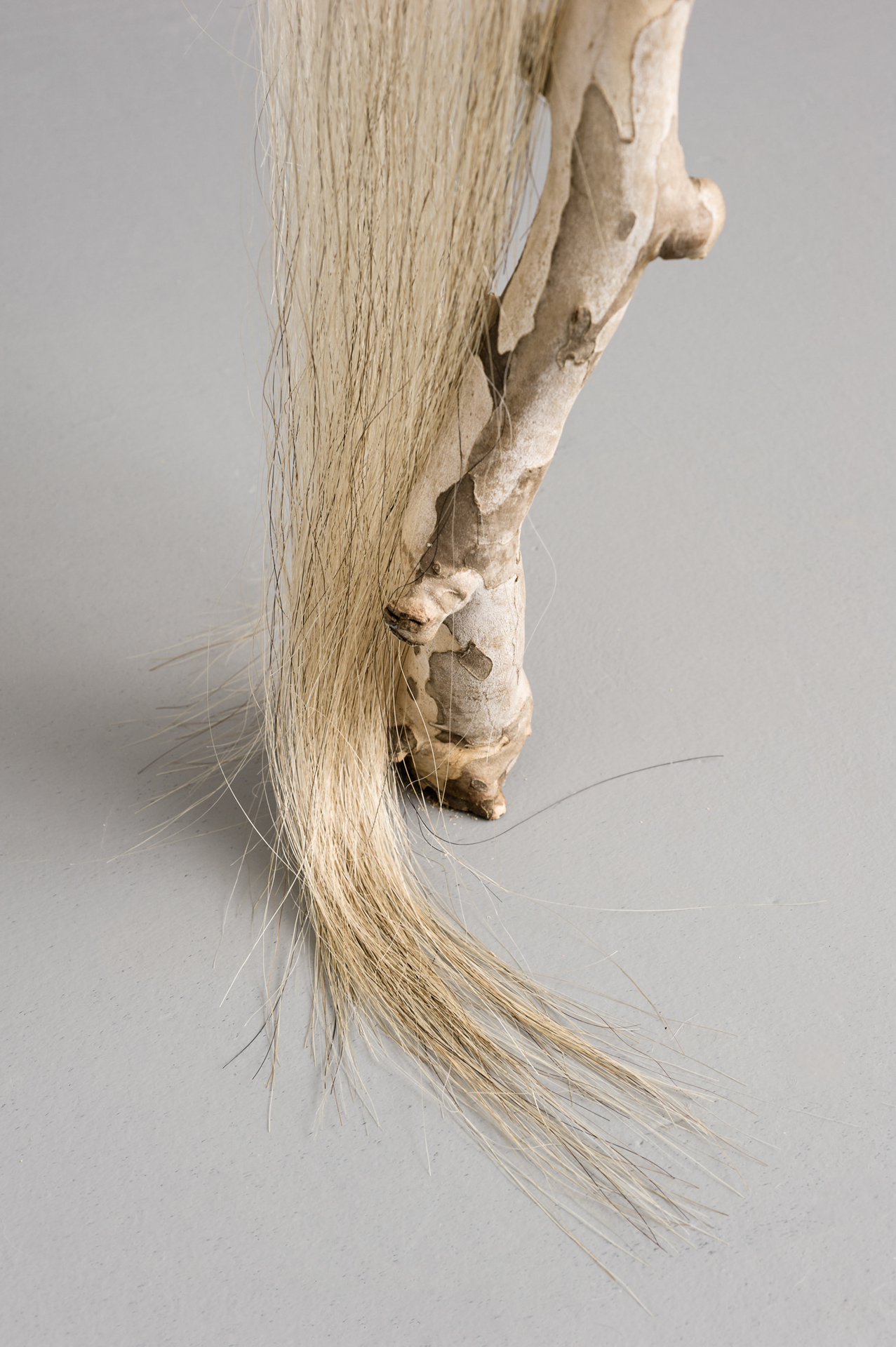
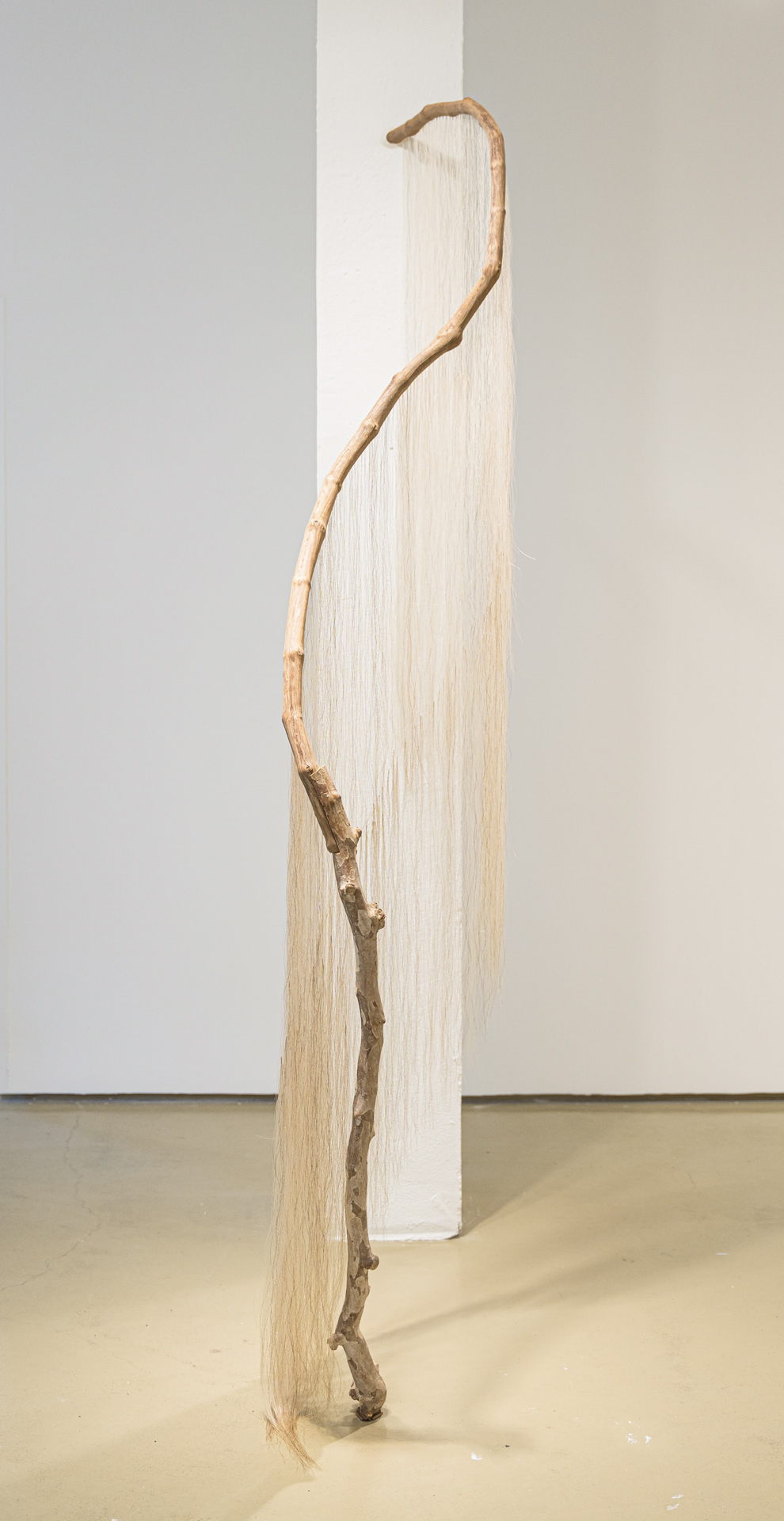


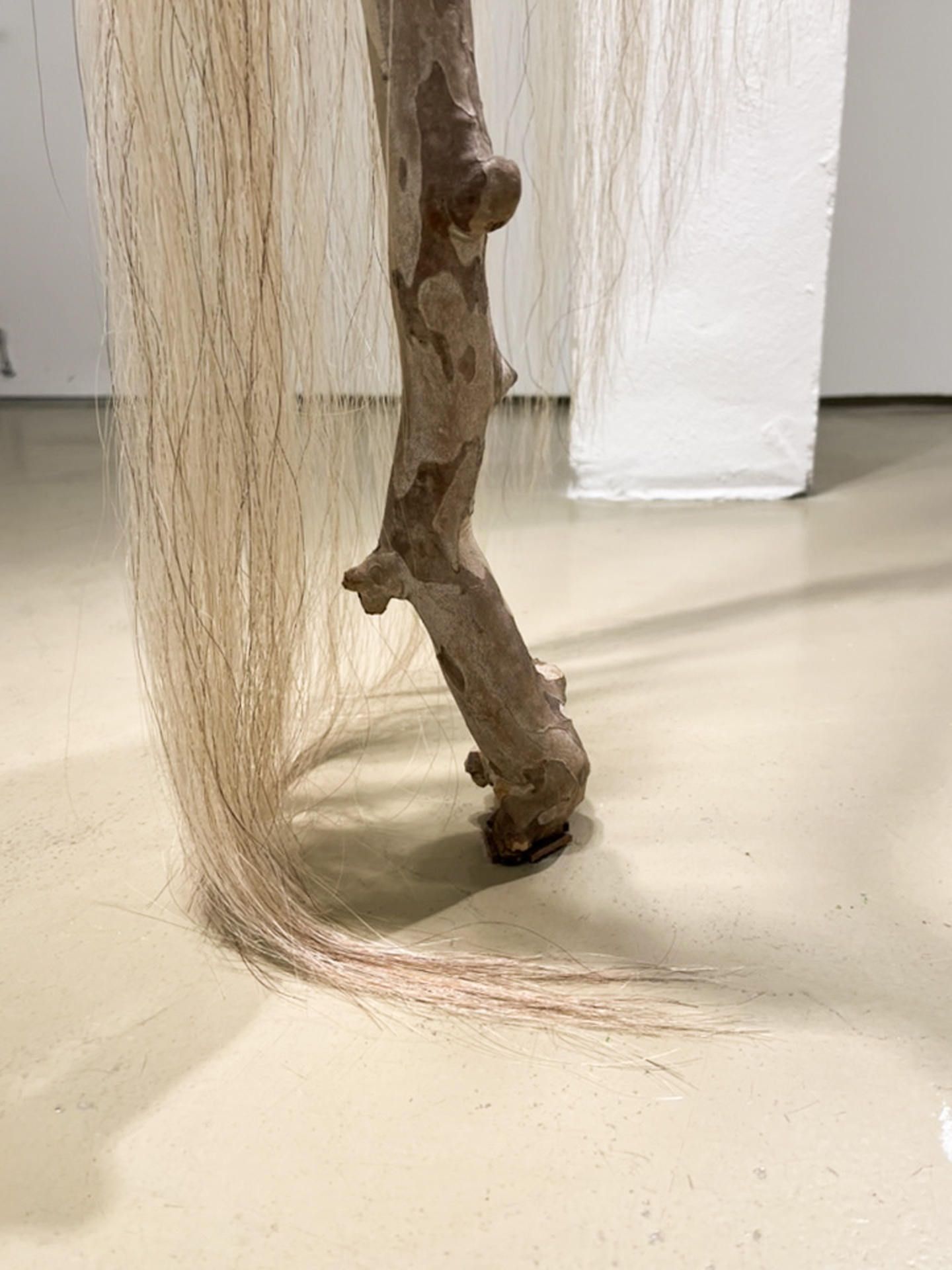

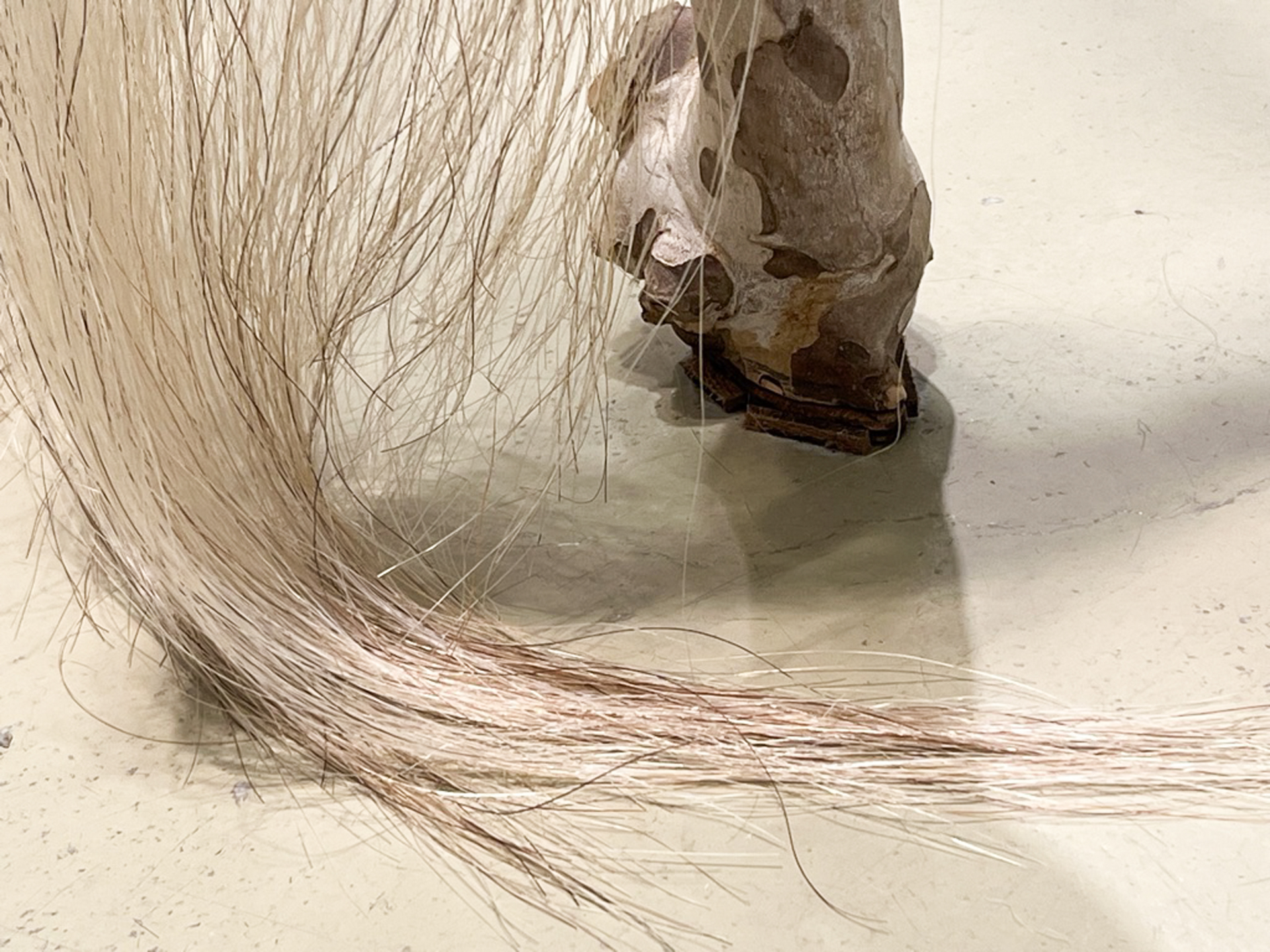

This Was My Home, My Body, My Voice
Wood, barbed wire, fur, roots, pencil, pigments
Height variable to 128 x 67 x 6”
The writing and counting marks that occur in the horizontal shadows of the barbed wire and within the ascending drawn line are of a language no longer known. The narrative continues to exist however. Drawn directly onto the wall, the current place and moment are implicated. The question of whose home/body/voice is underlined by the fur and roots tangled in the barbed wire, their textures barely distinguishable from the pencil marks and shadows. As I make the marks on the wall, I am a conduit for memory of stories of loss.
Wood, barbed wire, fur, roots, pencil, pigments
Height variable to 128 x 67 x 6”
The writing and counting marks that occur in the horizontal shadows of the barbed wire and within the ascending drawn line are of a language no longer known. The narrative continues to exist however. Drawn directly onto the wall, the current place and moment are implicated. The question of whose home/body/voice is underlined by the fur and roots tangled in the barbed wire, their textures barely distinguishable from the pencil marks and shadows. As I make the marks on the wall, I am a conduit for memory of stories of loss.




Three
Grapevine, horse hair
(Dimensions variable) Installation 125 x 140 x 84”
These three forms belong to a larger series When There Were Birds, an installation that has had as many as 13 suspended hair and vine forms in various iterations and performances since 2019. The work originated in response to the 2019 reporting of 3 billion birds - 29% of the population – vanished from North America since 1970.
Grapevine, horse hair
(Dimensions variable) Installation 125 x 140 x 84”
These three forms belong to a larger series When There Were Birds, an installation that has had as many as 13 suspended hair and vine forms in various iterations and performances since 2019. The work originated in response to the 2019 reporting of 3 billion birds - 29% of the population – vanished from North America since 1970.


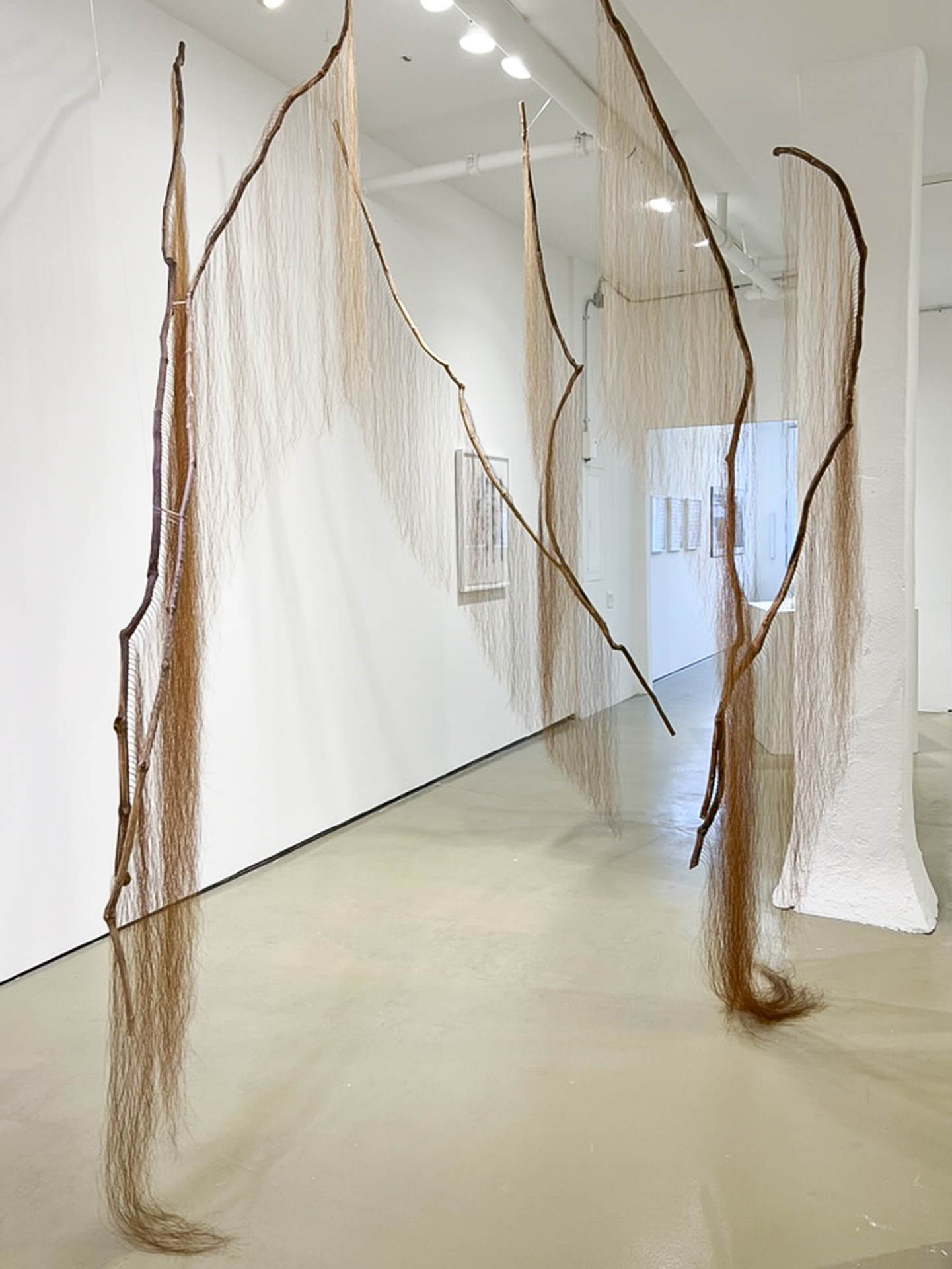
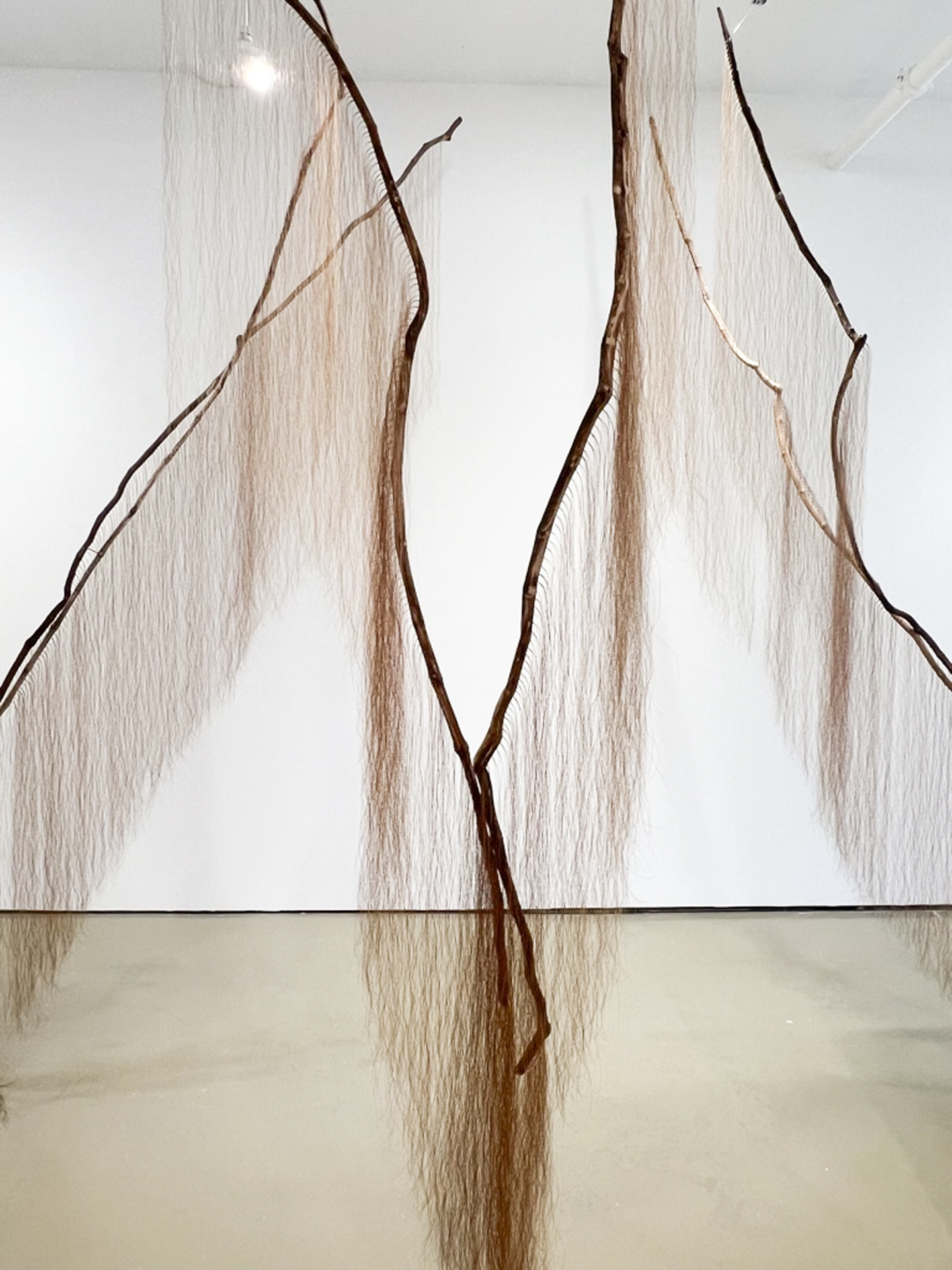



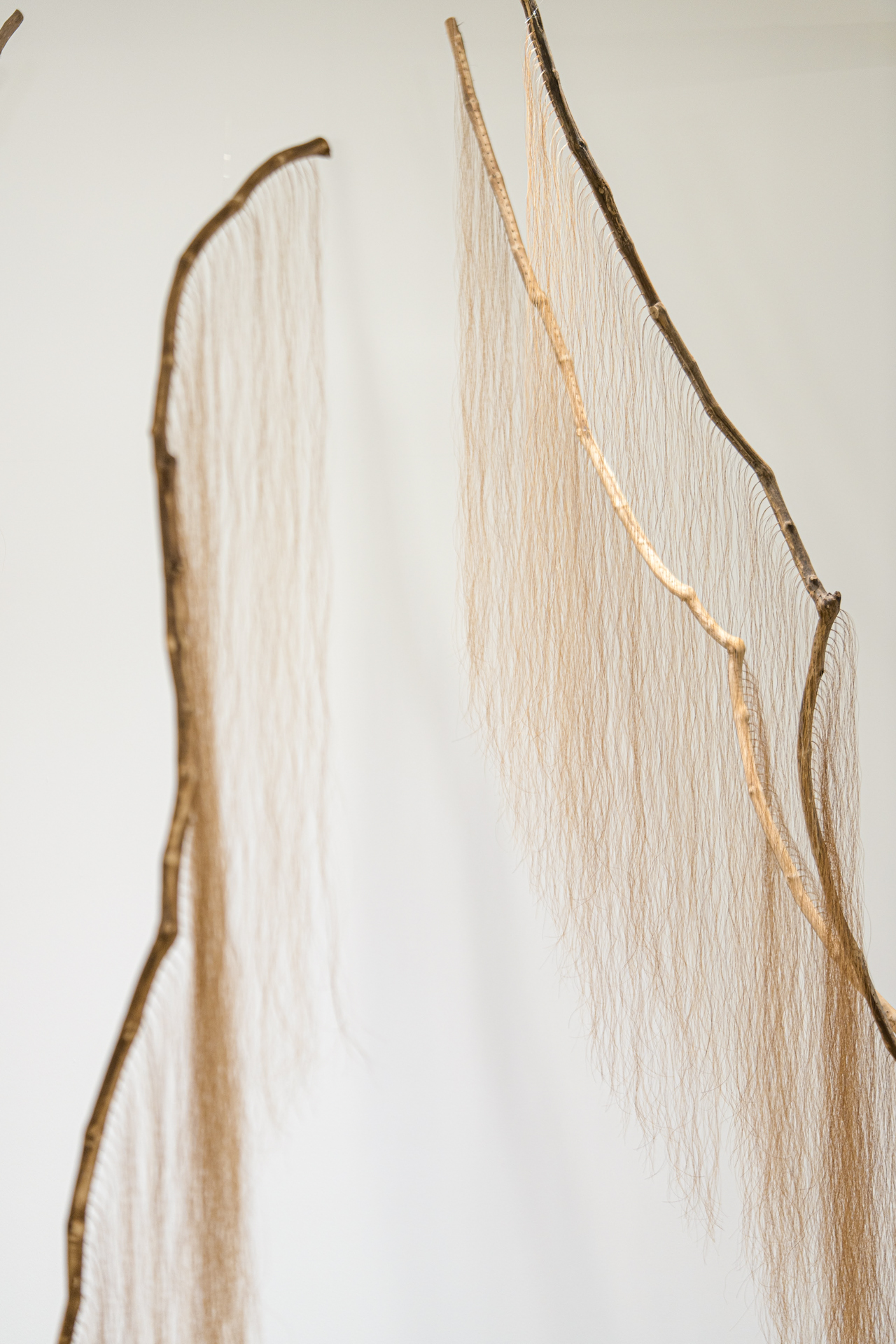

Press for Listening to Land
Warwick Advertiser, 13 June 2023
Upstate Art Weekend Journeys (Featured in ‘Route 4)
Highlands Current July 14 2023 (Donna Francis’ Mercy is featured)
Receptions & Gallery Talks

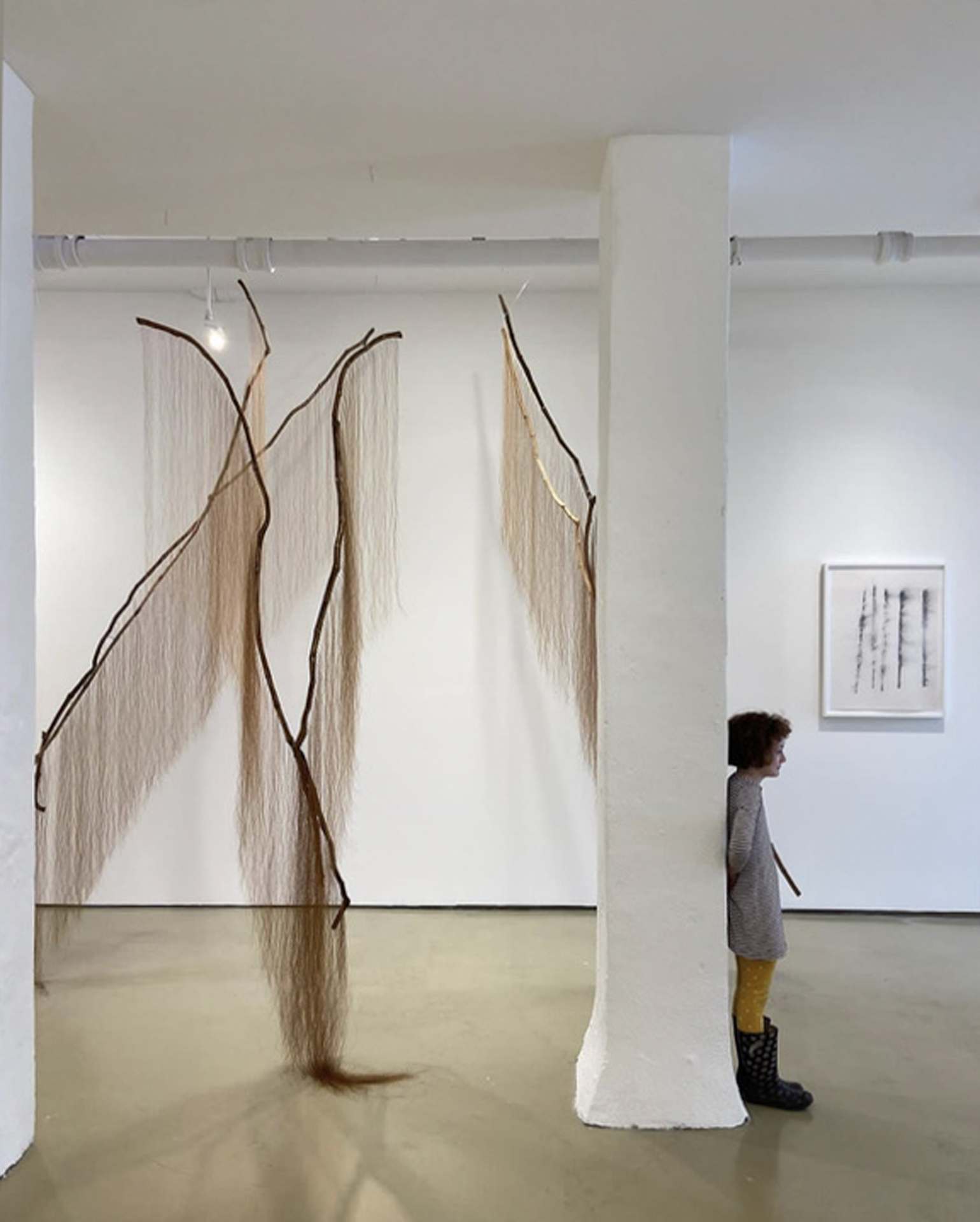




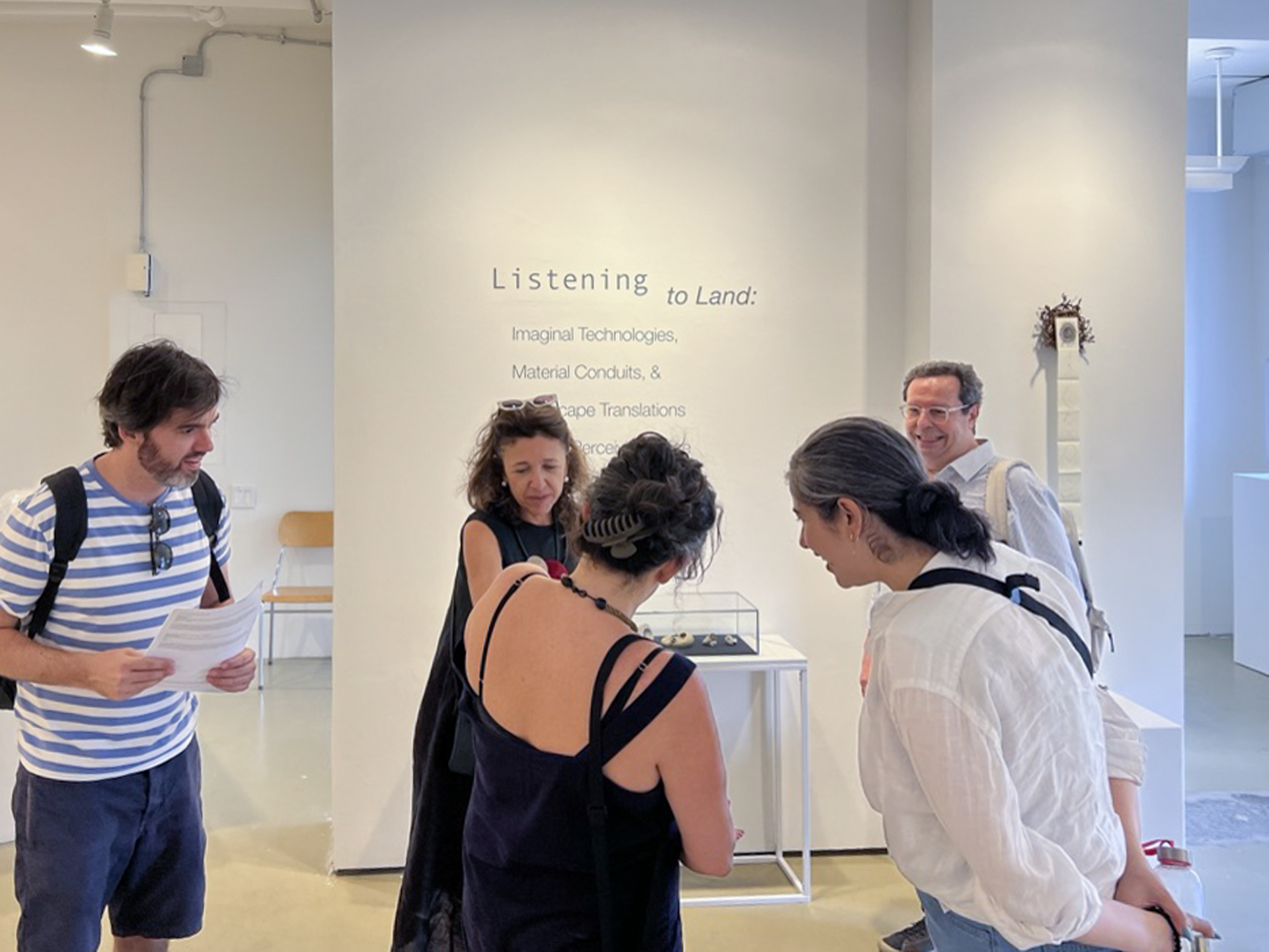
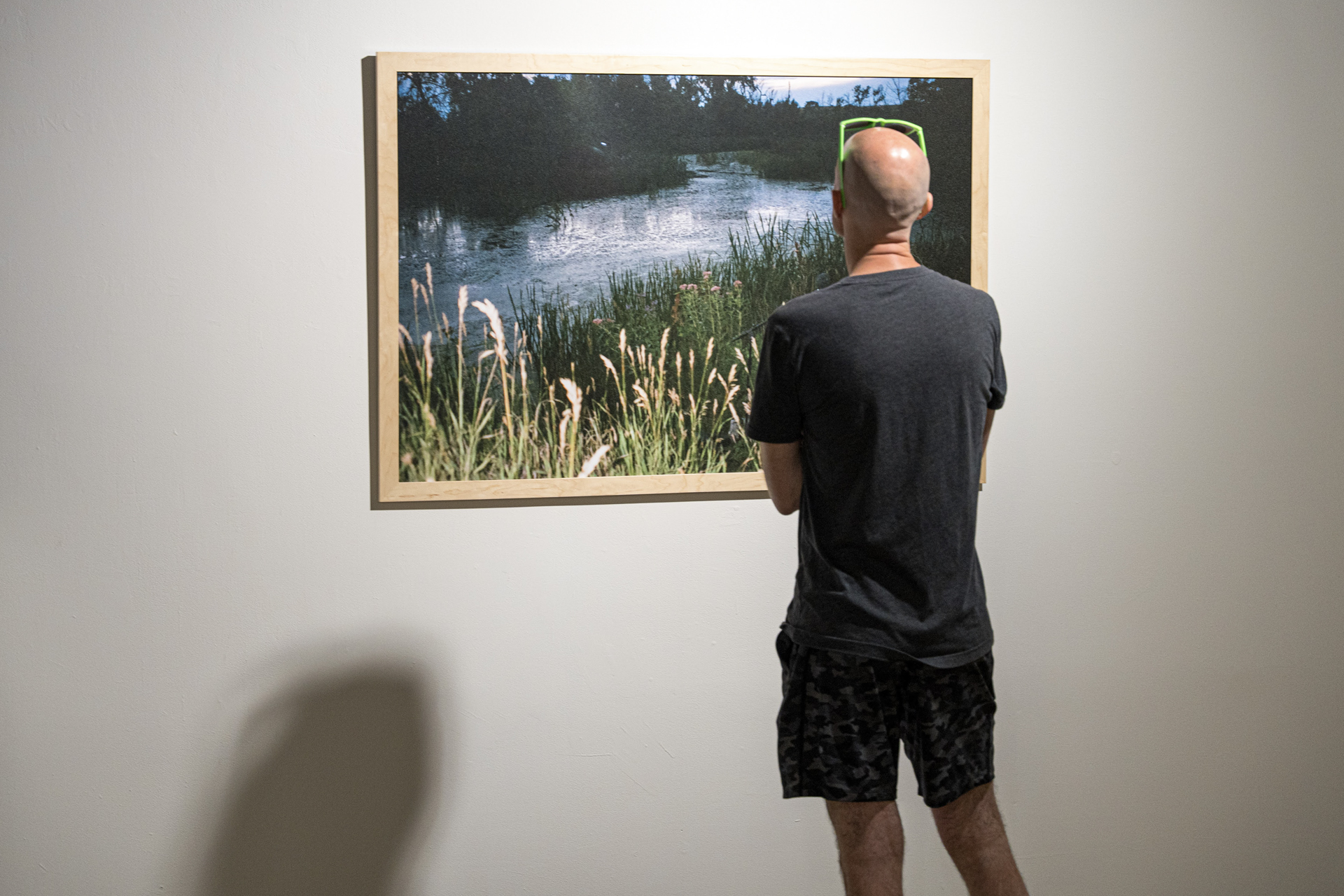



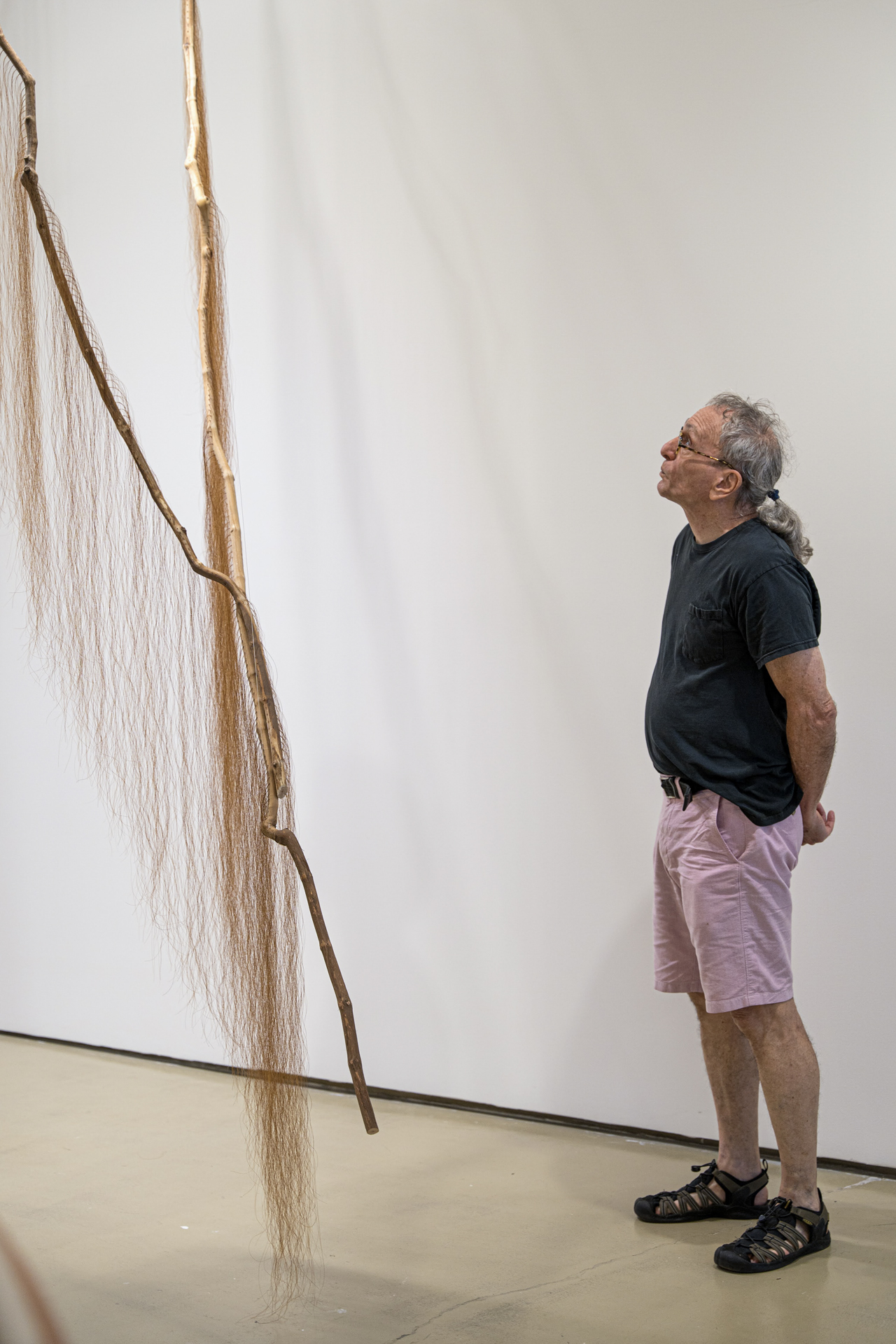


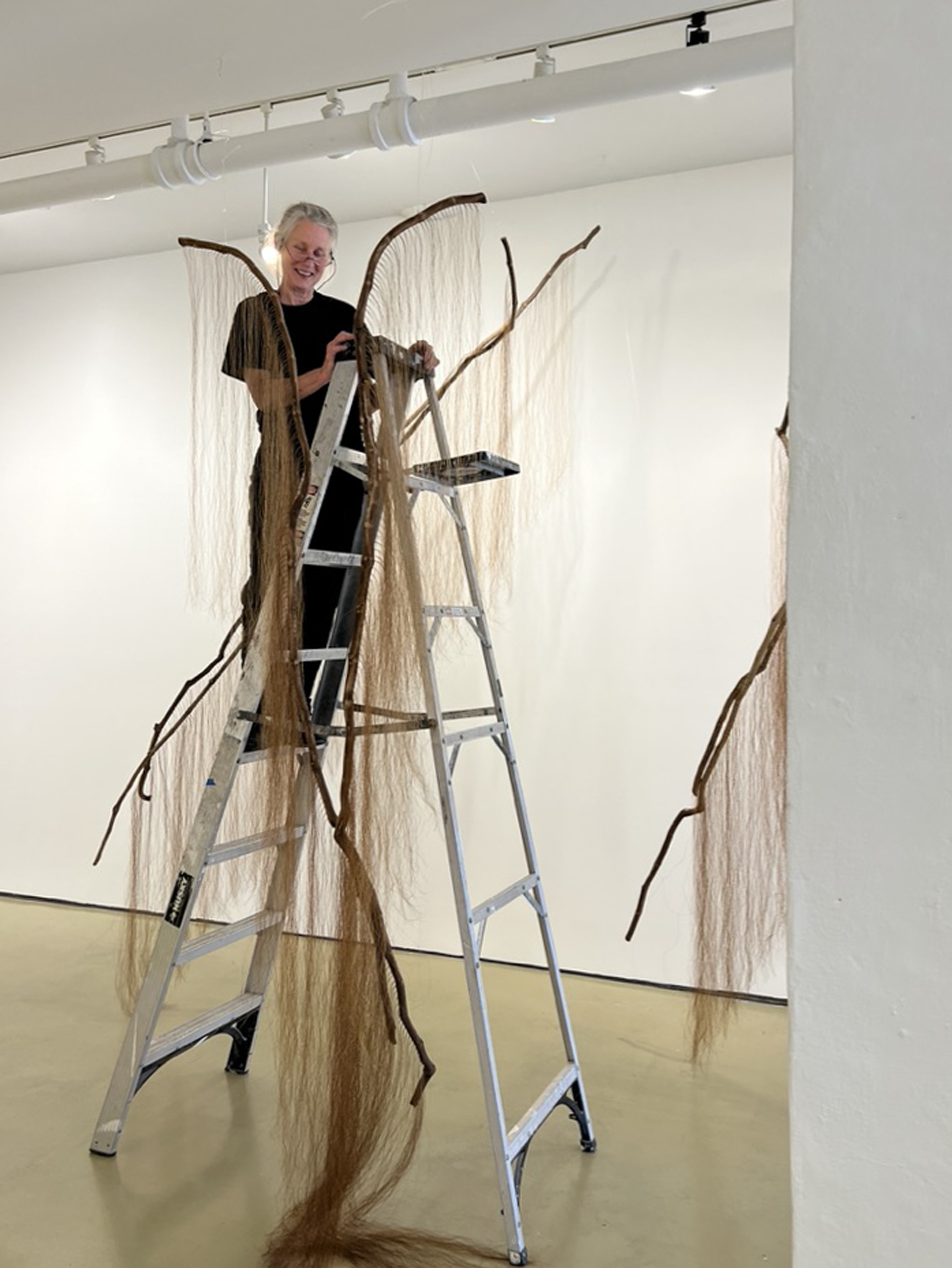
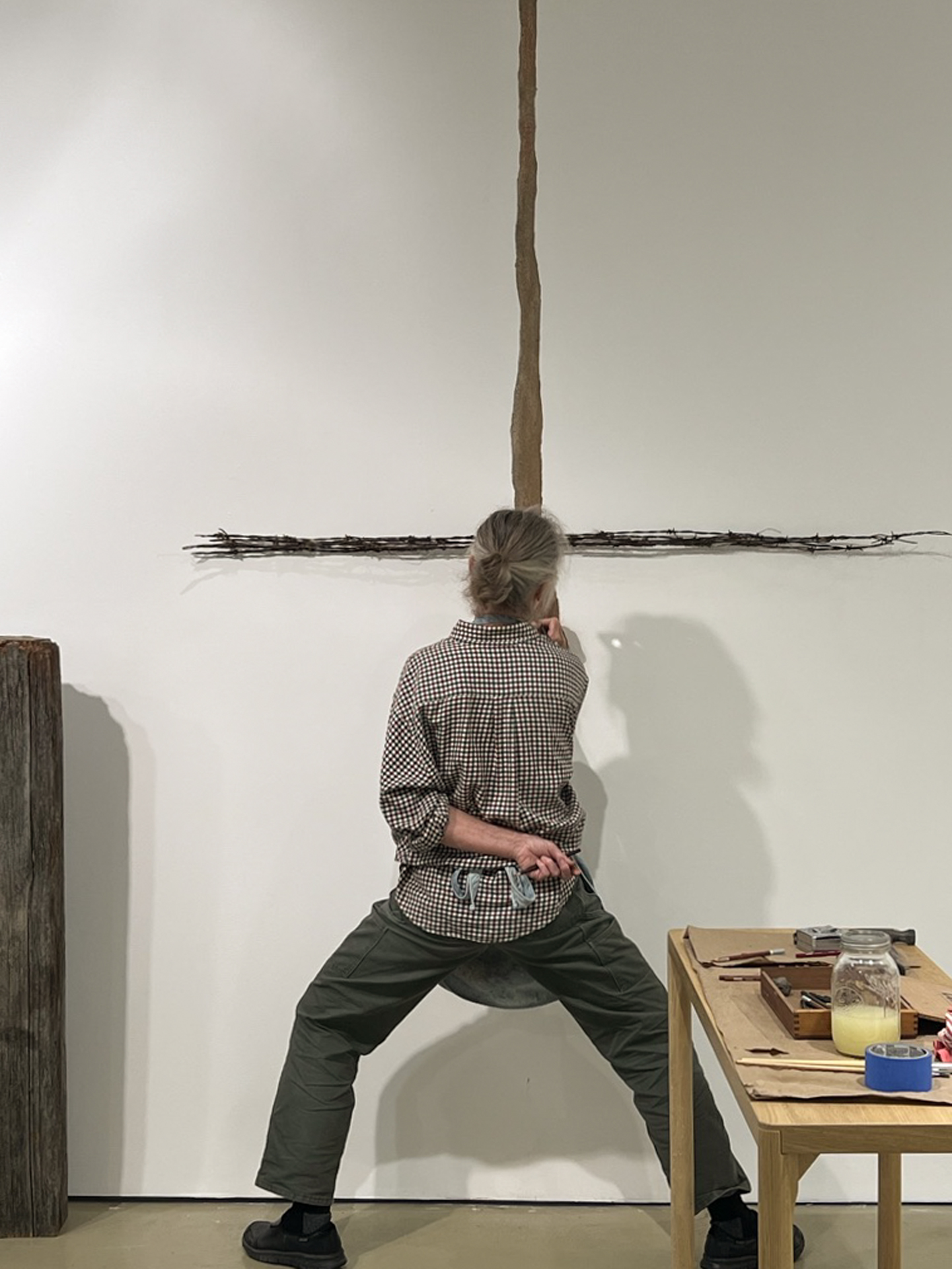



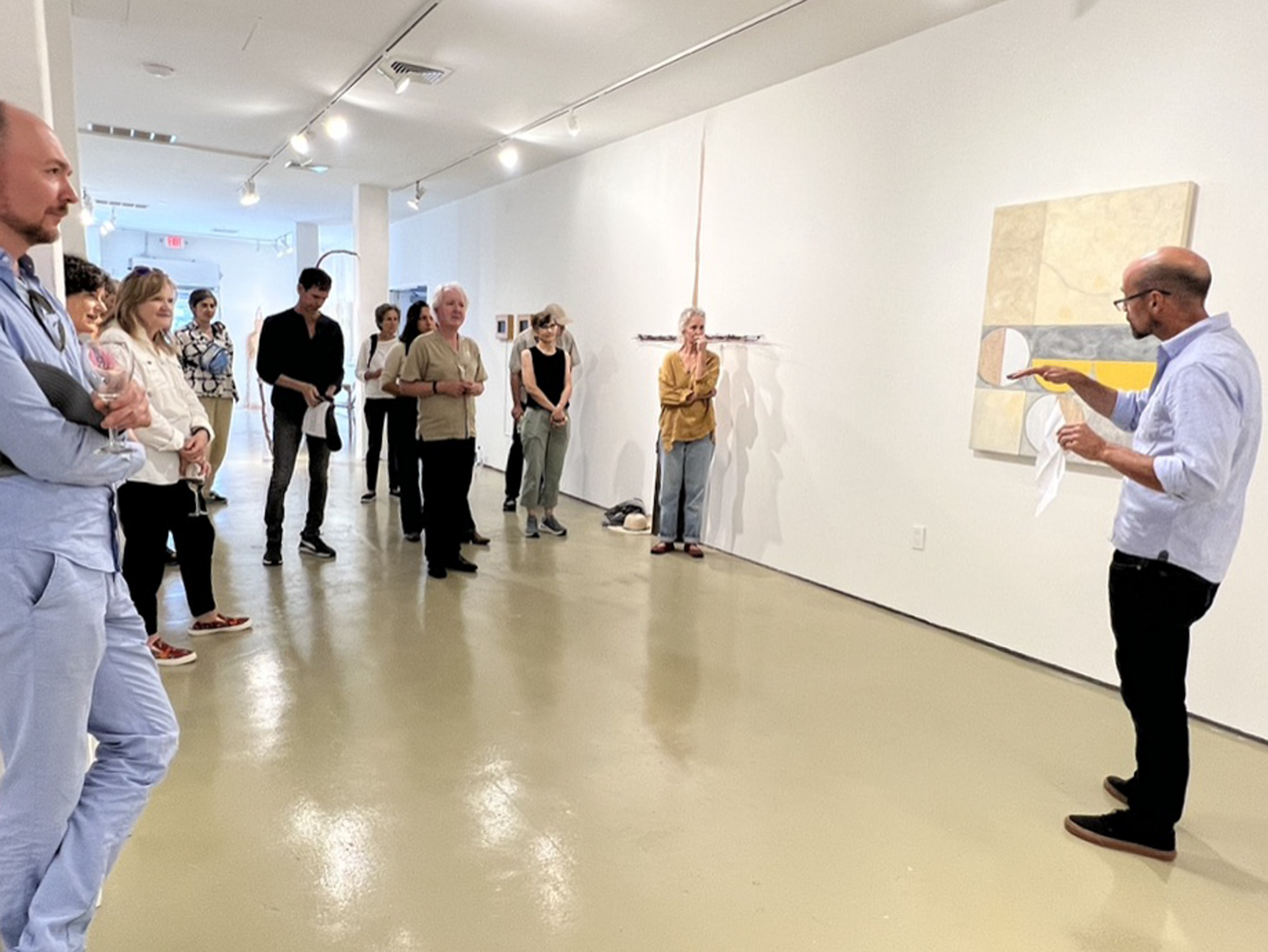

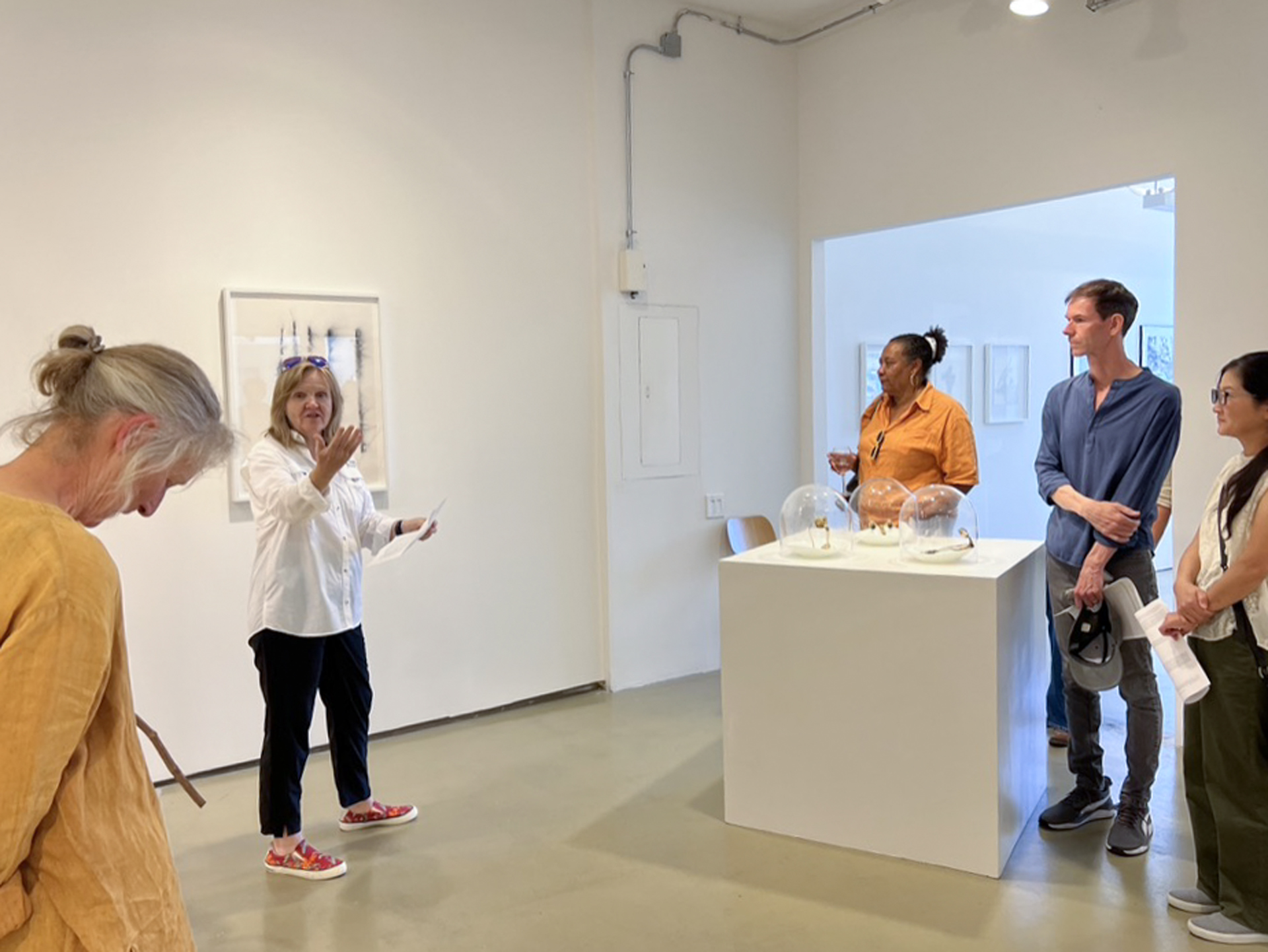



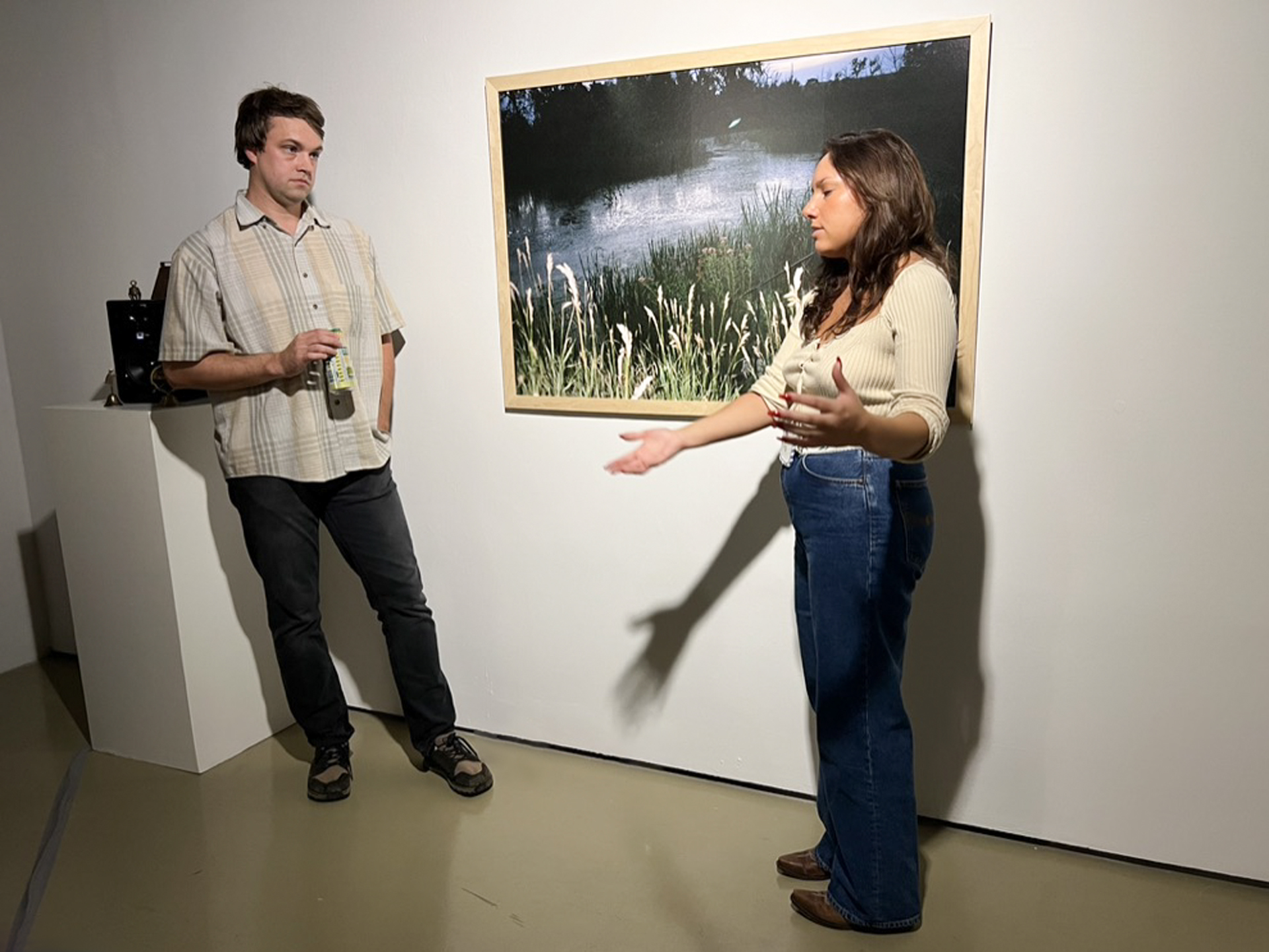
Ann Street Gallery wishes to thank our generous supporters for sharing their time and talents during our summer exhibition:
Exhibition support: Travis Schaben
Reception Documentation: Adam DuVuyst
Gallery Attendants: Alba Borchert, Erica Hauser, Pam LaLonde, Nancy Layne, Odessa Patmos, Anna Penny, Denean Ritchie, Jackie Skrzynski
Listening to Land is generously supported, in part, by:



Listening to Land
Summer 2023 Workshop SeriesJuly 22 Seed Stories with Sergey Jivetin
July 23 Basswood Cordage with Katie Grove
Aug 19 Feral Hues with Ellie Irons
Aug 27 Listening to Nonhumans with Kite and Robbie Wing
Ann Street Gallery is on the 2023
Upstate Art Weekend (UPAW) Program

Free public programming supporting ASG’s summer exhibition, Listening to Land, will include engagements with several regional artists, beginning with an interactive Seed Stories engagement with artist-miniaturist Sergey Jivetin on July 22 and a hands-on Basswood Cordage Workshop on July 23 with artist and educator Katie Grove during Upstate Art Weekend.
On August 19, Interdisciplinary artist and educator Ellie Irons will lead Feral Hues of the Hudson River Estuary, a hands-on foraging and paint-making workshop focused on the wild, weedy, and feral plants who green the city streets and shoreline of current-day Newburgh.
Oglala Lakota performance artist, visual artist, and composer, Kite, aka Dr. Suzanne Kite, and Robbie Wing, artist and musician from Oklahoma & Citizen of the Cherokee Nation will lead a workshop called Listening to Nonhumans on August 27th.
Kite will also present a Curated Reading List in our Open Reading Room at the exhibition’s opening reception.
On August 19, Interdisciplinary artist and educator Ellie Irons will lead Feral Hues of the Hudson River Estuary, a hands-on foraging and paint-making workshop focused on the wild, weedy, and feral plants who green the city streets and shoreline of current-day Newburgh.
Oglala Lakota performance artist, visual artist, and composer, Kite, aka Dr. Suzanne Kite, and Robbie Wing, artist and musician from Oklahoma & Citizen of the Cherokee Nation will lead a workshop called Listening to Nonhumans on August 27th.
Kite will also present a Curated Reading List in our Open Reading Room at the exhibition’s opening reception.
Listening to Land - Seed Stories
Seed Engraving with Sergey Jivetin
Upstate Art Weekend
Saturday July 22nd
12:00-3:00 pm
There will be a limited number of customized seed engravings created for people who would like to bring sentimental seeds and share a relevant story.
For this free first-come, first-serve program, you must sign up in advance for your 45-minute time slot.
Email Sergey to reserve your spot starting Monday, July 17: sergey@jivetin.com
Hudson Valley-based artist-miniaturist Sergey Jivetin will bring his on-going seed story project to Ann Street Galley. Sergey will hand-engrave seeds with illustrations based on narratives about plants and their deep connection with farmers, seed savers, naturalists, and enthusiast gardeners who nurture and preserve them. If you would like to share your personal story of such a relationship between plants and people, bring a relevant seed and Sergey will illustrate your individual story then engrave his image on your seed!
Several works by Sergey Jivetin are featured in Ann Street Gallery’s summer exhibition, Listening to Land.
Sergey Jivetin makes artwork that blurs the boundaries of fine art, craft, and design. With extensive experience in the various formats of design and manufacturing, including fine and art jewelry, product design, and industrial and medical engineering, Jivetin embodies skillful and thoughtful approaches in both concept and execution of the work in a variety of formats from micro to macro scale. Born in Tashkent, Uzbekistan in 1977. Living and working in the USA since 1992. Received MFA from SUNY New Paltz, NY, and BFA from Parsons School of Design, NY. Taught at SUNY New Paltz and NJCU, RISD, and Kean University.
Honors include: Louis Comfort Tiffany Foundation biennial award (2011), New York Foundation for the Arts Individual Artist’s Fellowships (2009 and 2005); Reed Foundation Individual Artist’s Grant (2007), Herbert Hoffman Preis, Germany (2005); Second Prize and Grand Prize at Itami International Jewelry Biennial, (2009 and 2005)
Work is in the permanent collection of the Smithsonian American Art Museum, Metropolitan Museum of Art, Museum of Art and Design, Mint Museum, Dallas Museum of Art, and Itami Craft Museum, Japan.
To learn more about Sergey’s work visit
https://www.sergeyjivetin.com/
https://www.seedengraving.com/




















Listening to Land - Basswood Cordage
with Katie Grove
Upstate Art Weekend
Sunday July 23rd
12:00 - 3:00 pm
Participants are invited to join for just a few minutes or the entire workshop period.
Free and open to the public.
No Reservation needed.
Cordage, made by twisting two strands of plant fiber together by hand, is one of the oldest technologies in human culture. In this drop-in workshop with artist and basketry teacher Kati Grove participants will learn to make cordage with locally harvested basswood tree bark fiber in an immersive, thought provoking, and welcoming setting. During the workshop the instructor will share stories of how she harvested and processed the fiber as well as the history of this material in North America, Europe, and Asia.
Several works by Katie Grove are featured in Ann Street Gallery’s summer exhibition, Listening to Land.
Katie Grove is an artist and educator whose passion is to inspire both viewers of her art and students in her basketry classes to build a relationship with the plants growing around them. She teaches from her studio in the beautiful Rondout Valley of New York State and enjoys a robust studio practice that merges traditional basketry techniques with sculpture. Katie holds a BF in Printmaking from SUNY New Paltz and an MFA in Interdisciplinary Art from the NOMAD program at University of
Hartford.
To learn more about Katie’s process as an artist and basket maker visit
www.katiegrovestudios.com
@katiegrovebasketry






















Listening to Land - Feral Hues of the Hudson River Estuary
A Workshop on Foraging & Making Paint with Wild Plants in Newburgh
with Ellie Irons
Saturday August 19
2:00 - 4:00 pm
Free and open to the public; Limited to 12 participants
Reservation required
Email amcnulty@safe-harbors.org
Location:
Ann Street Gallery, 104 Ann Street, Newburgh NY 12550 & Newburgh Riverfront
Confirmed participants will receive an email with schedule and meeting point
Interdisciplinary artist and educator Ellie Irons will lead a hands-on foraging and paint-making workshop focused on the wild, weedy, and feral plants who green the city streets and shoreline of
Ellie’s Watershed Topography drawings are featured in Ann Street Gallery’s summer exhibition, Listening to Land.
Ellie Irons is an artist and educator living and working on Mohican land in current-day Troy, New York, USA. From foraged watercolor paintings to un-lawning experiments, her work combines socially engaged art, ecology fieldwork, and embodied learning. She is a co-founder of the Next Epoch Seed Library and the Environmental Performance Agency, collaborations investigating relationships between humans and spontaneous urban plants (aka weeds). Her solo and collaborative work has been part of recent exhibitions on contemporary environmental art, including The Department of Human and Natural Services at NURTUREArt, Ecological Consciousness: Artist as Instigator at Wave Hill, and Unsettled Nature at the Smithsonian Museum of Natural History. Her work has been covered by publications ranging from Art in America to the Proceedings of the National Academy of Sciences. Irons received a BA from Scripps College in Los Angeles and an MFA from Hunter College in New York. In December 2021, she completed a PhD in arts practice at Rensselaer Polytechnic Institute, focused on socially engaged environmental art. She is currently a community science educator and lab manager at the Sanctuary for Independent Media’s NATURE Lab.
https://ellieirons.com/
@elslaurel
Ellie's recent book Feral Hues: A Guide to Painting with Weeds will be available for purchase. (Sliding scale $15-25)





















Listening to Land - Listening to Nonhumans (Heard and Unheard)
A Workshop with Kite & Robbie Wing
SUNDAY AUG 27
2-4pm
Followed by a closing reception with gallery talks 4-5:30
Free and open to the public; No reservation required
Location:
Ann Street Gallery, 104 Ann Street, Newburgh NY 12550
Note: this workshop includes 30+ mins of walking with a small group outside the gallery.
In this workshop, Kite and Robbie Wing will guide participants in listening to the knowable and the unknowable: listening with and through nonhumans in the physical world and nonhumans in the unseen world. This training proposes that the frameworks for ethical decision-making must be learned in relationship with nonhuman beings. Half of this training will involve outdoor soundwalks, the other half will involve dreaming and futuring. Listening to nonhumans, on earth and in the spirit world leads to knowing how nonhumans create new knowledge.
This workshop was developed thinking alongside the work of the Initiative for Indigenous Futures, Leroy Little bear, Leanne Simpson, Dylan Robinson, Raven Chacon, Zoe Todd, AM Kanngeiser, Florian Malzacher, Jonas Staal; and Fondazione Sandretto.
Kite’s photograph and Curated Reading List 003, along with Kite and Robbie Wing’s 8-channel sound installation are featured in Ann Street Gallery’s summer exhibition, Listening to Land.
Kite (Dr. Suzanne Kite) is an Oglála Lakȟóta performance artist, visual artist, and composer raised in Southern California, with a BFA from CalArts in music composition,and an MFA from Bard College’s Milton Avery Graduate School, and a Ph.D. in Fine Arts from Concordia University, Montreal. Kite’s scholarship and practice investigate contemporary Lakȟóta ontologies through research-creation, computational media, and performance, often working in collaboration with family and community members. Recently, Kite has been developing body interfaces for machine learning driven performance and sculptures generated by dreams, and experimental sound and video work. Kite has published in The Journal of Design and Science (MIT Press), with the award winning article, “Making Kin with Machines,” co-authored with Jason Lewis, Noelani Arista, and Archer Pechawis. Kite is currently a 2023 Creative Capital Award Winner, 2023 USA Fellow, and a 2022-2023 Creative Time Open Call artist with Alisha B. Wormsley. Kite is currently Artist-in-Residence and Visiting Scholar at Bard College and a Research Associate and Residency Coordinator for the Abundant Intelligences (Indigenous AI) project.
http://kitekitekitekite.com/
@kitekitekitekitekite
Robbie Wing (Cherokee) is an artist, musician, and composer. His artistic practice focuses on immersive and spatialized sound installations, ecological sound art, and composition for acoustic instruments, electronics, and field recordings. Robbie holds an undergraduate degree in Environmental Sustainability and a master's degree in Urban Design from the University of Oklahoma where he developed sound art installations based on his research on environmental psychology and acoustic landscapes. Robbie has presented his work and performed at various venues, including the Portland Institute for Contemporary Art, Tulsa Artist Fellowship Flagship Gallery, Philbrook Museum, University of Kent in Chatham, UK, Institute for Advanced Studies in Kószeg, Hungary, Roy and Edna Disney CalArts Theater and the Center for Arts, Research & Alliances.
RobbieWing.com
@wingrobbie













Curated Reading List
Kite’s Curated Reading List 003 accompanies the 8-channel sound installation by Kite and Robbie Wing in our Open Reading Room. Kite’s reading list includes an introduction, title list, and annotations for each title. The installation in the Reading Room includes a selection of books on loan for the exhibition from Kite and Robbhie Wing’s personal library.
View or download the list here.

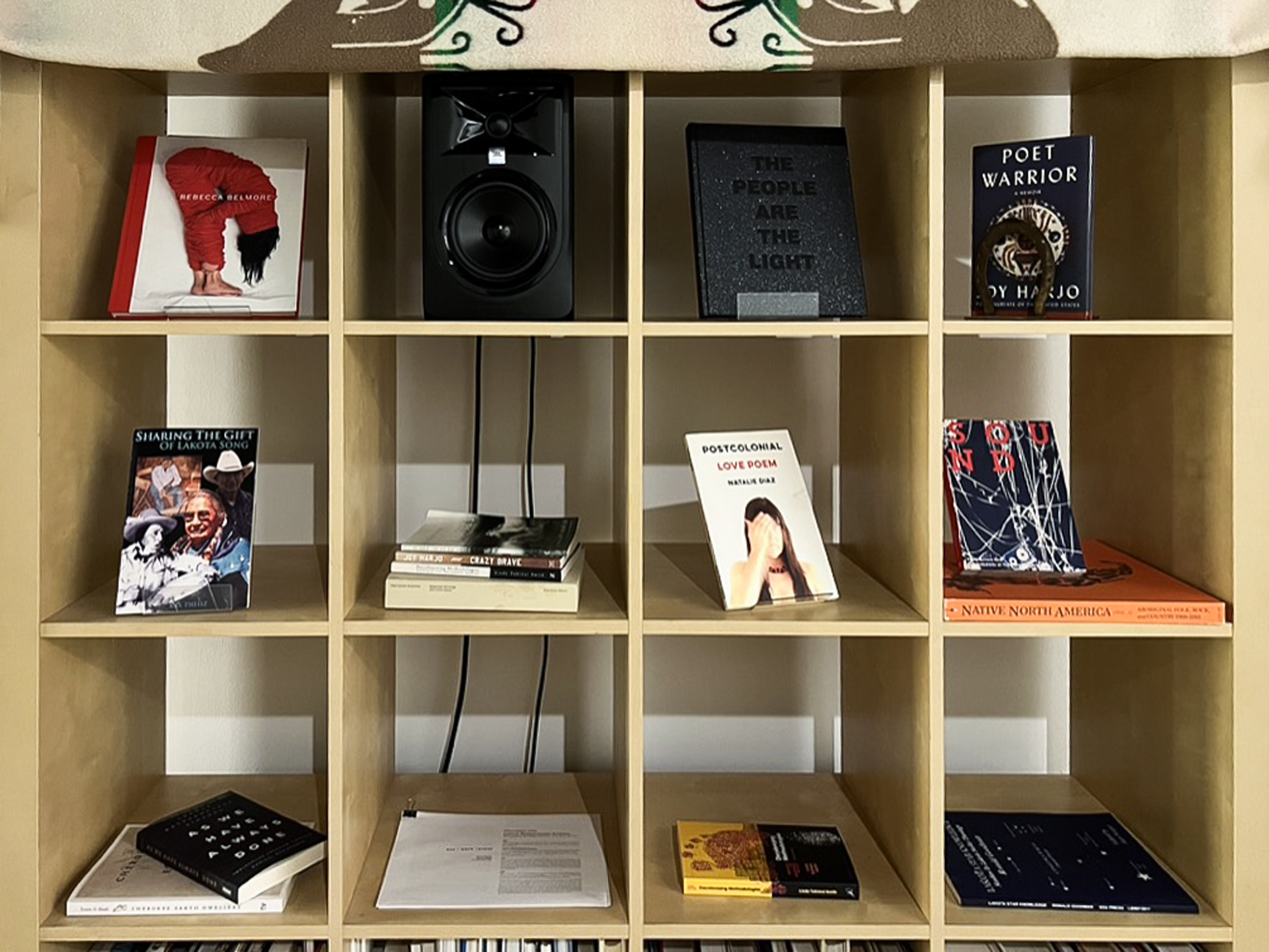

Return to Exhibition Overview
Ann Street Gallery wishes to thank our generous supporters for sharing their time and talents during our summer exhibition:
Exhibition support: Travis Schaben
Reception Documentation: Adam DuVuyst
Gallery Attendants: Alba Borchert, Erica Hauser, Pam LaLonde, Nancy Layne, Odessa Patmos, Anna Penny, Denean Ritchie, Jackie Skrzynski
Listening to Land is generously supported, in part, by:


